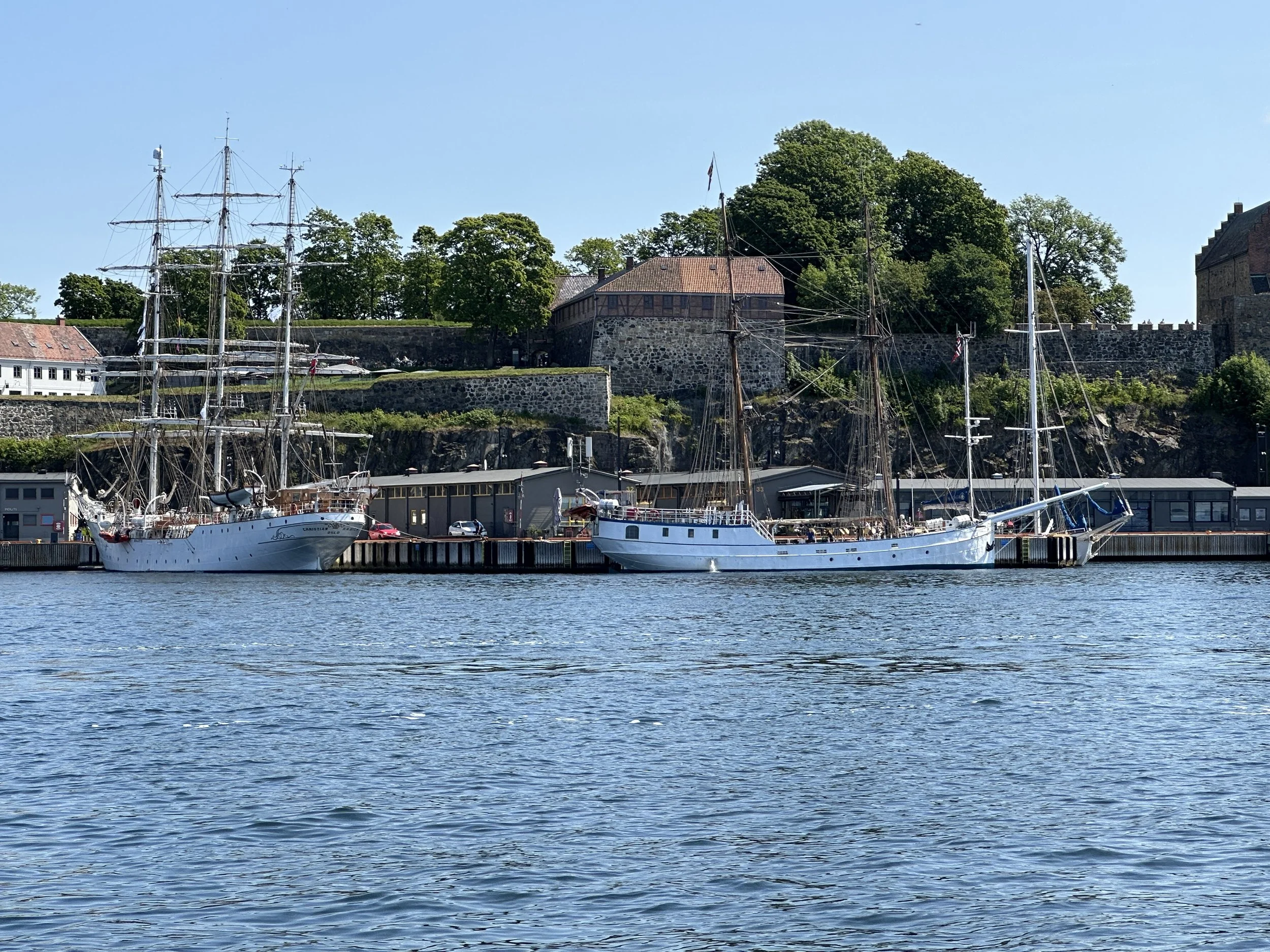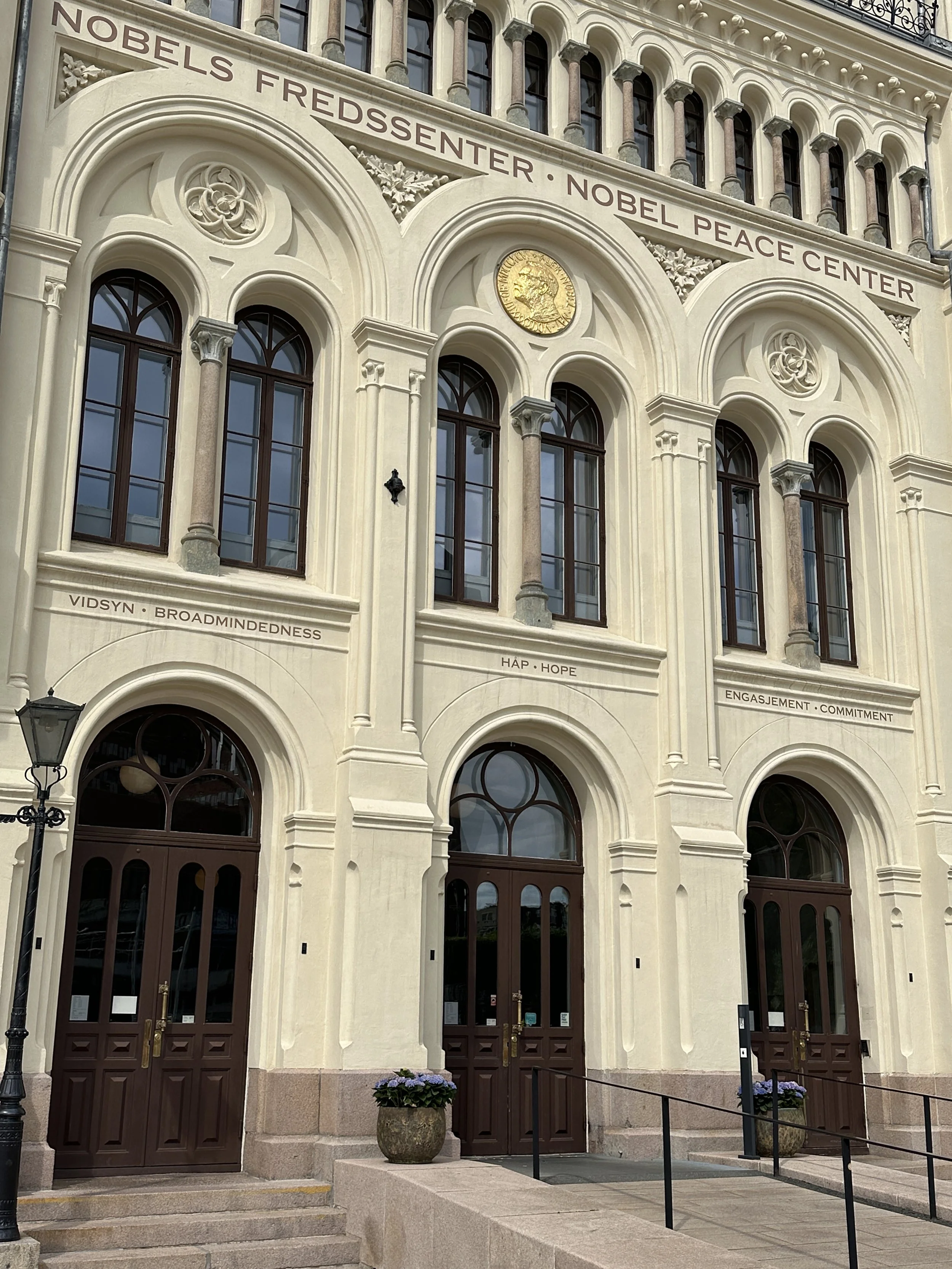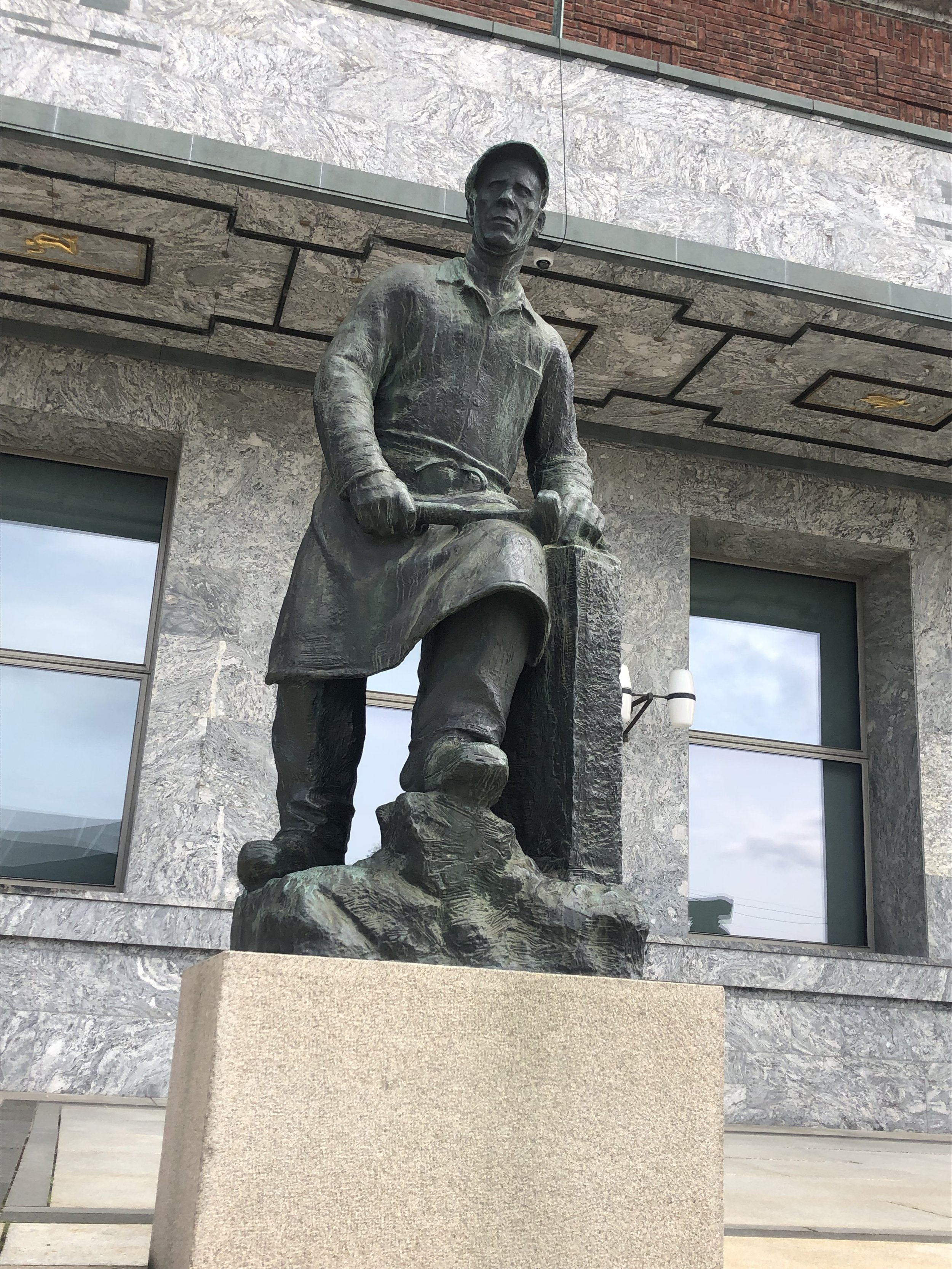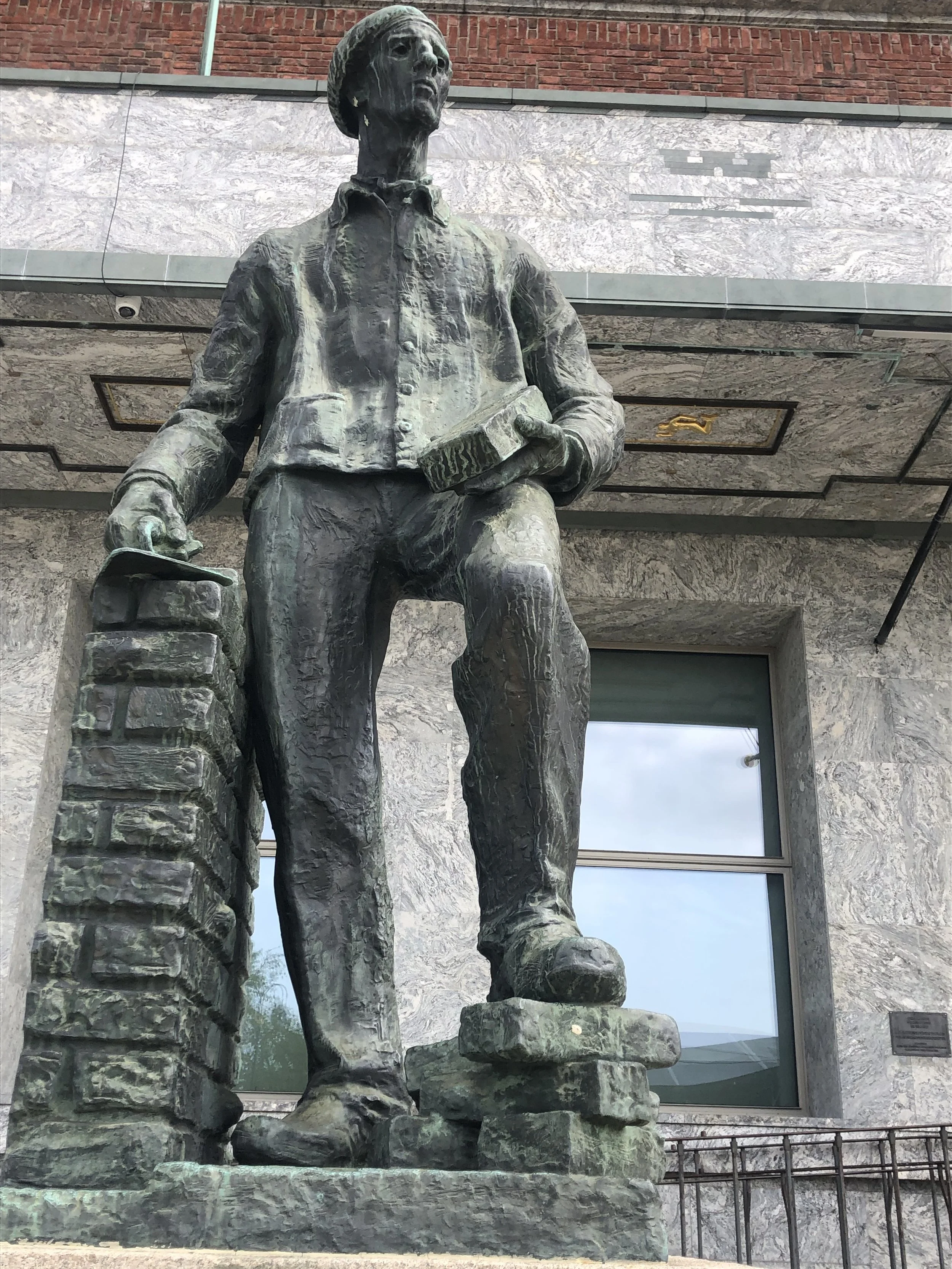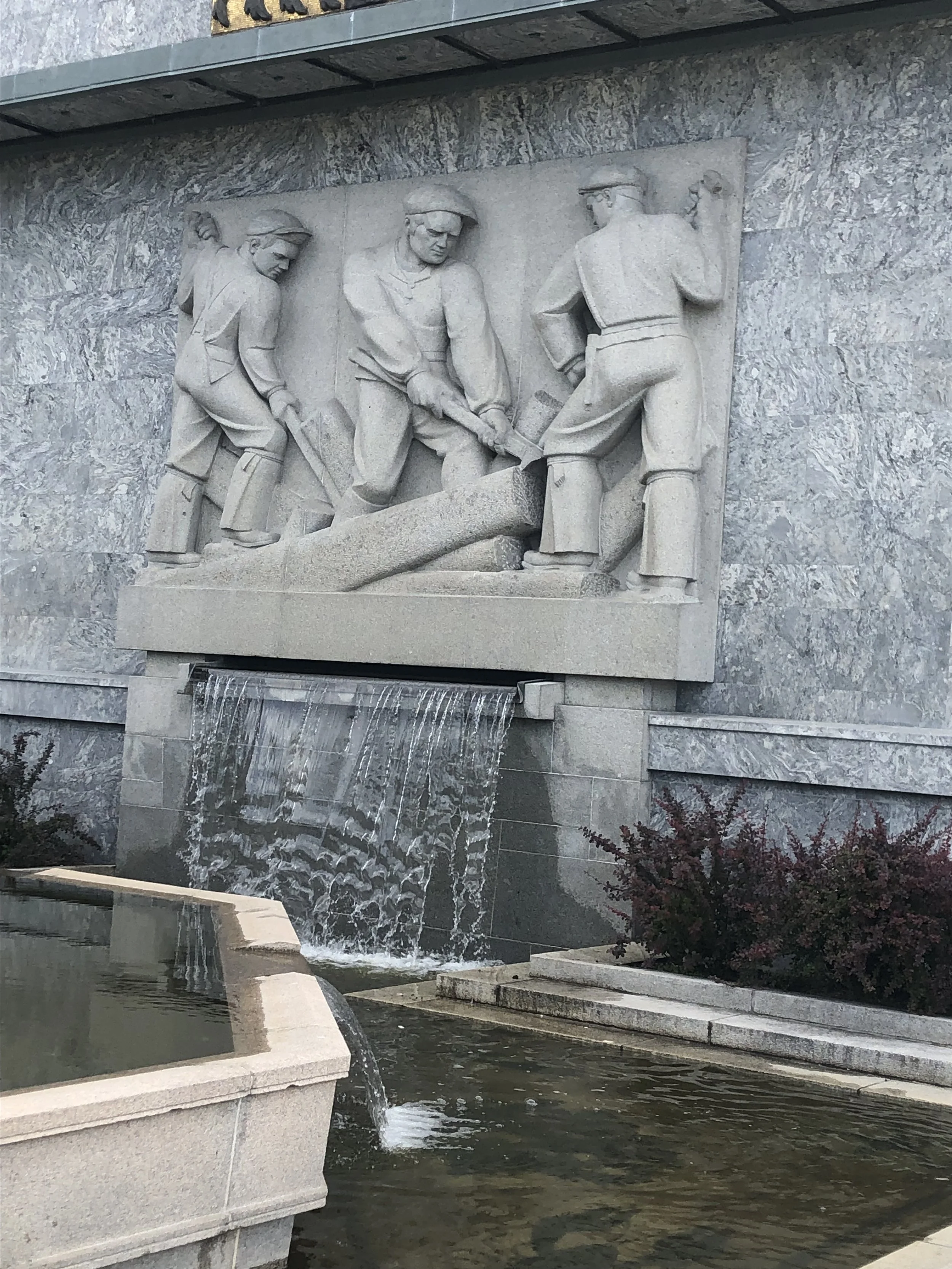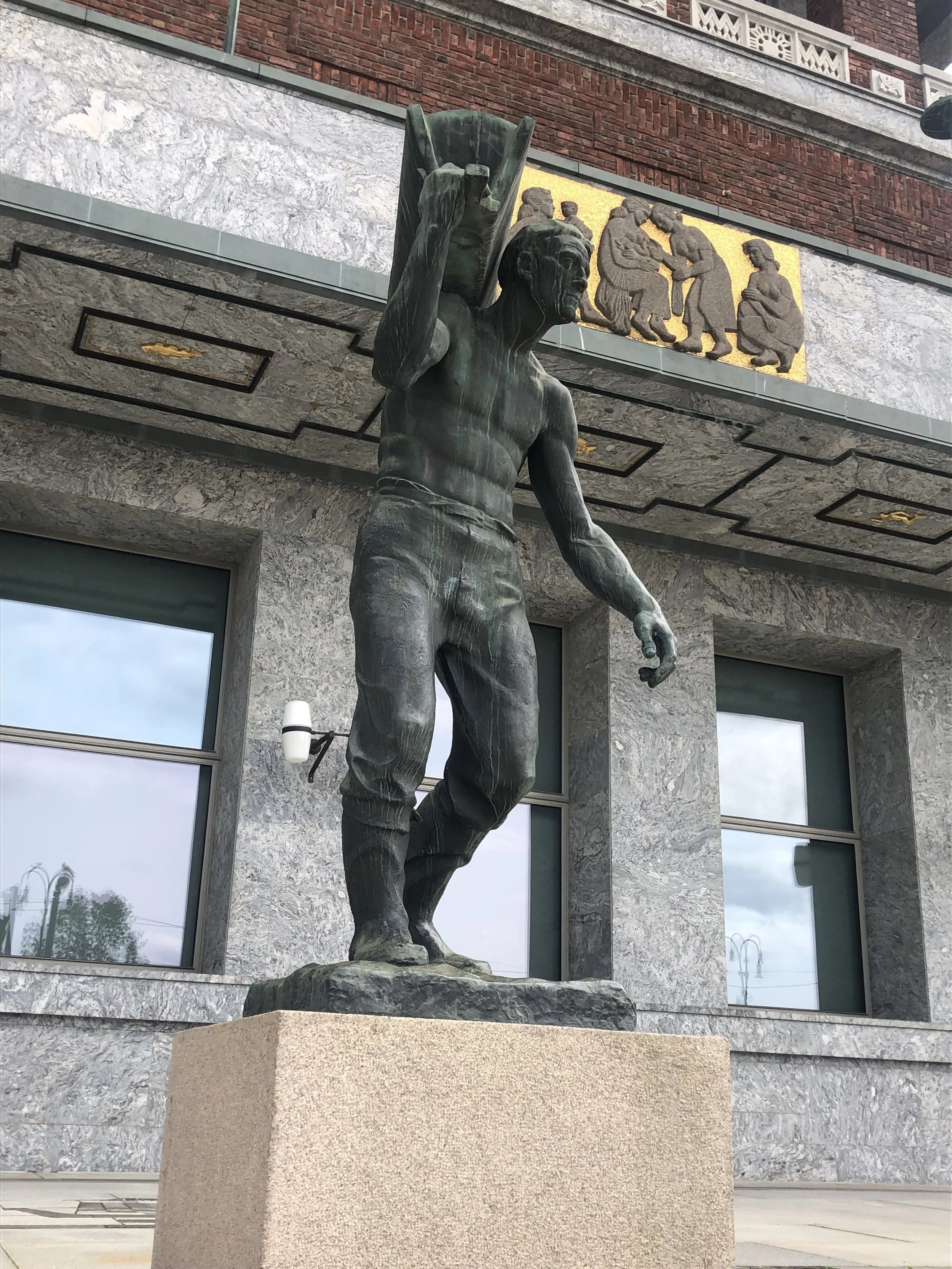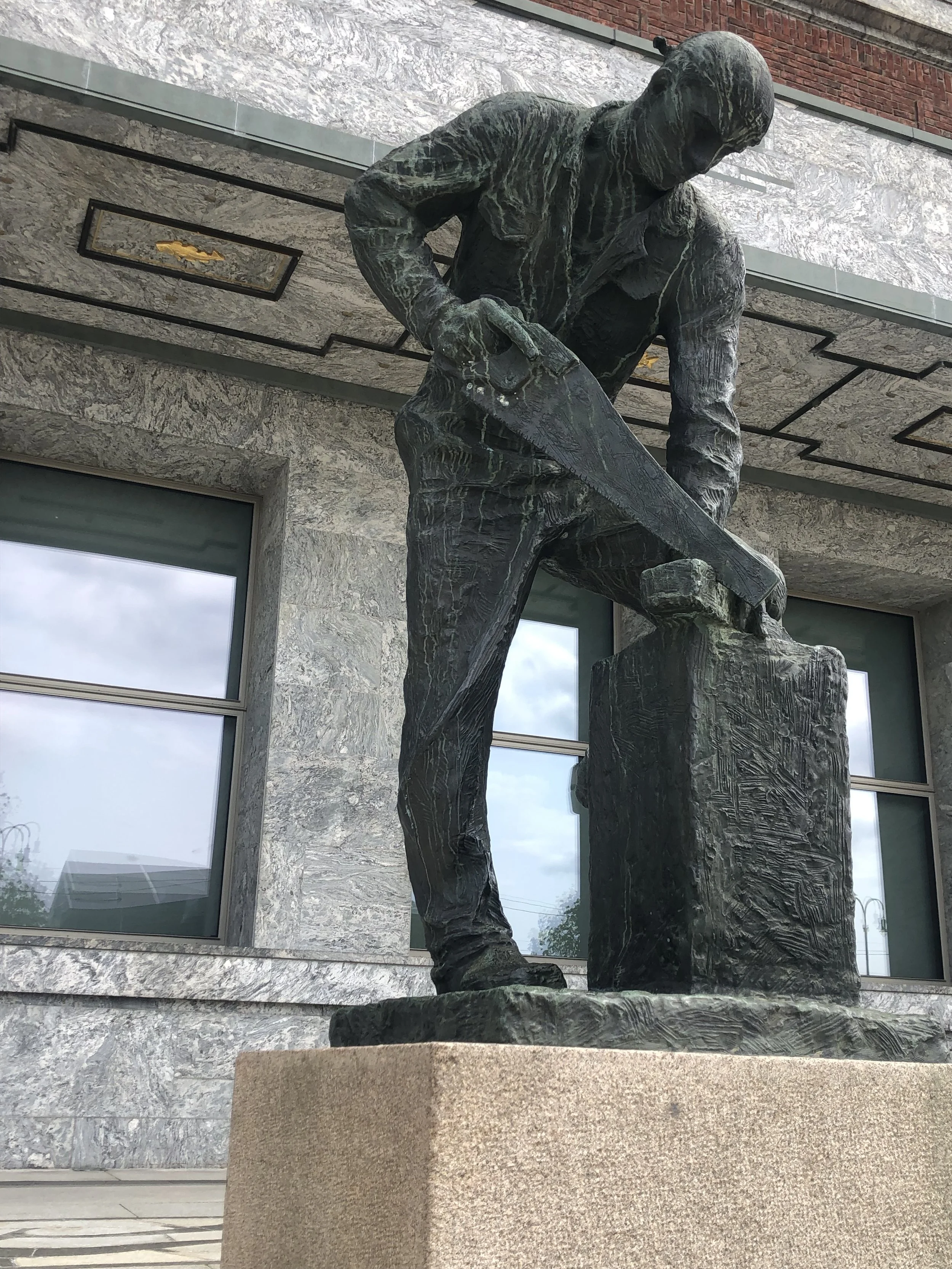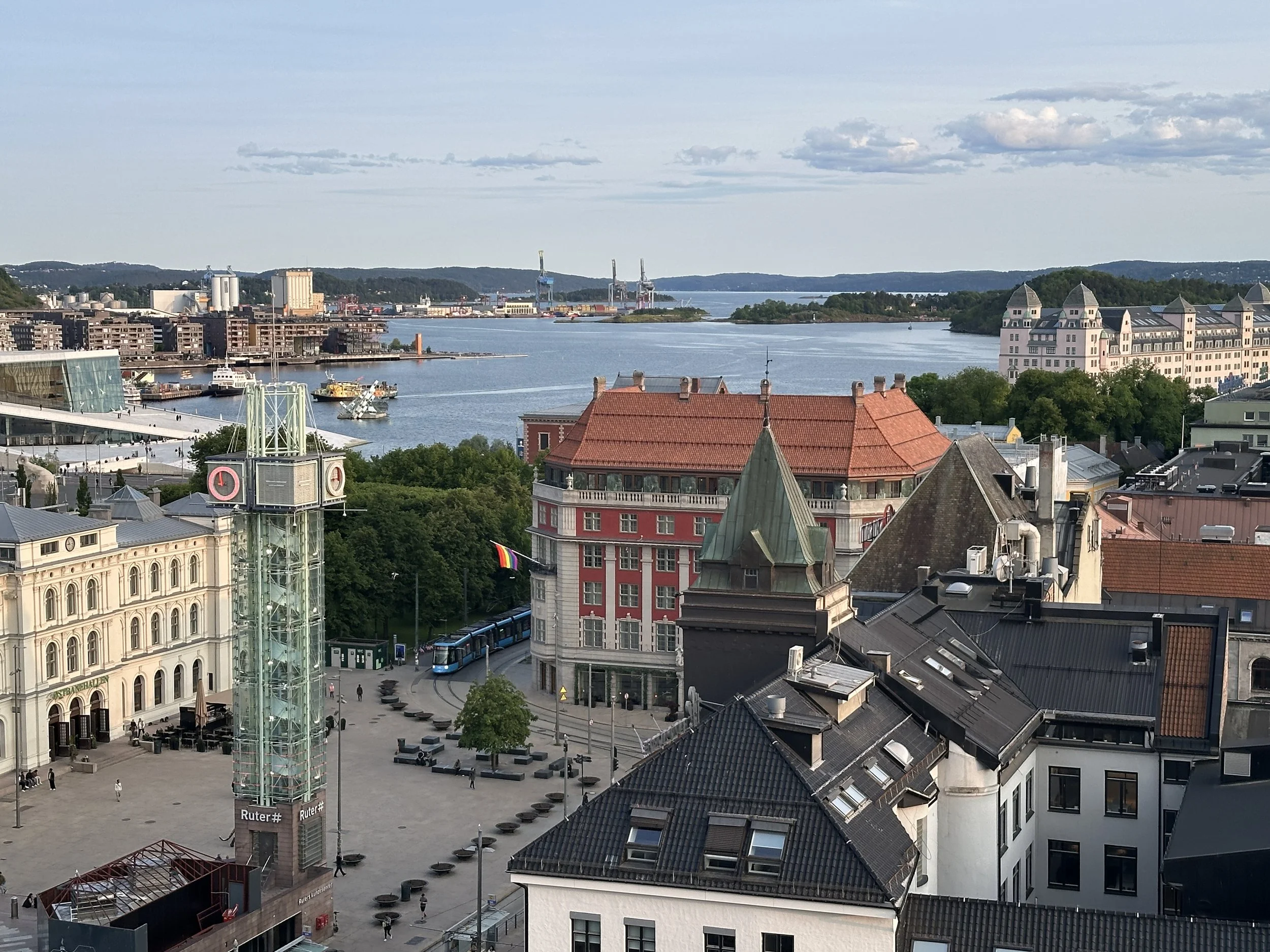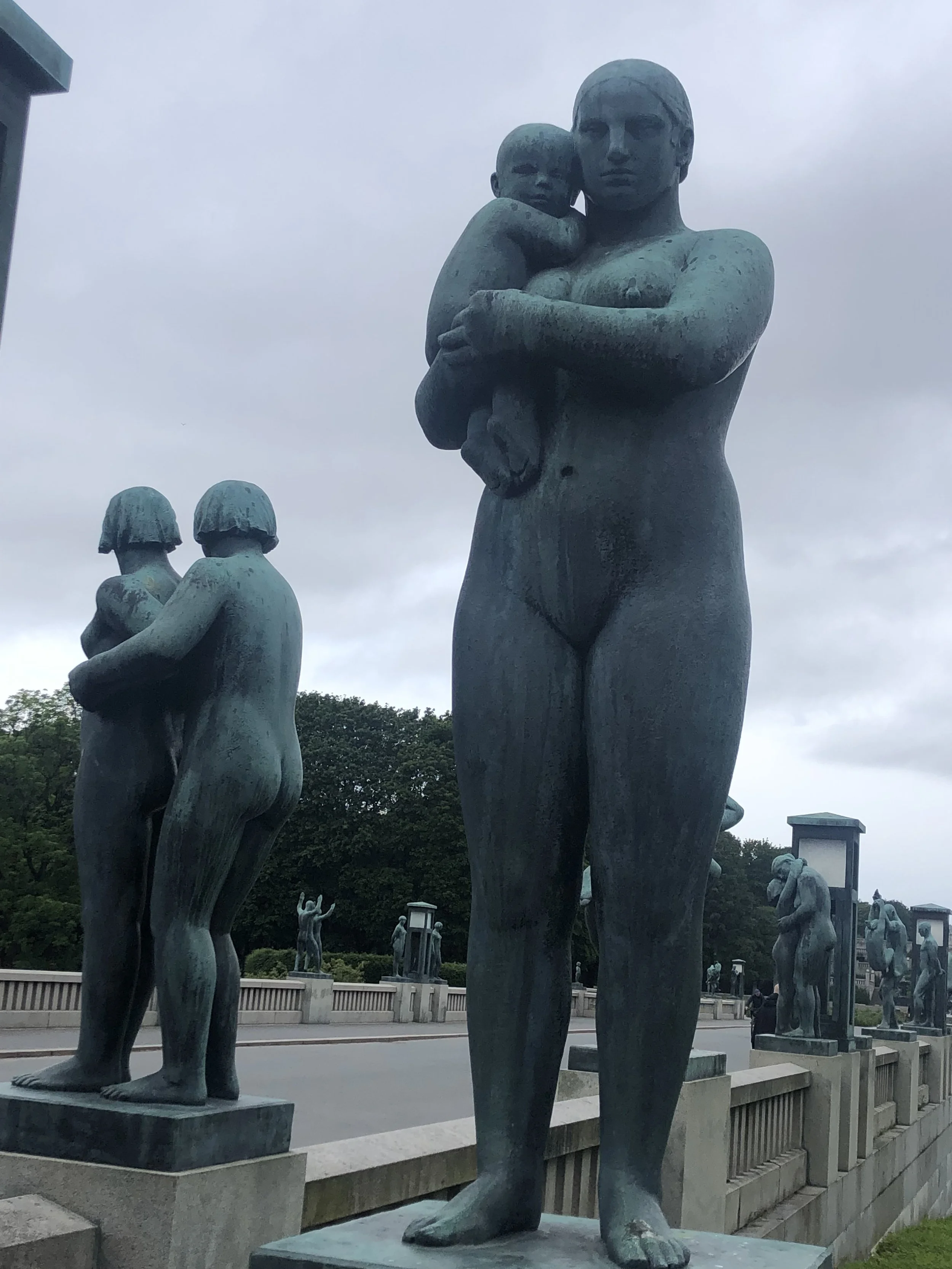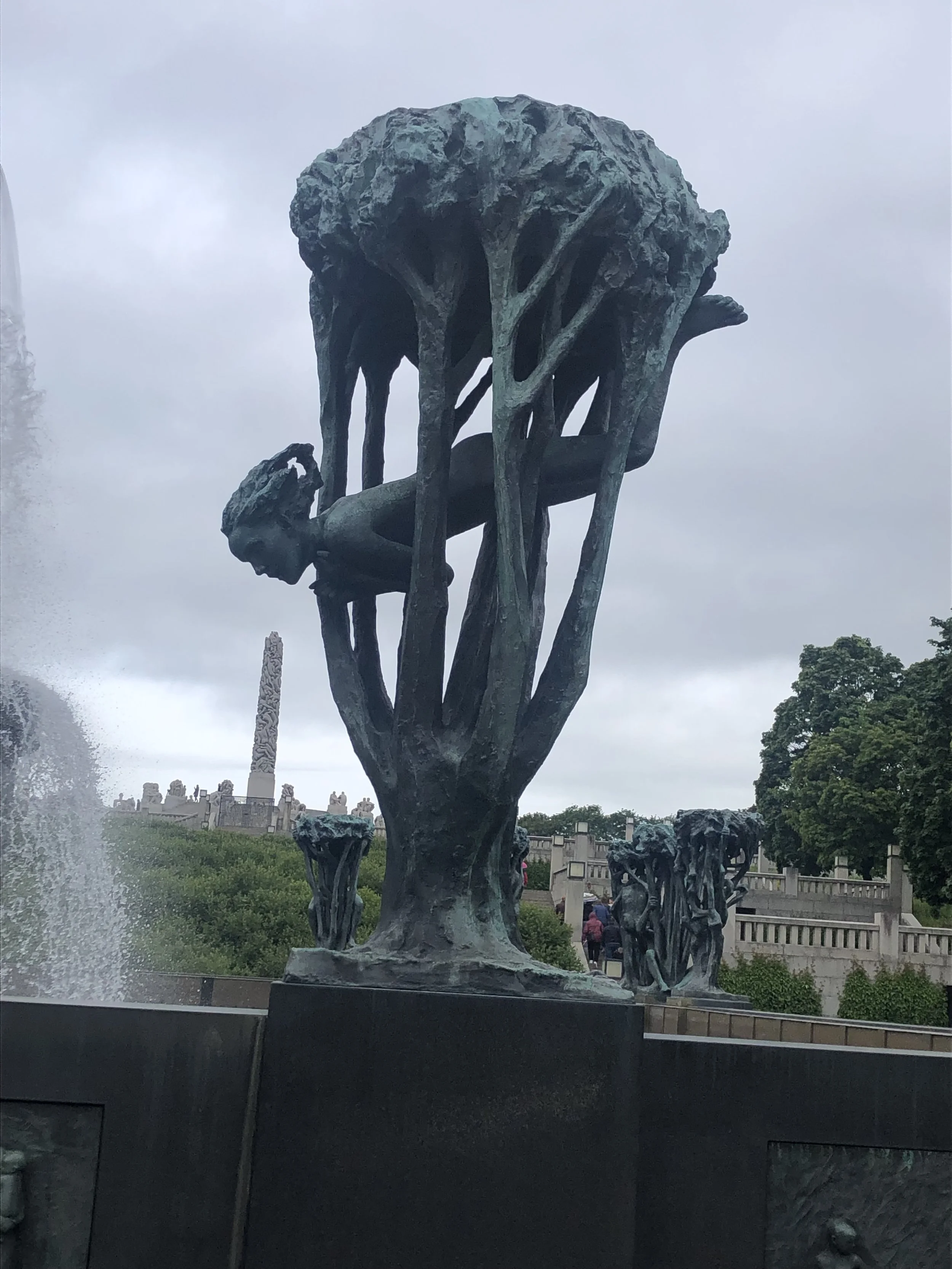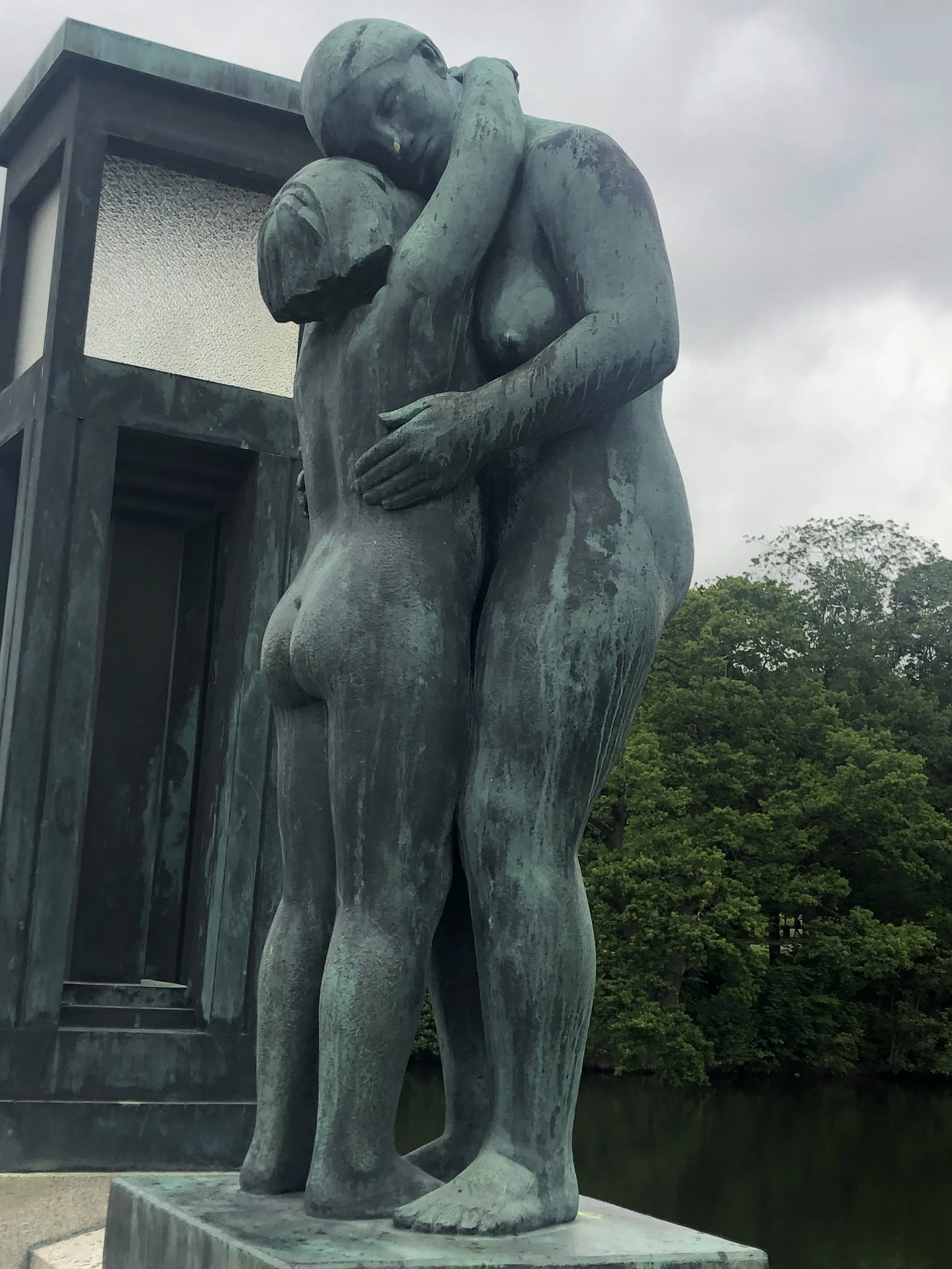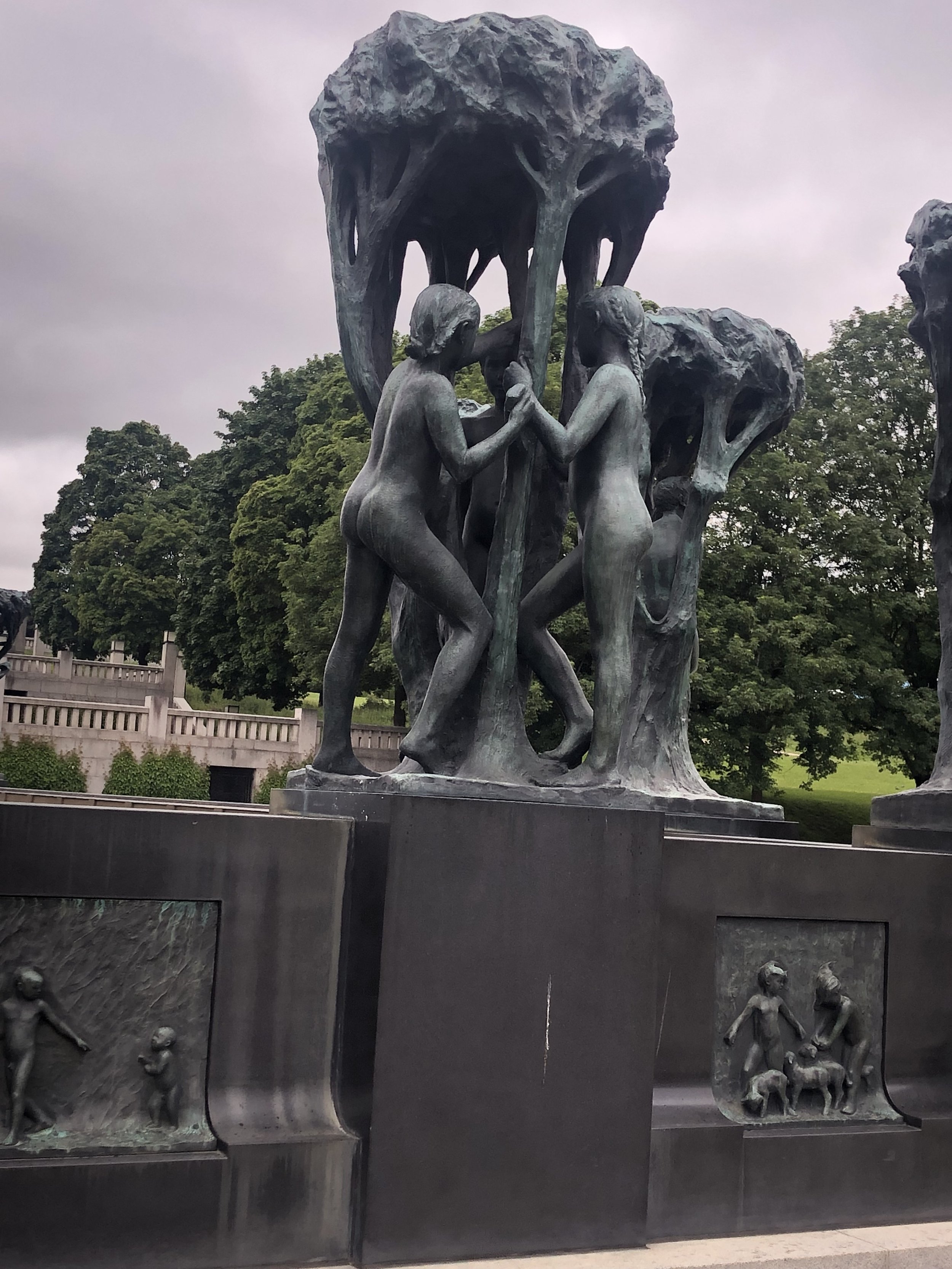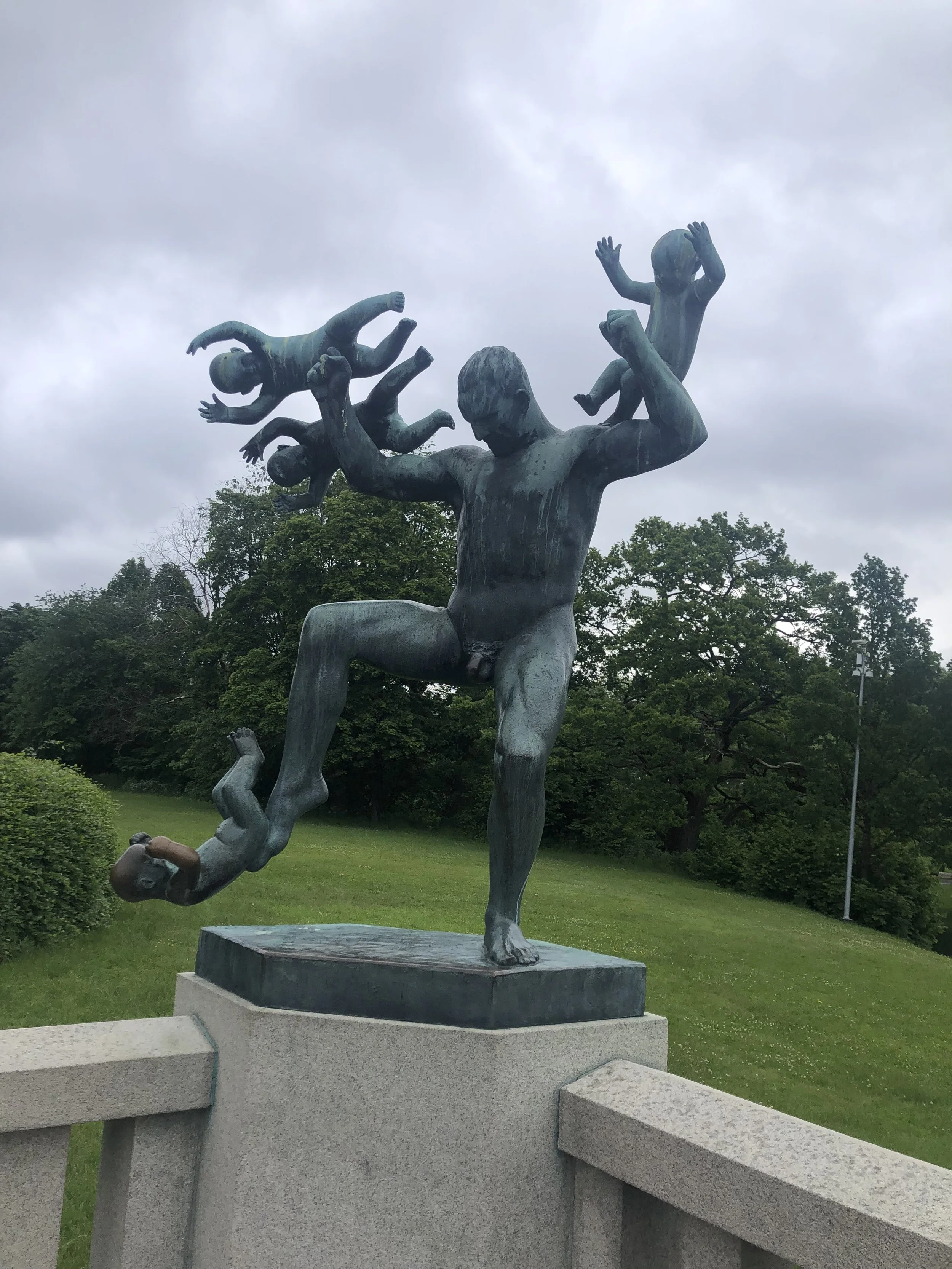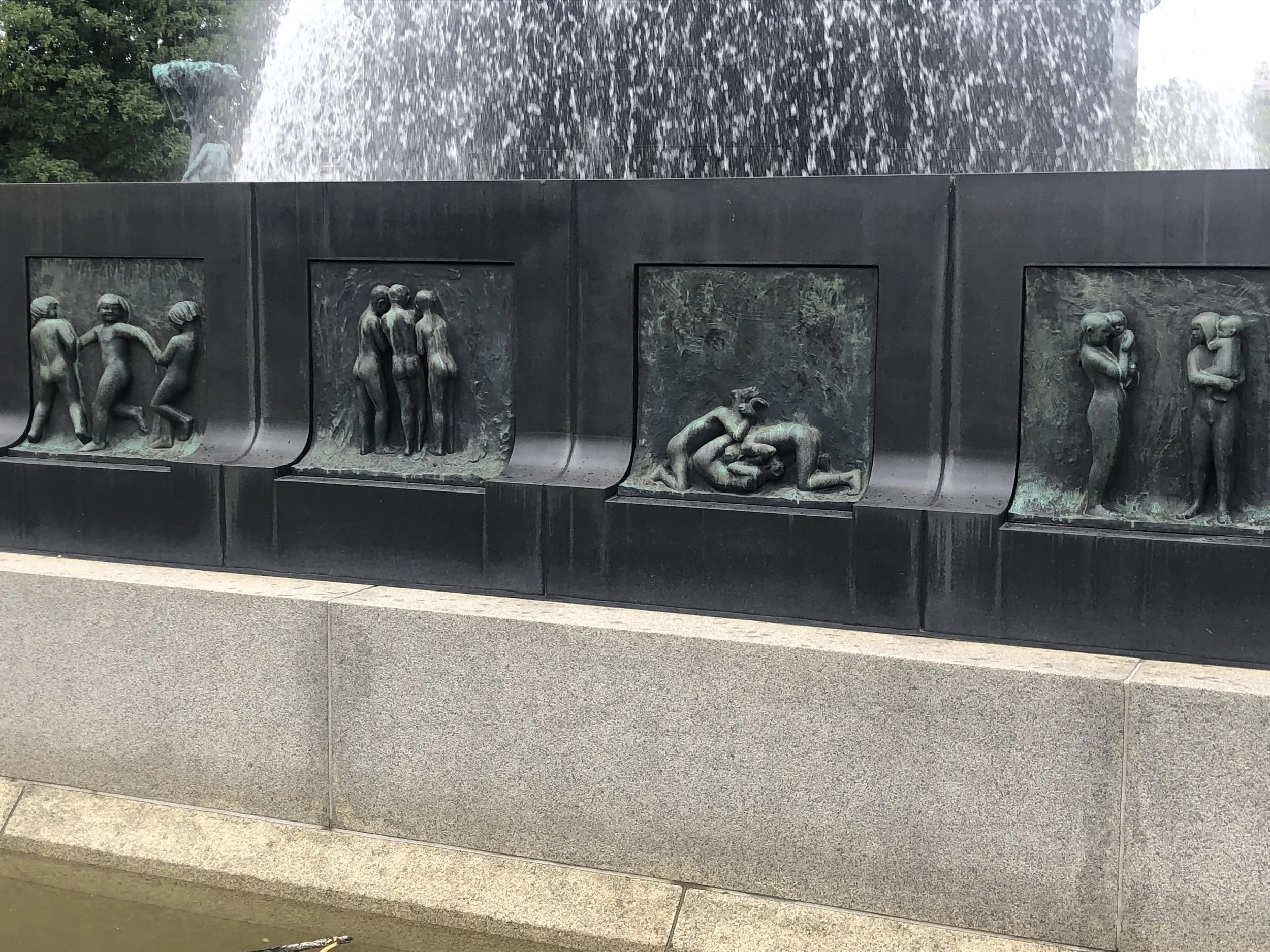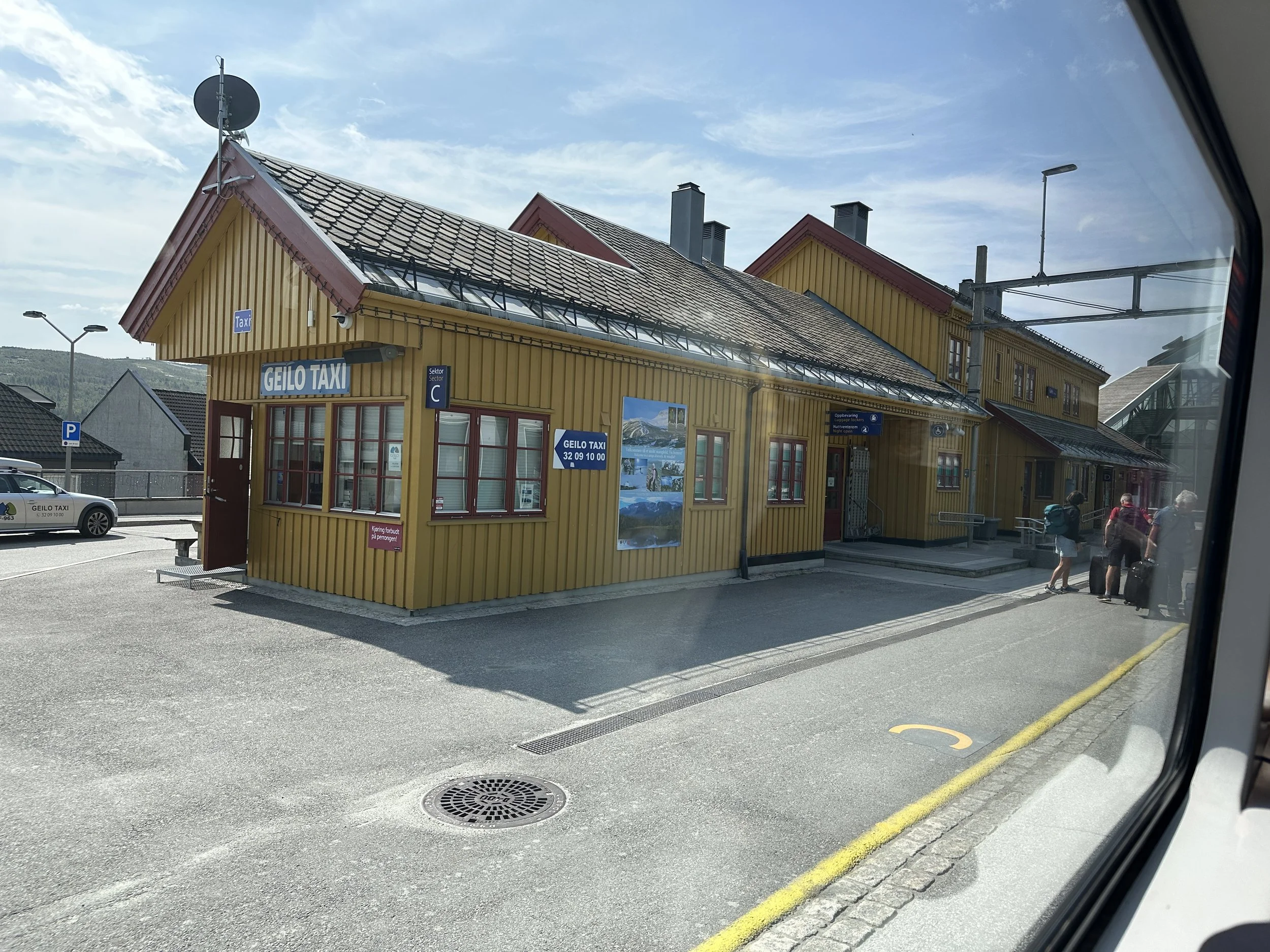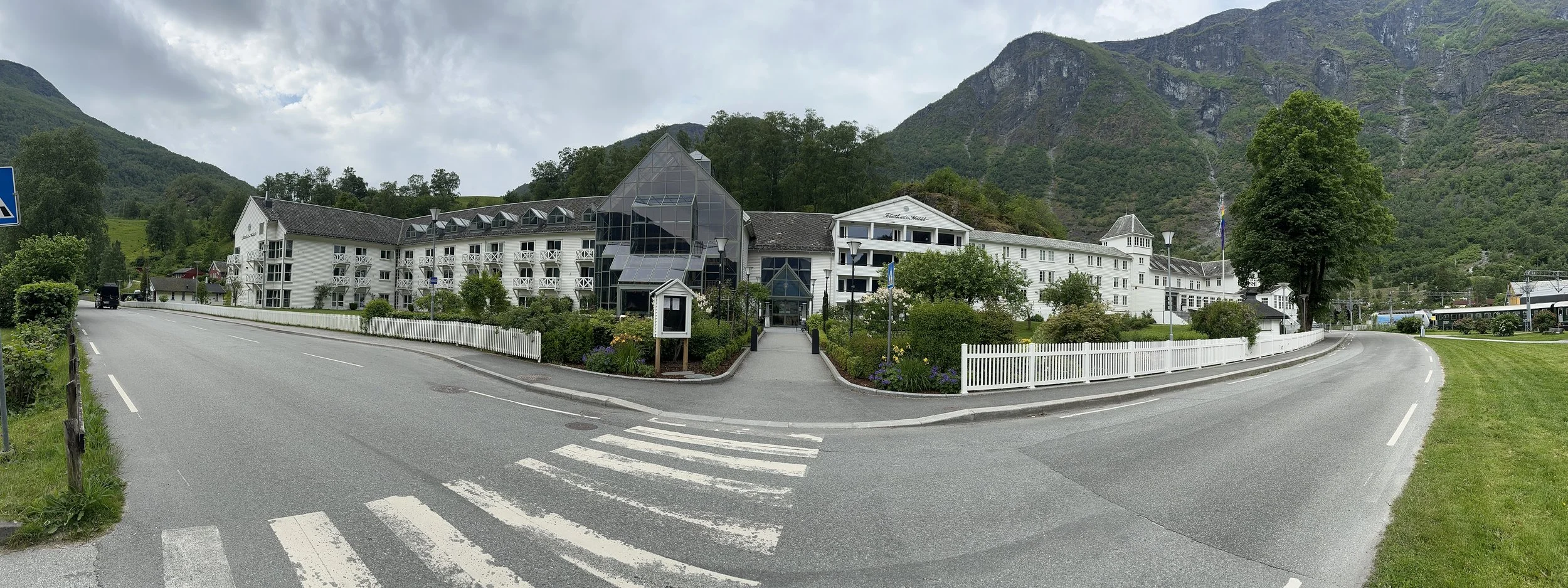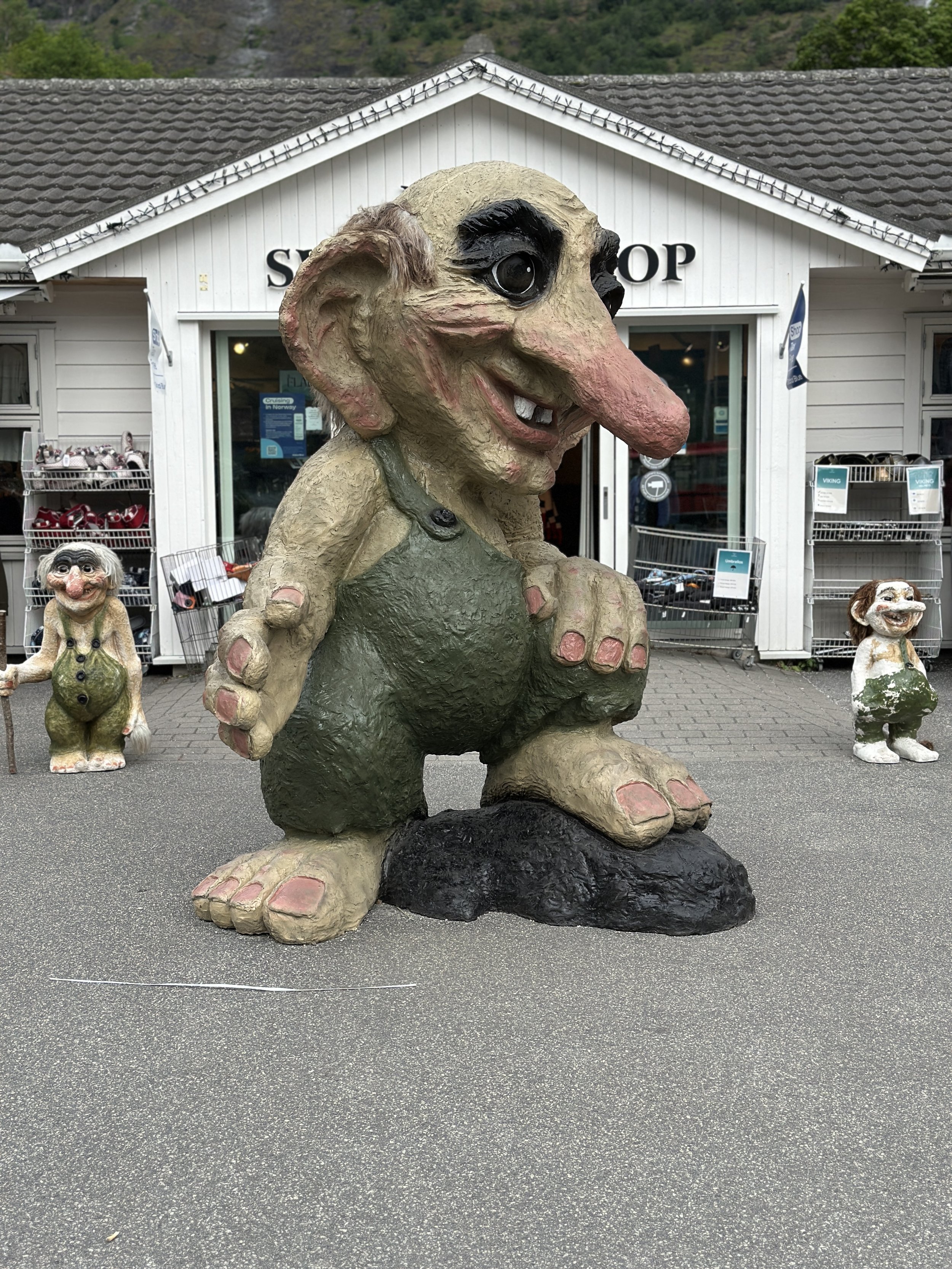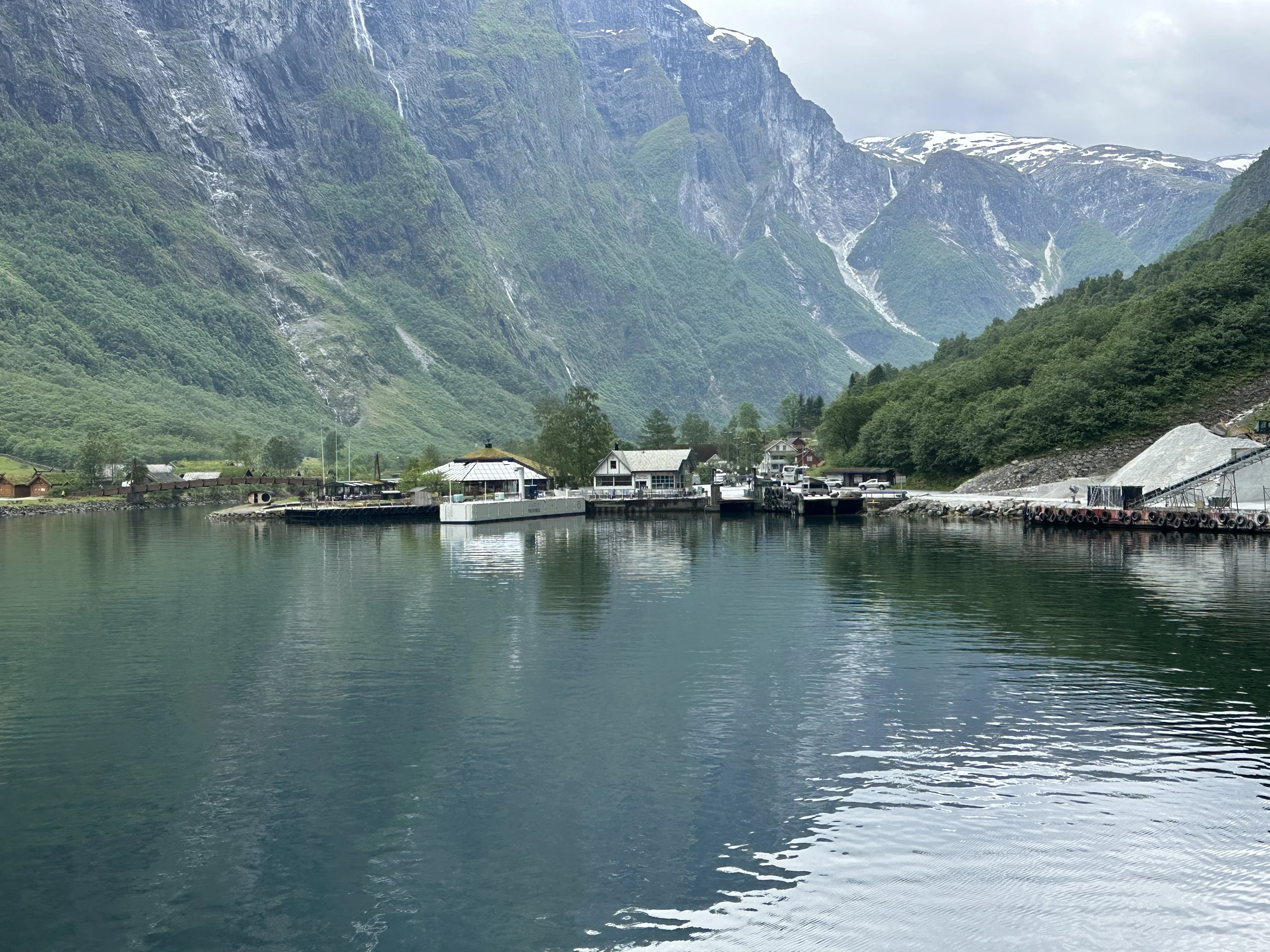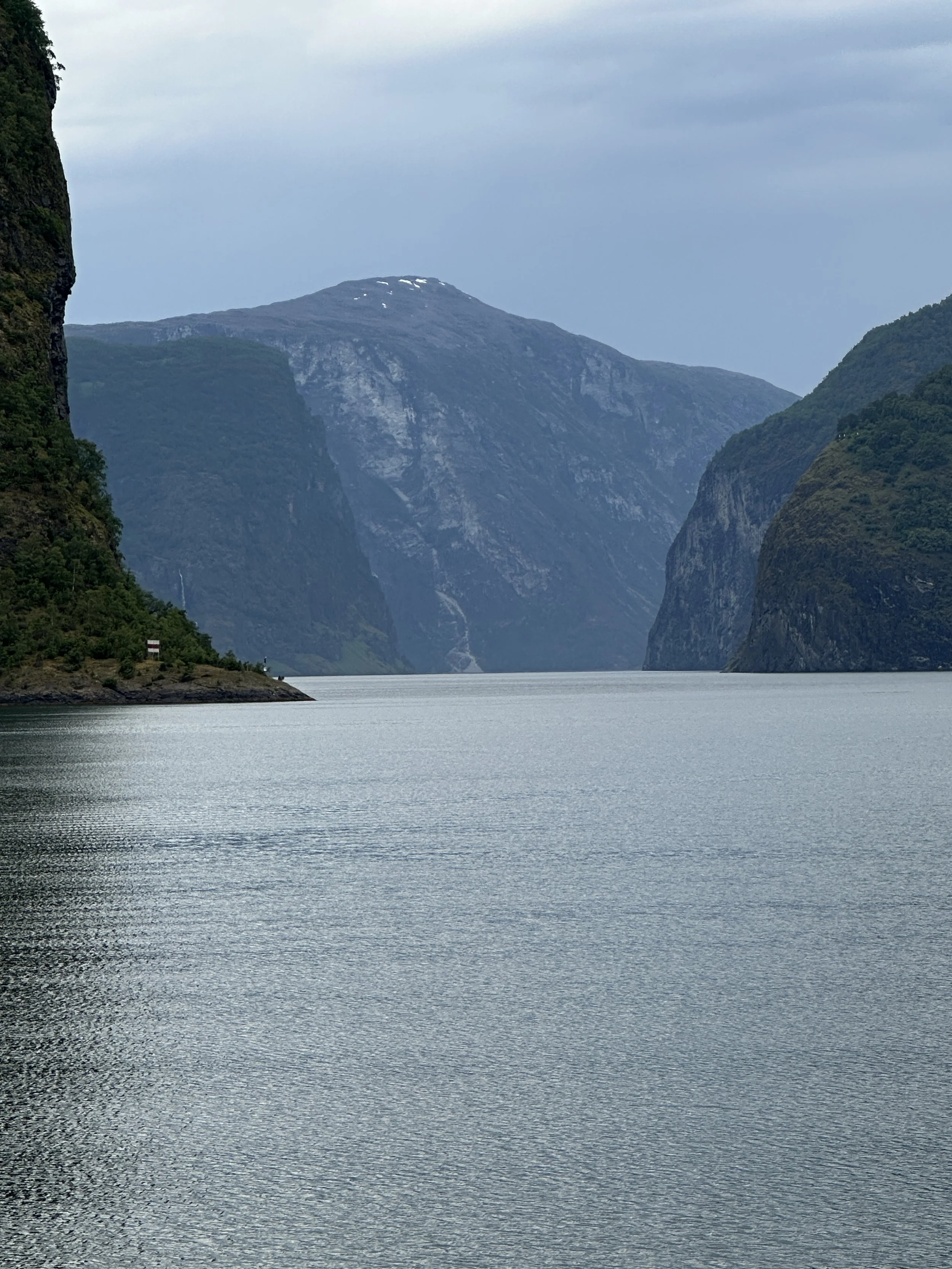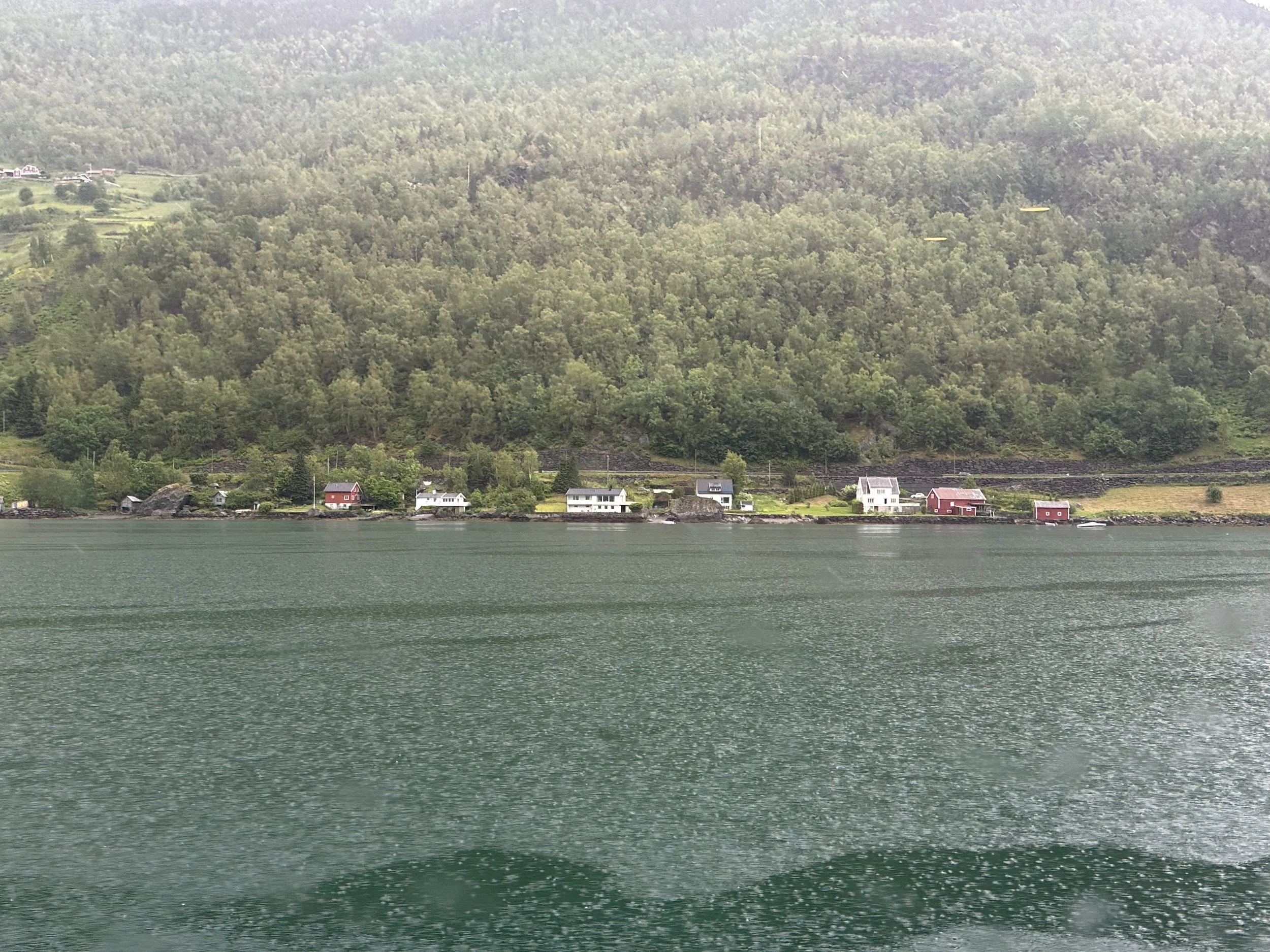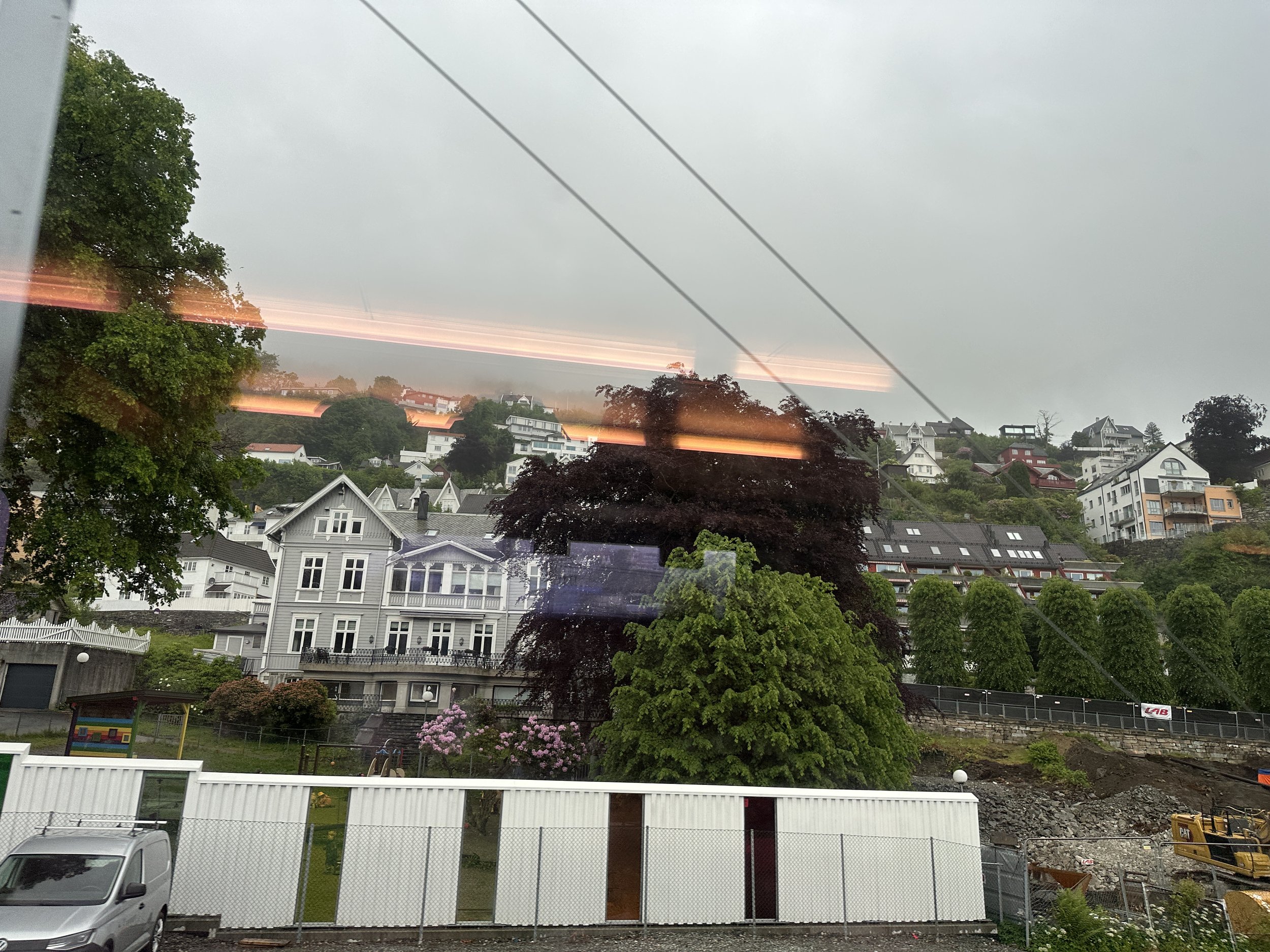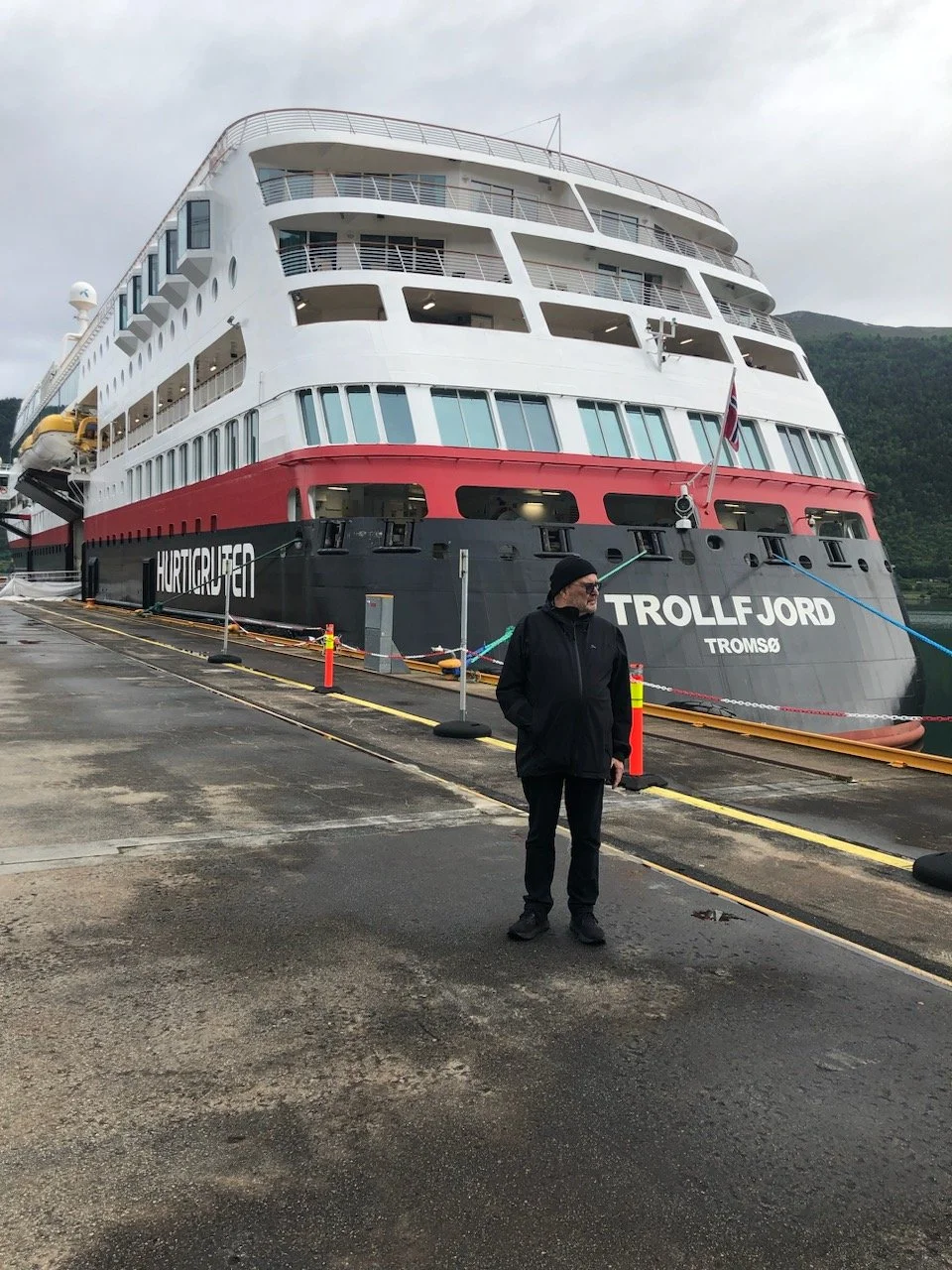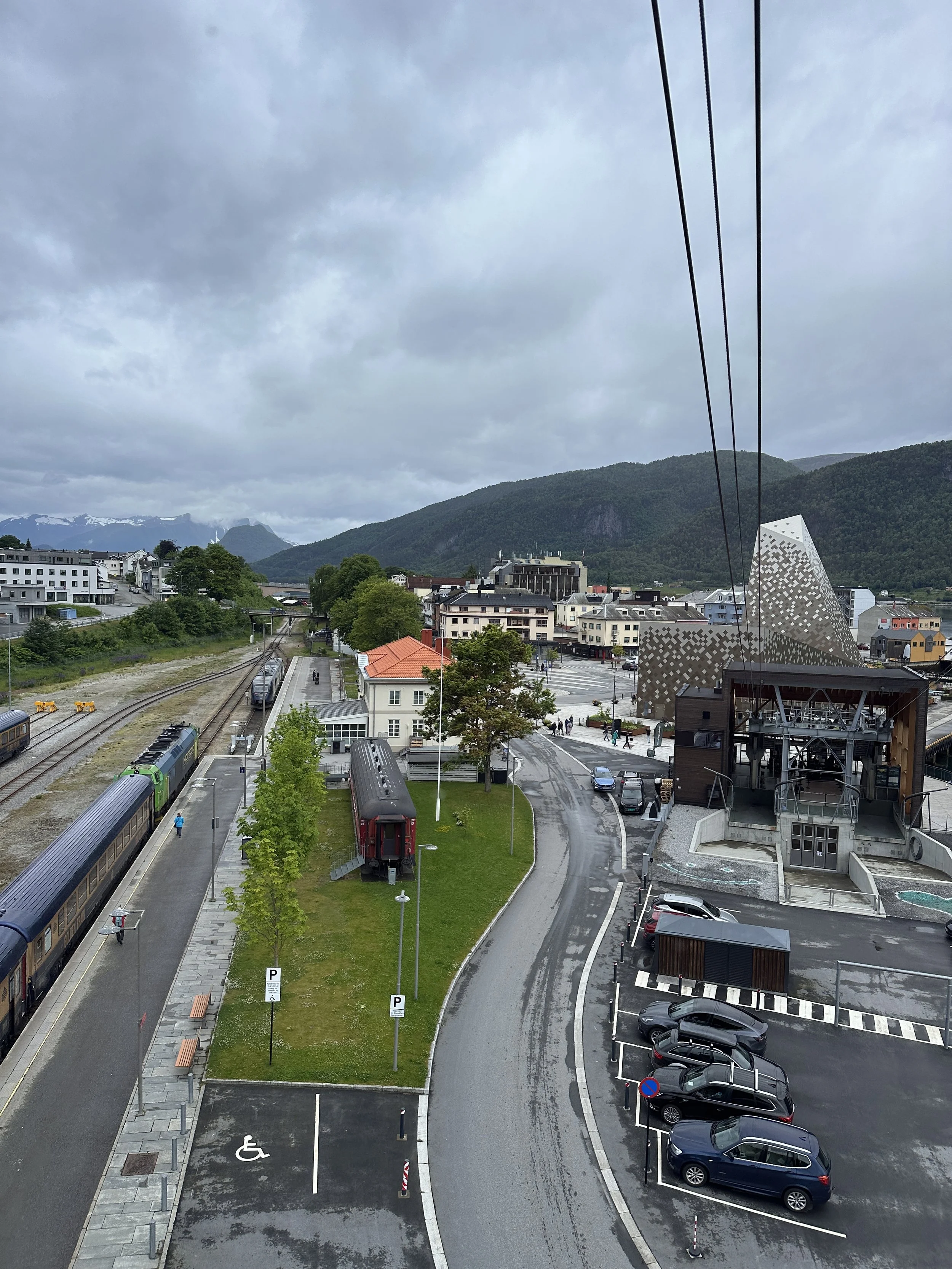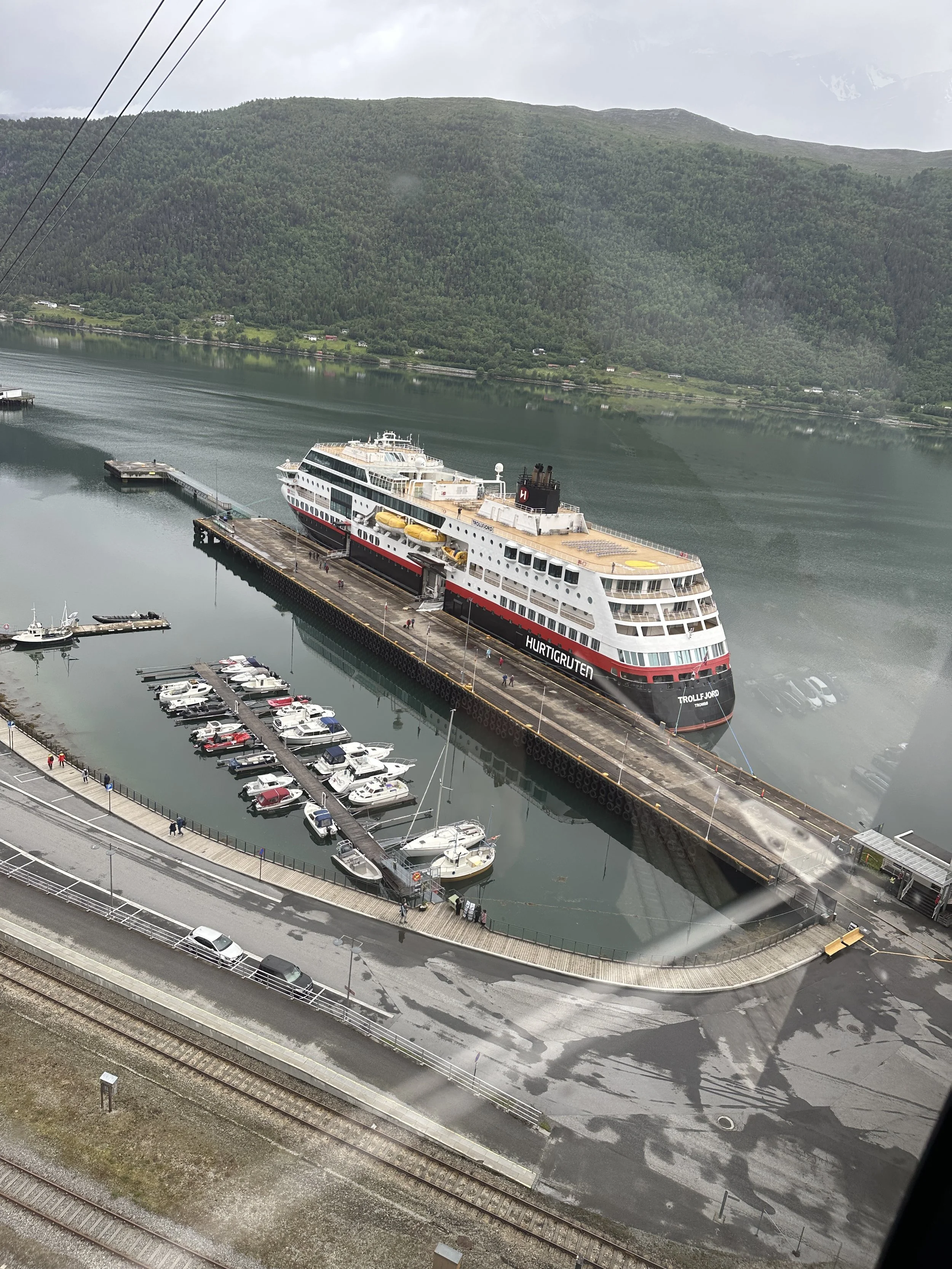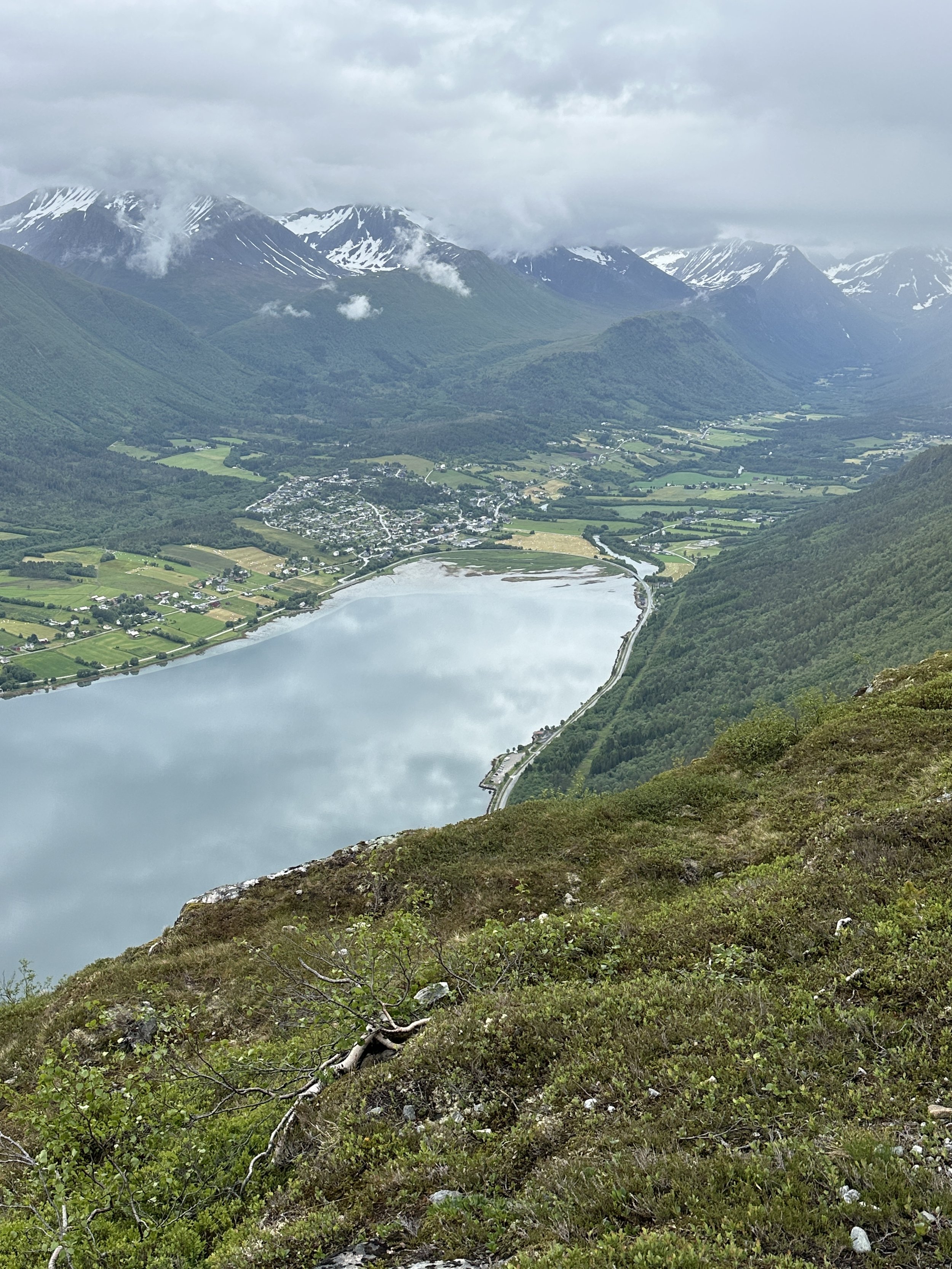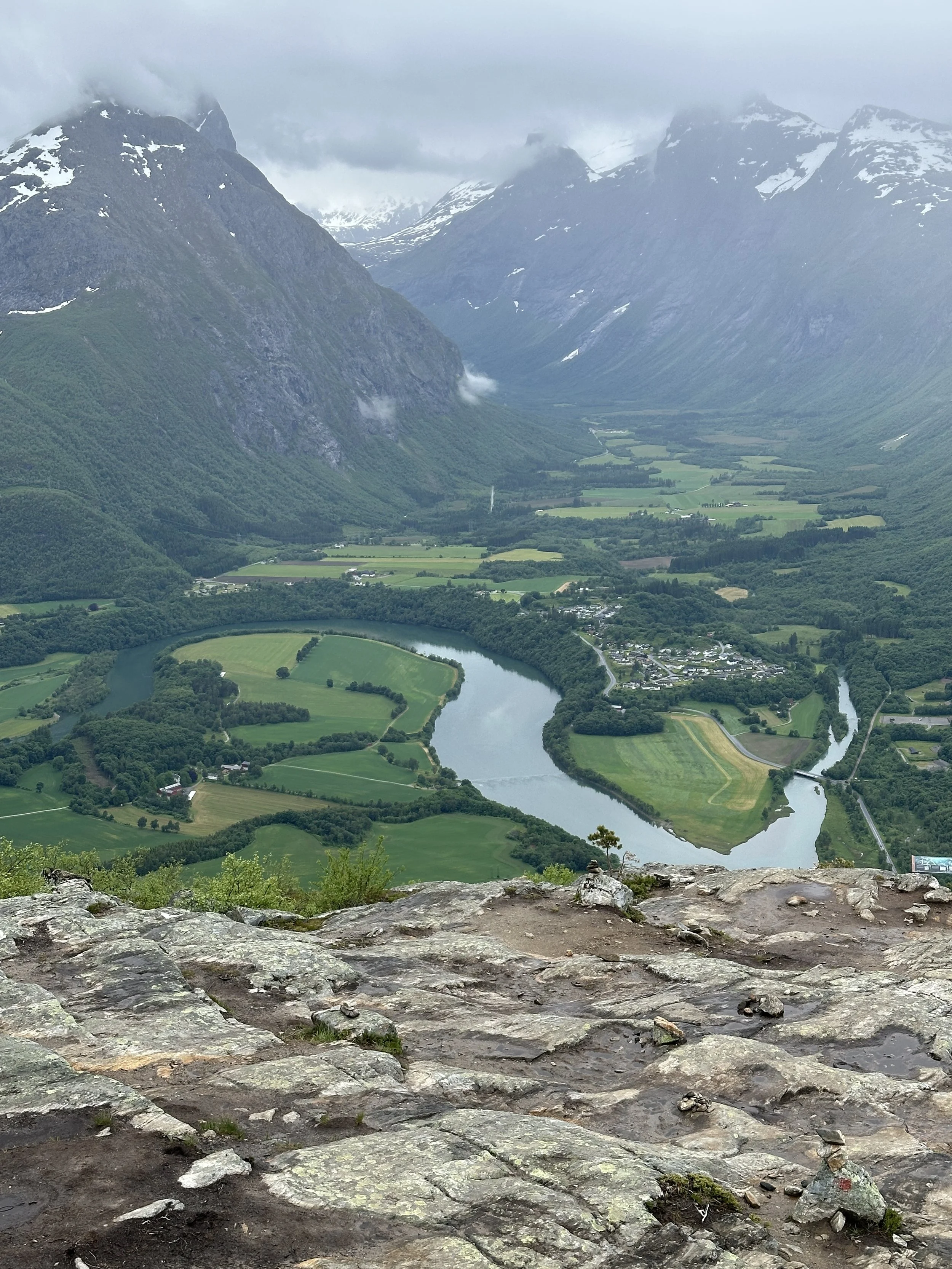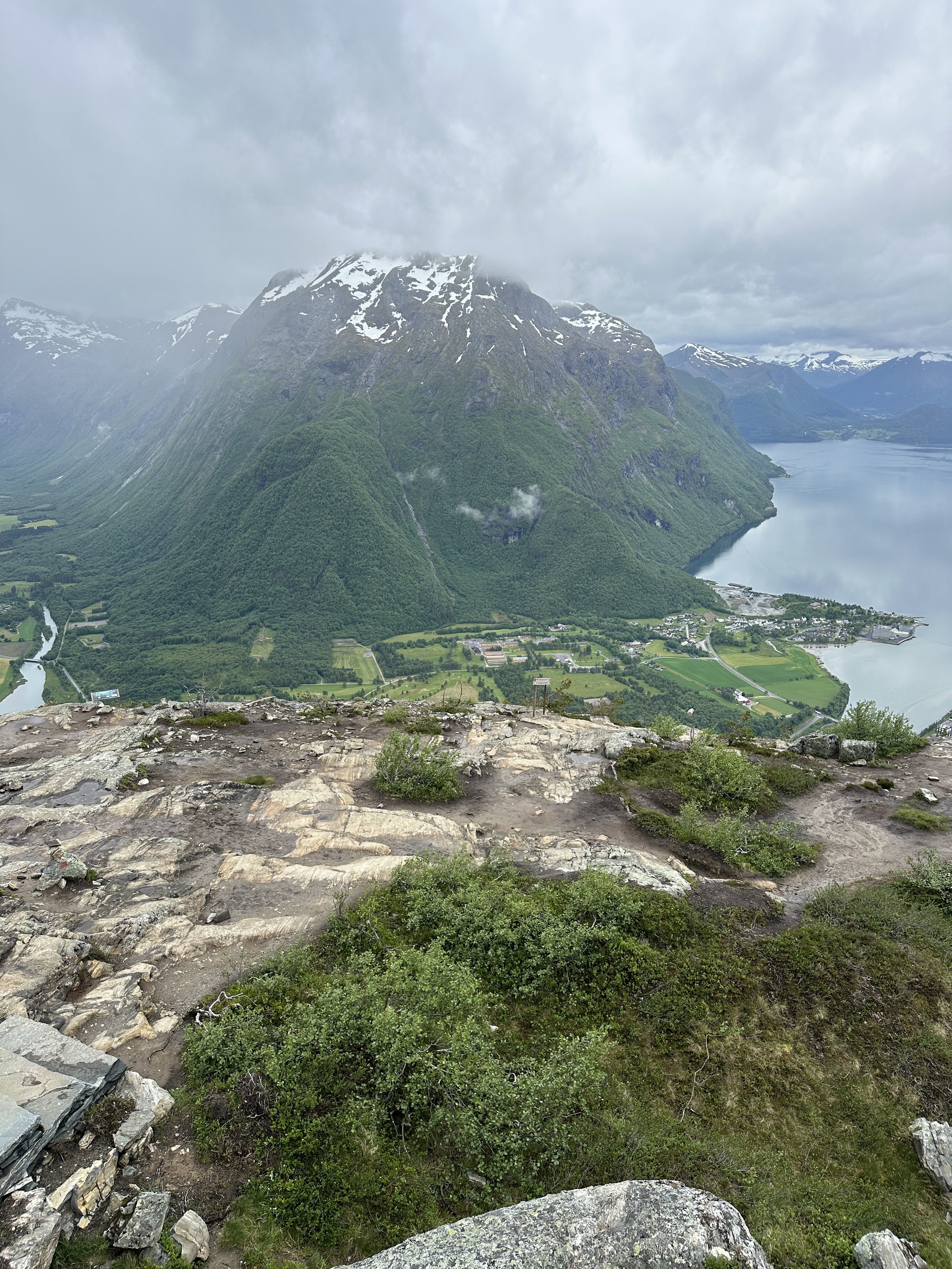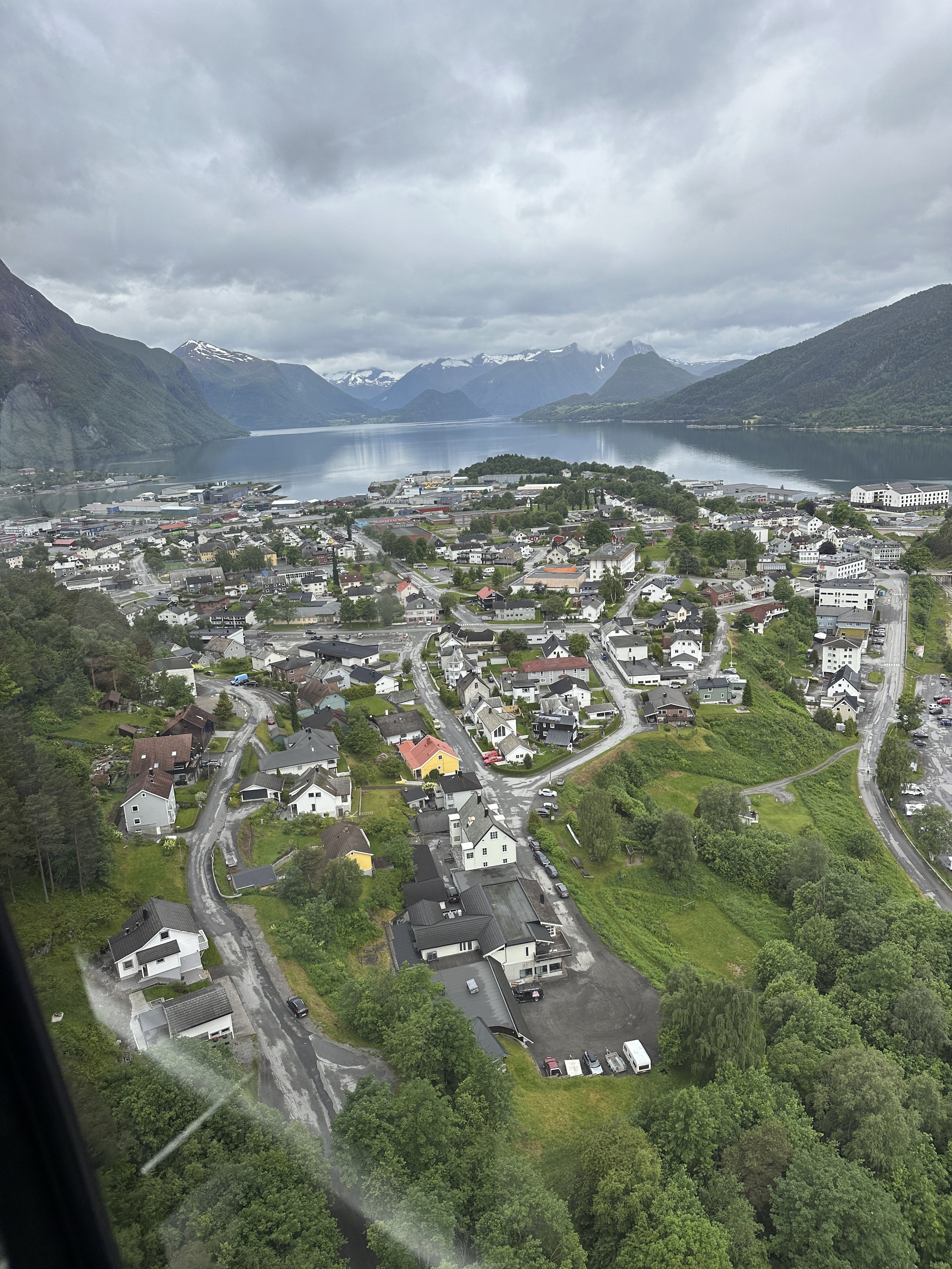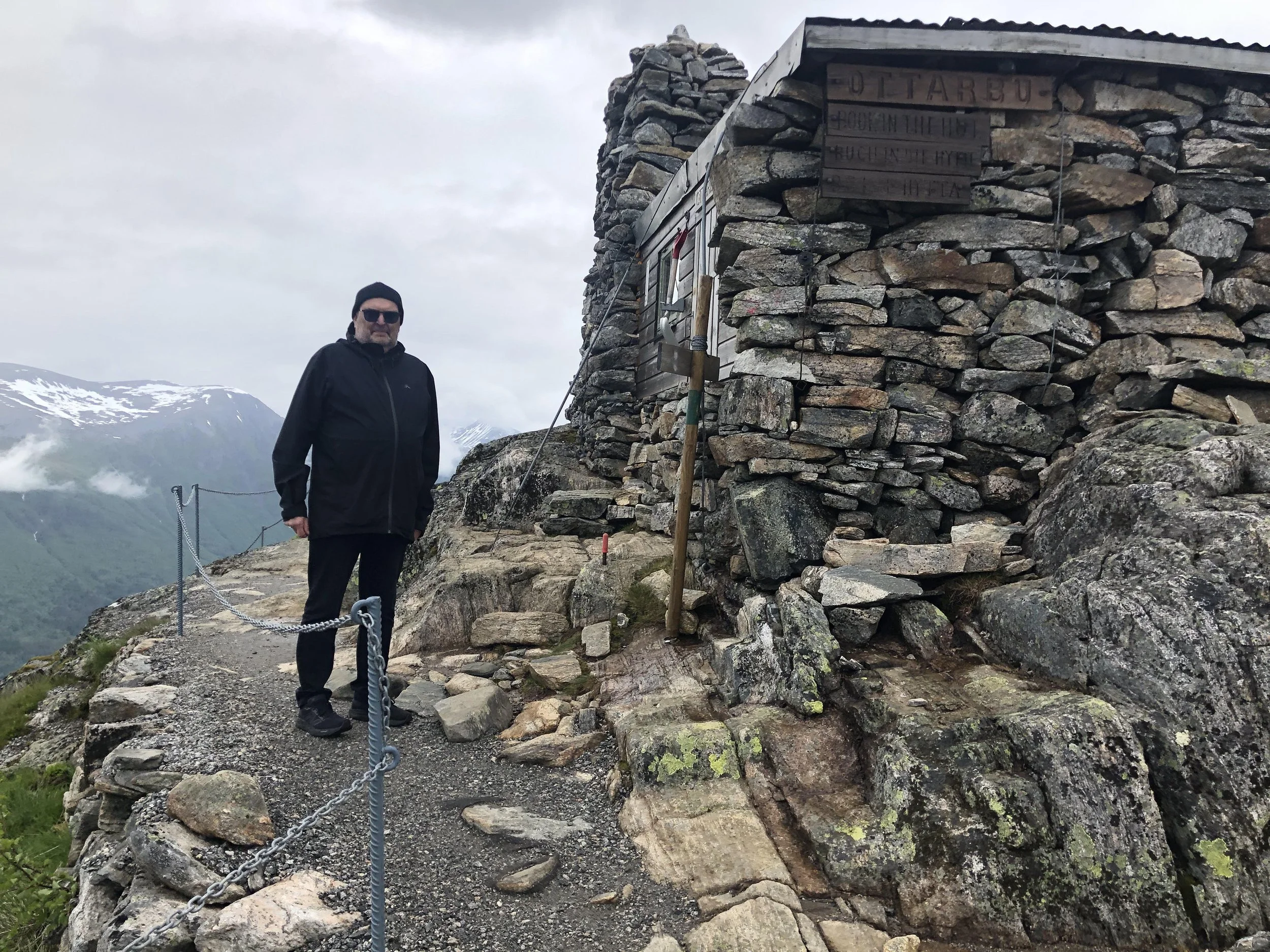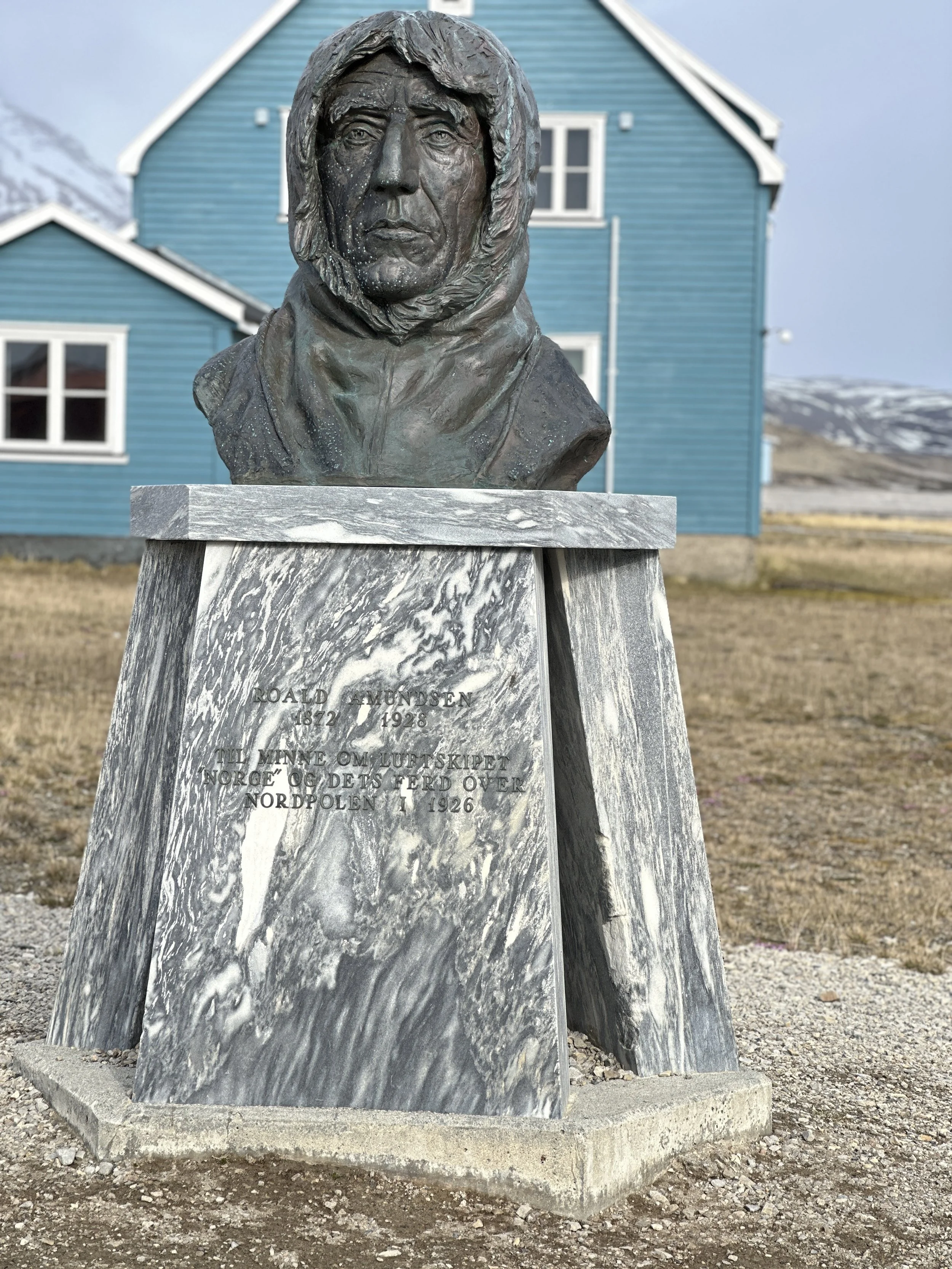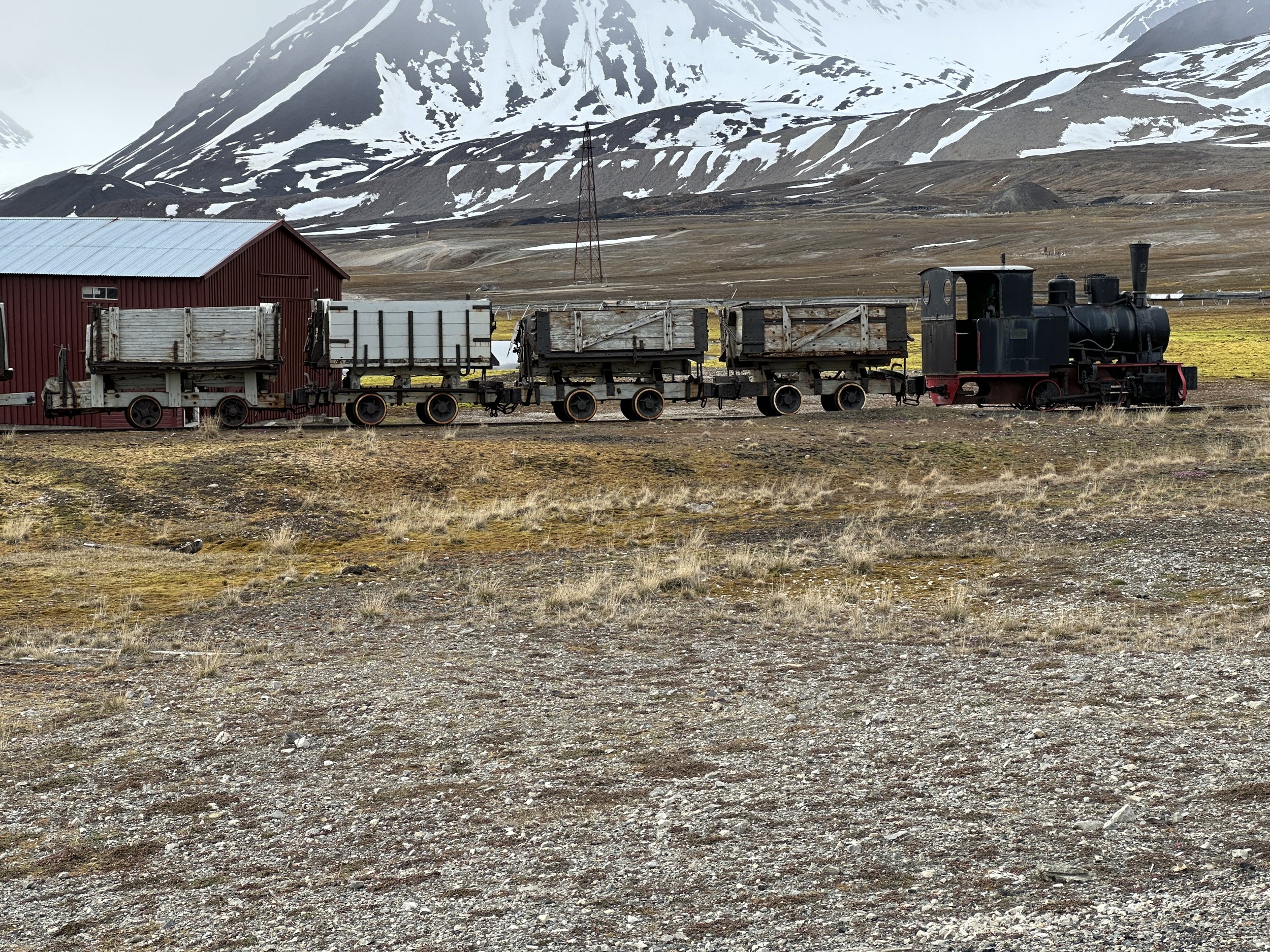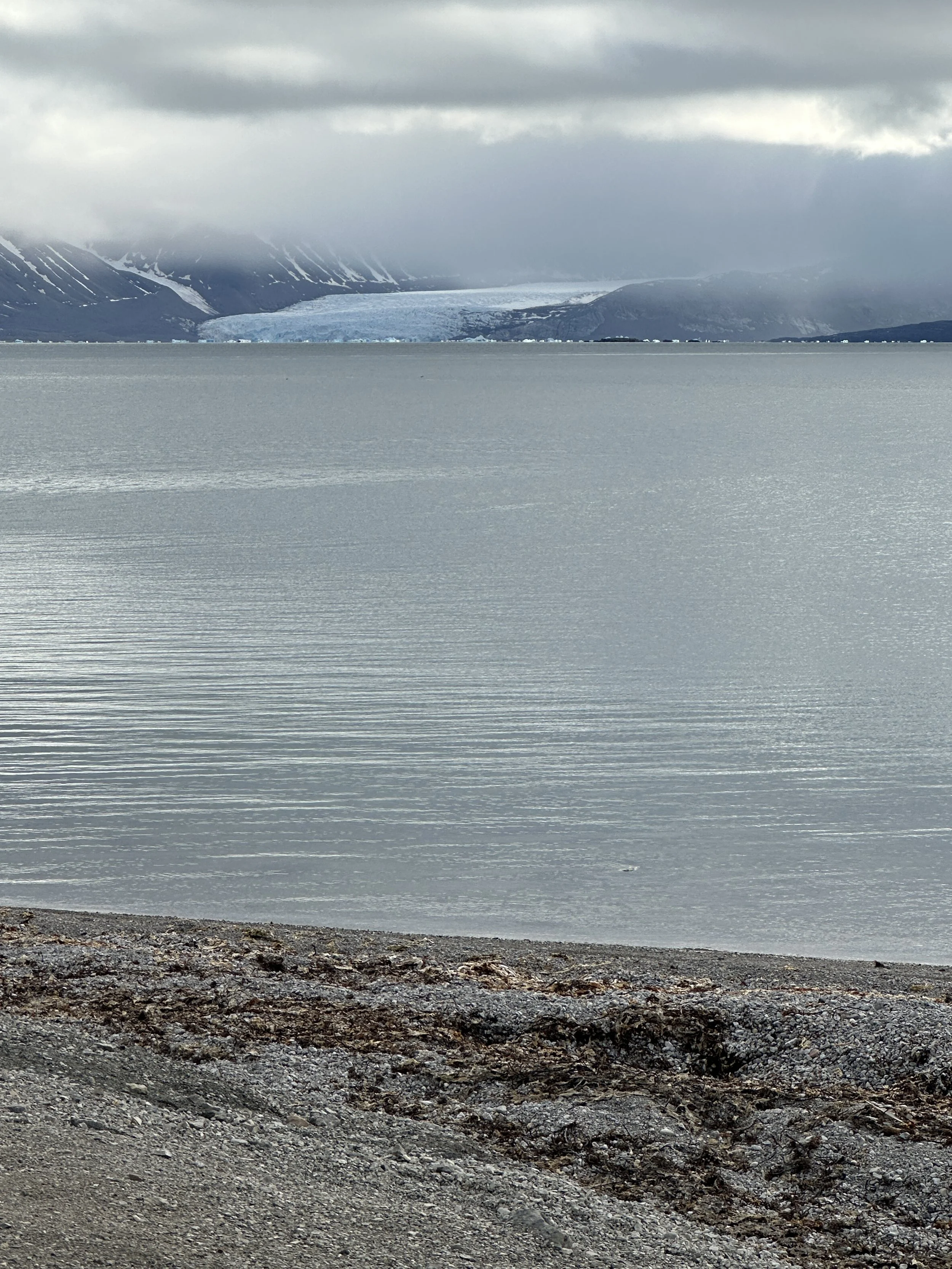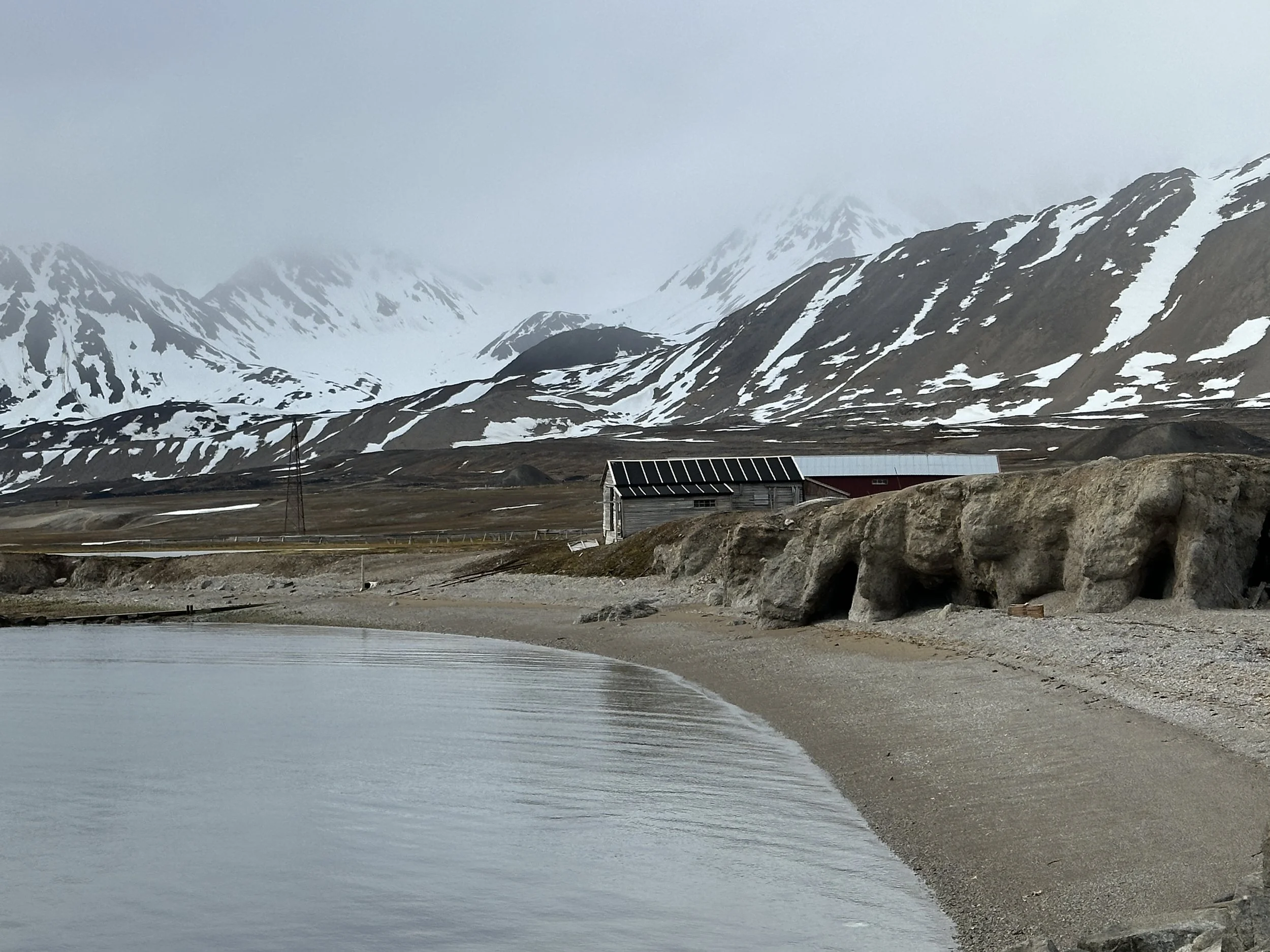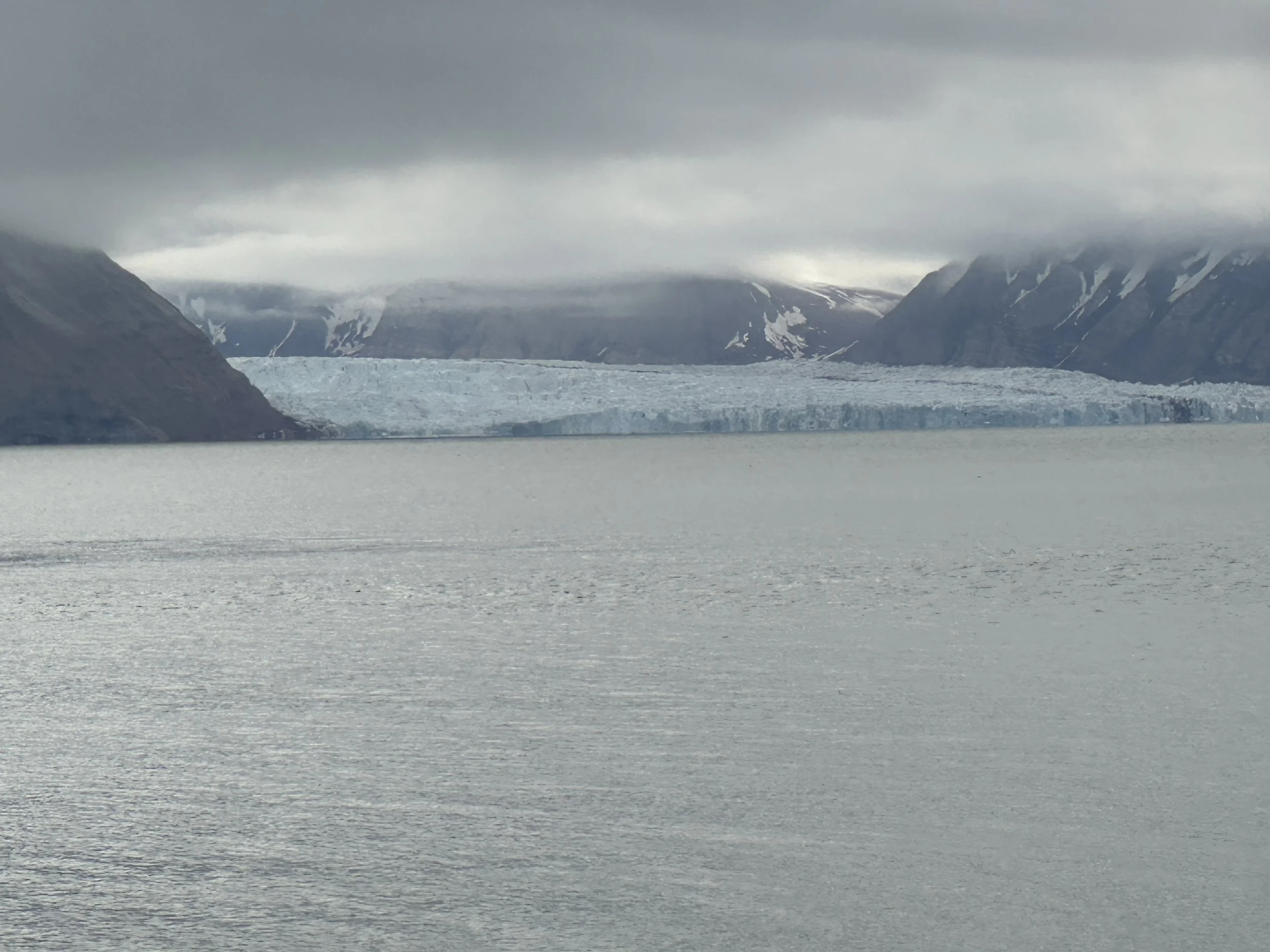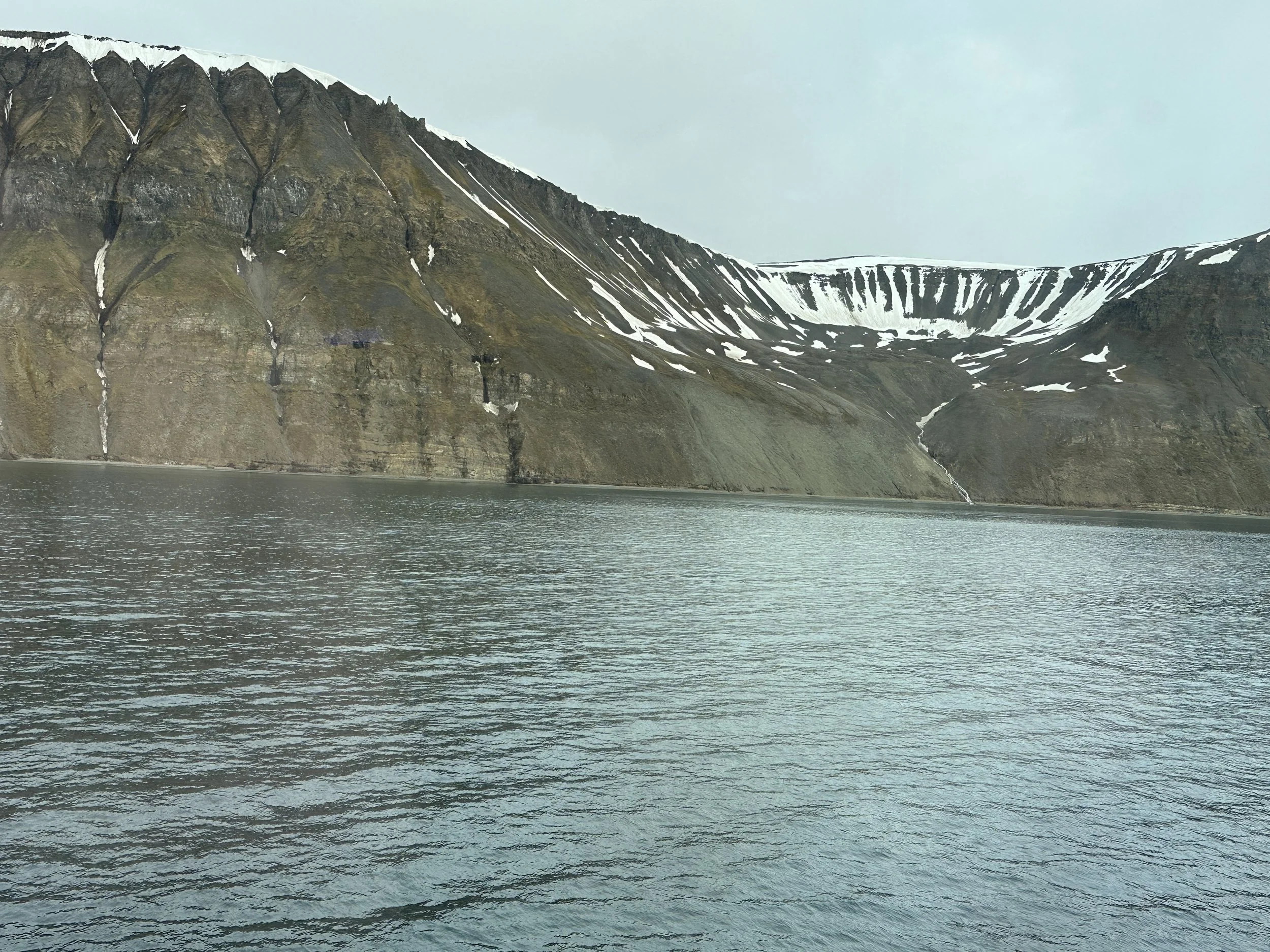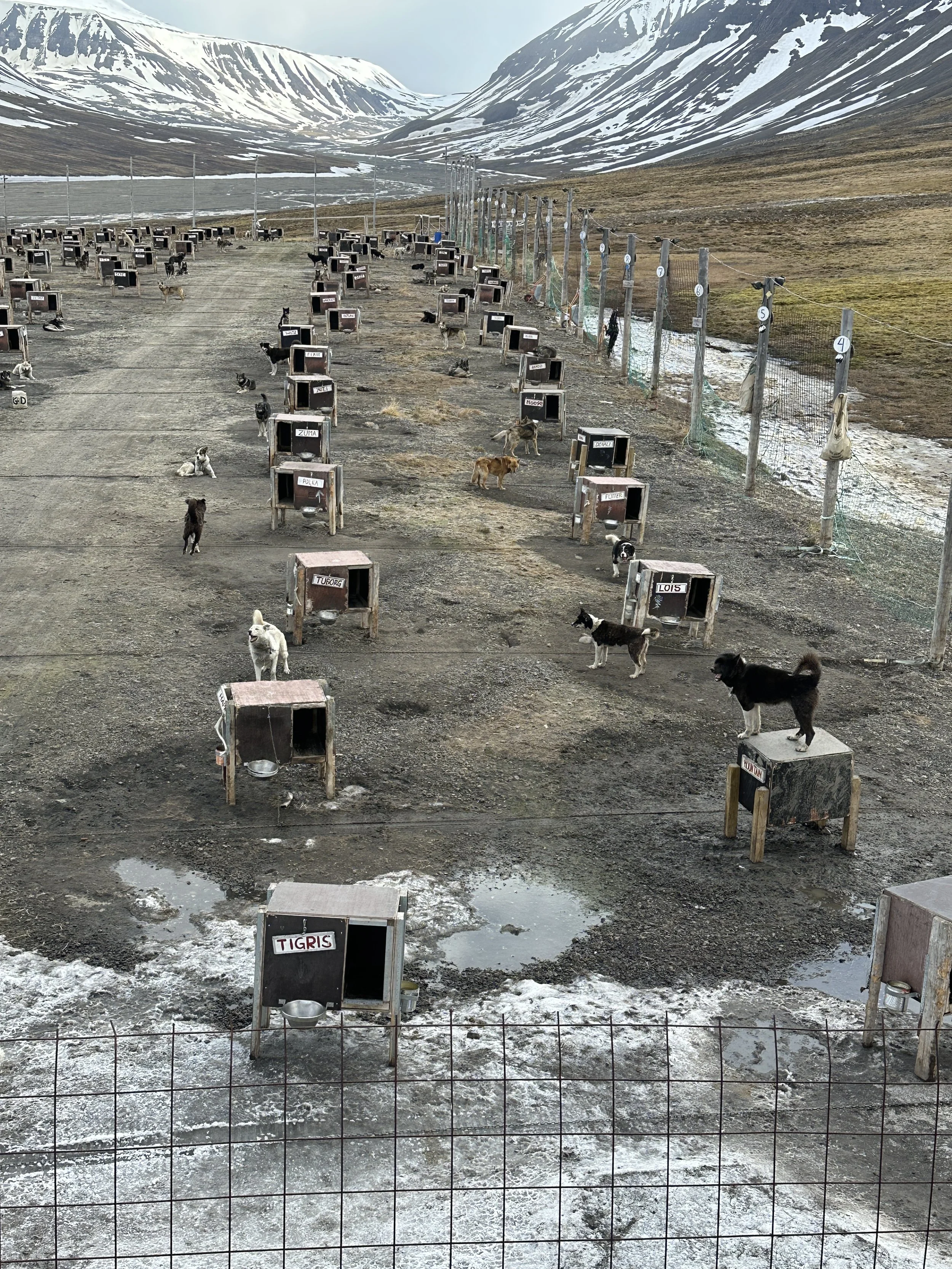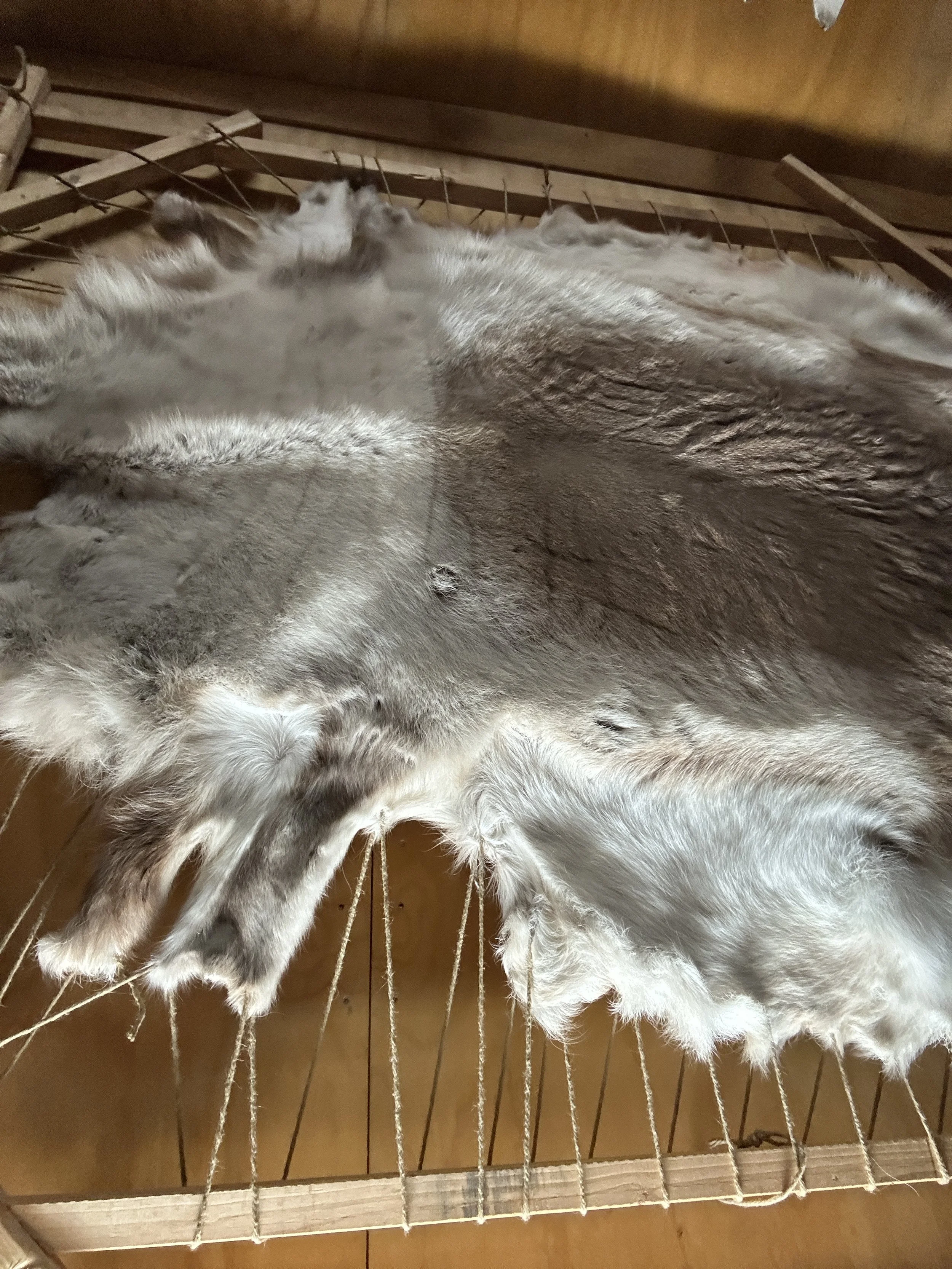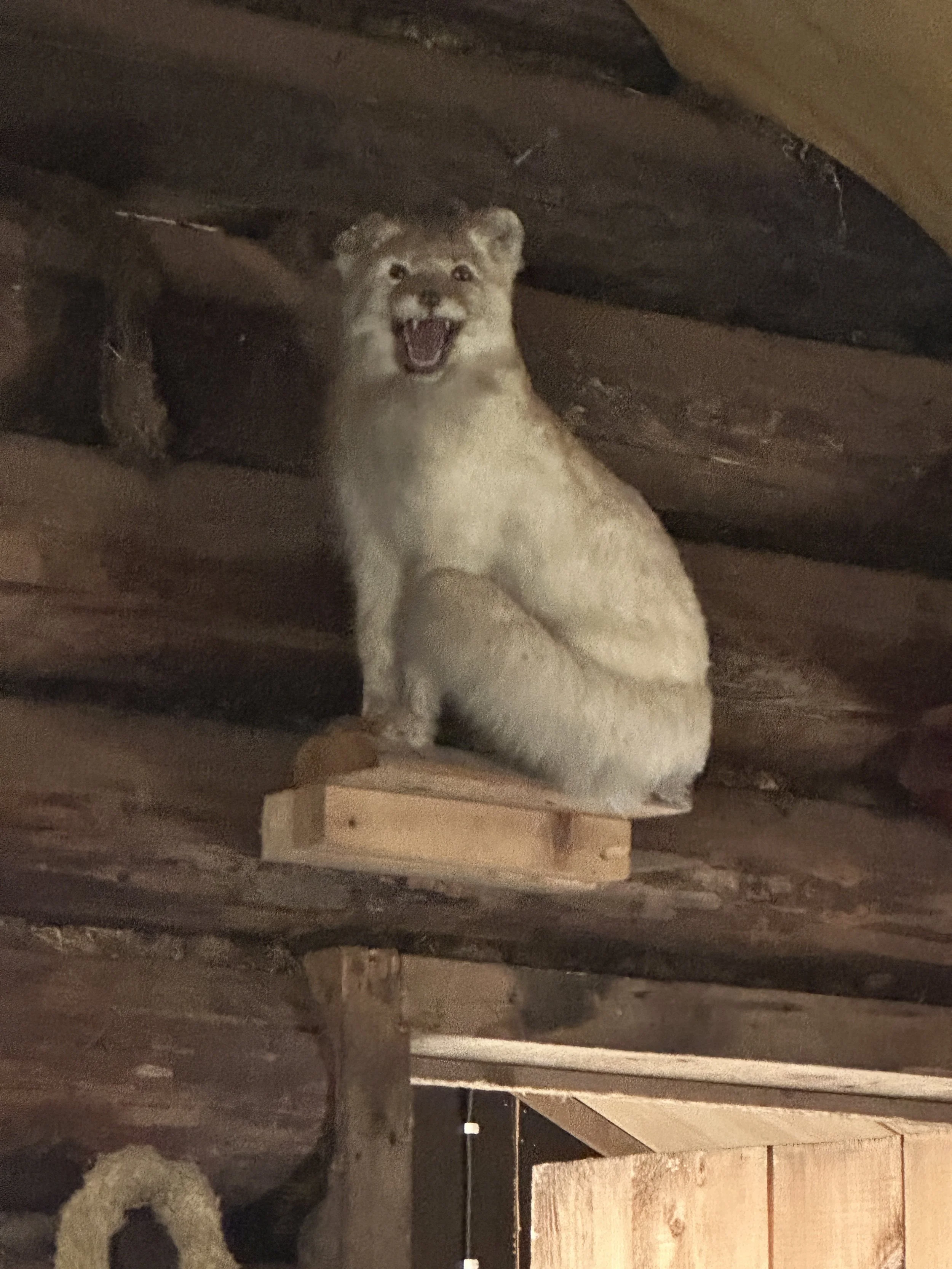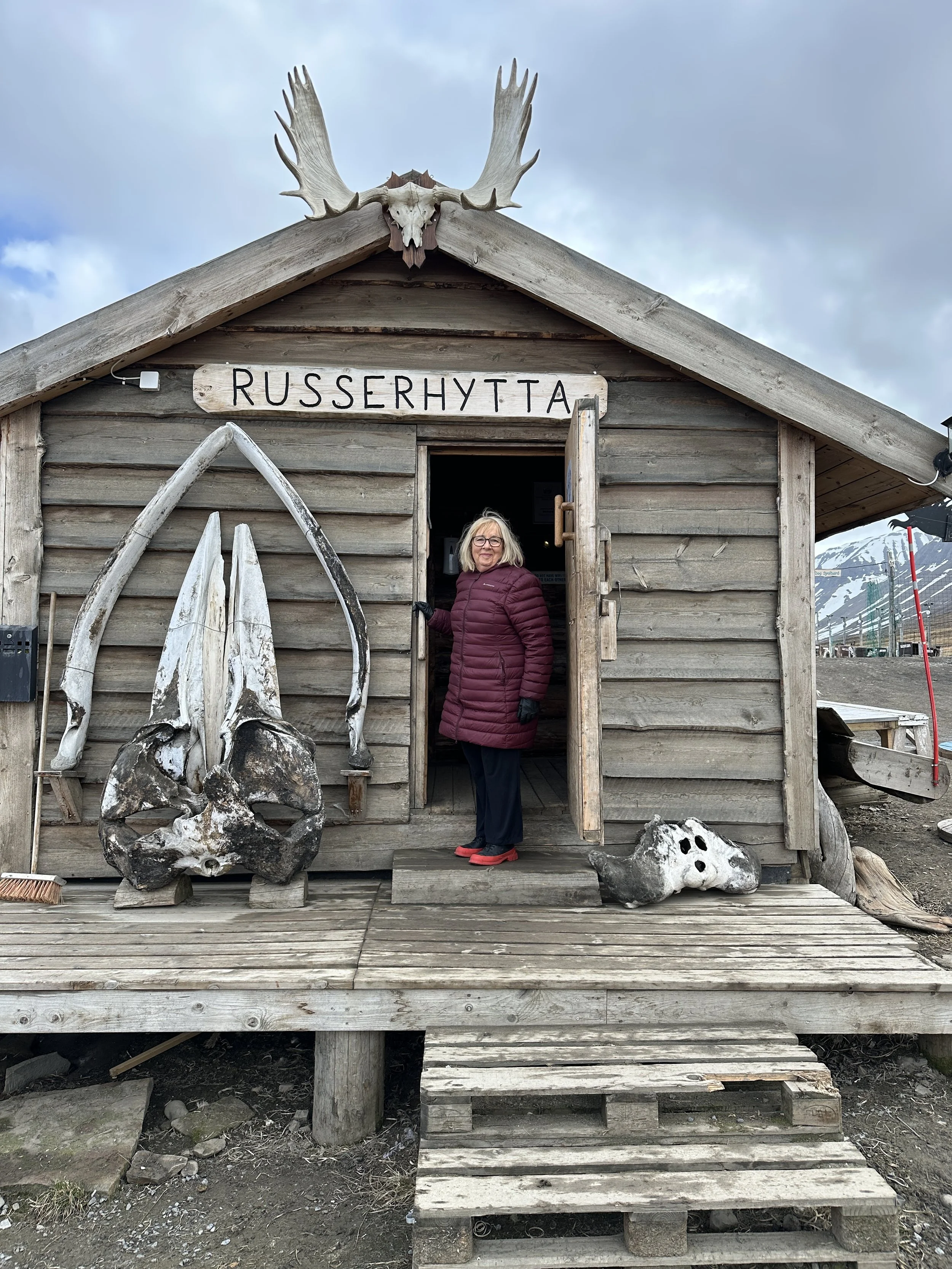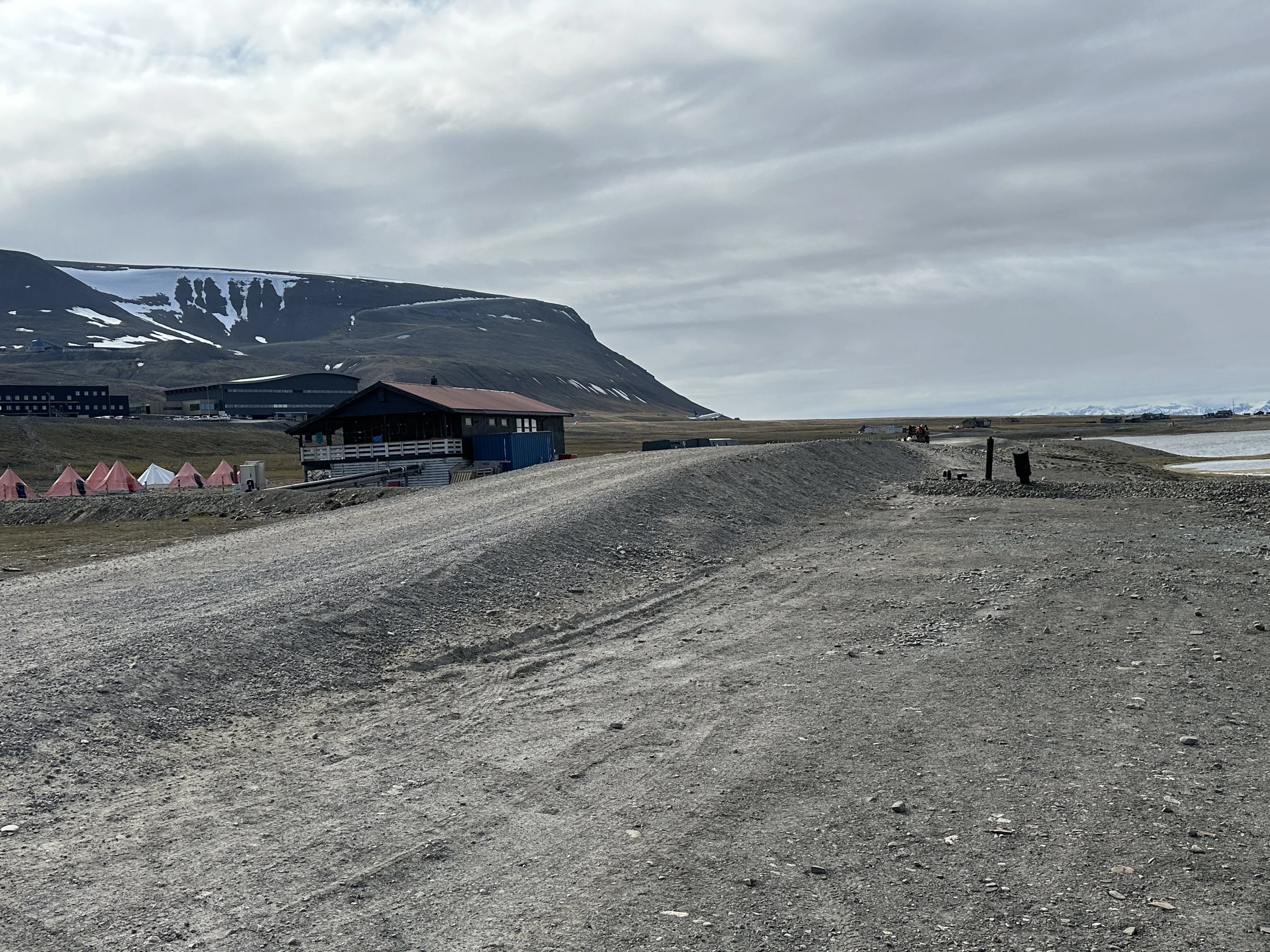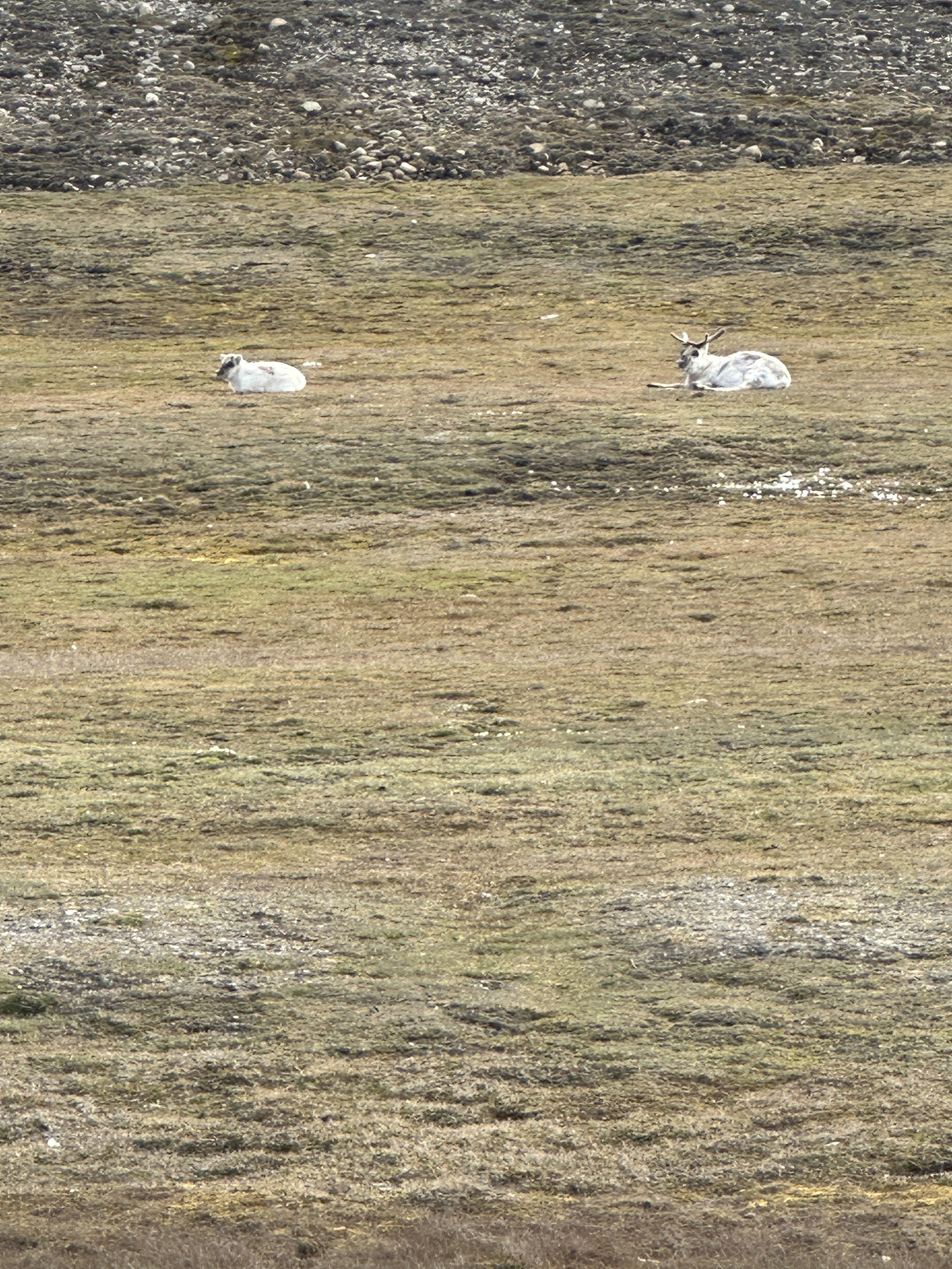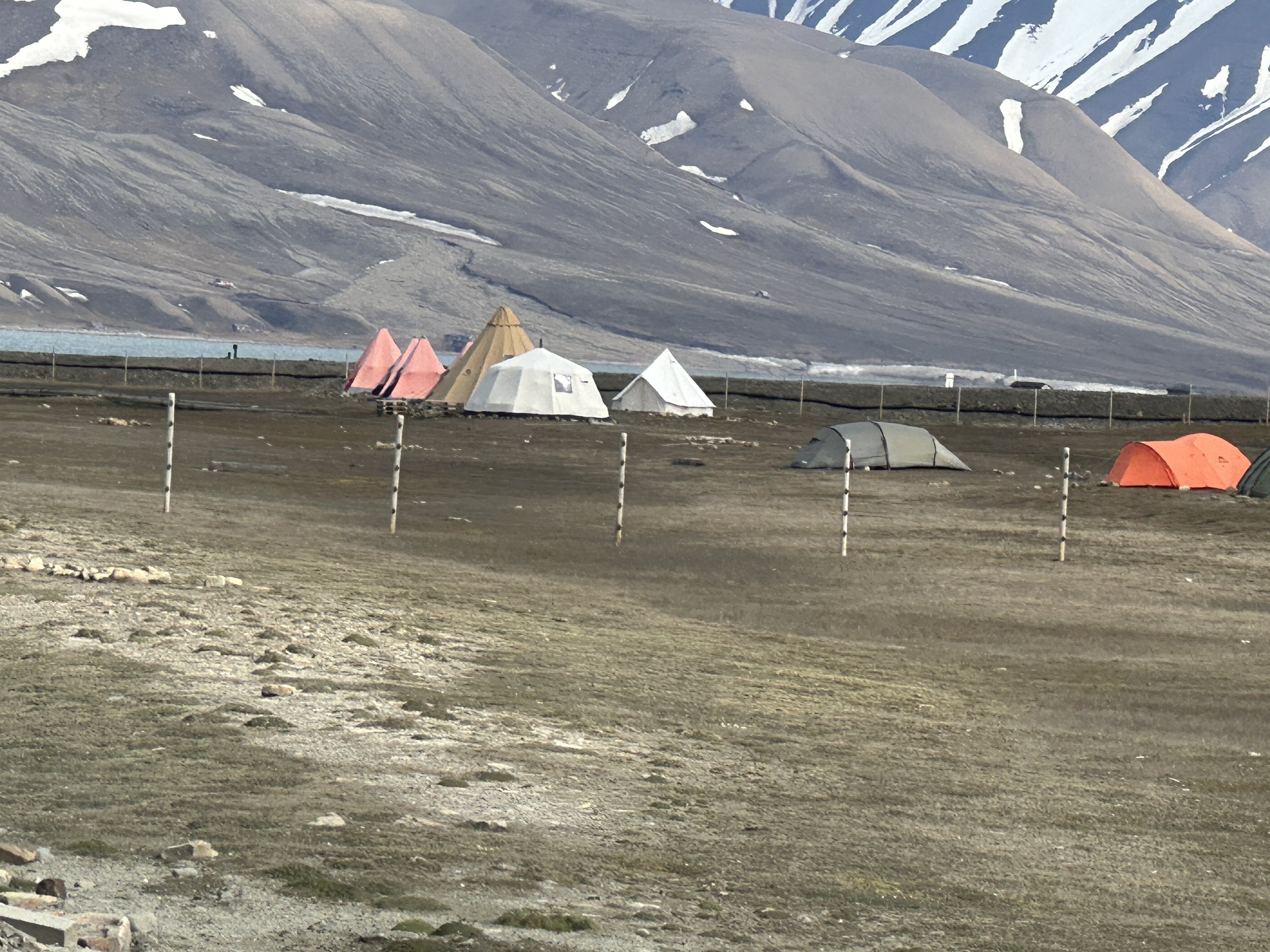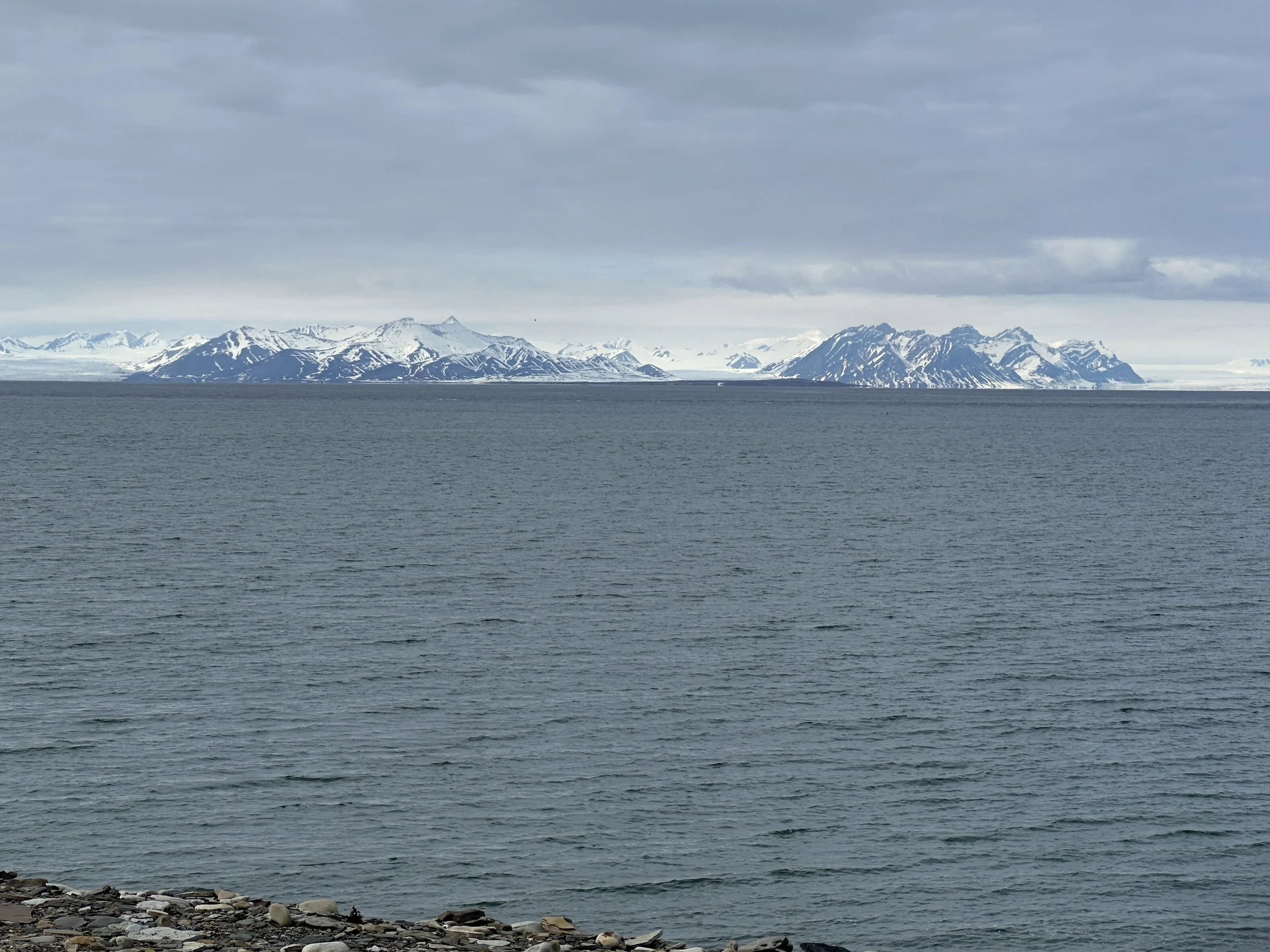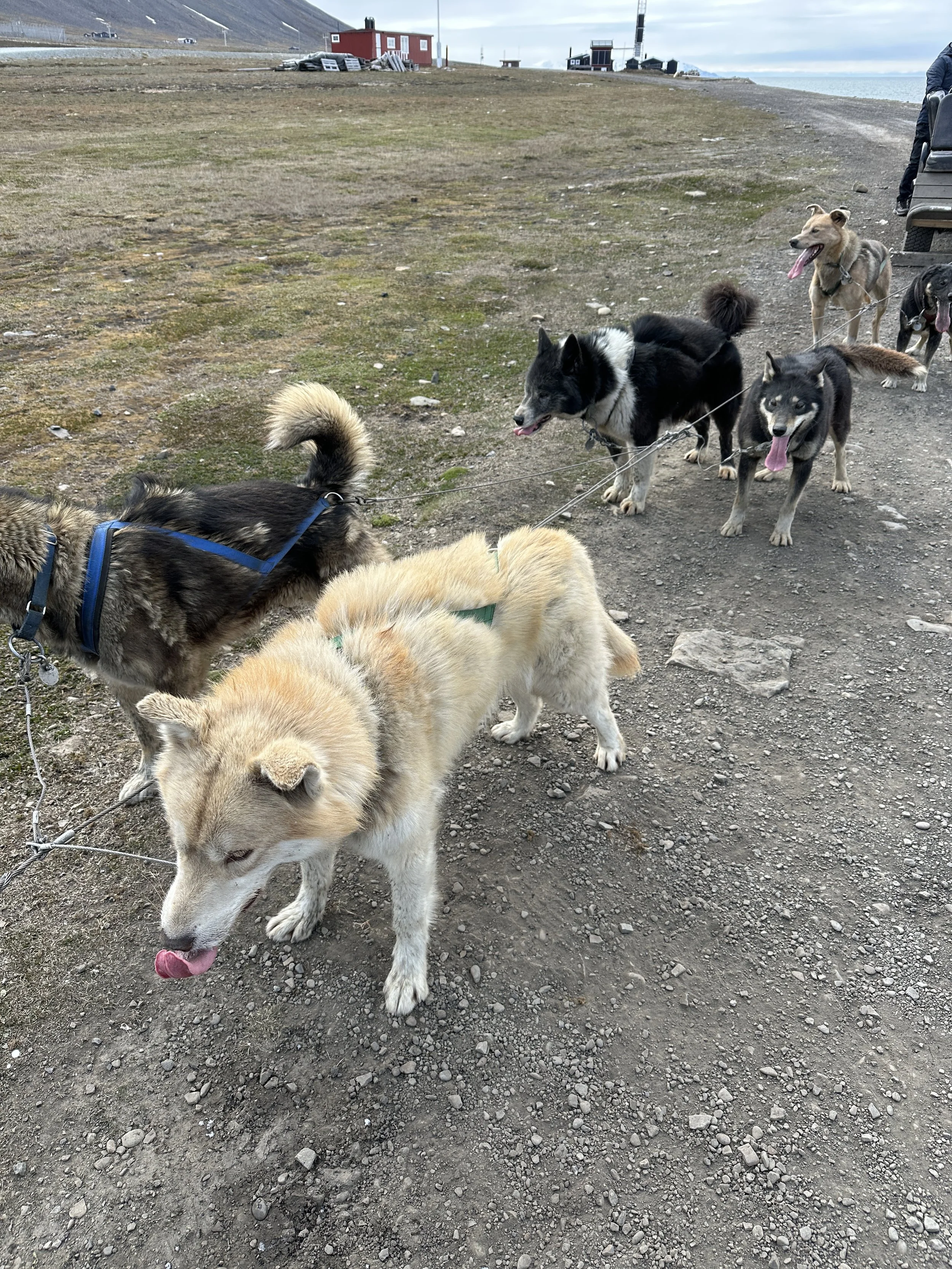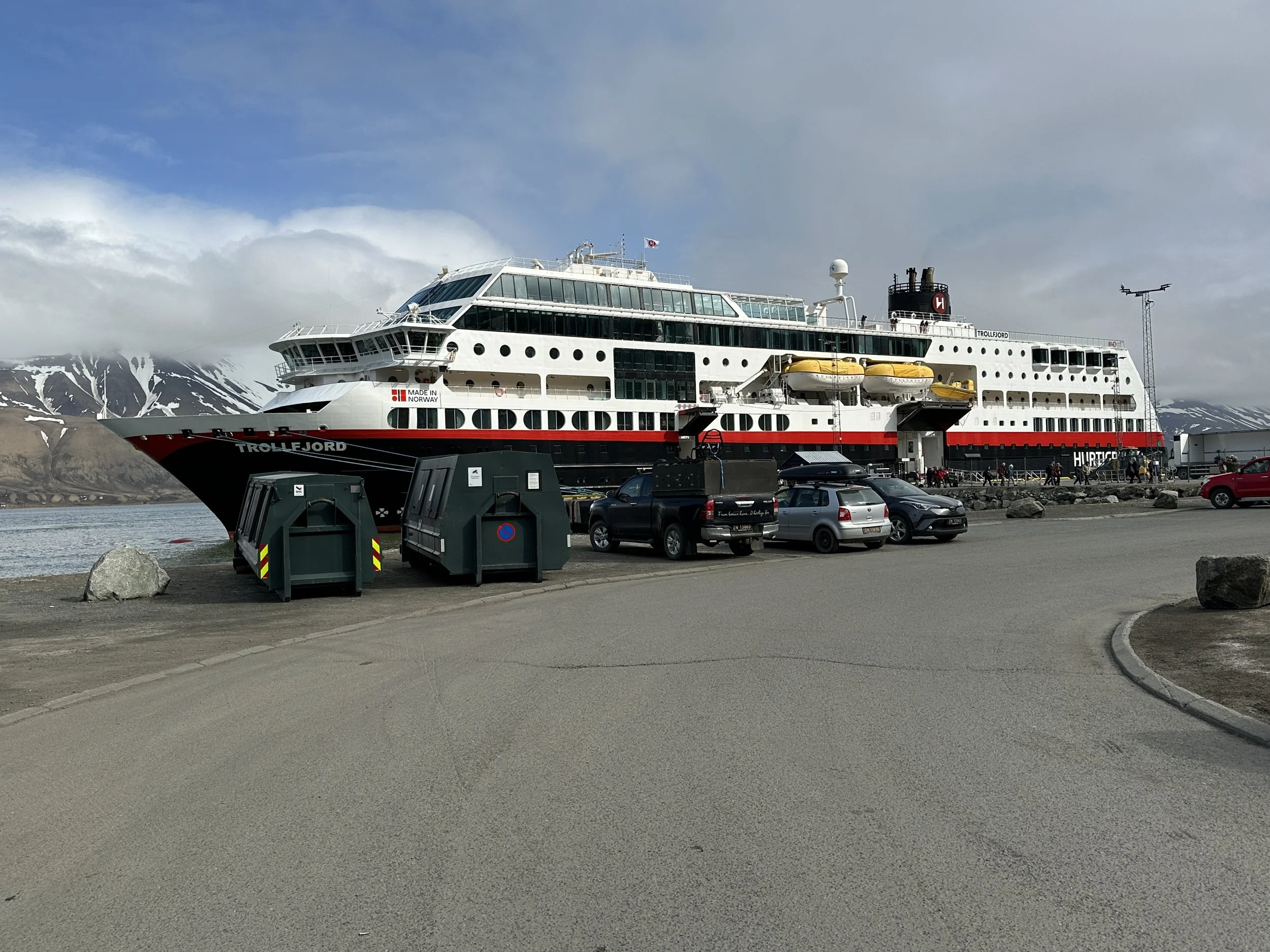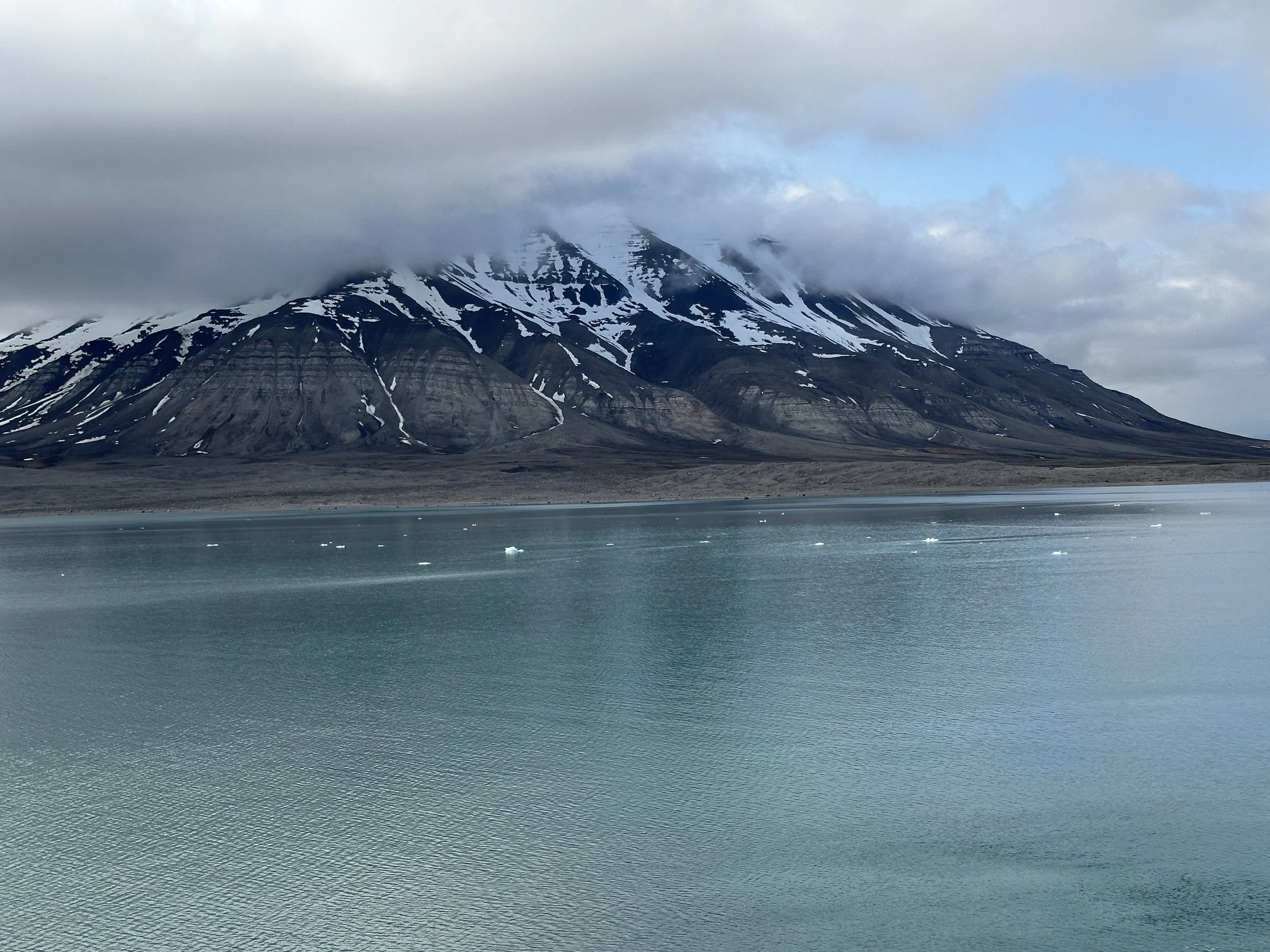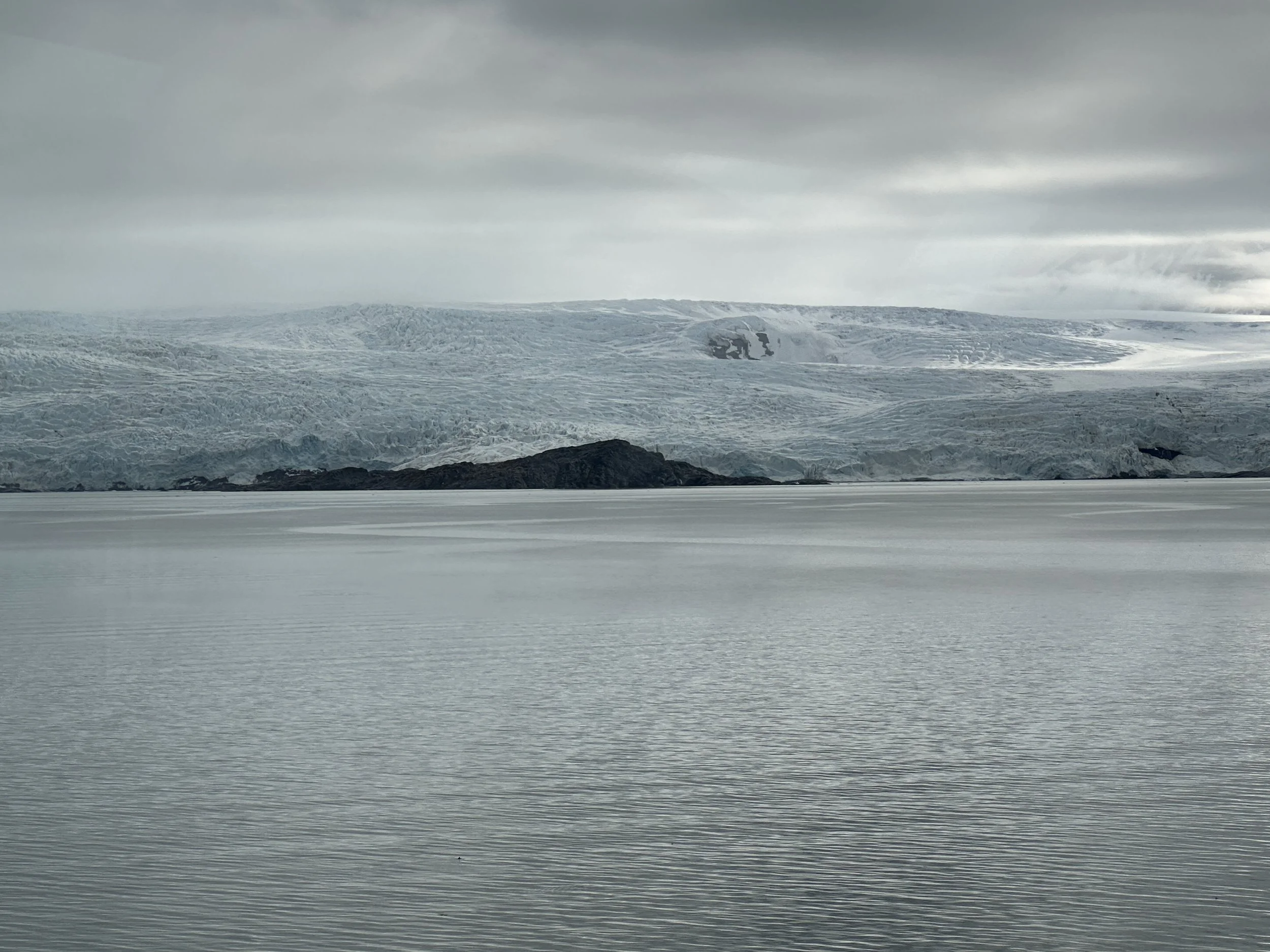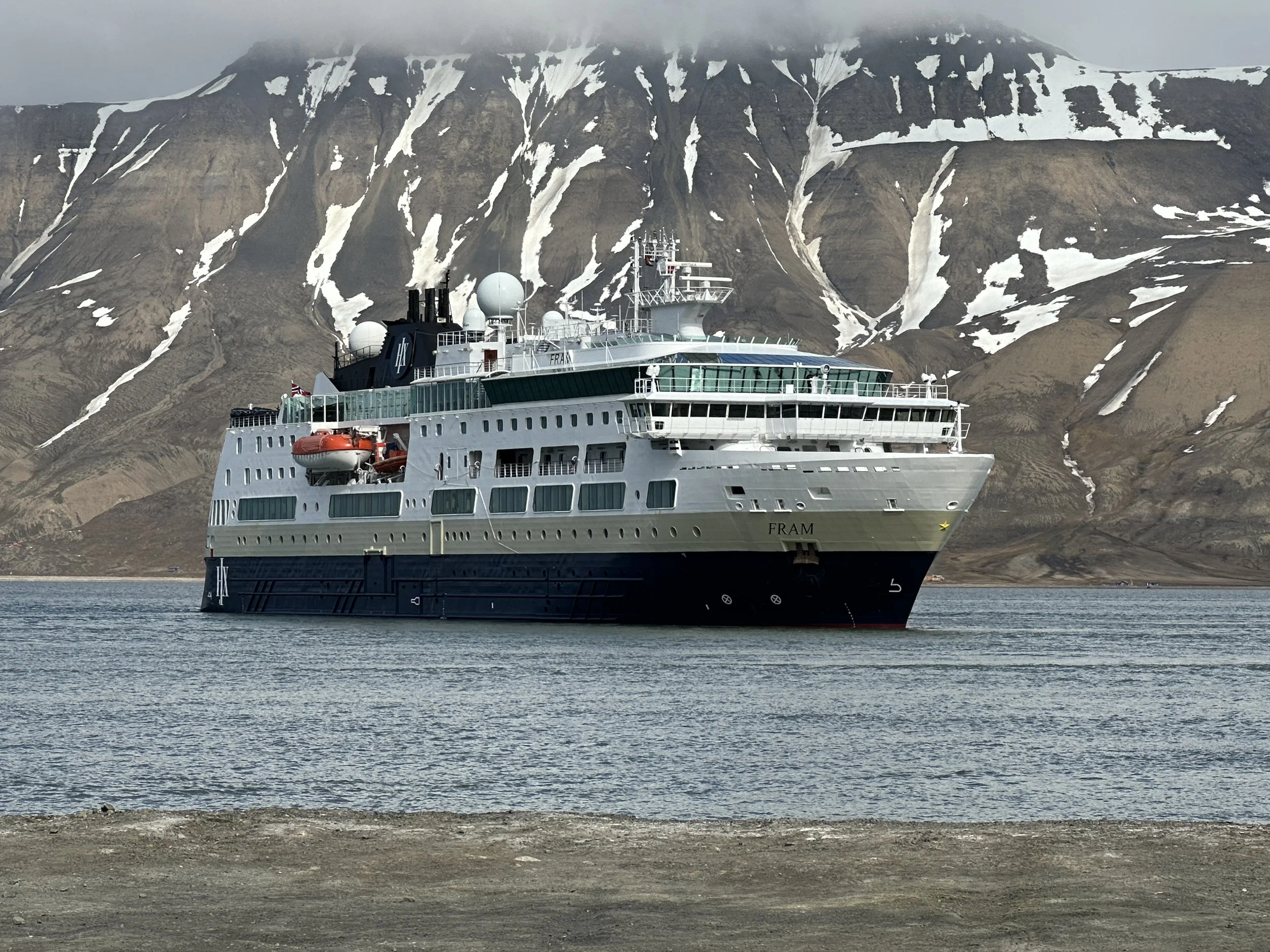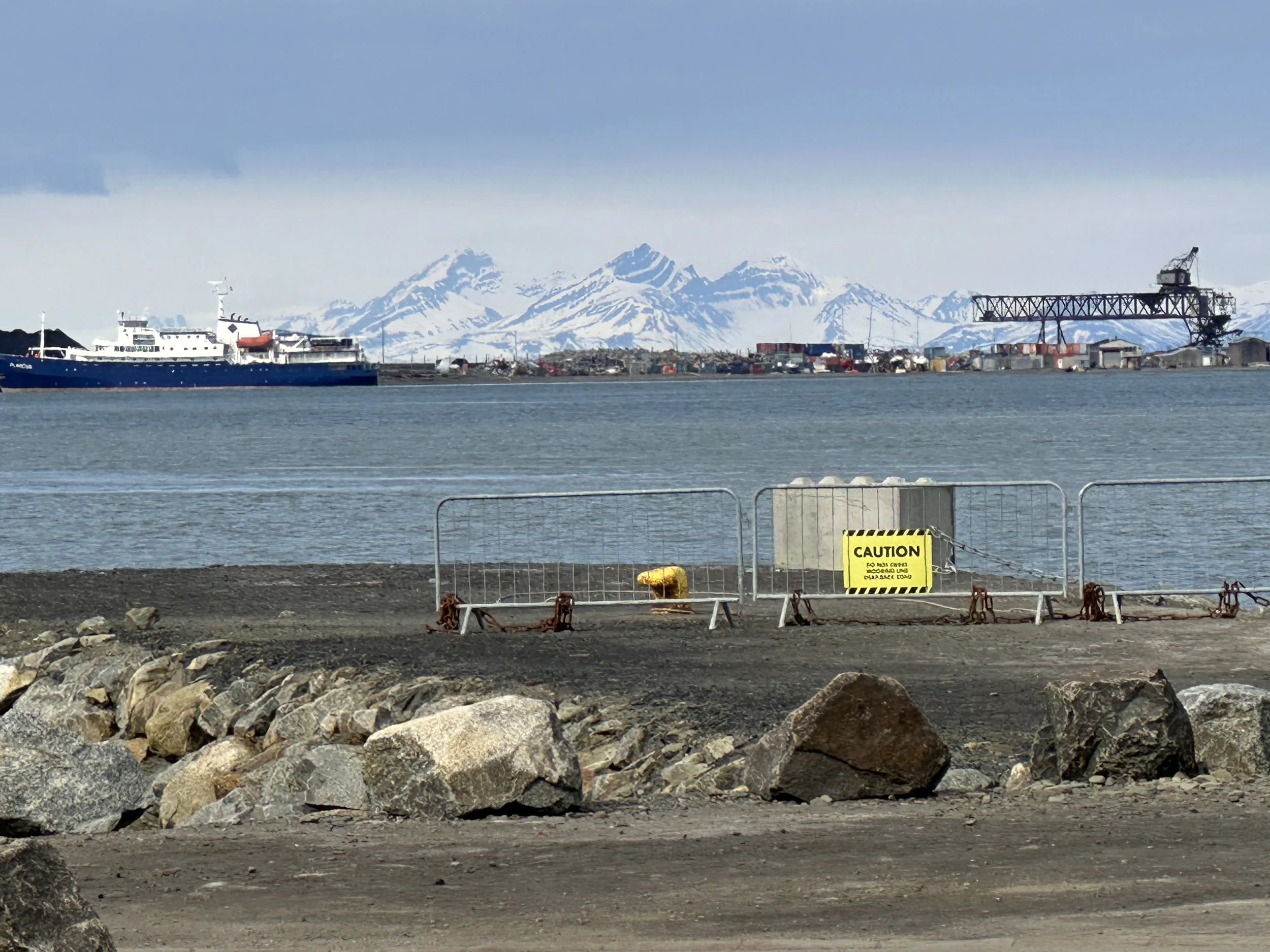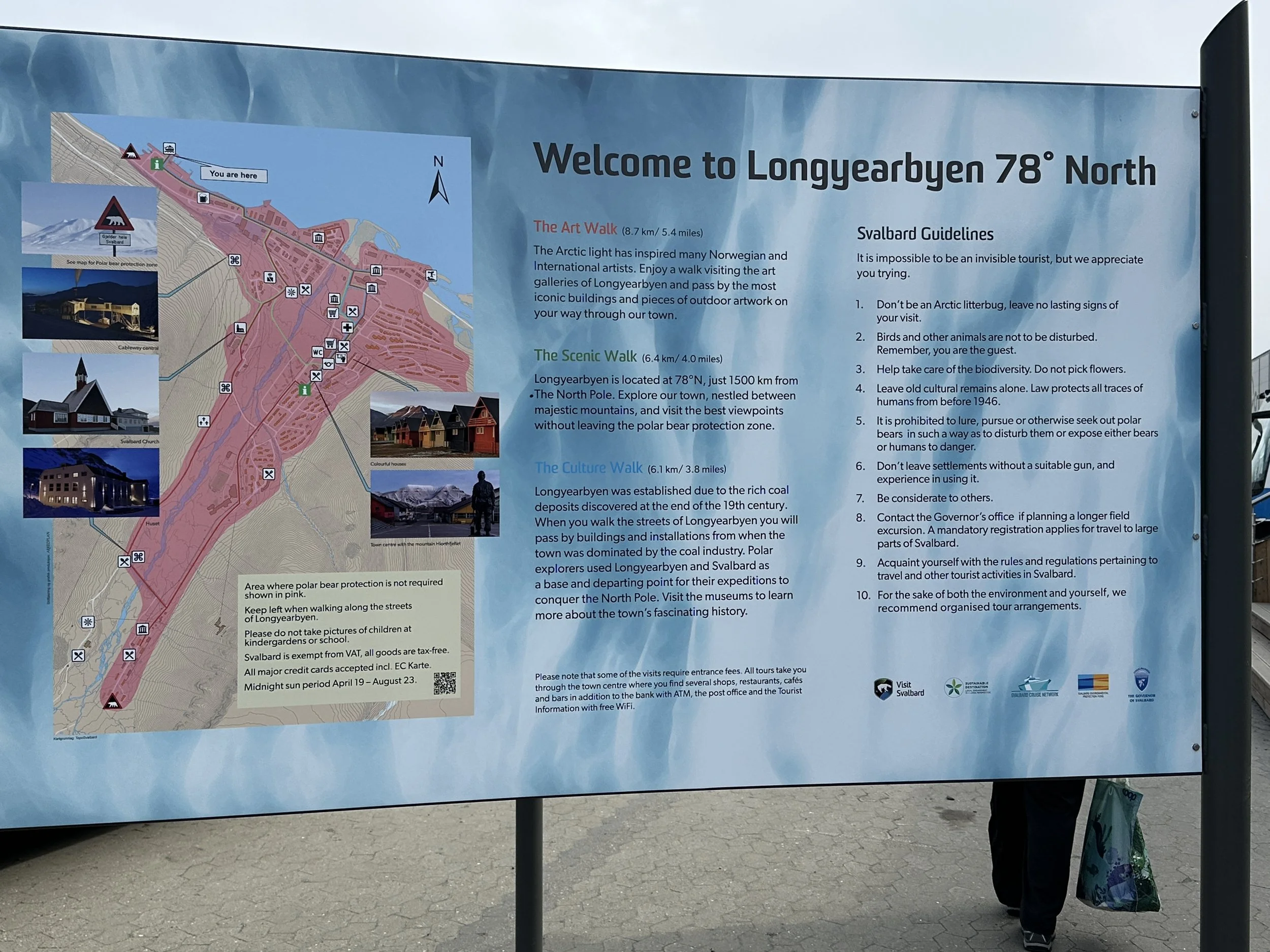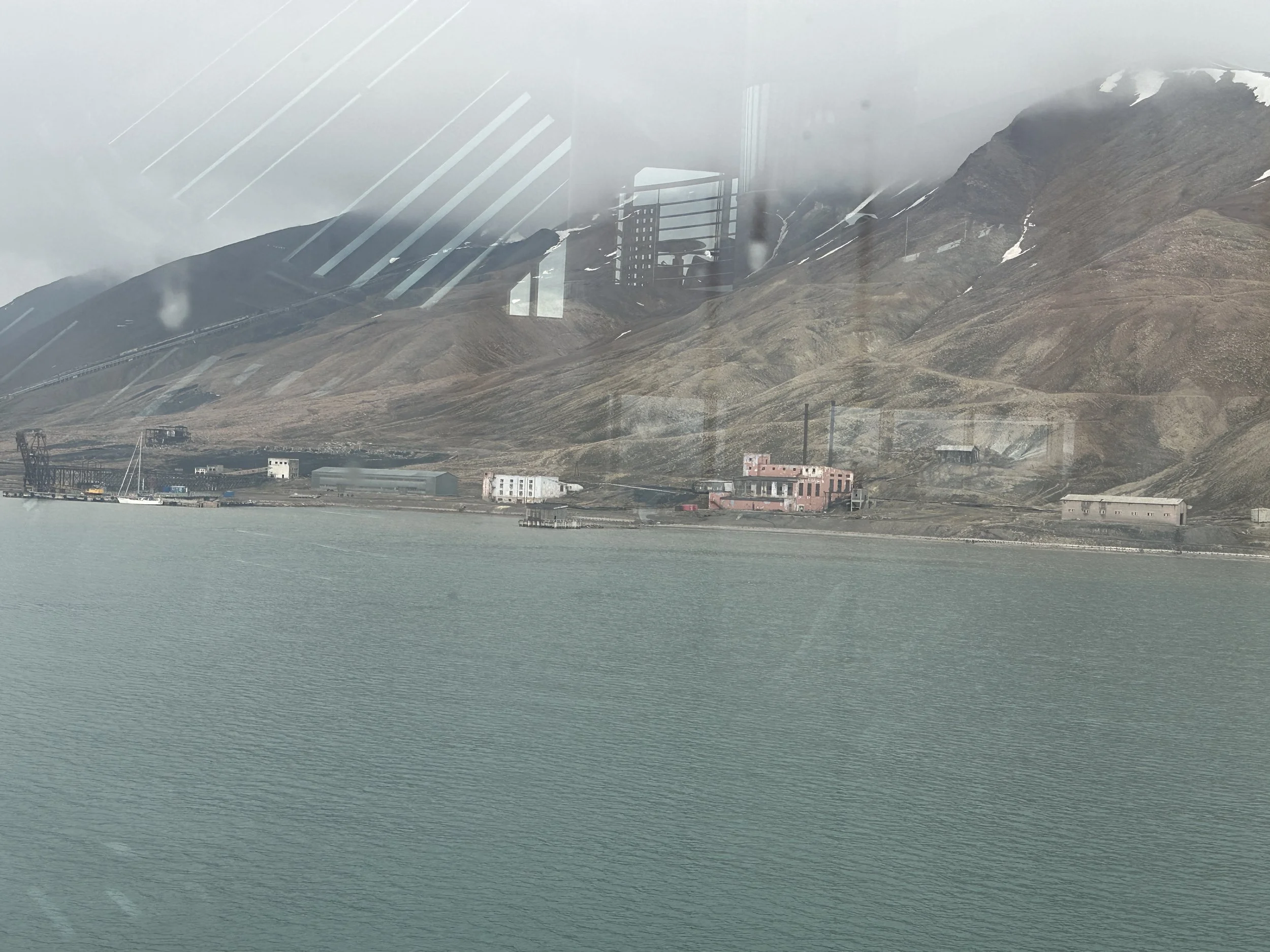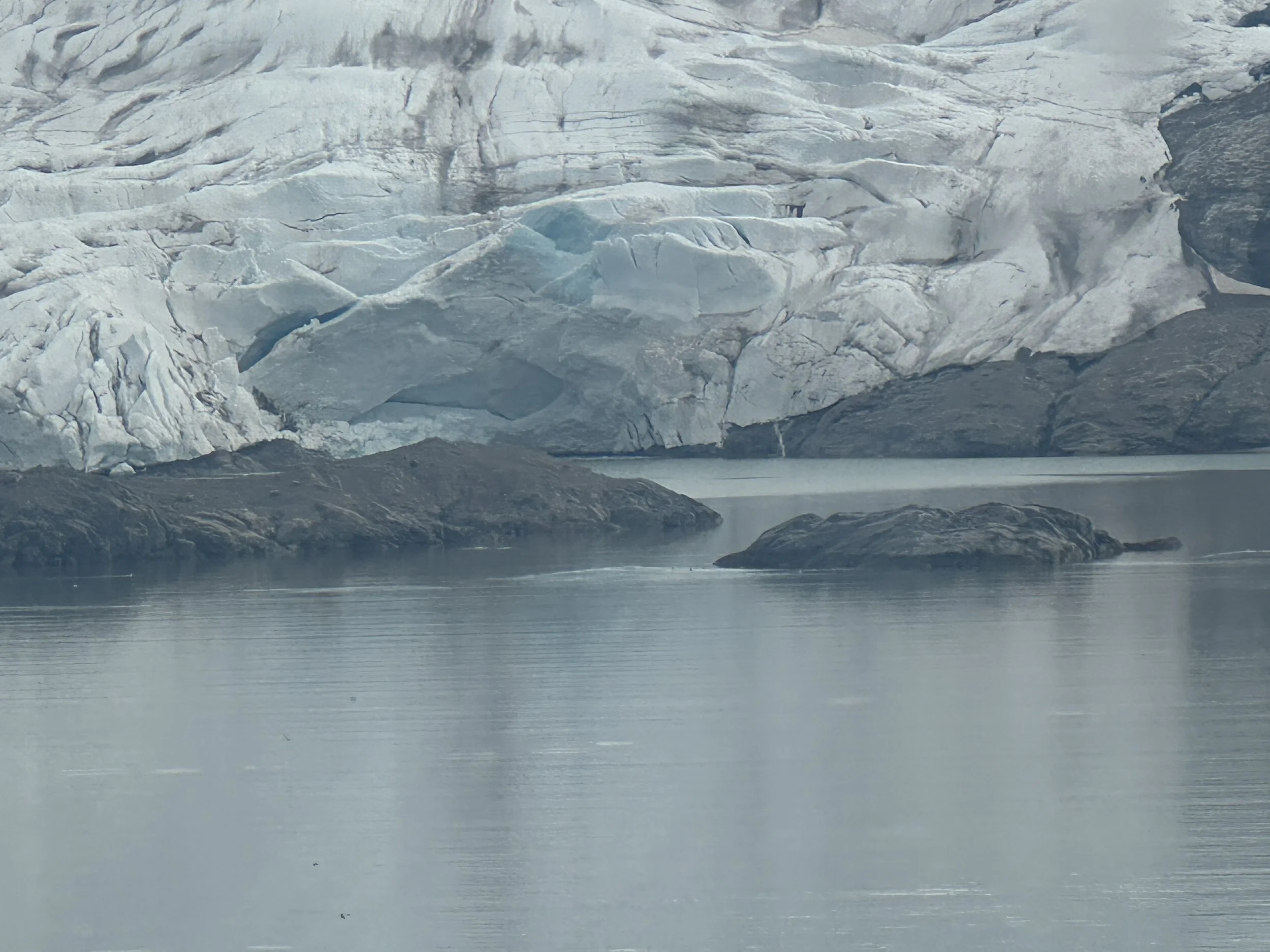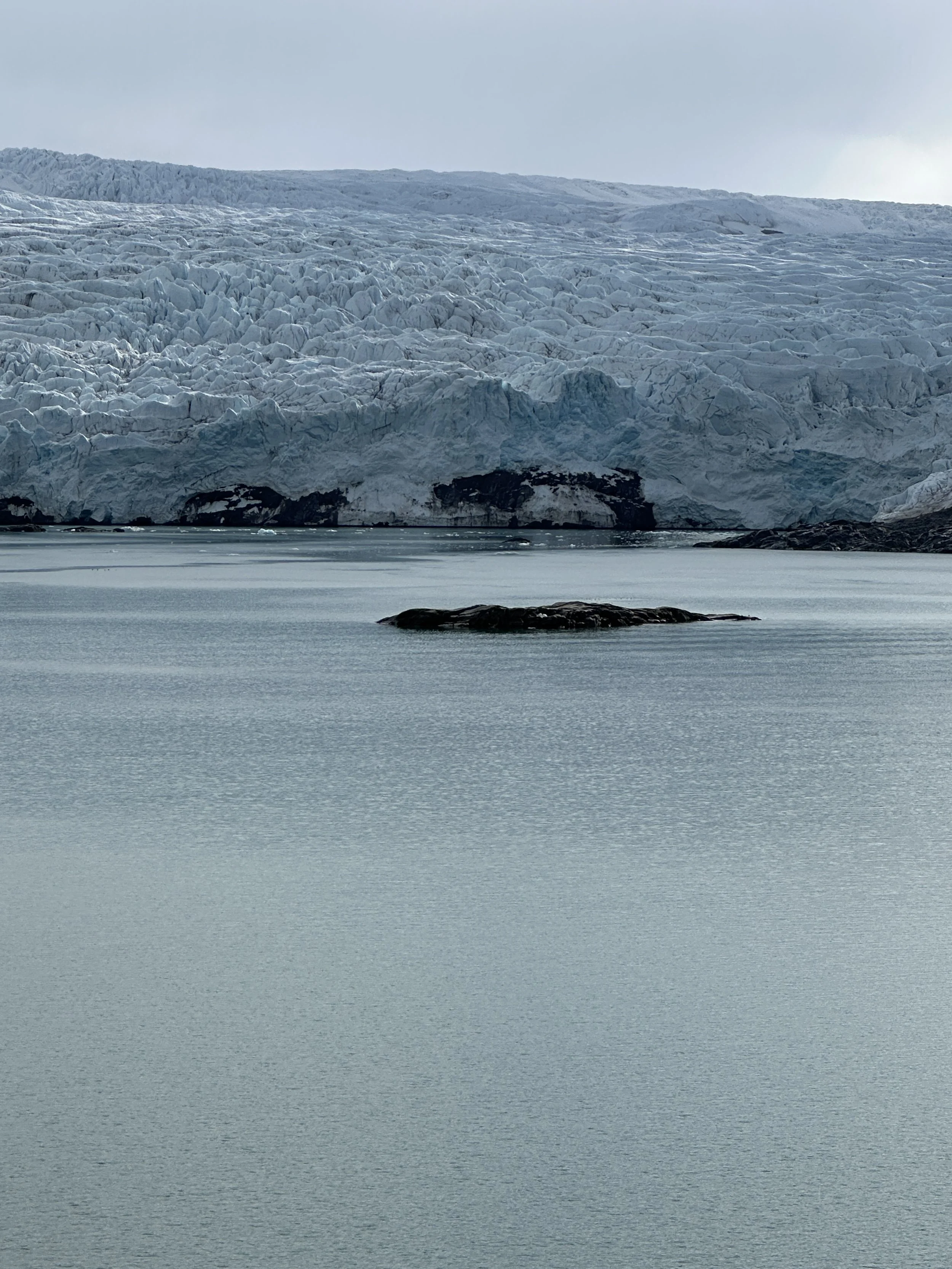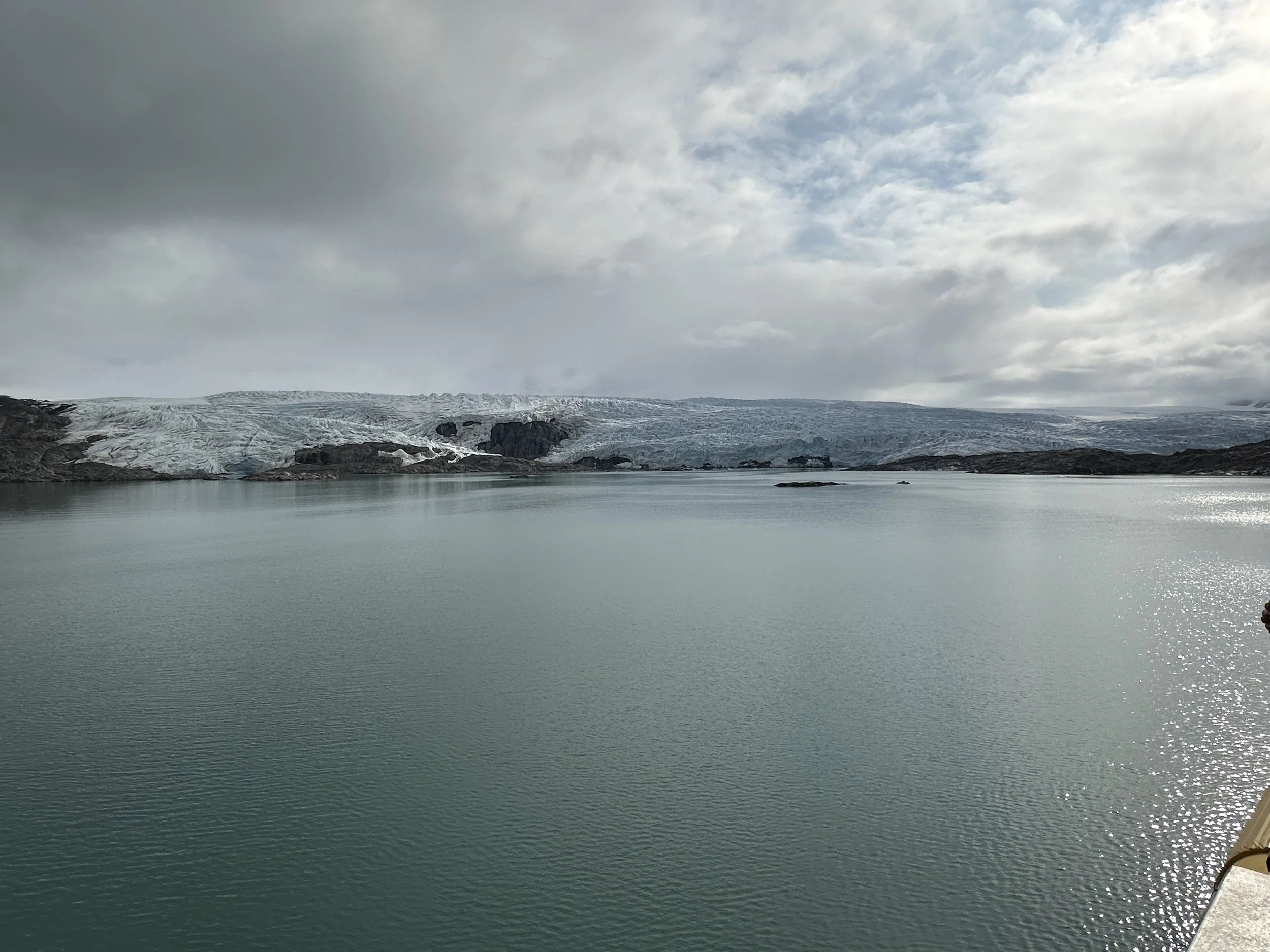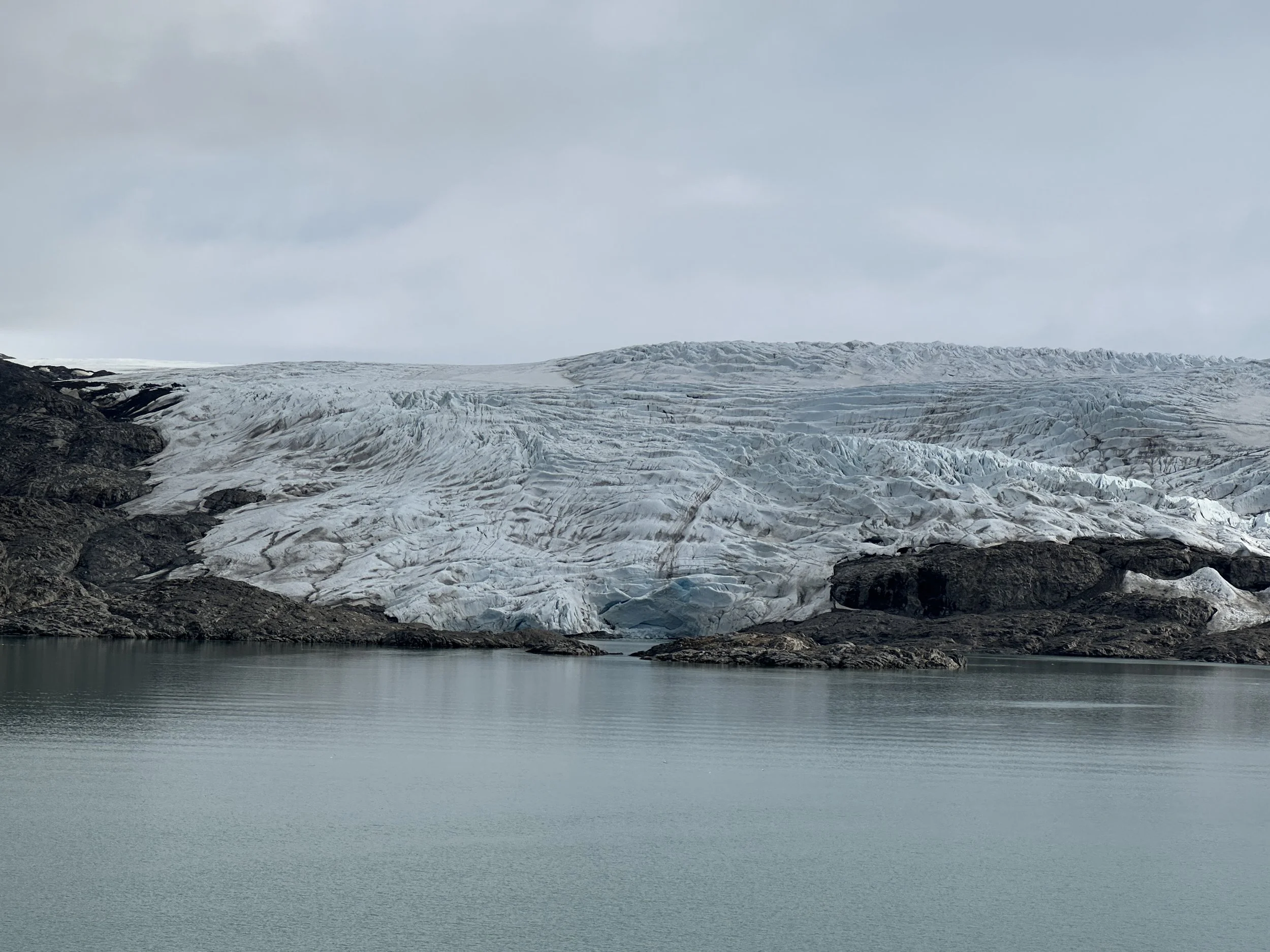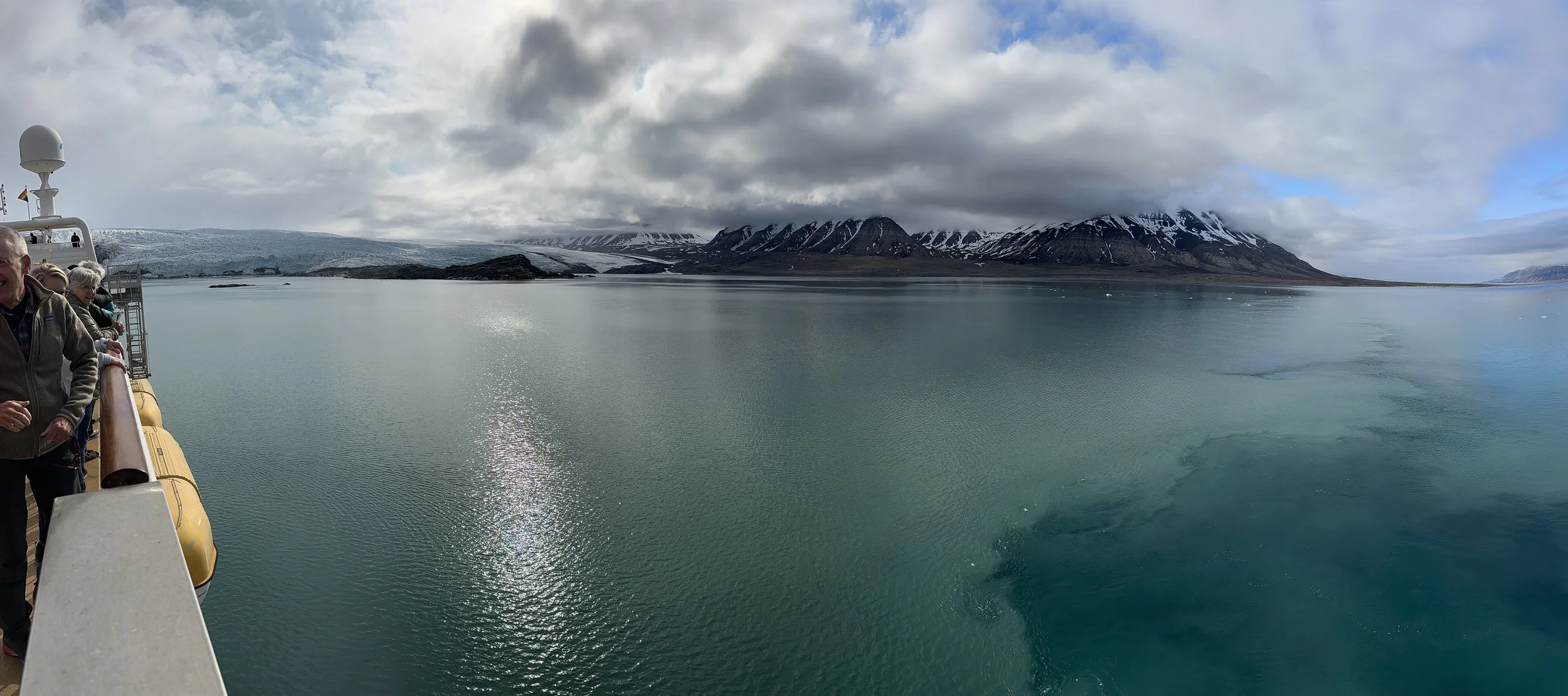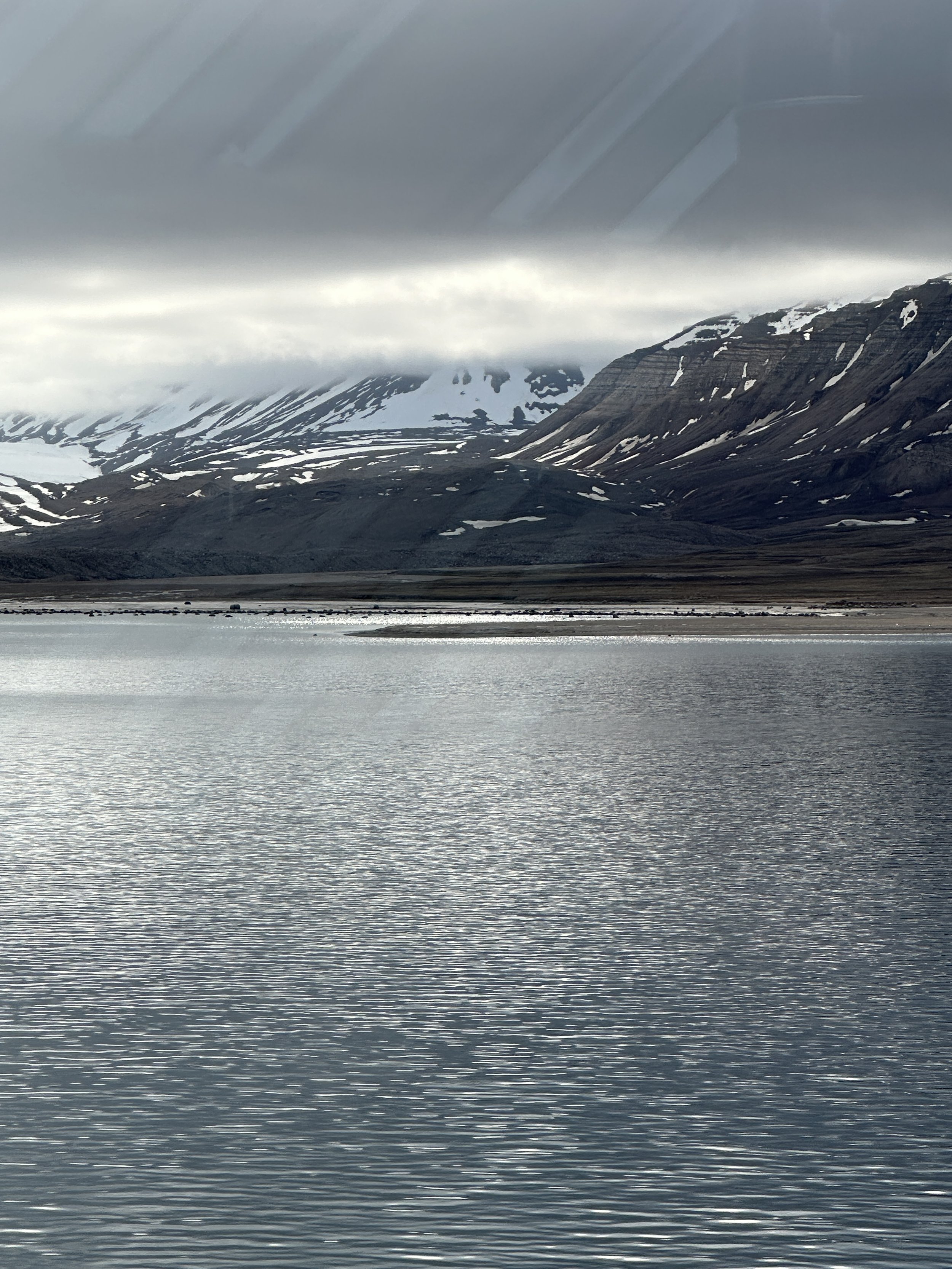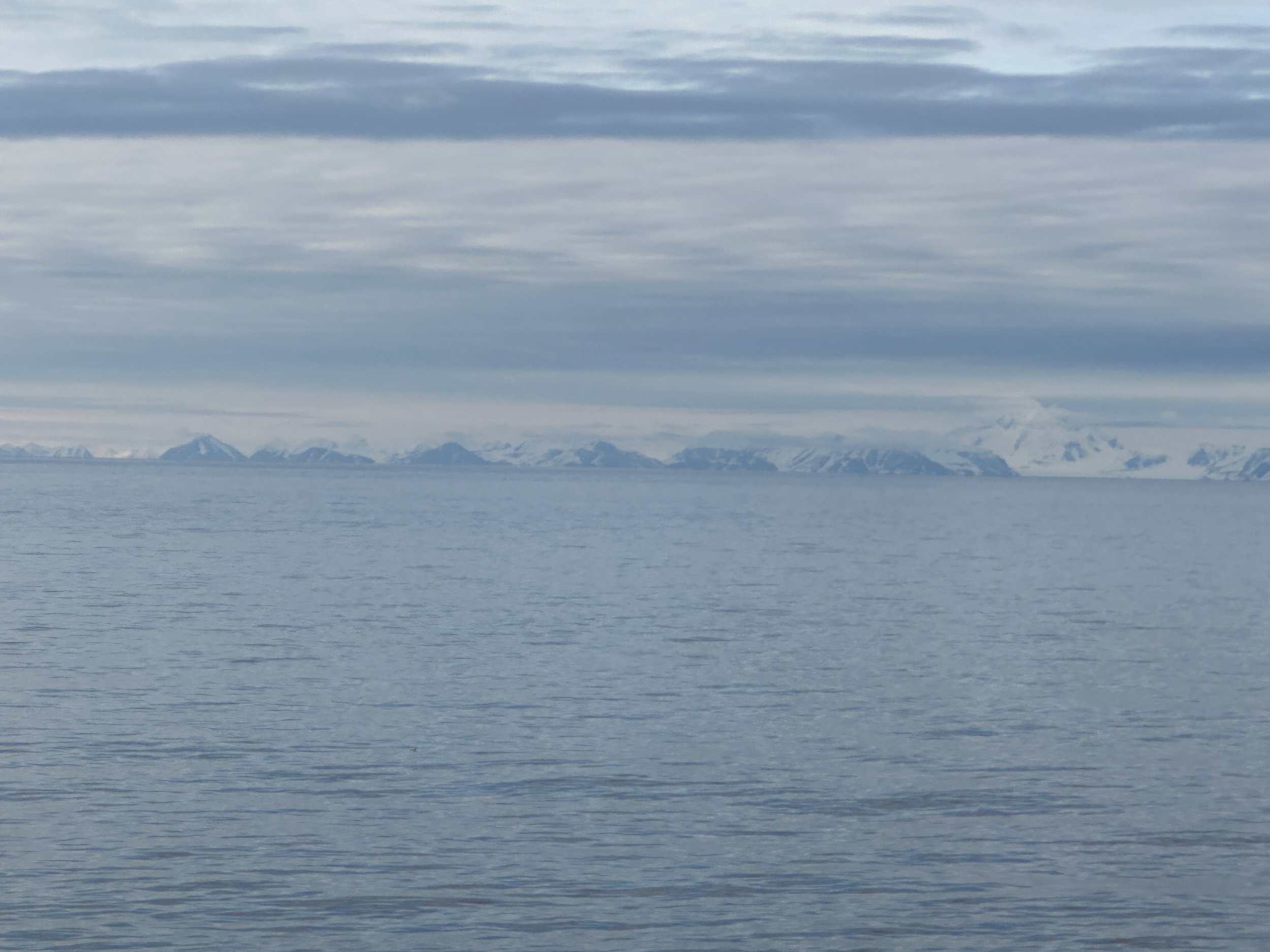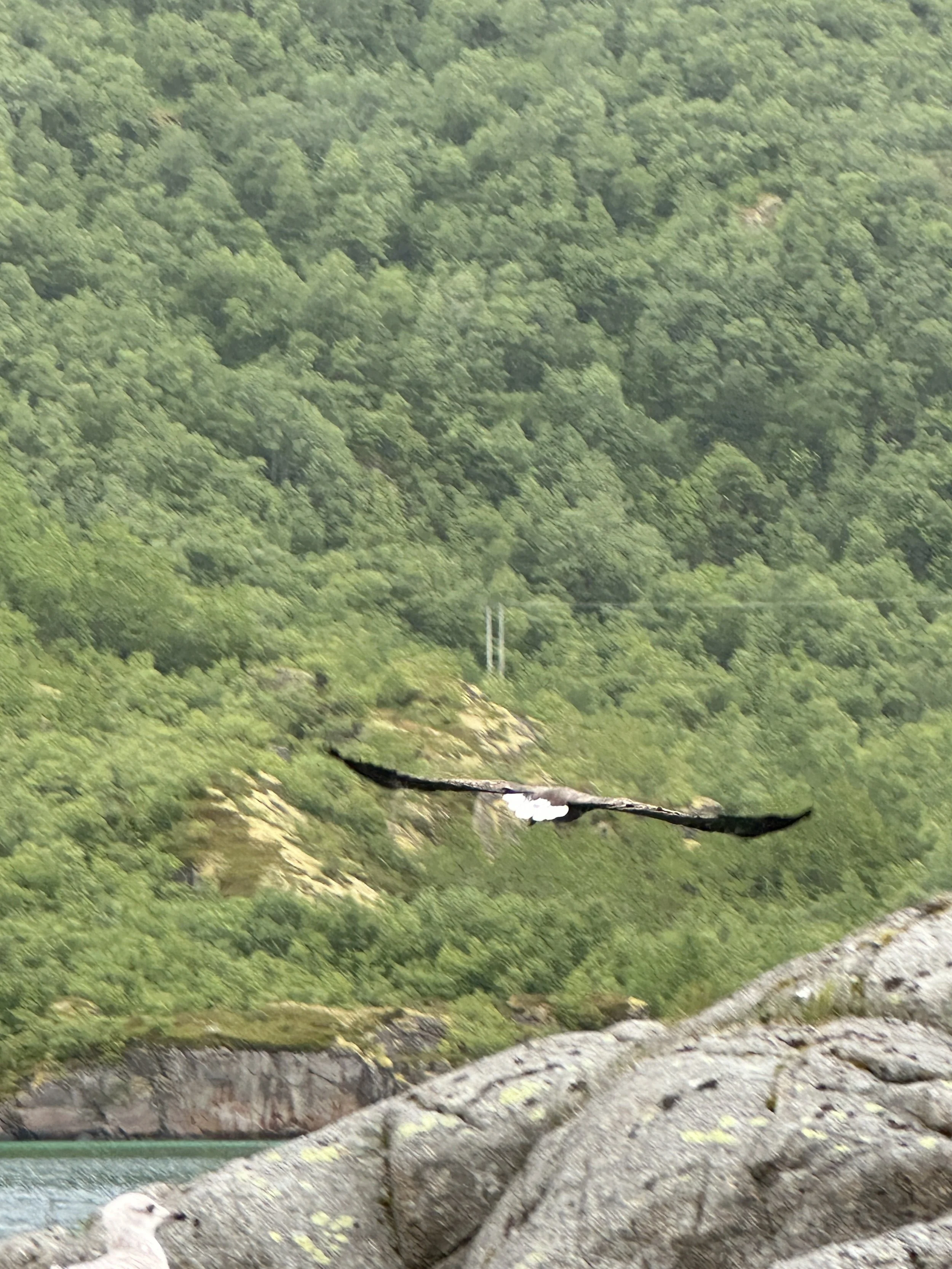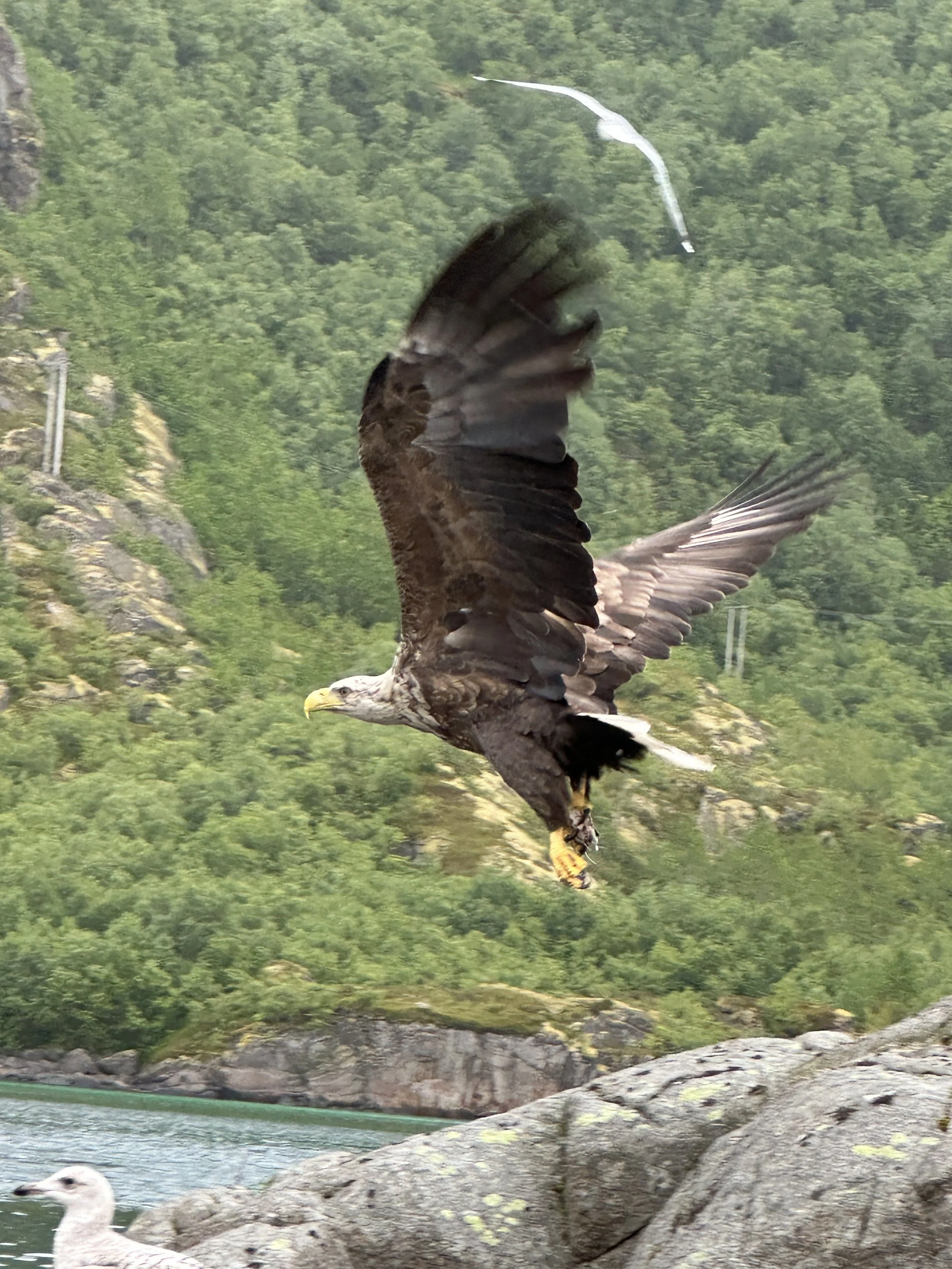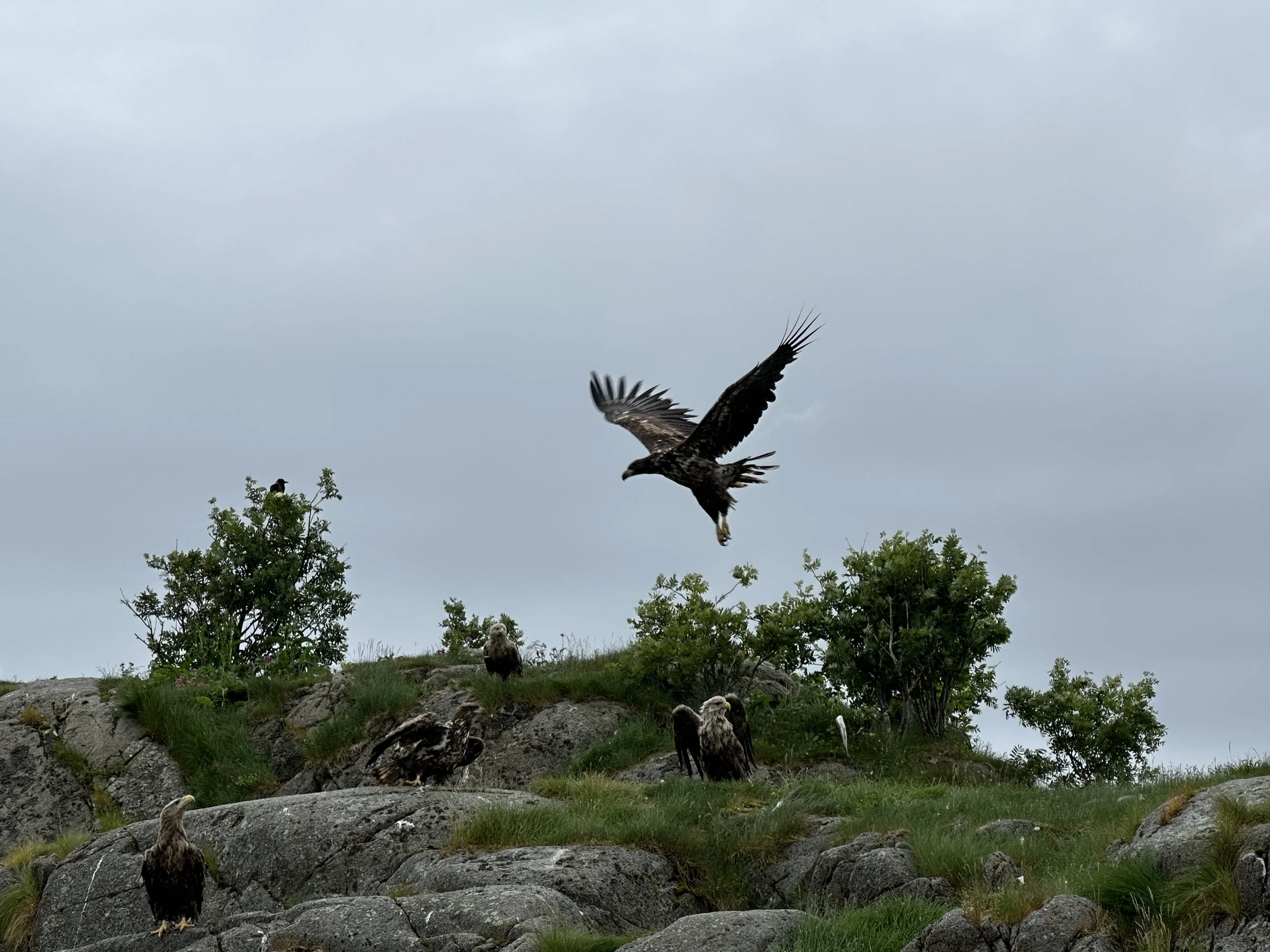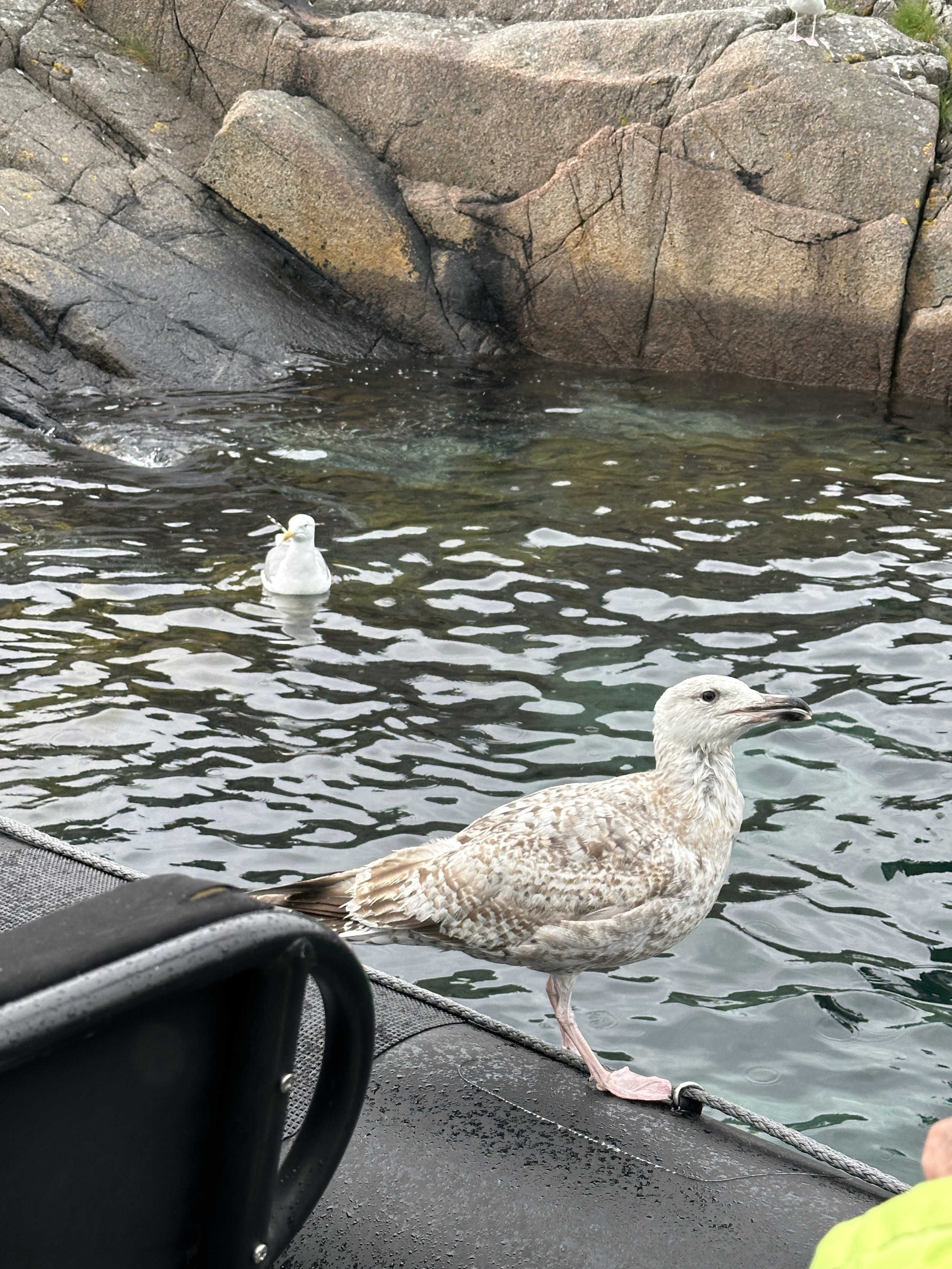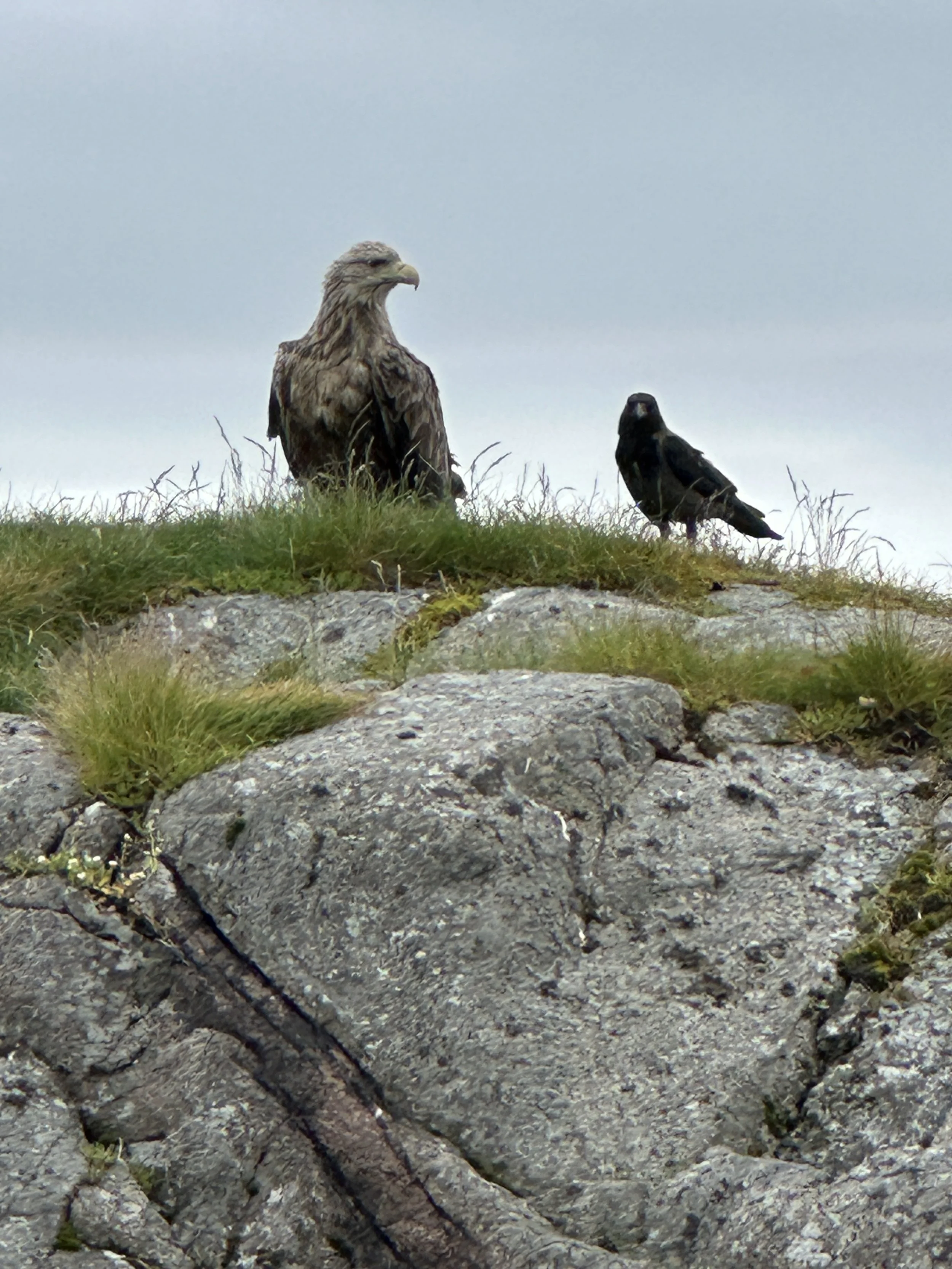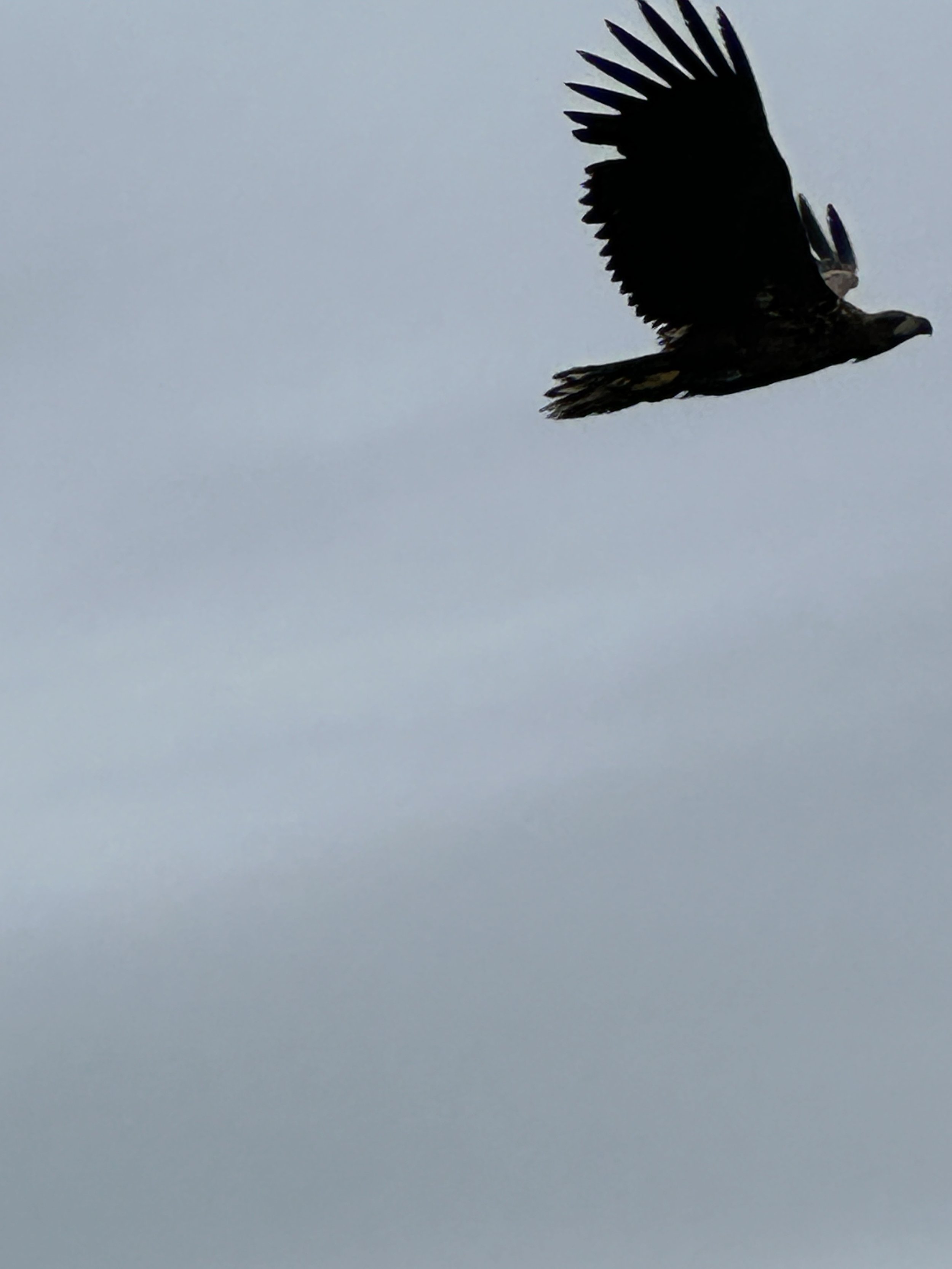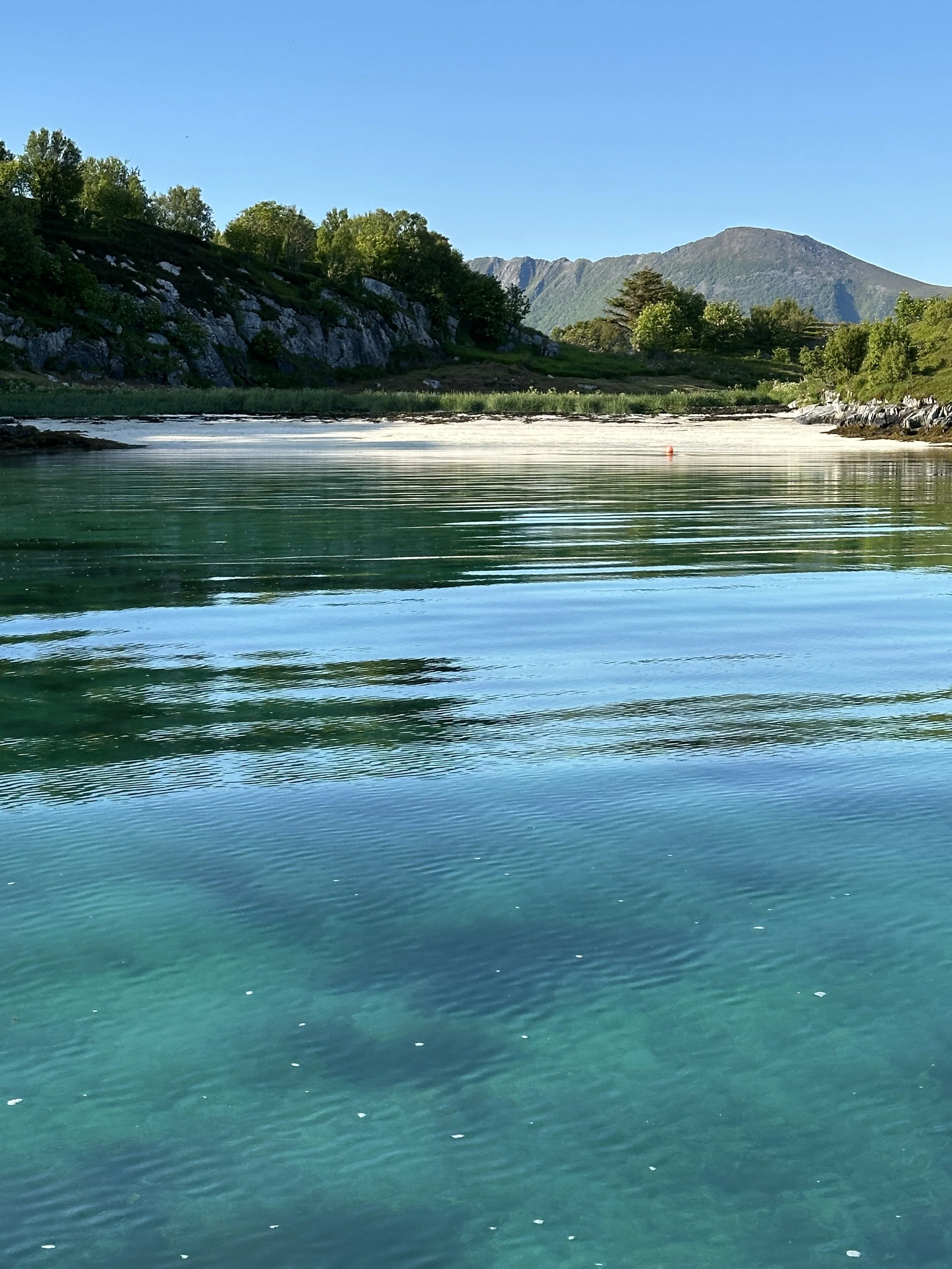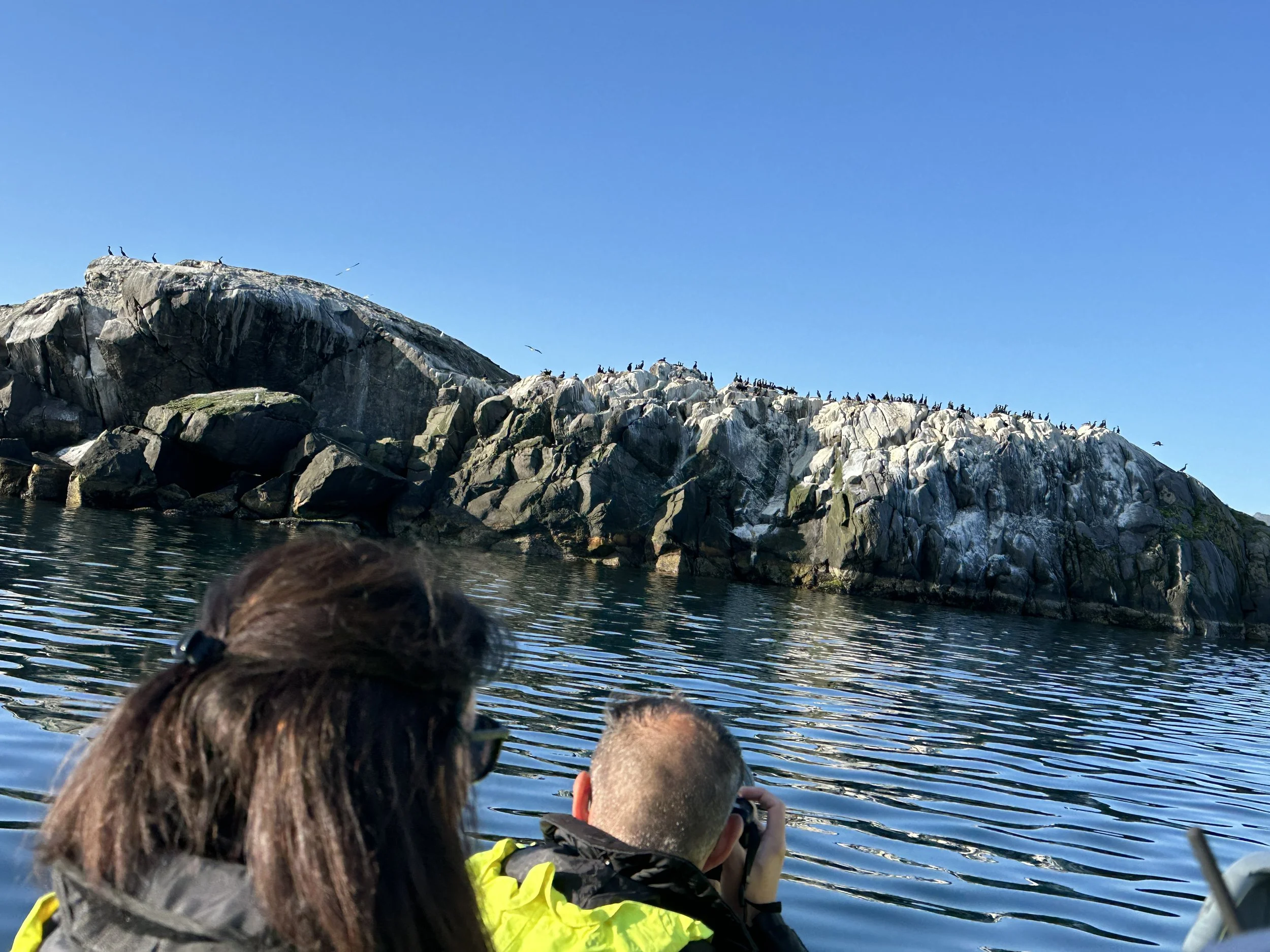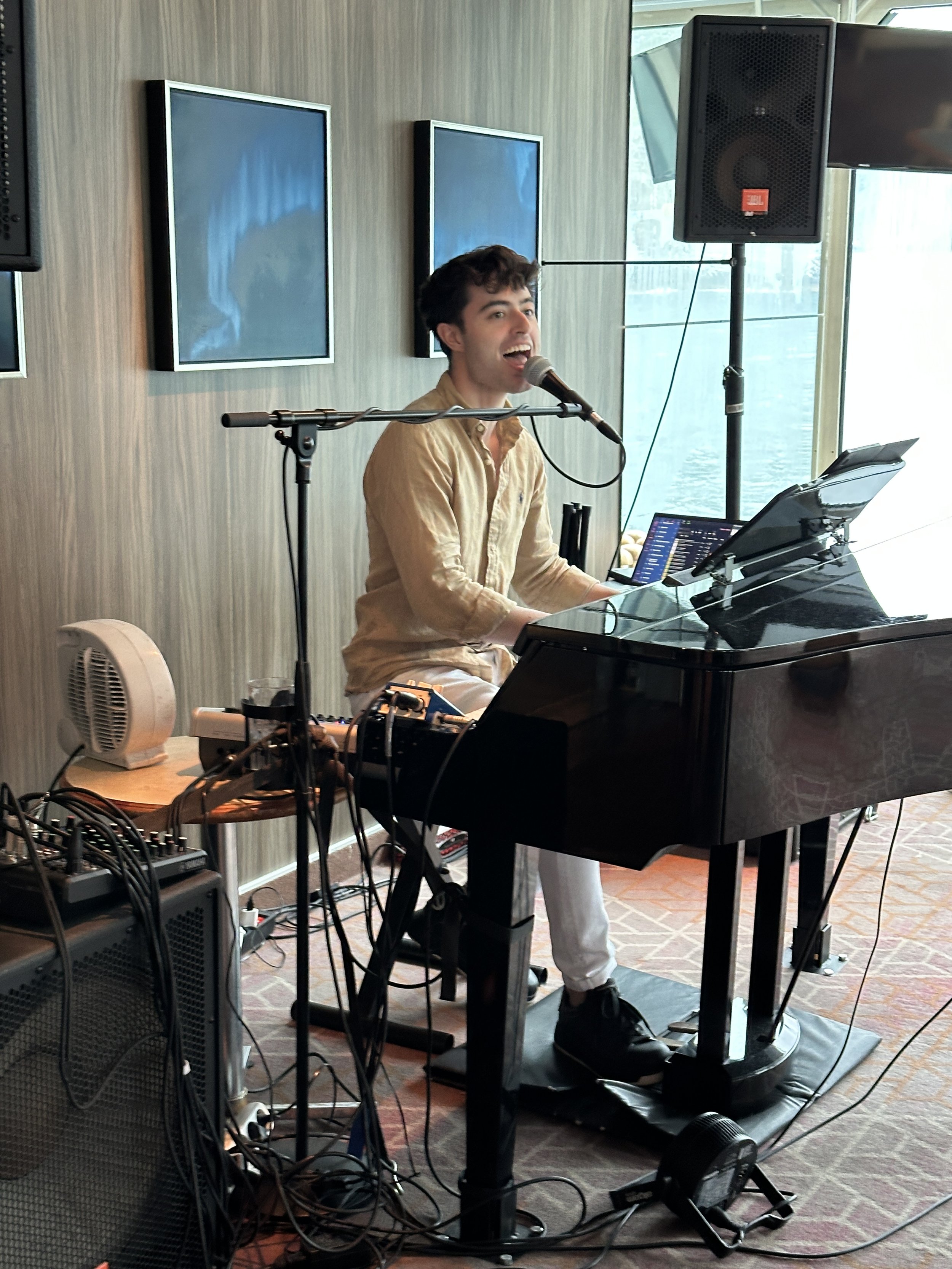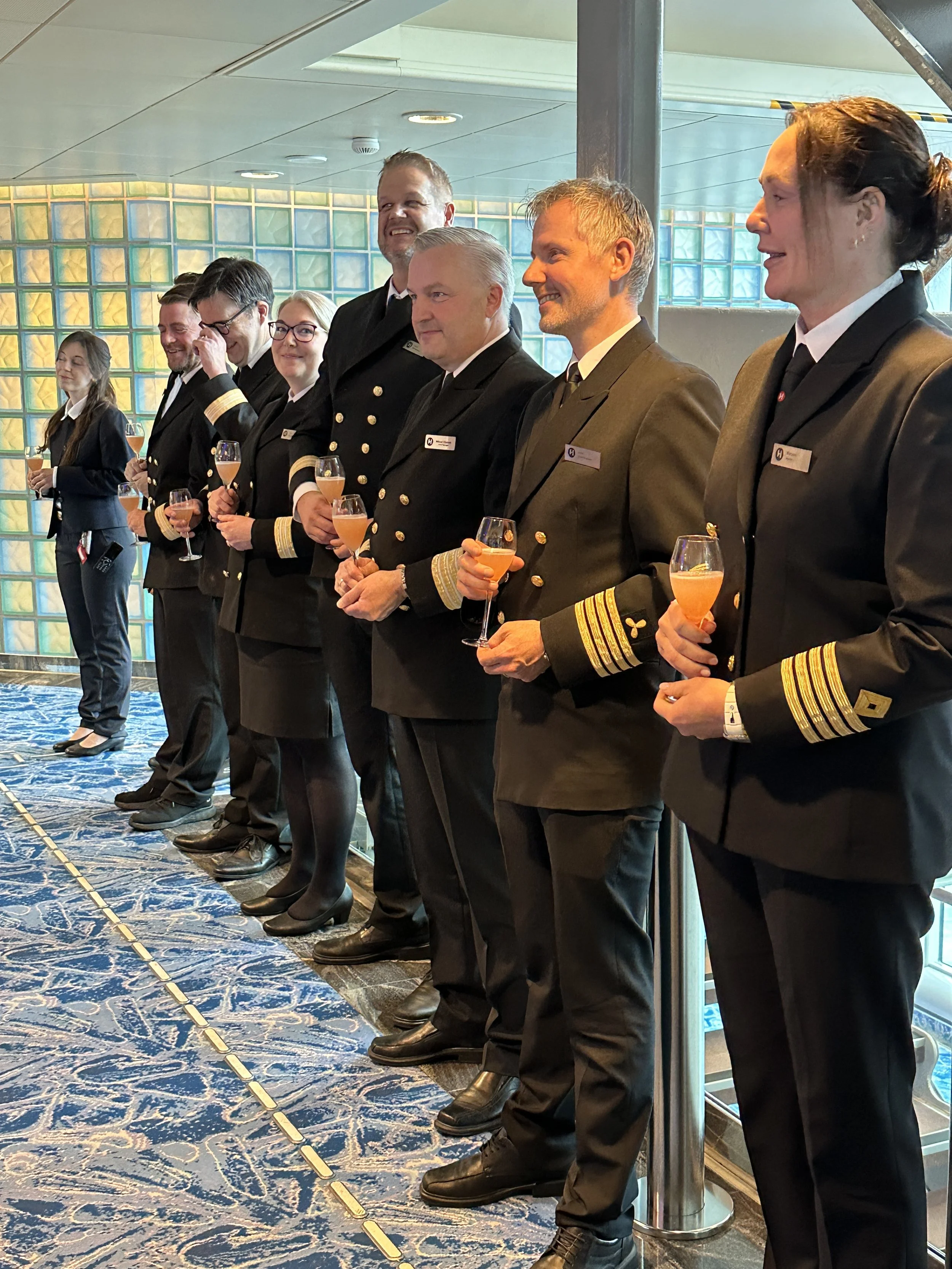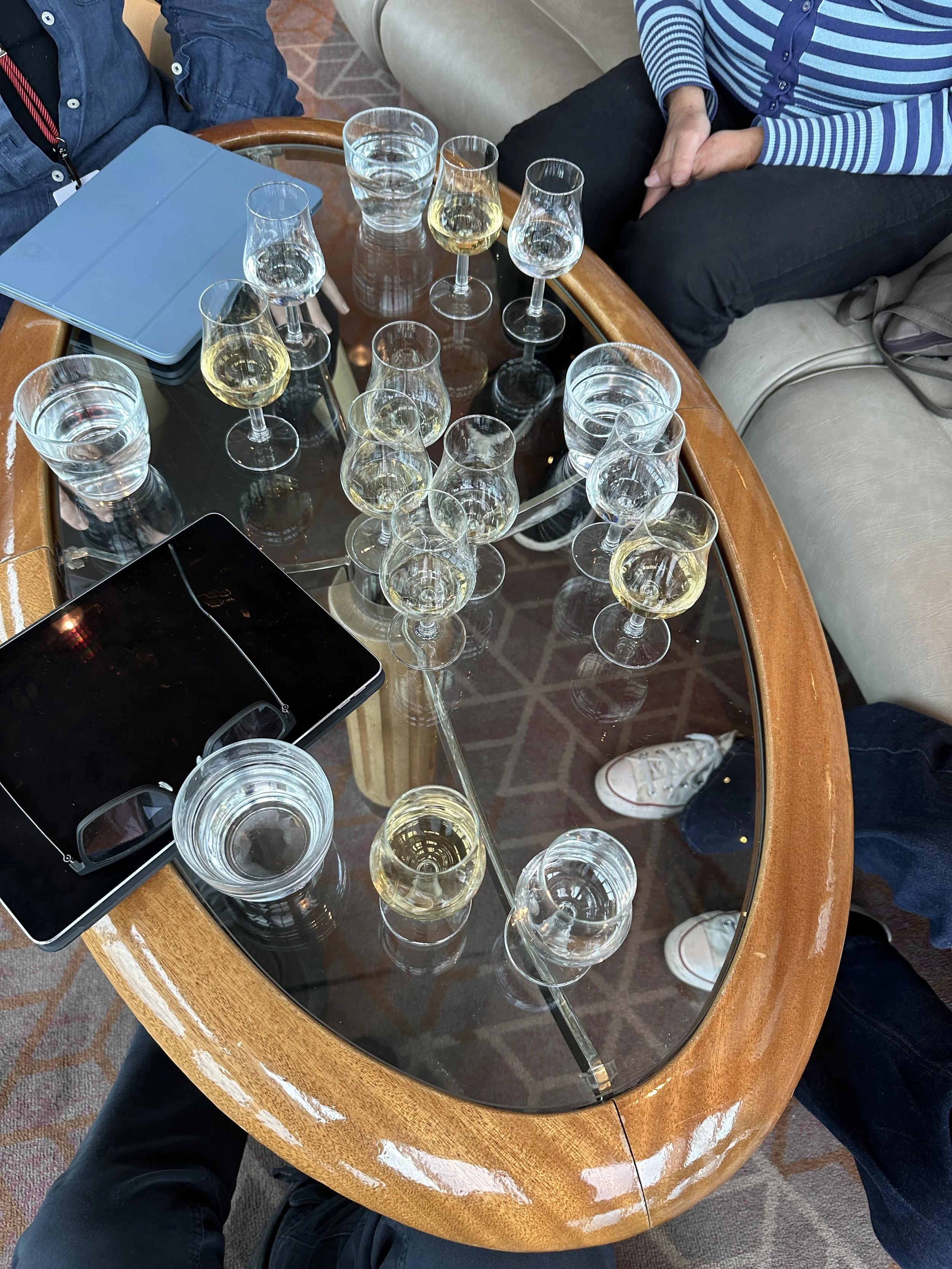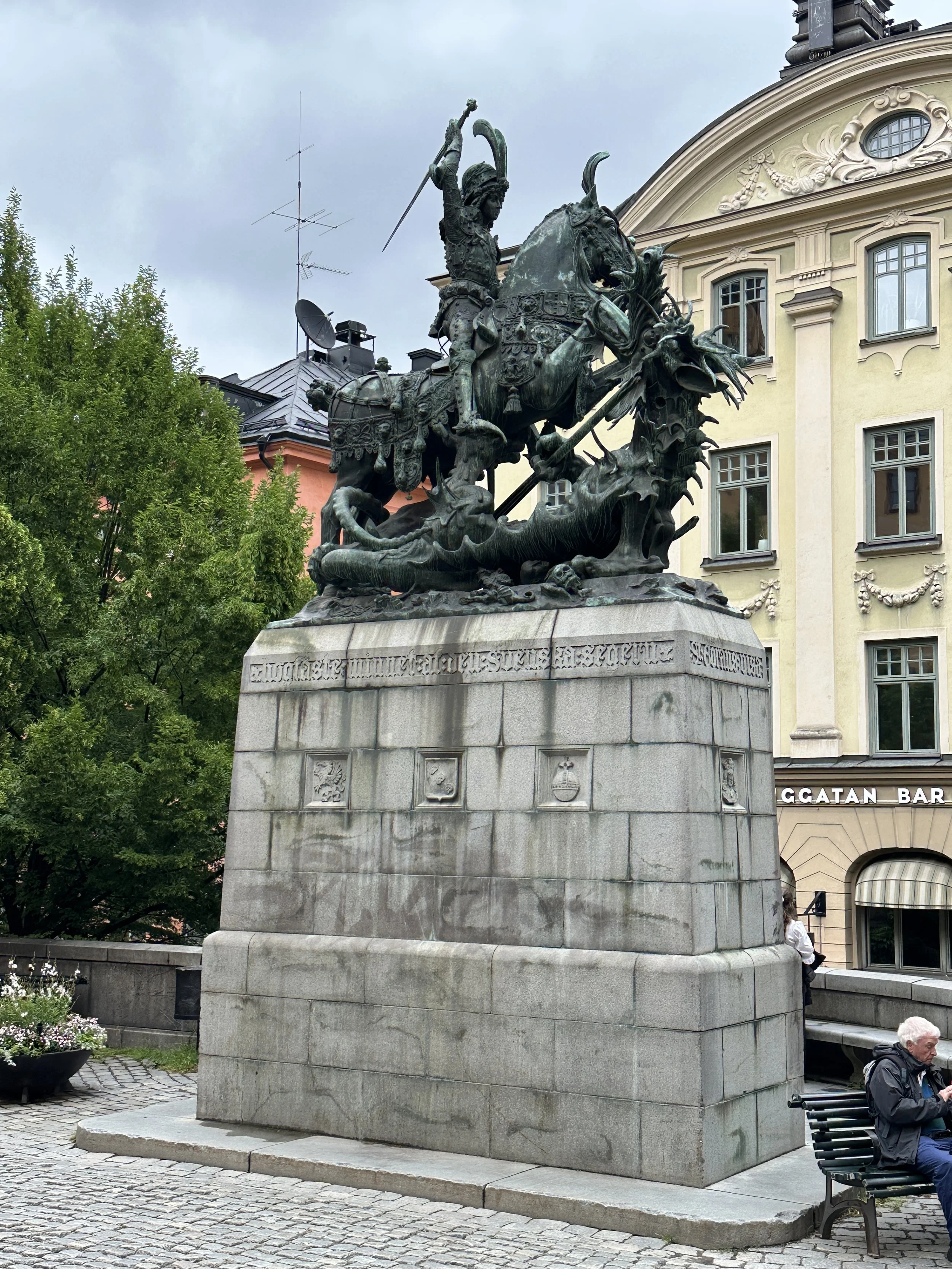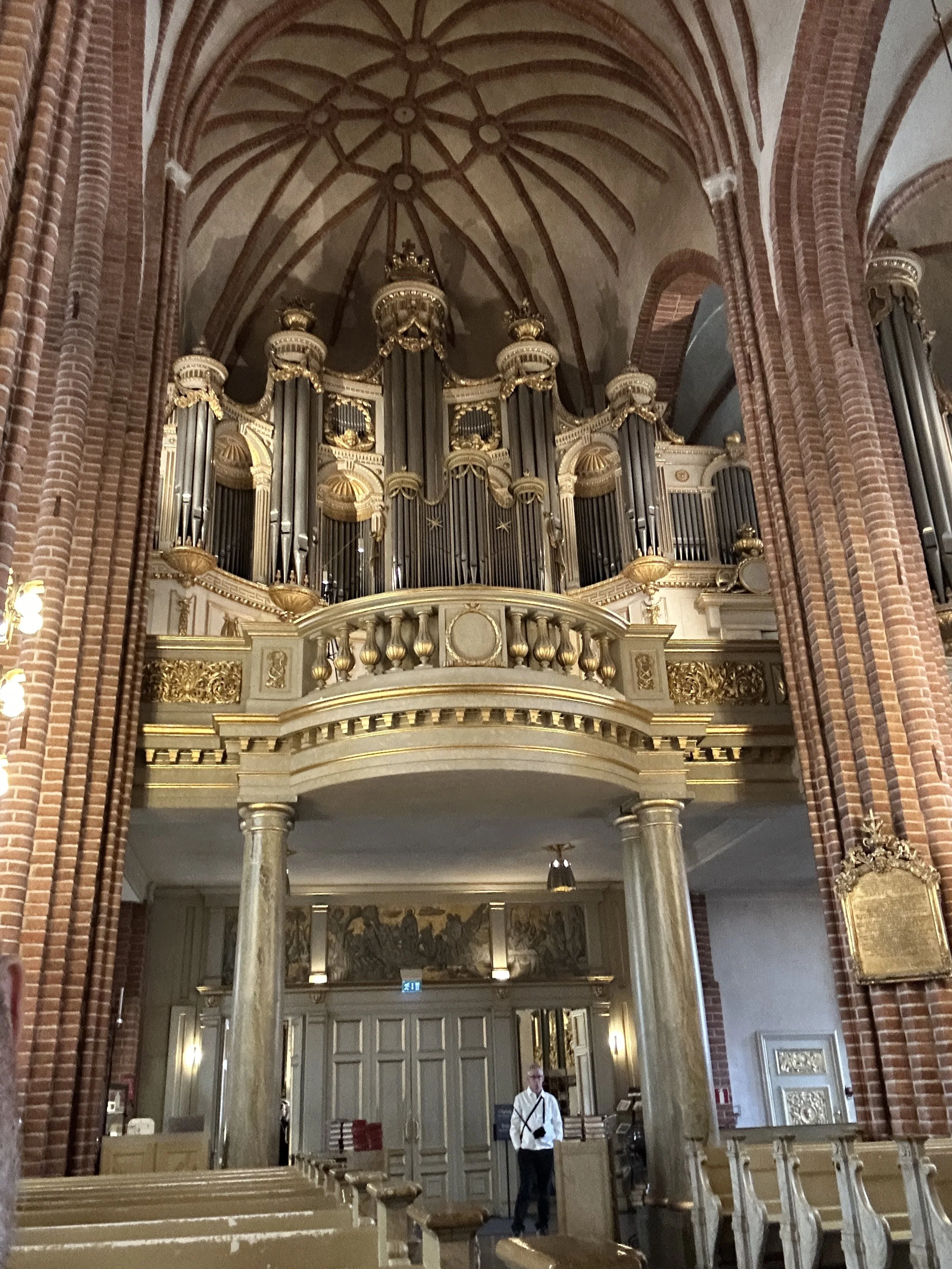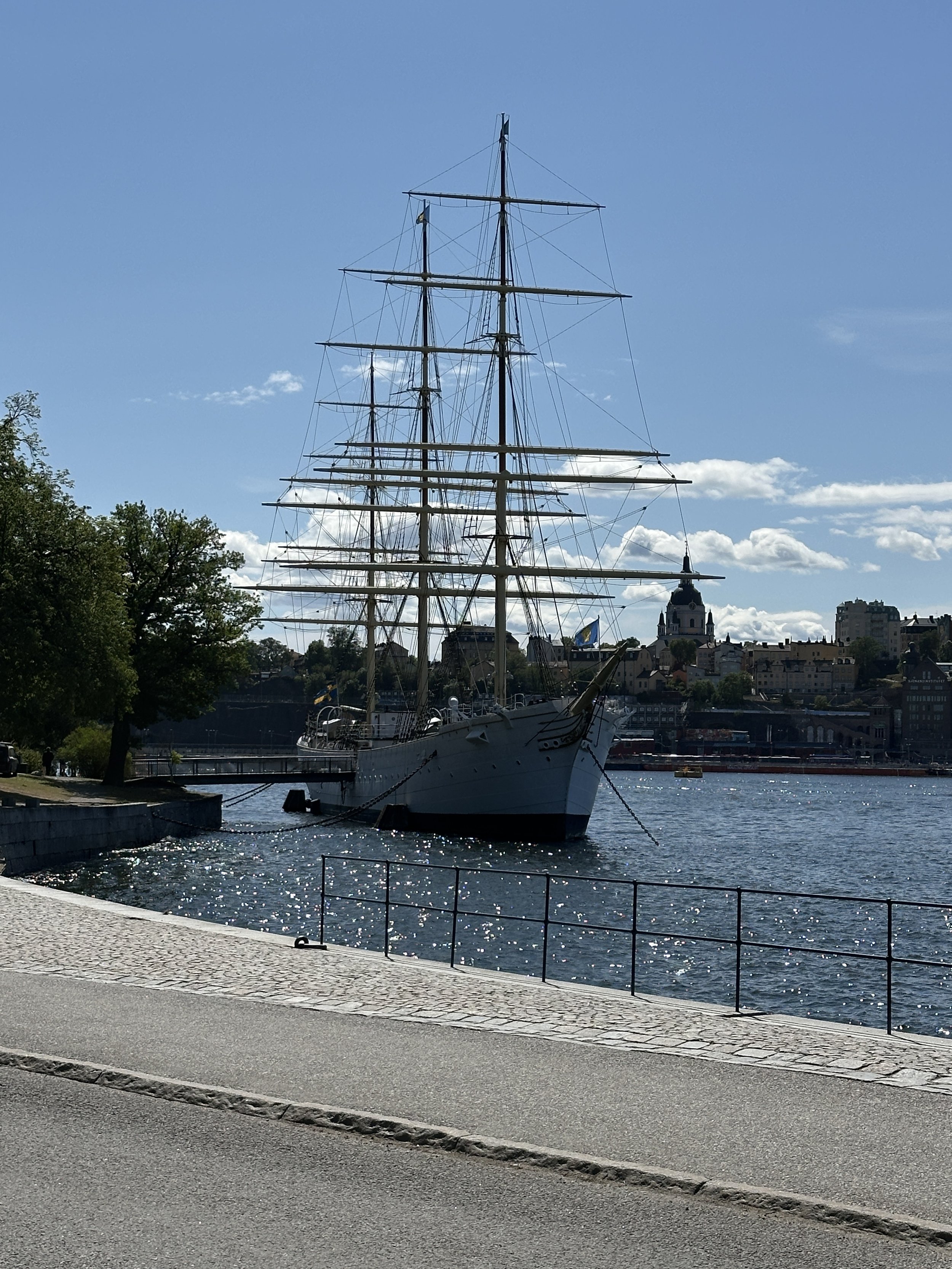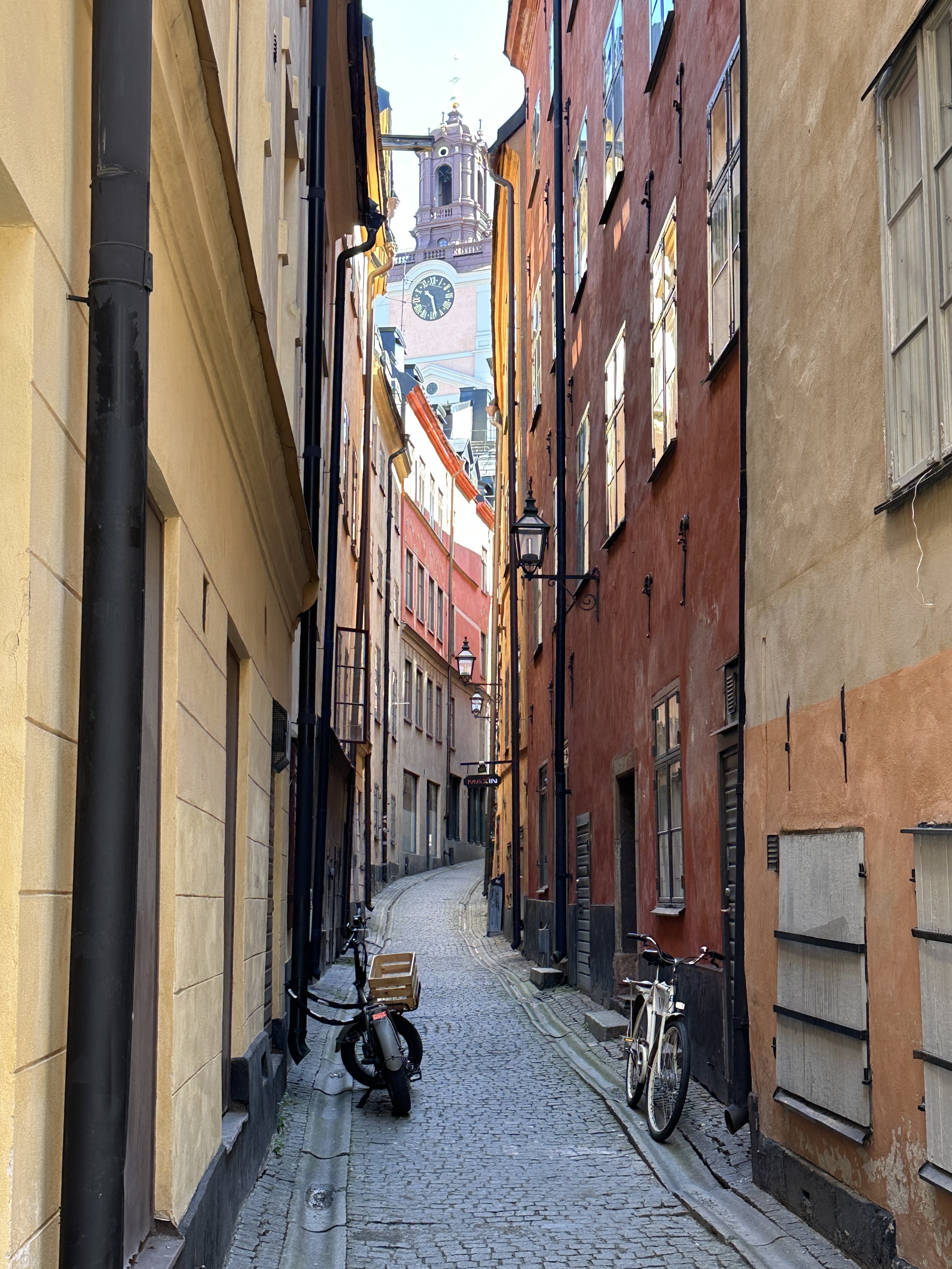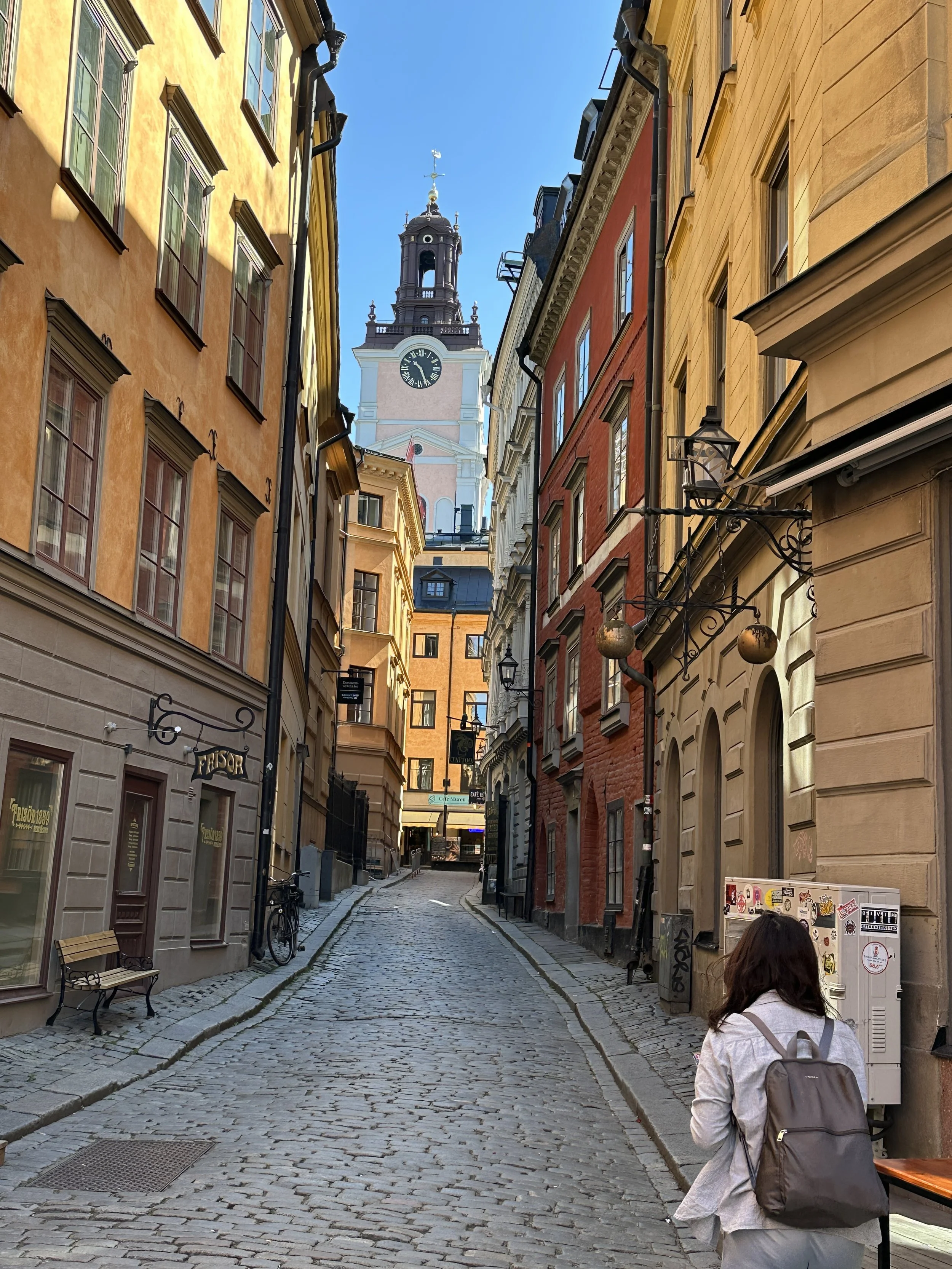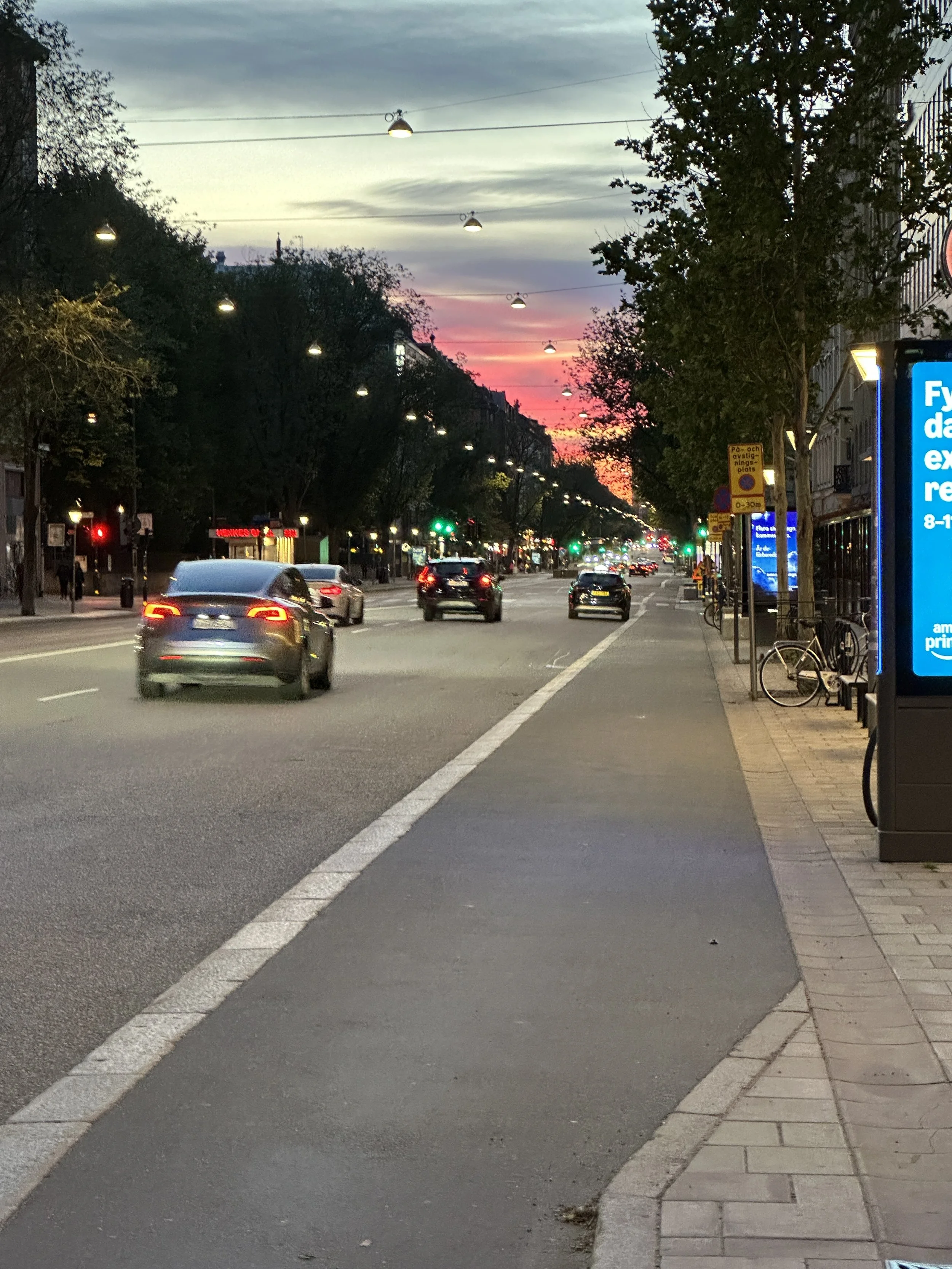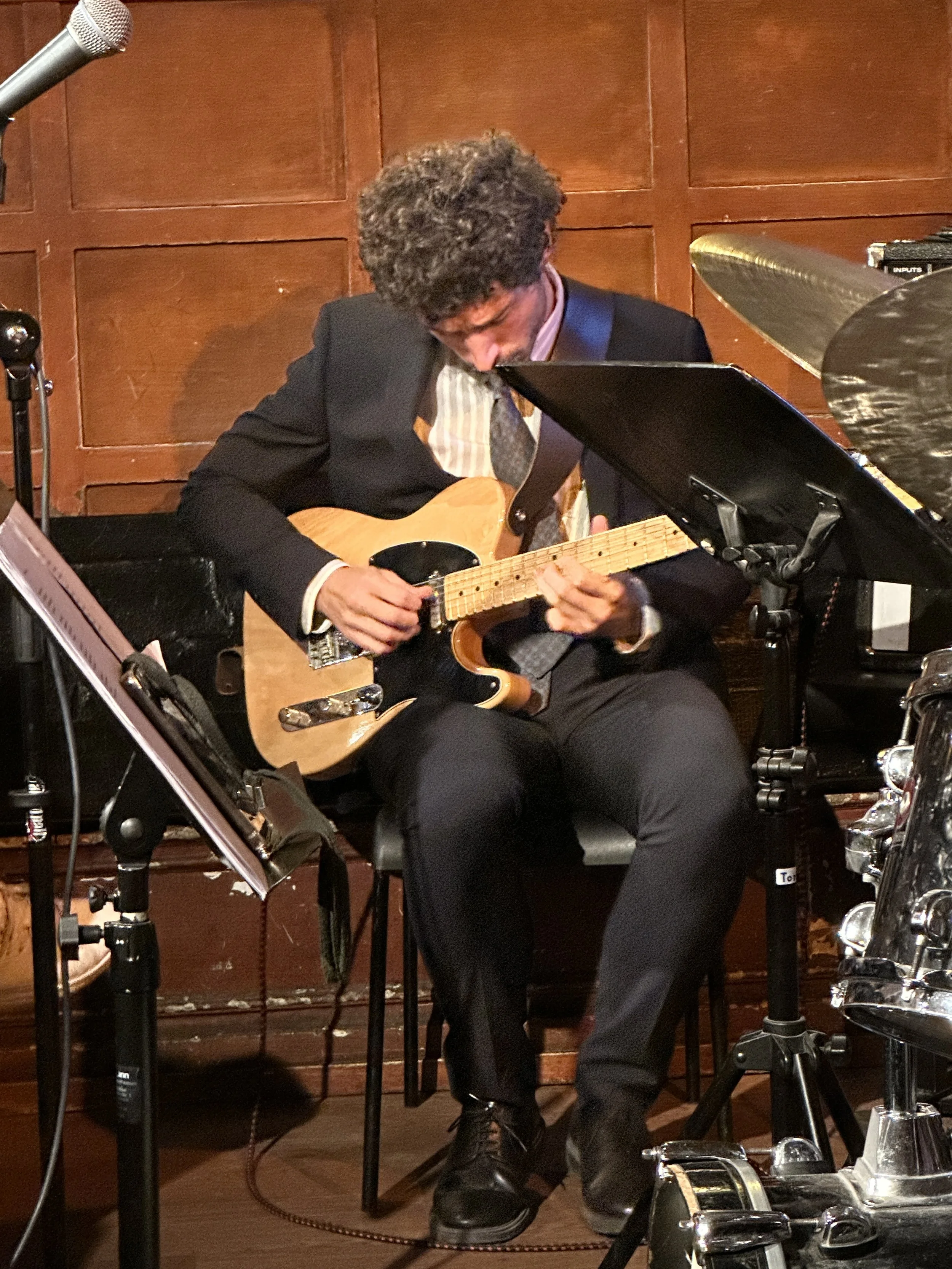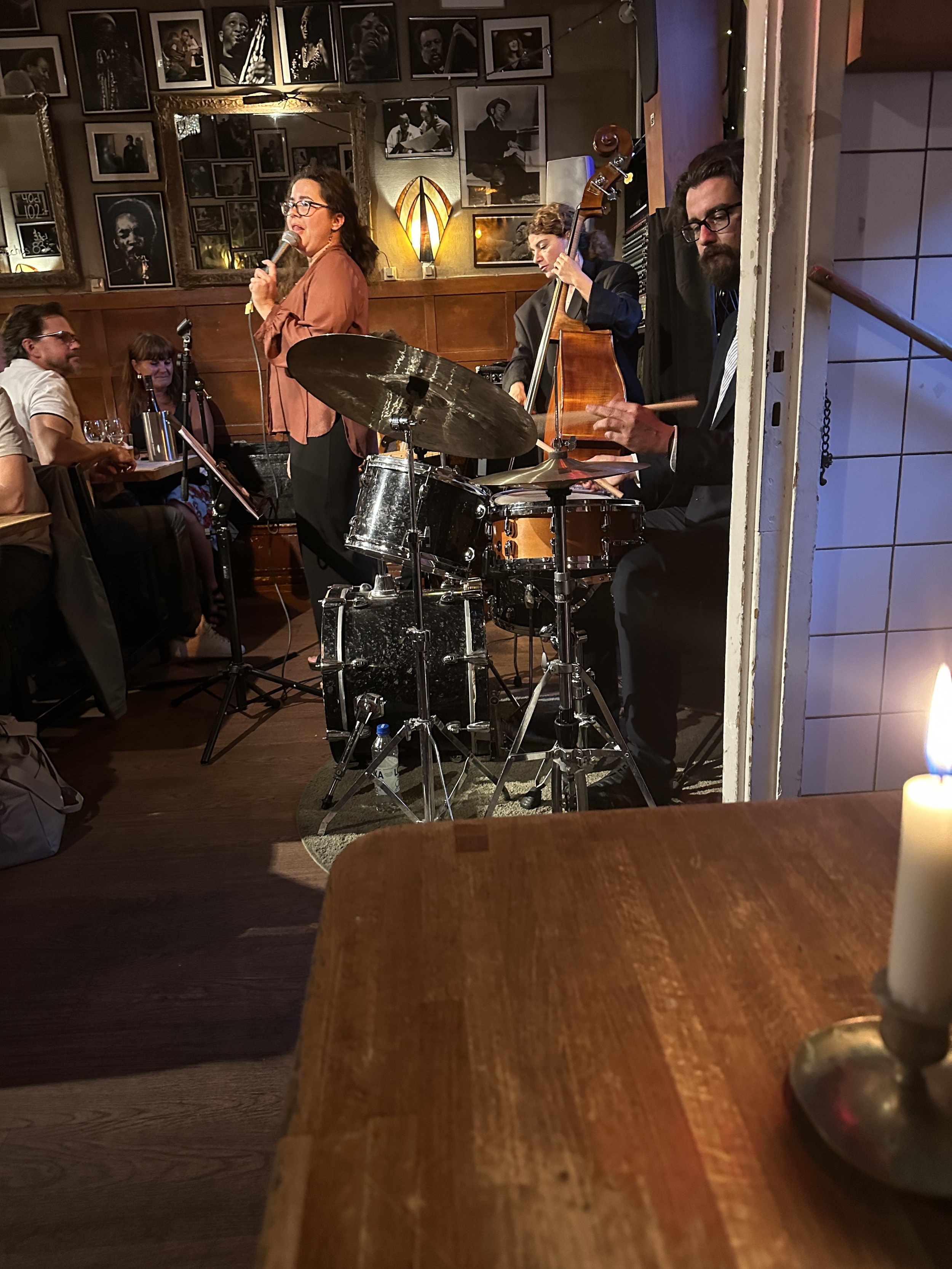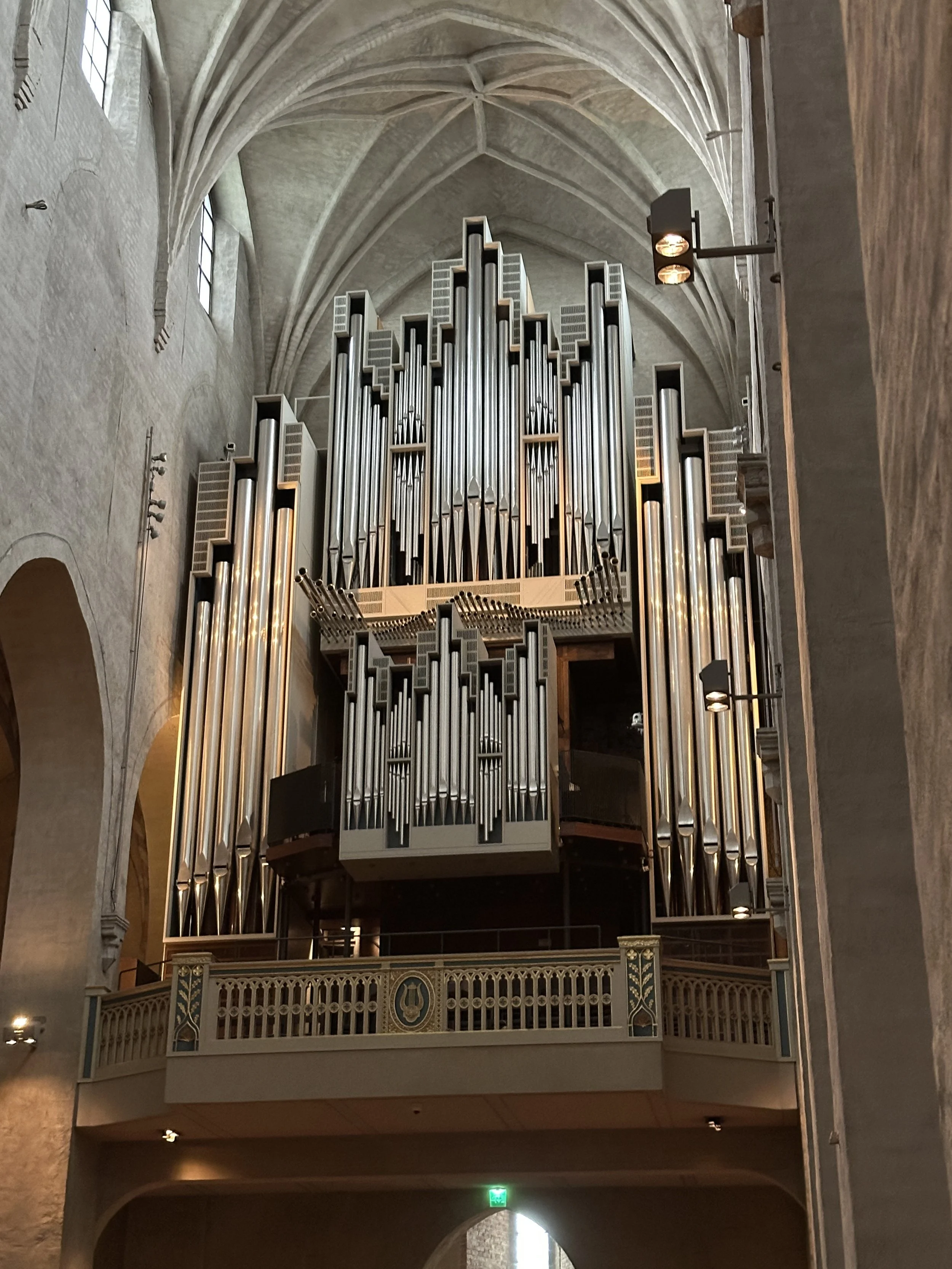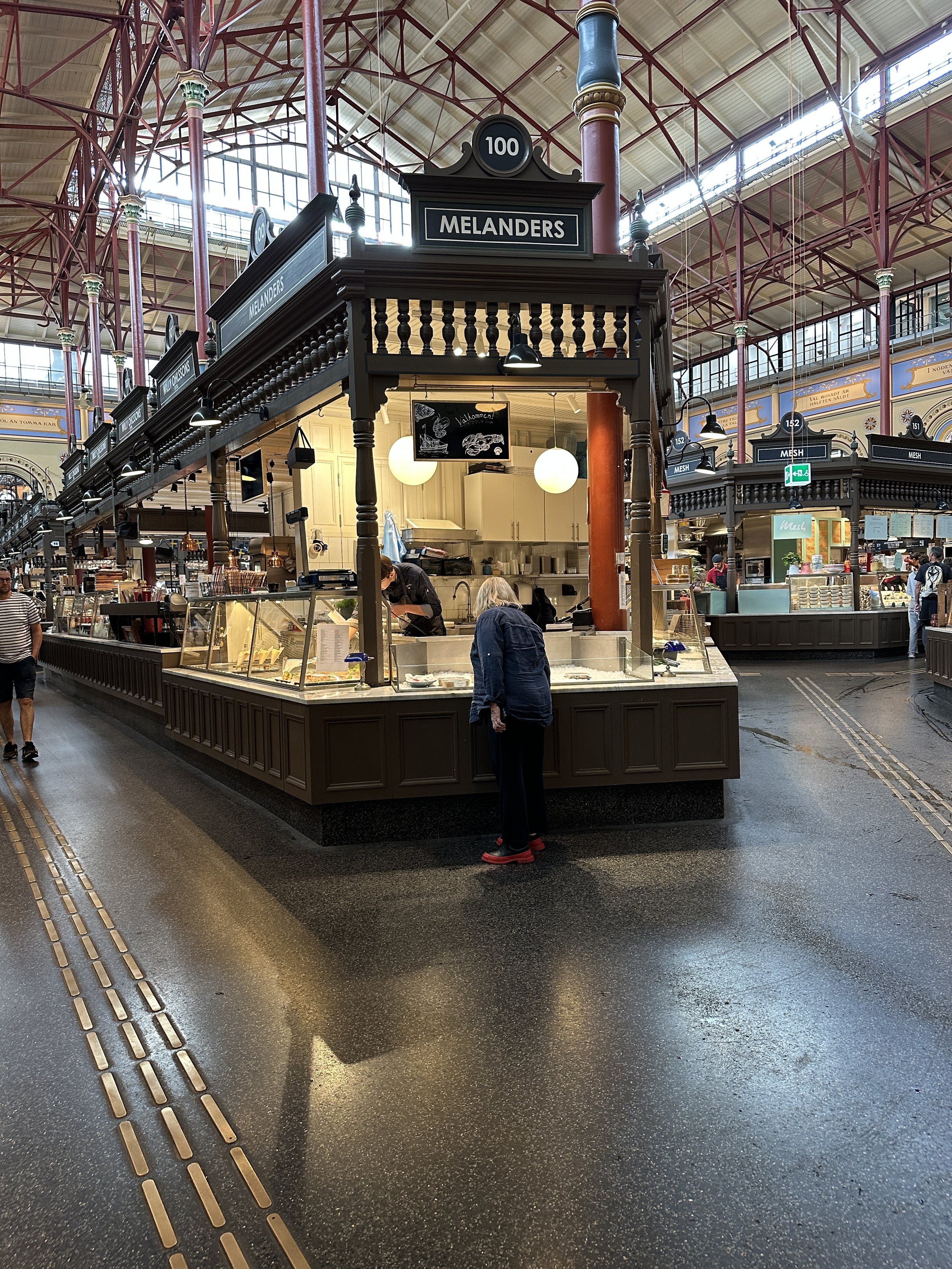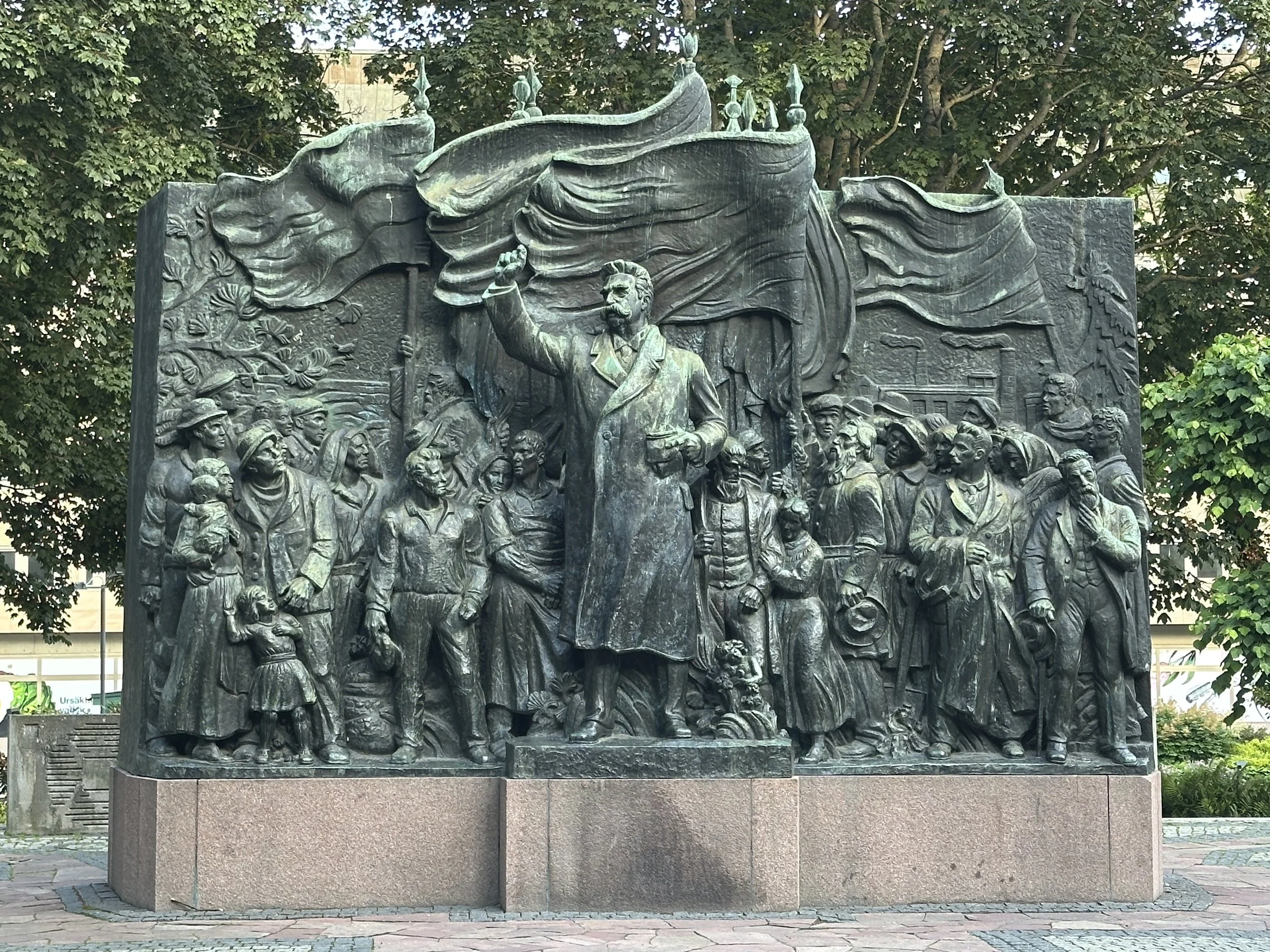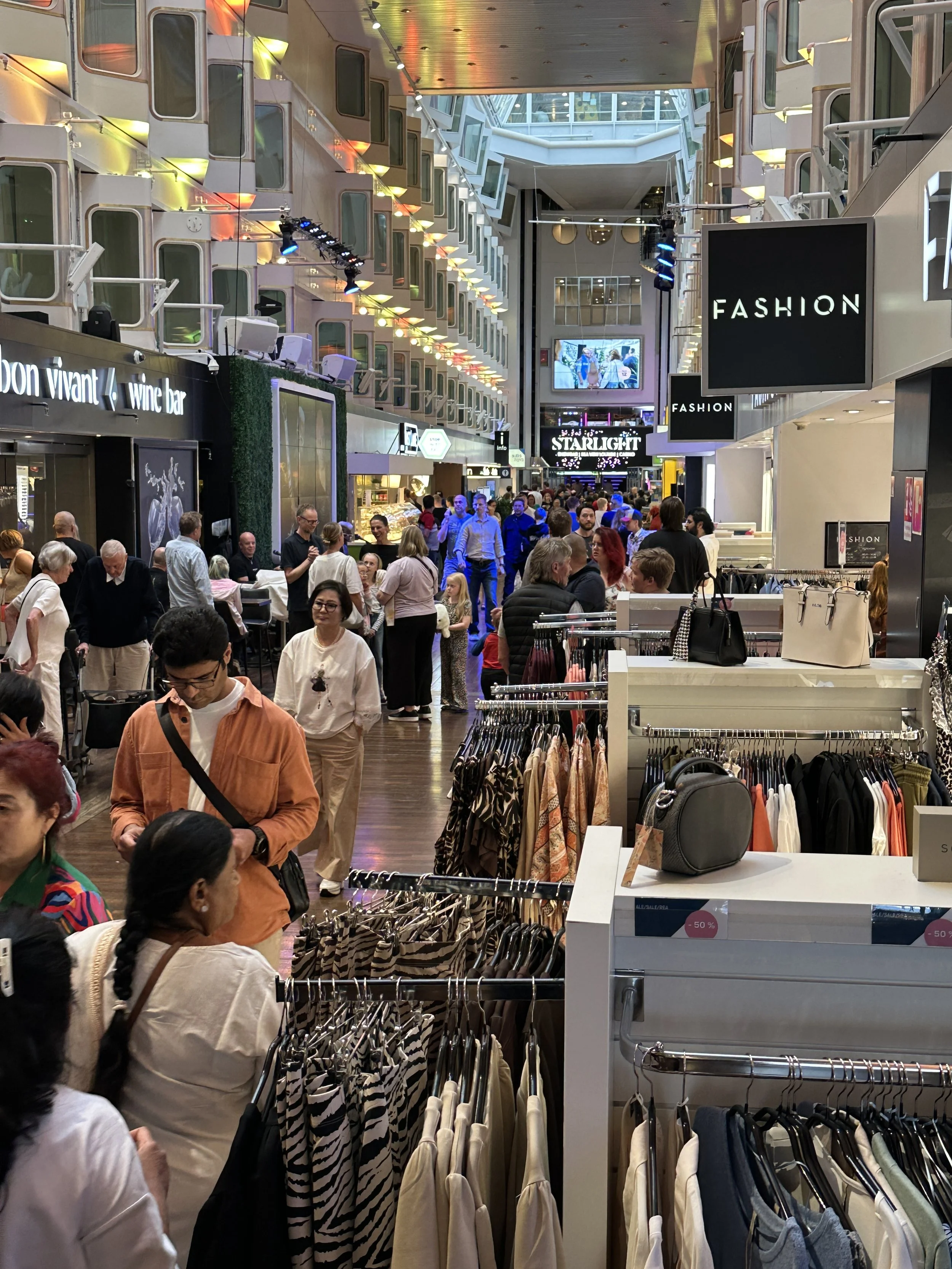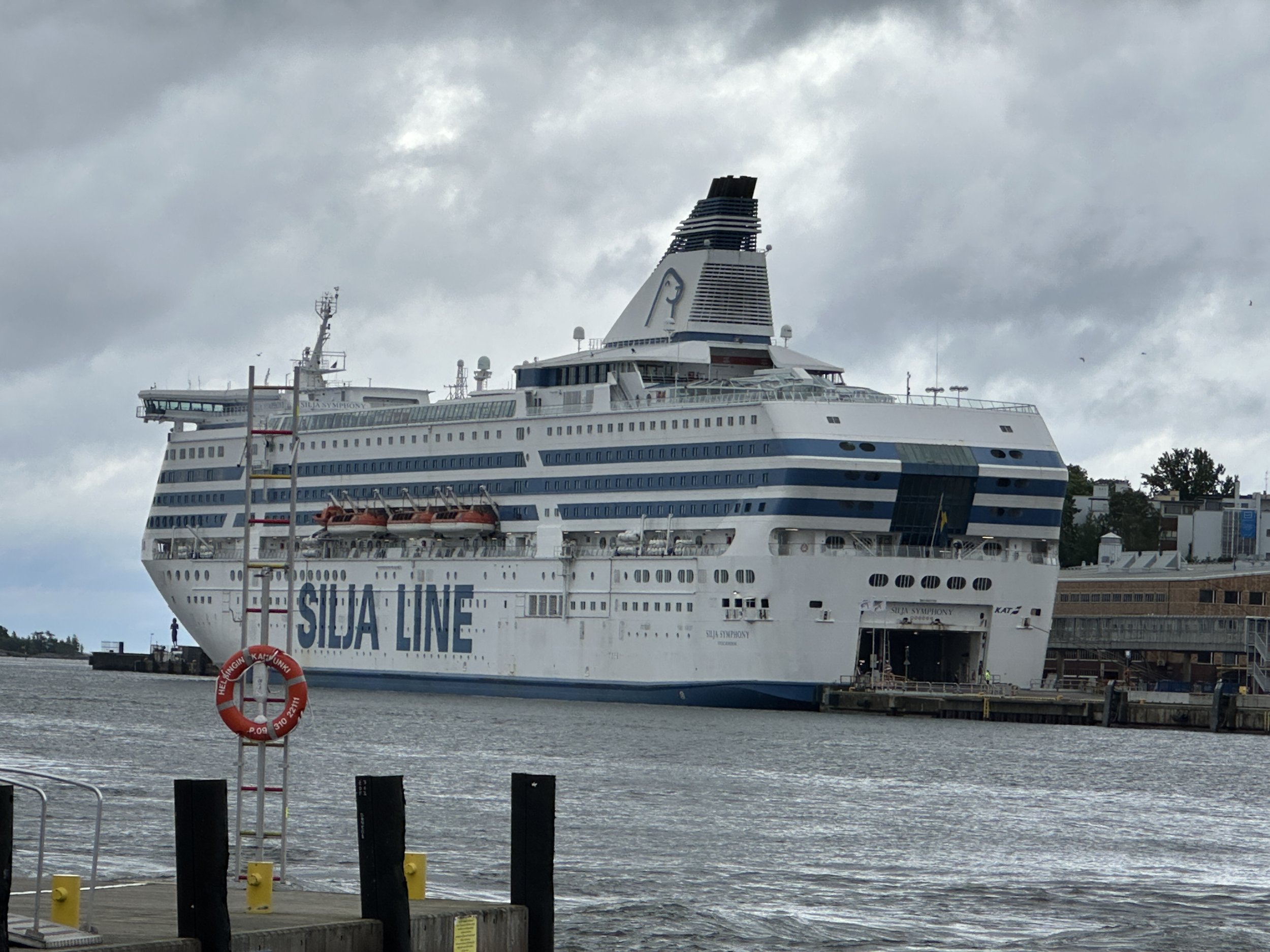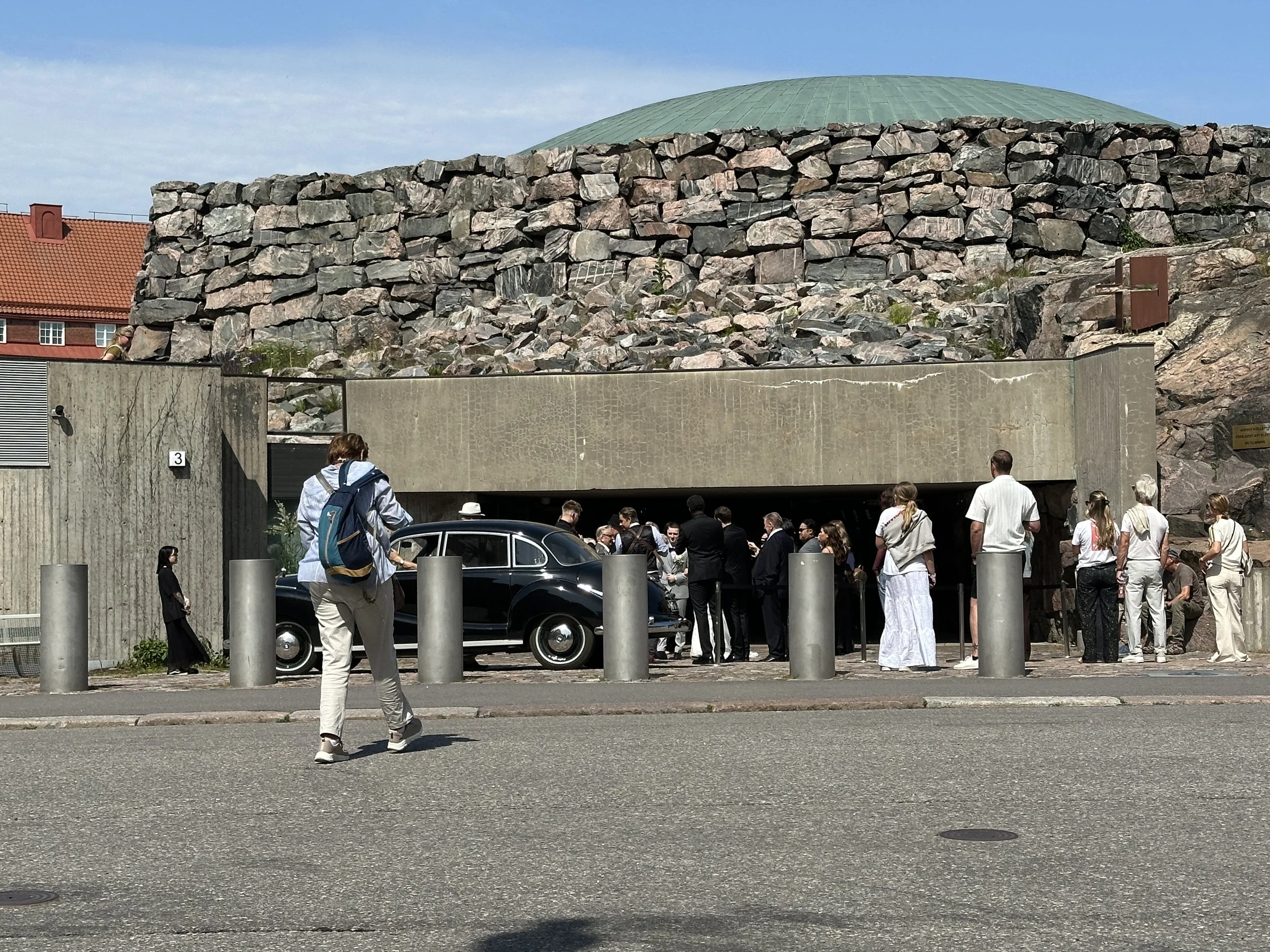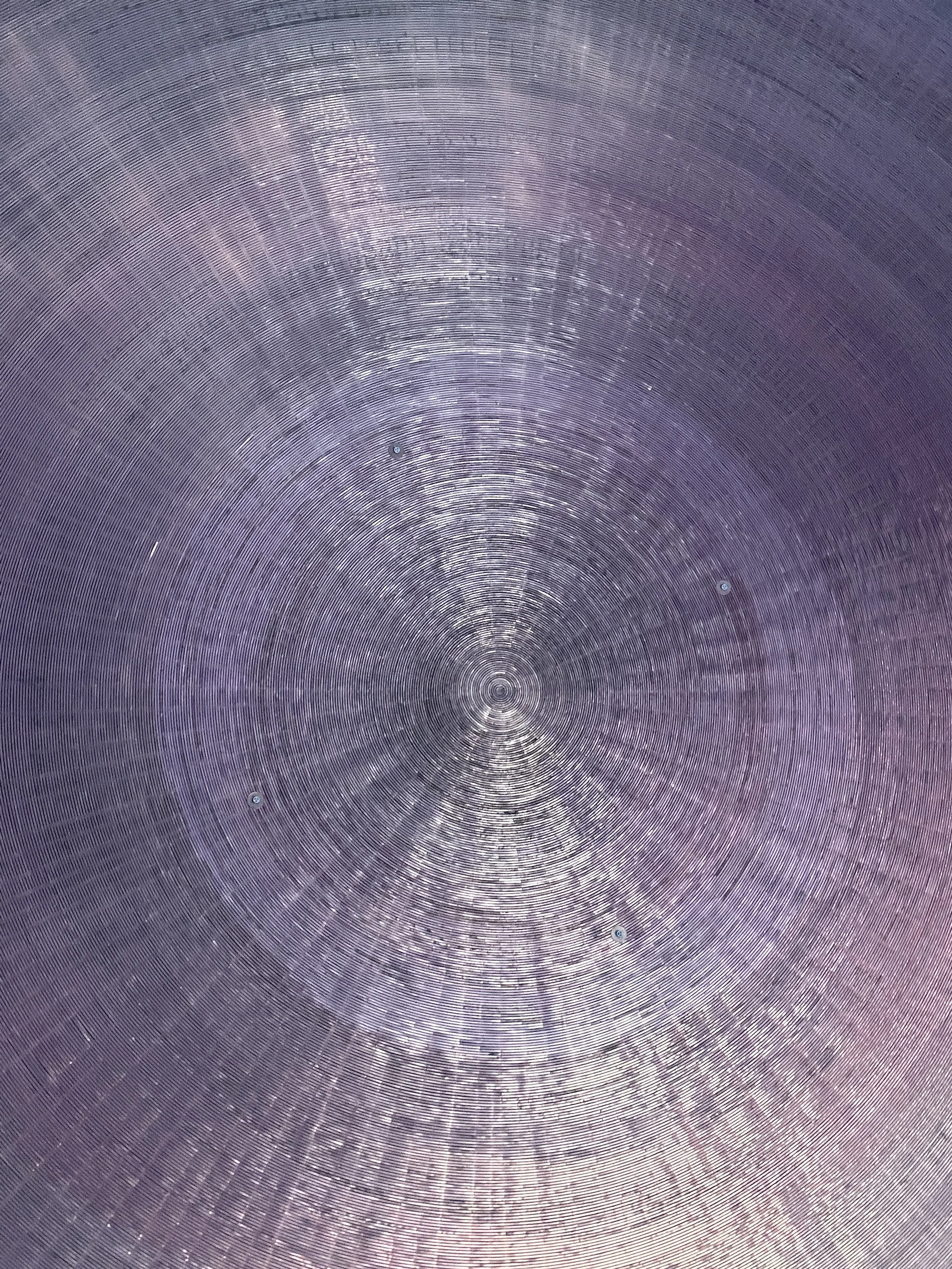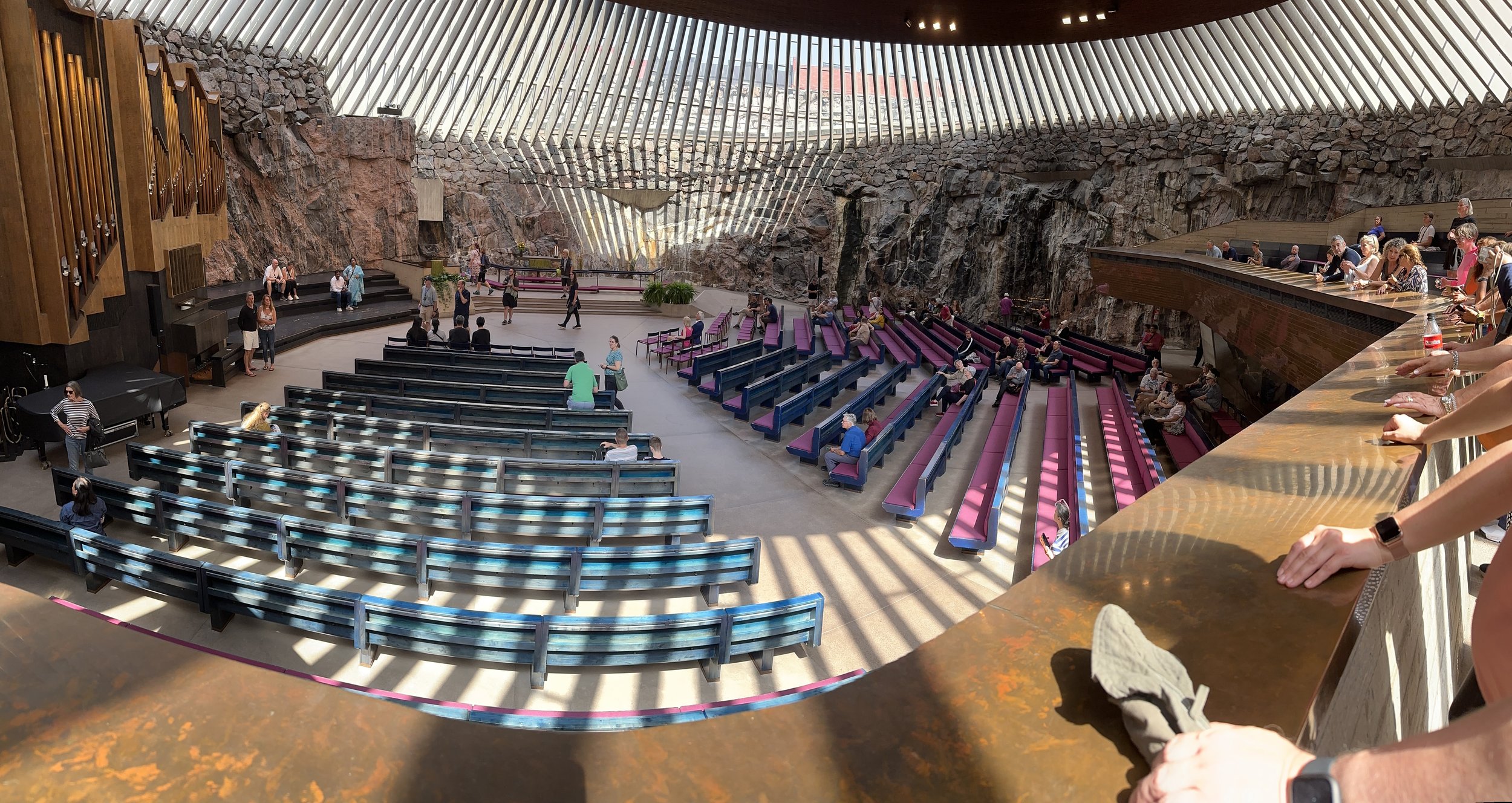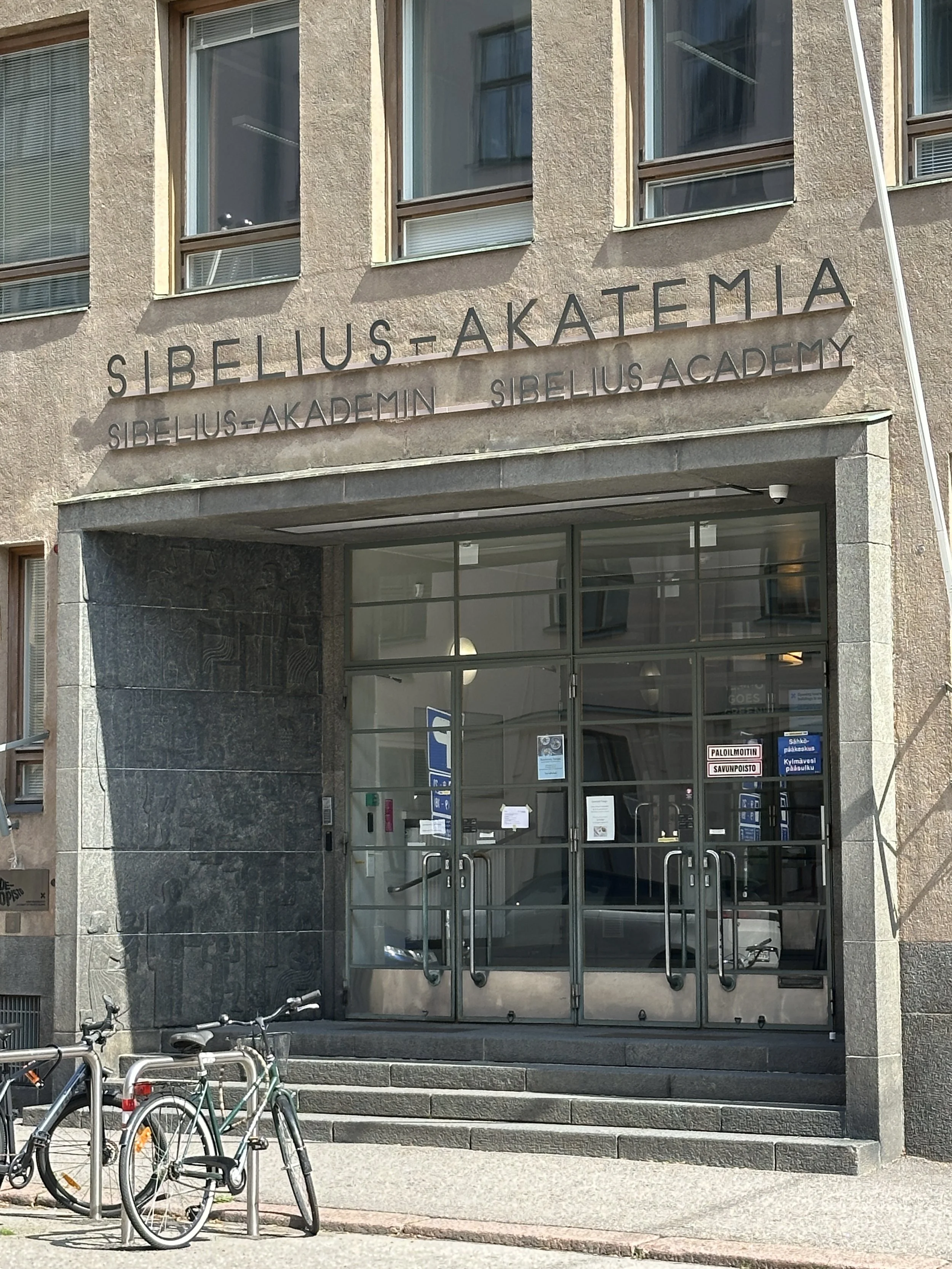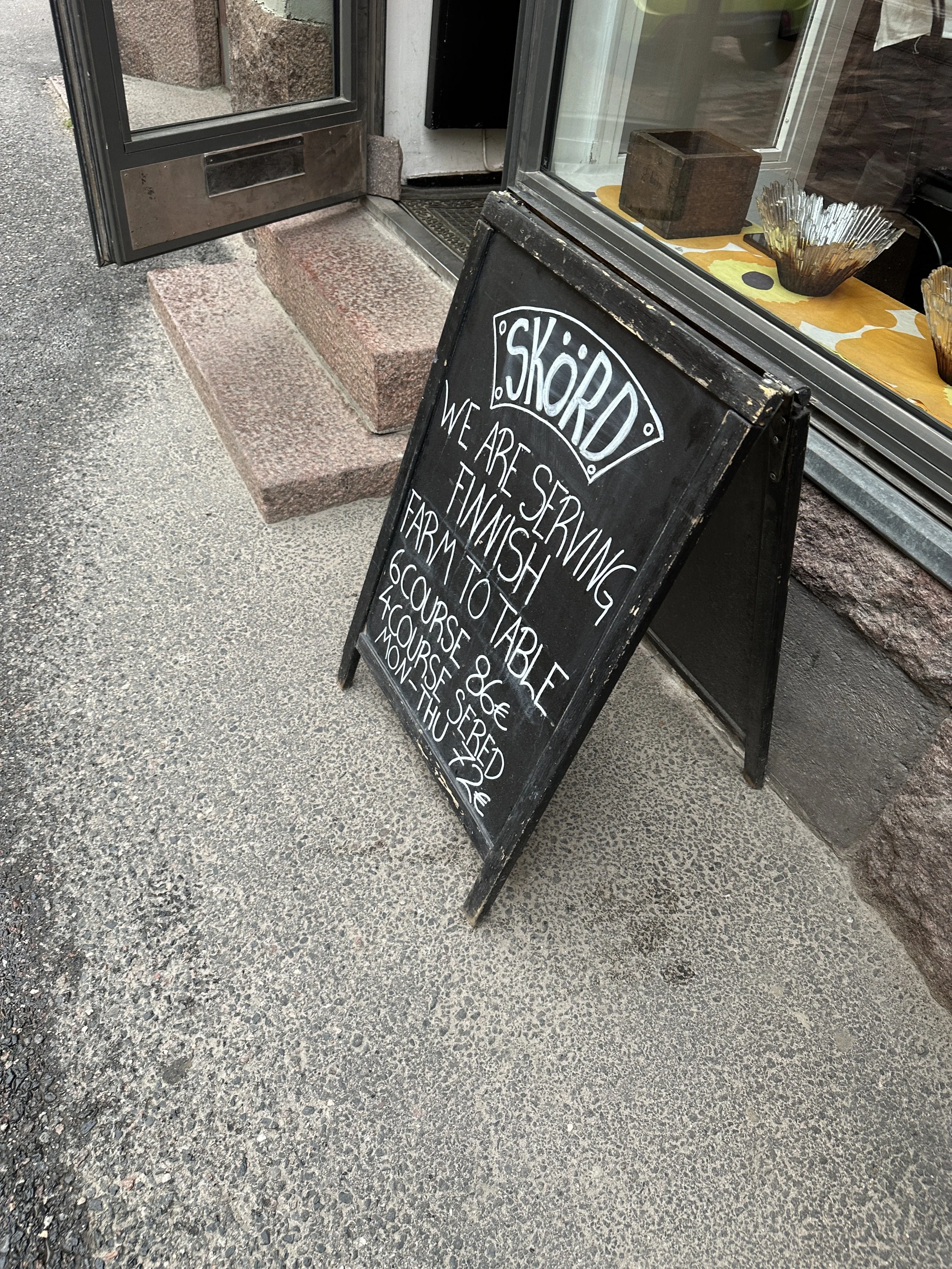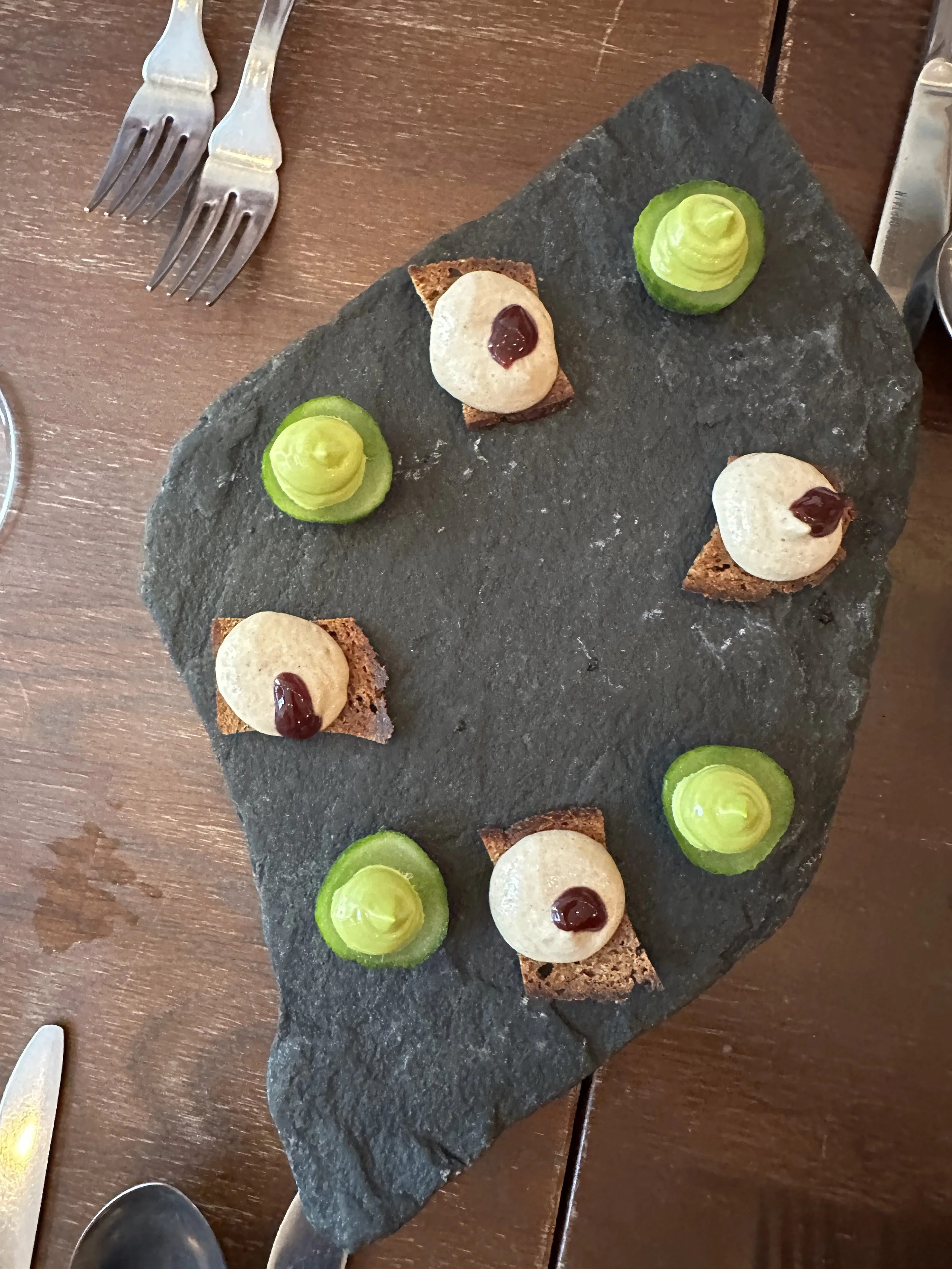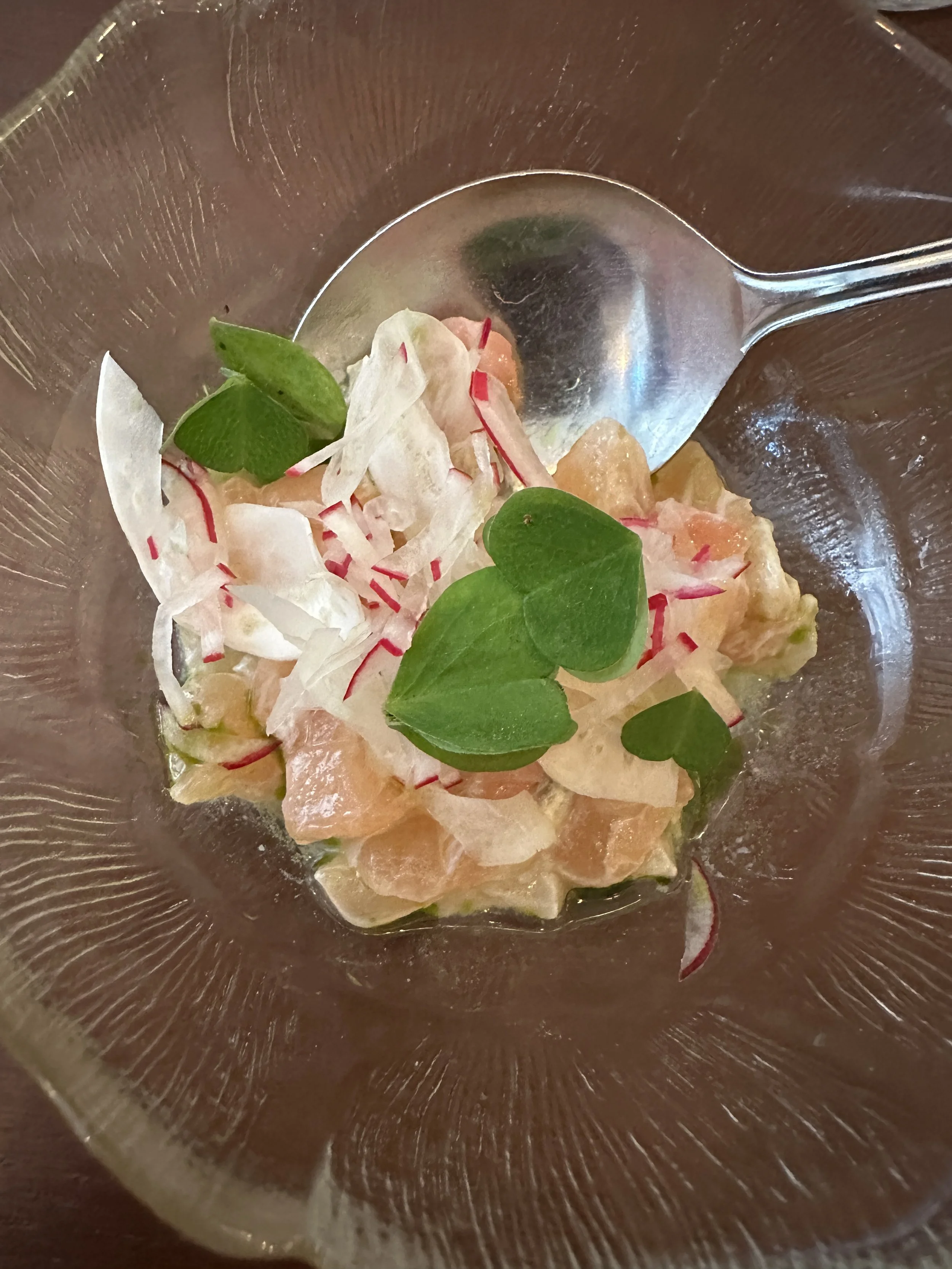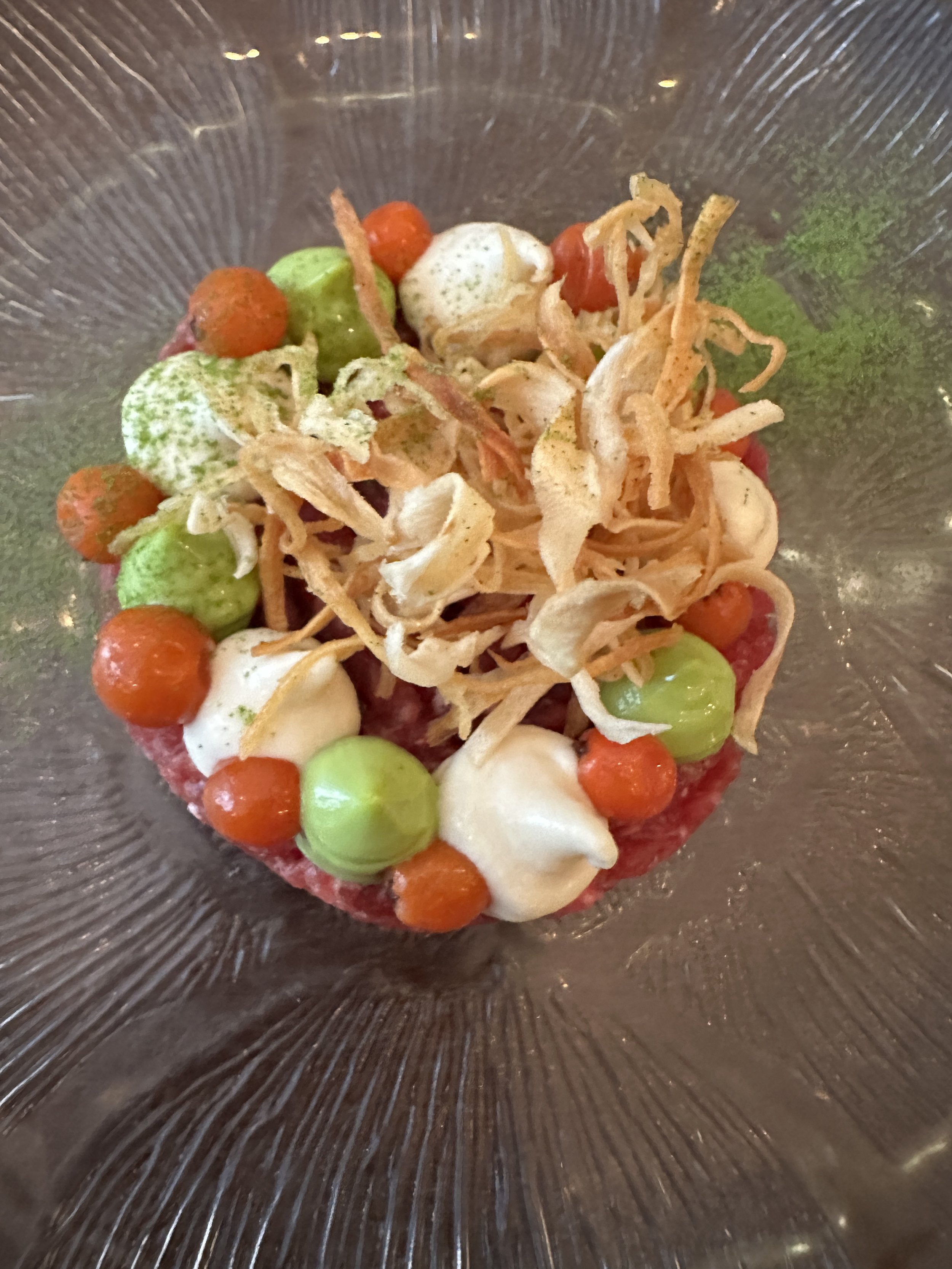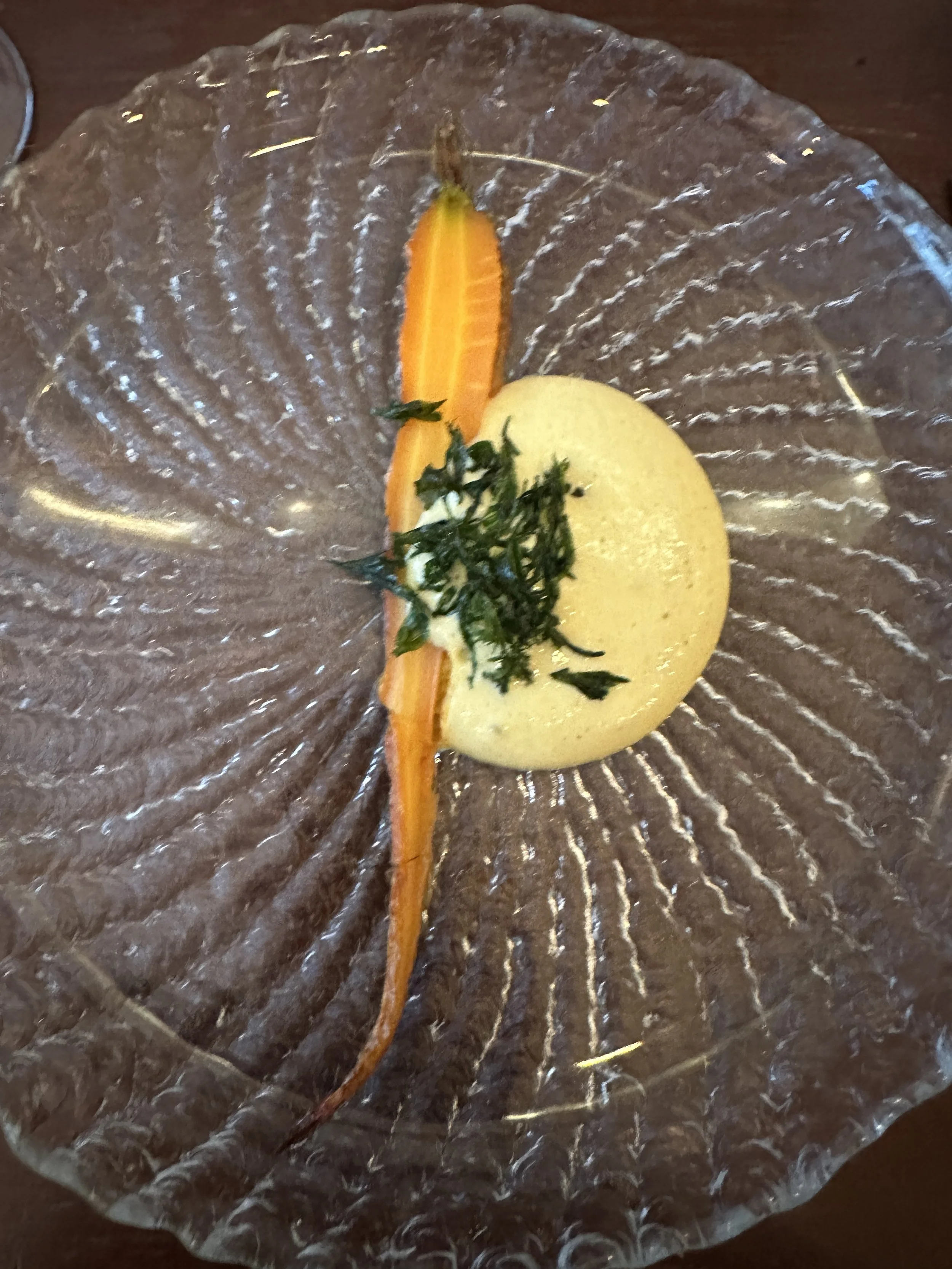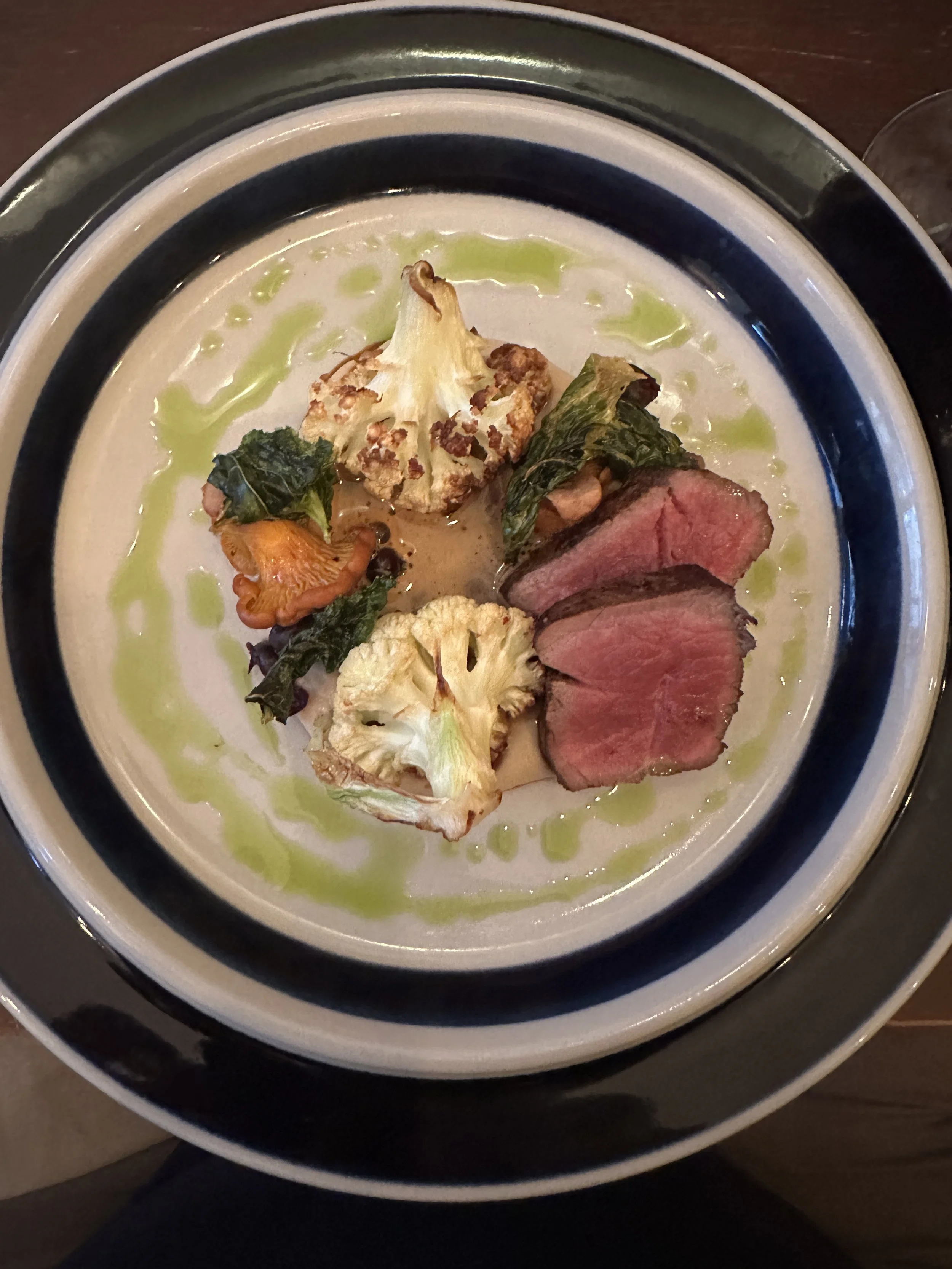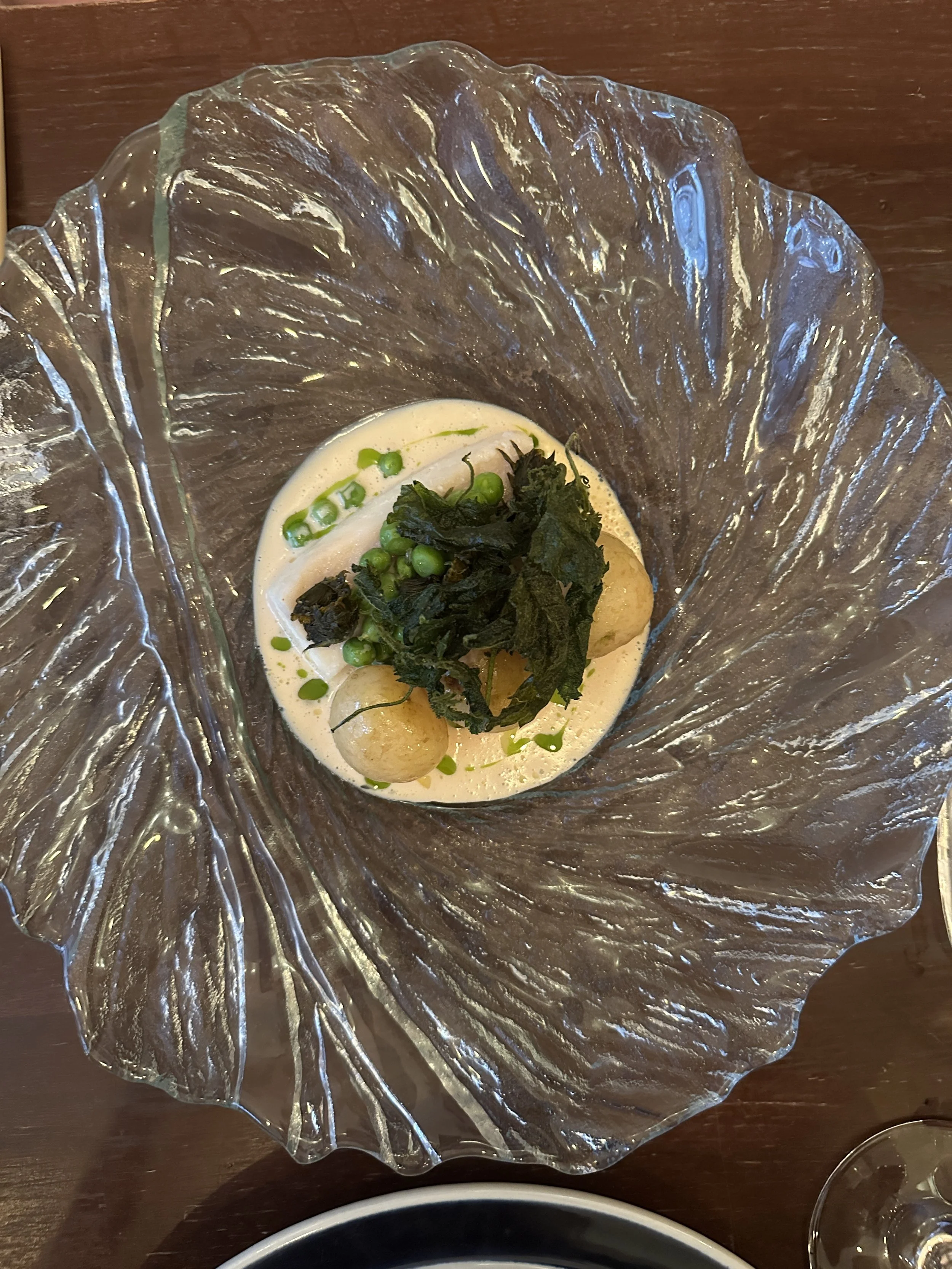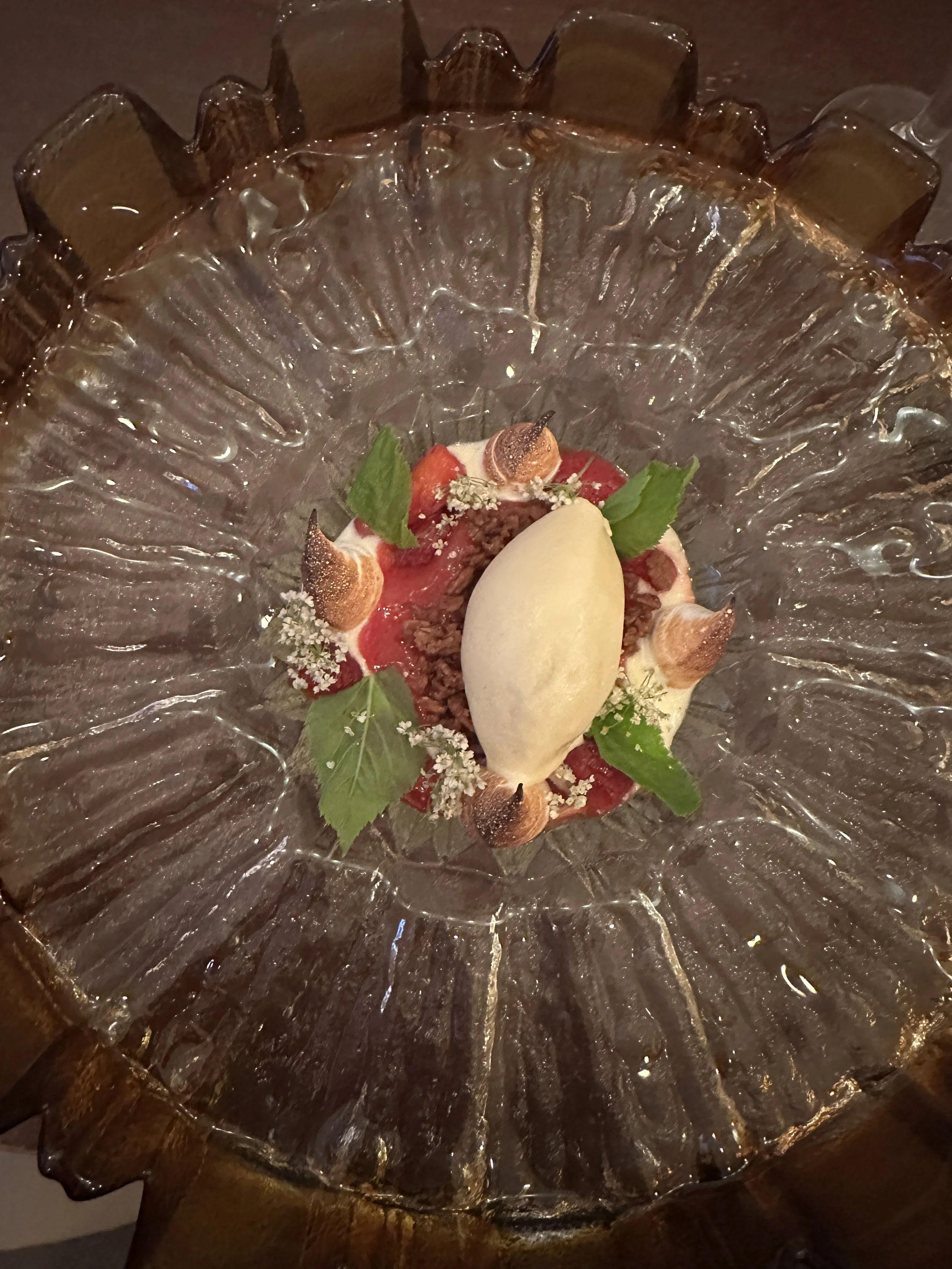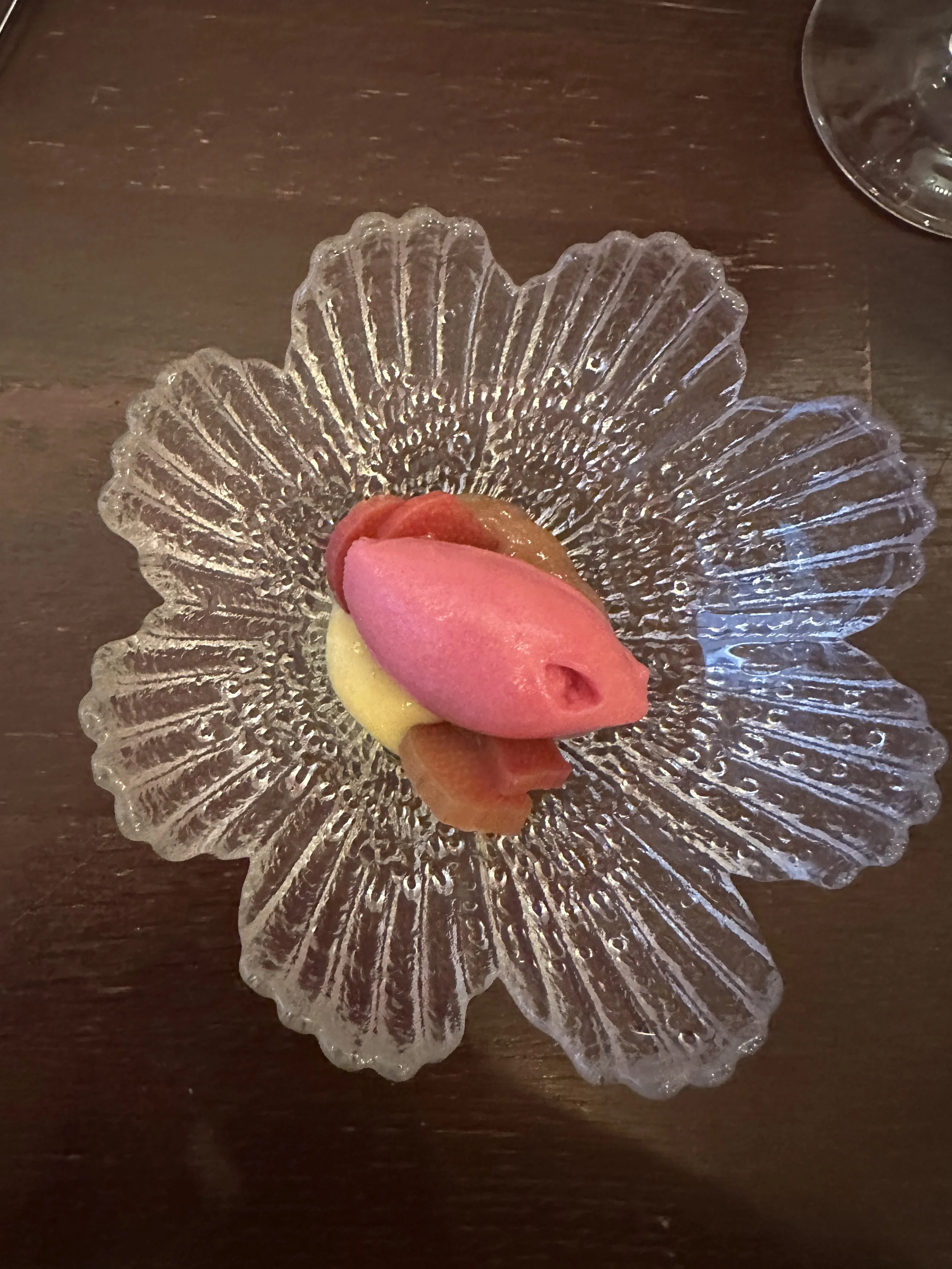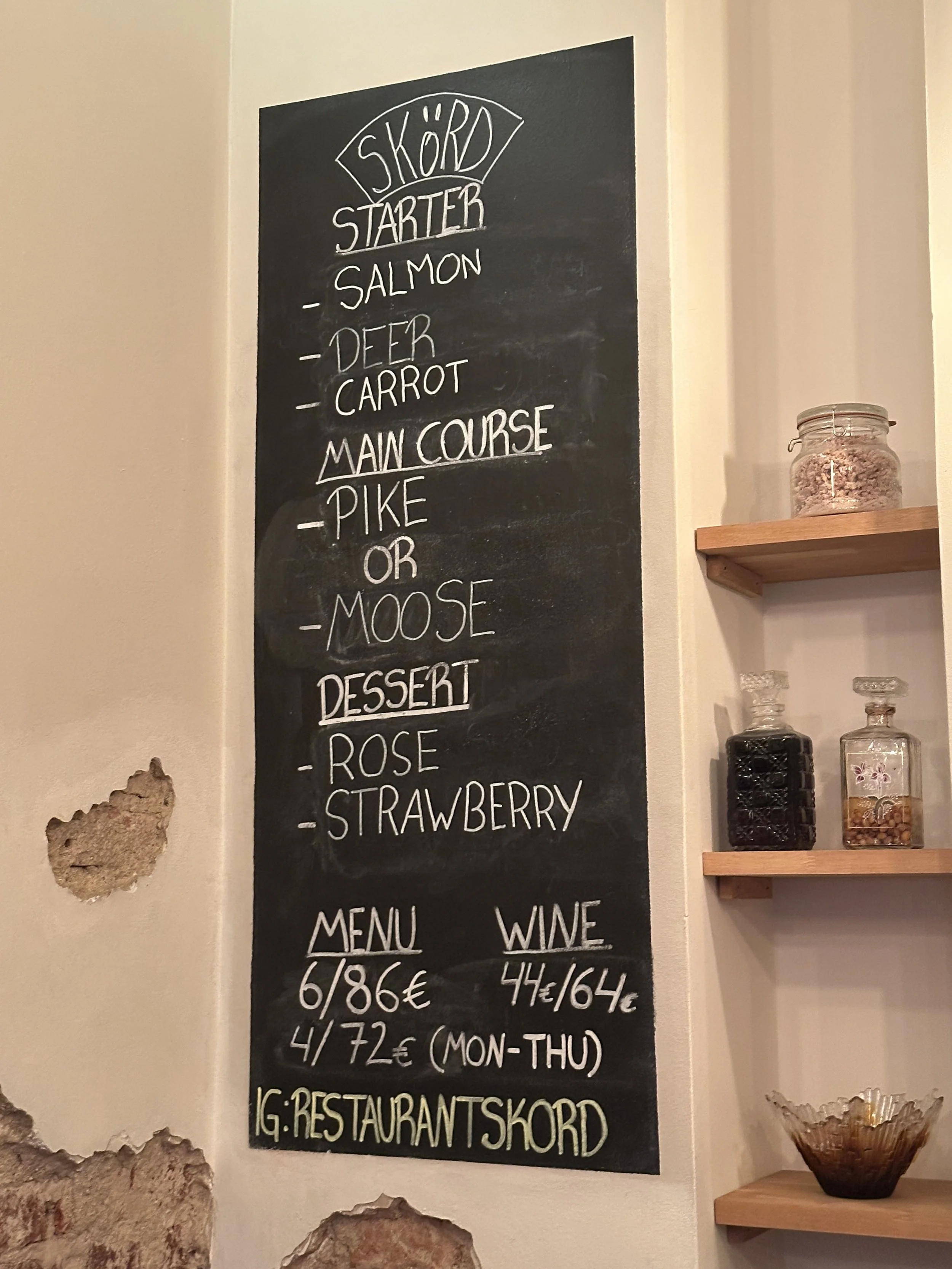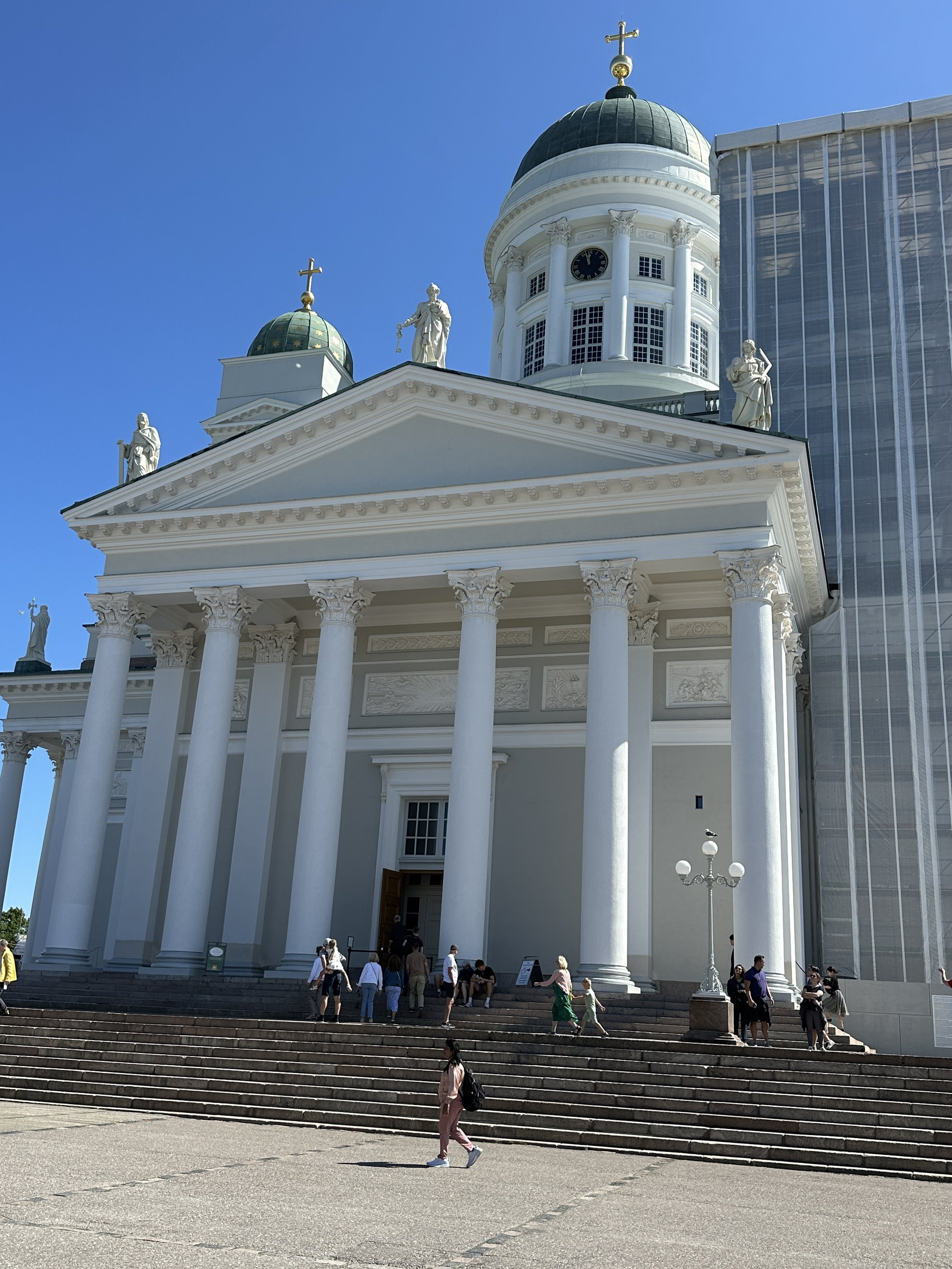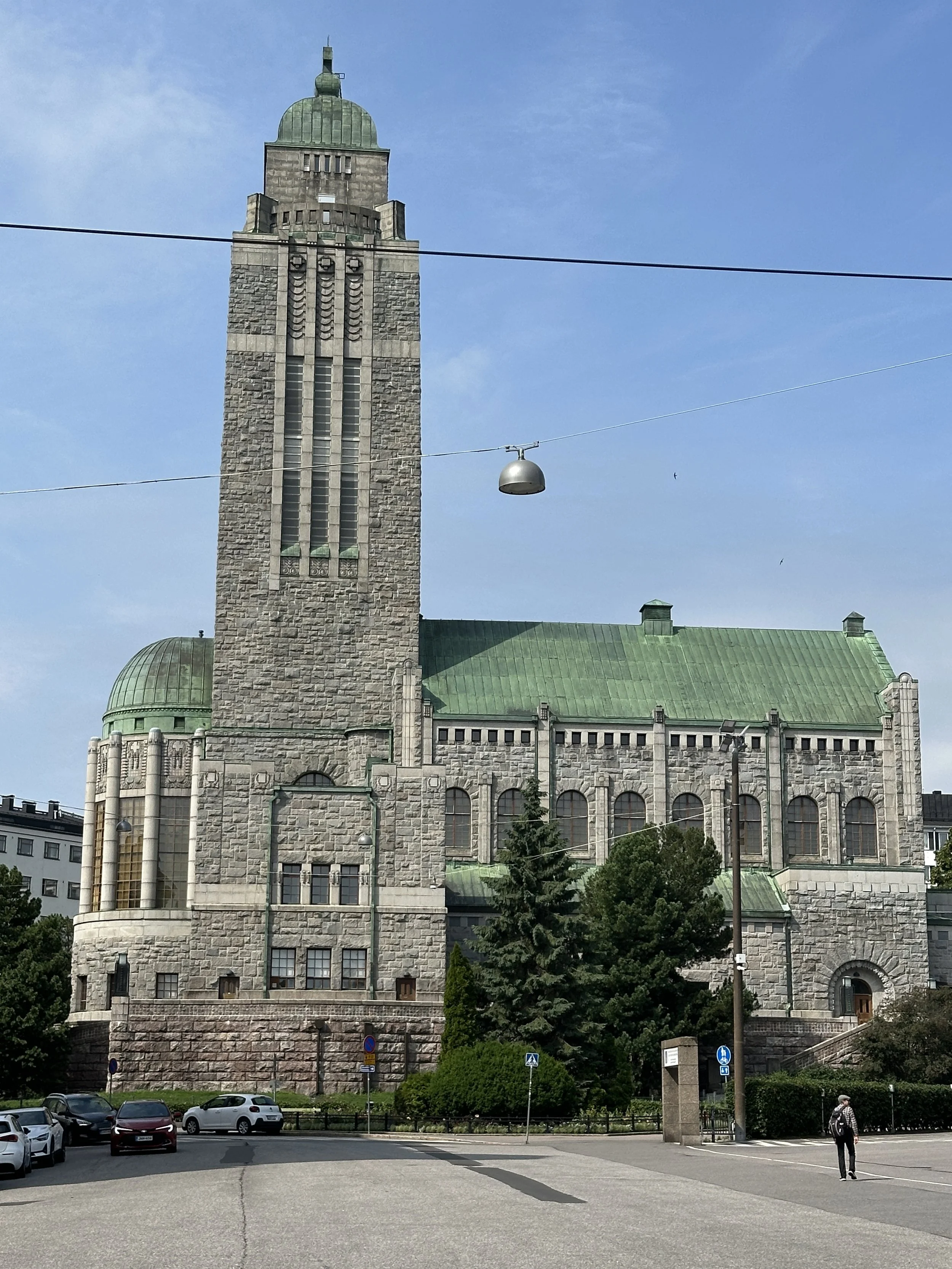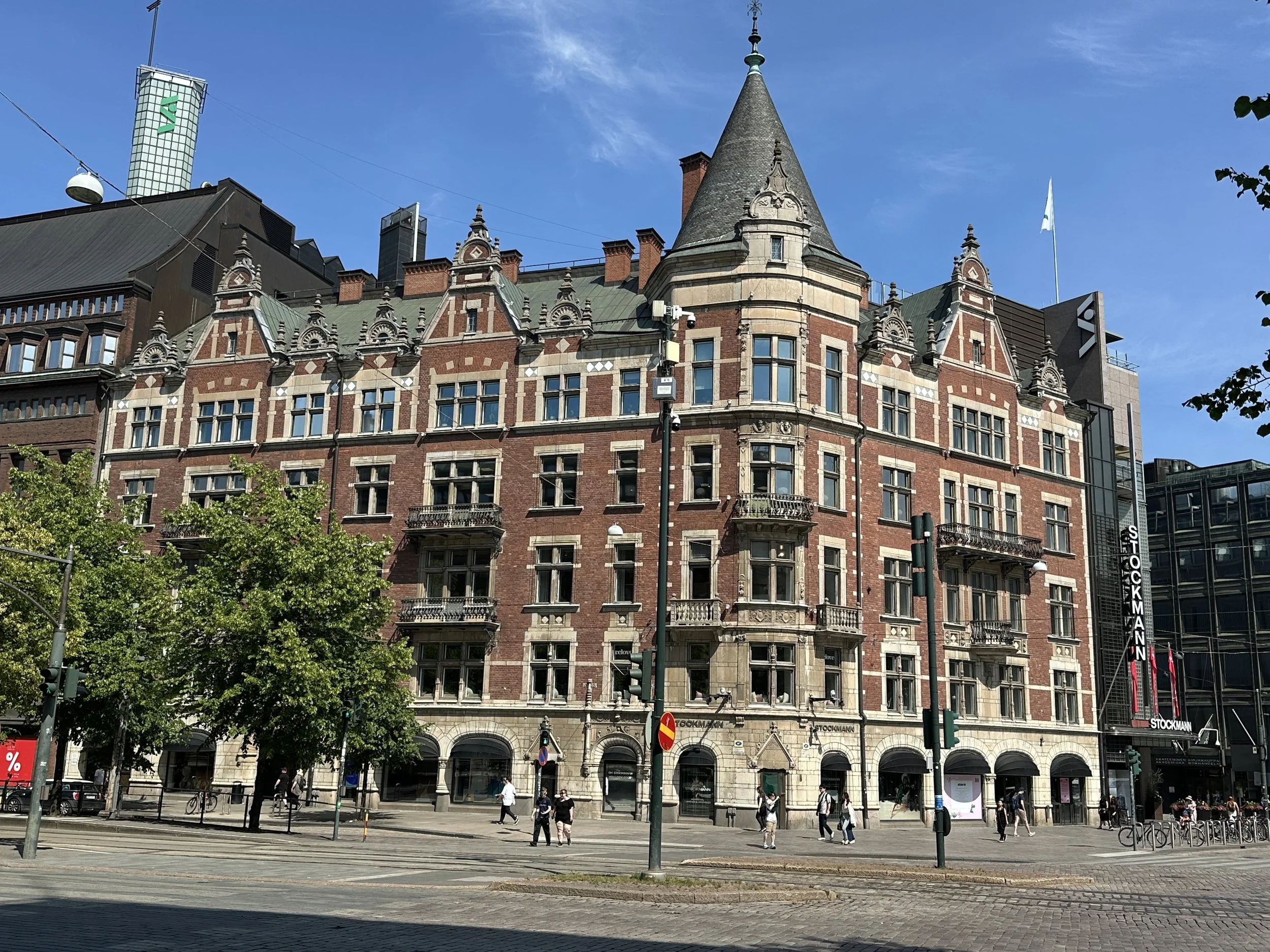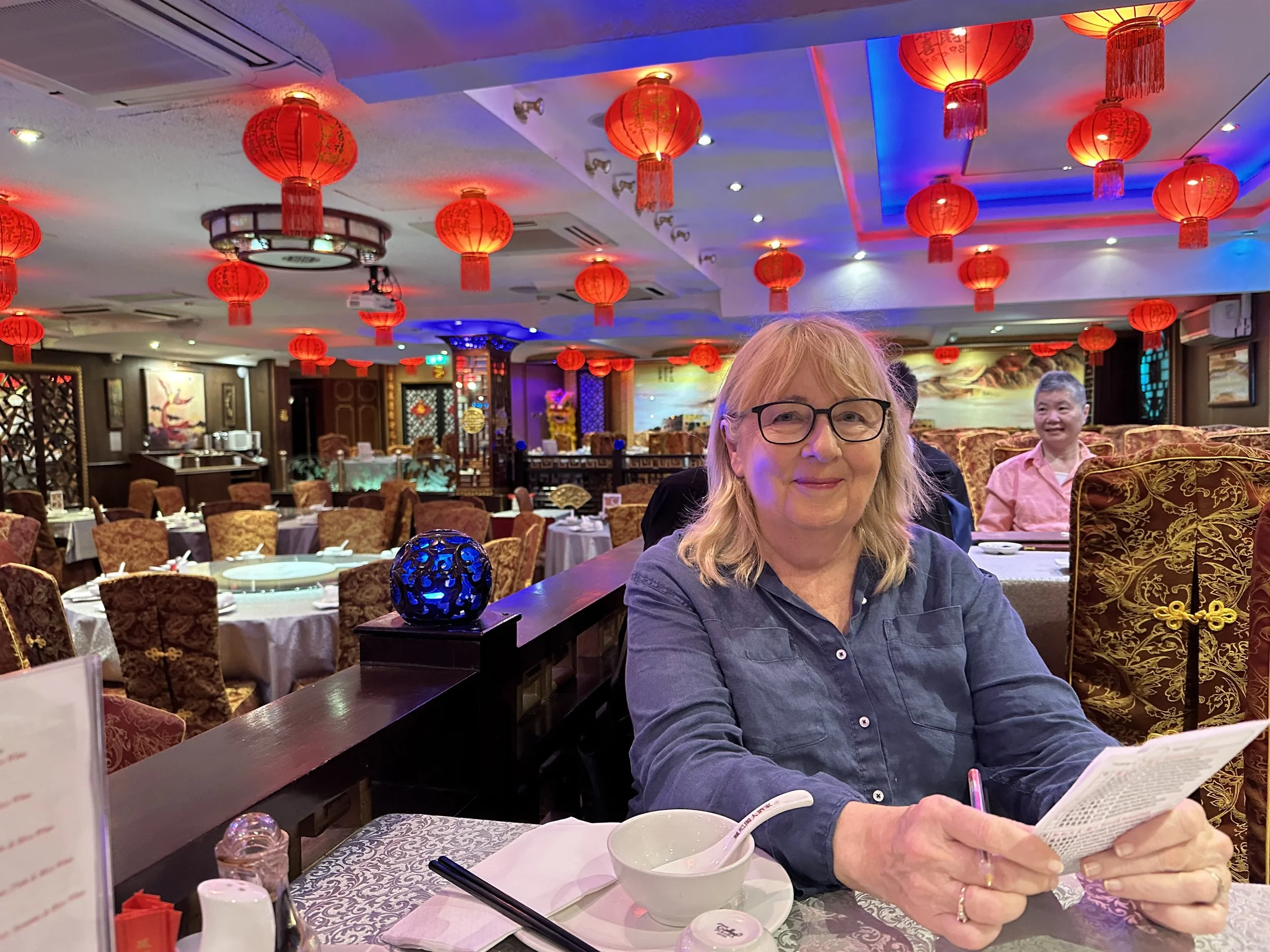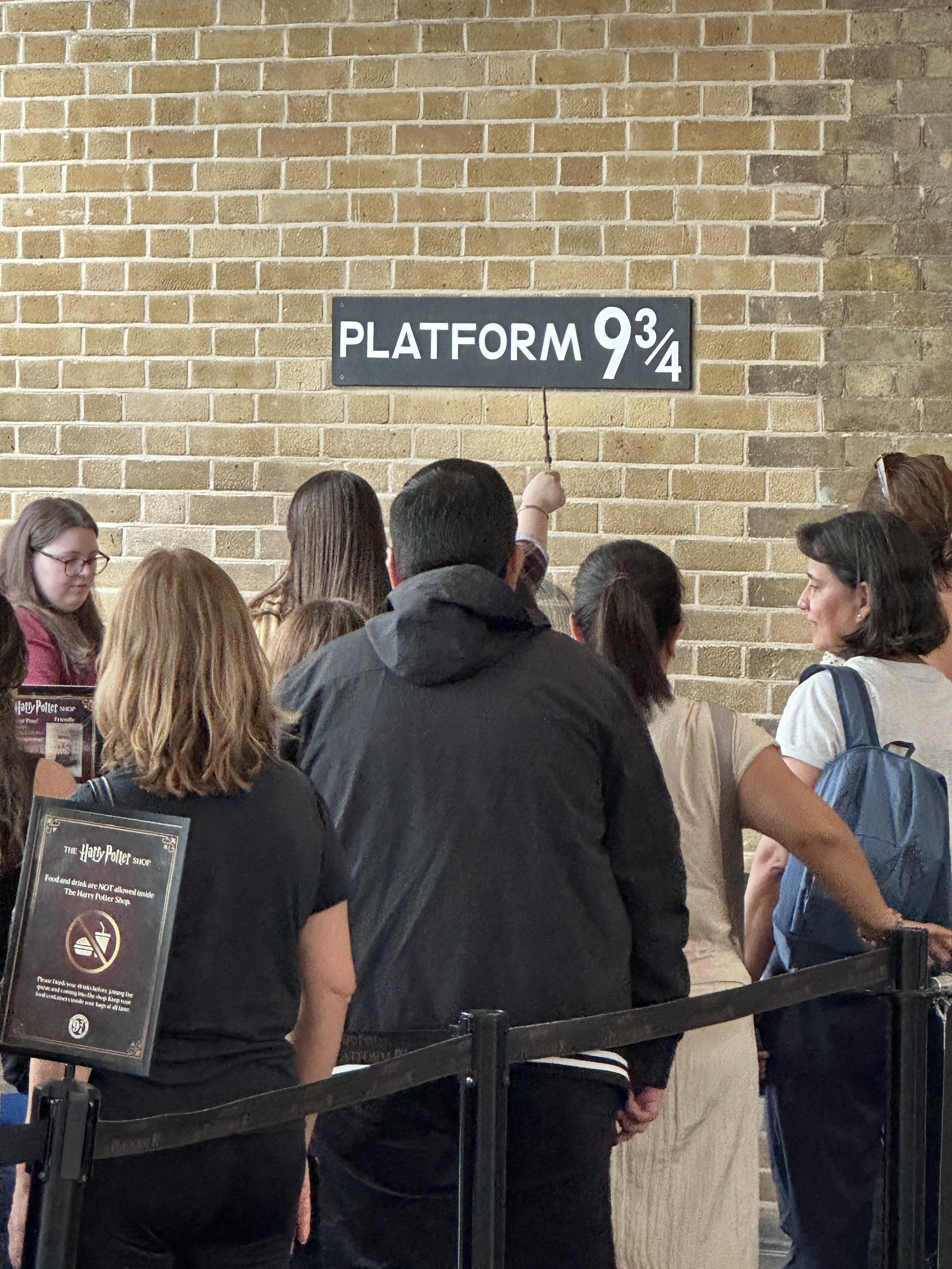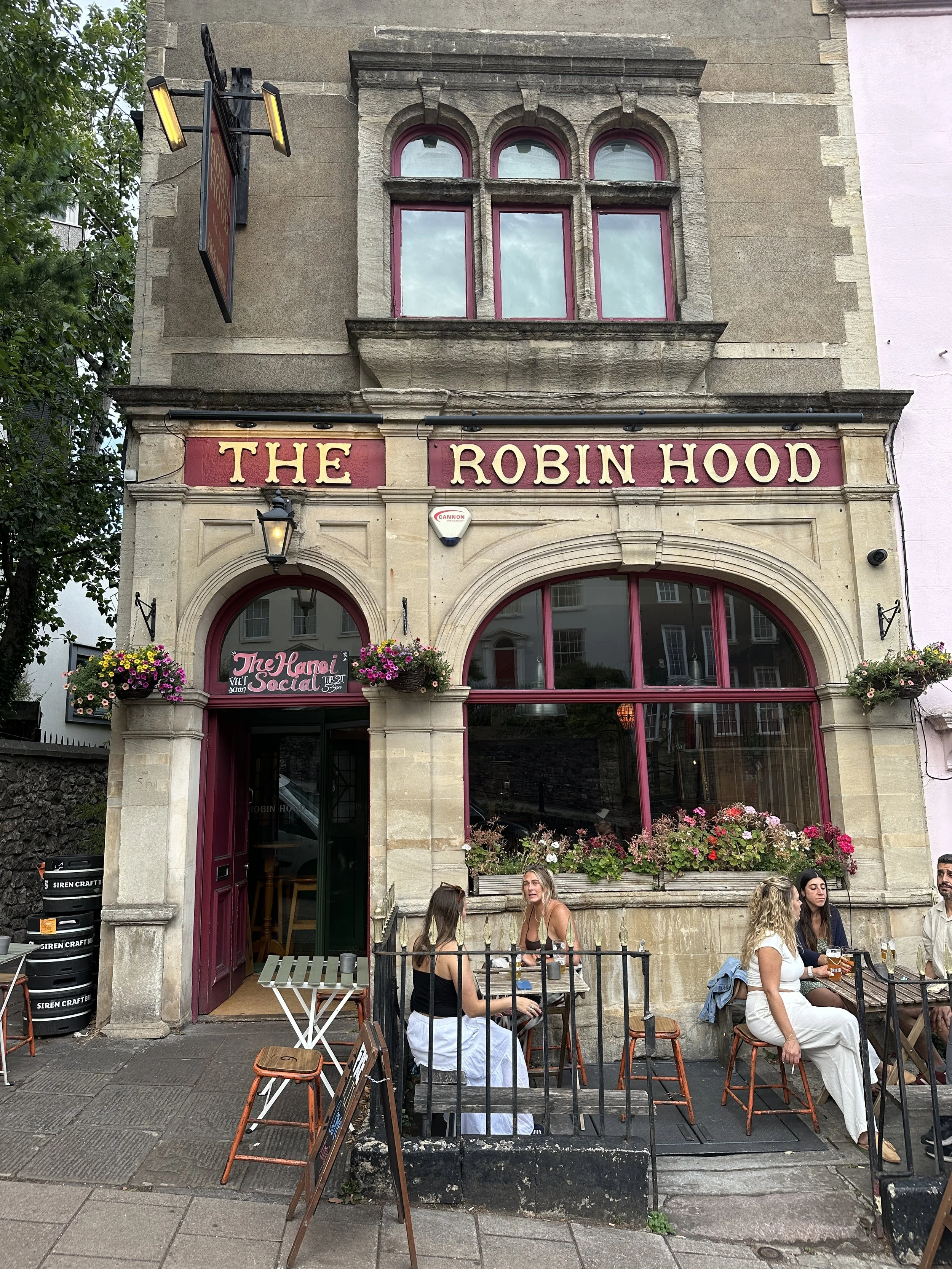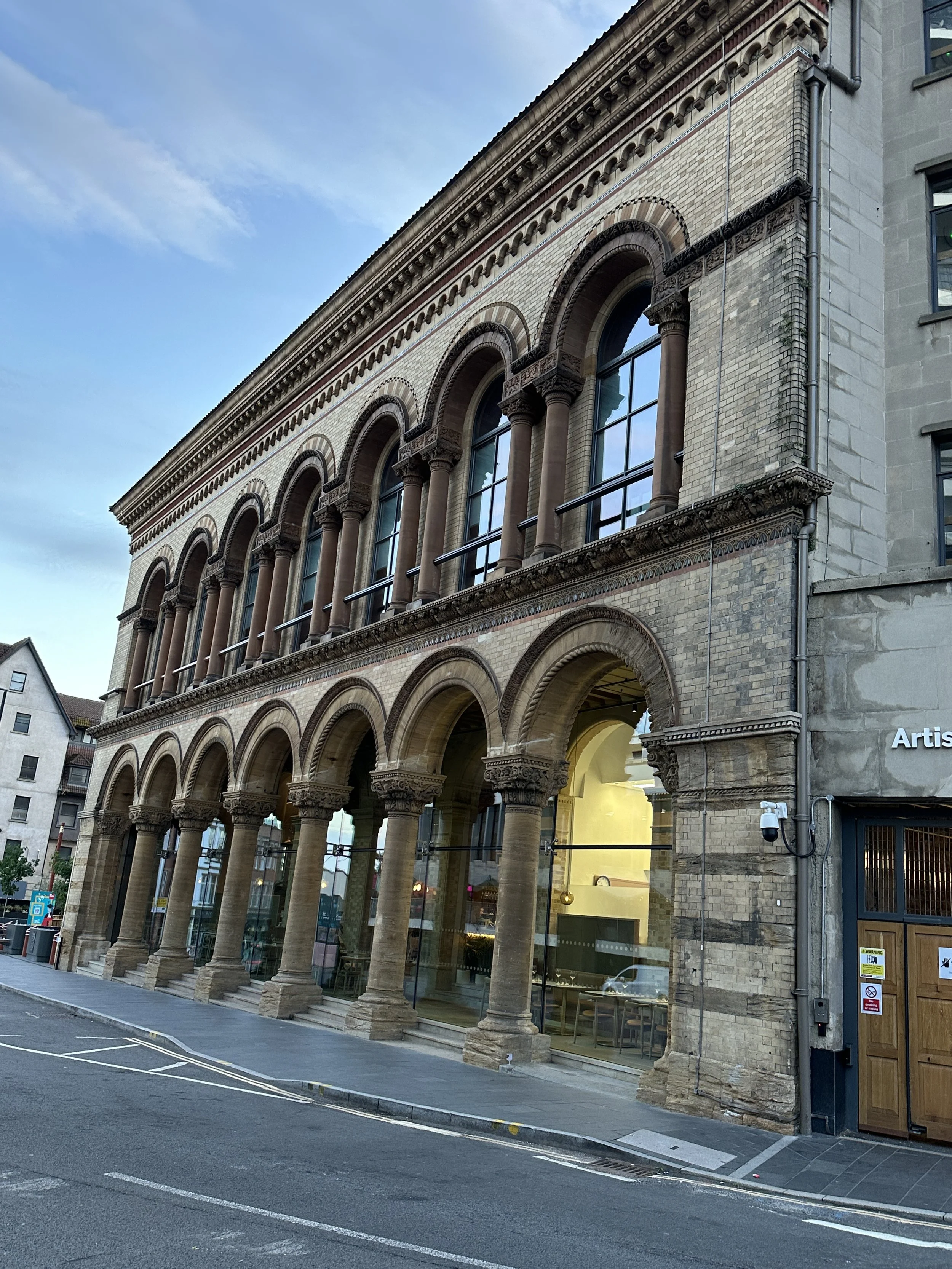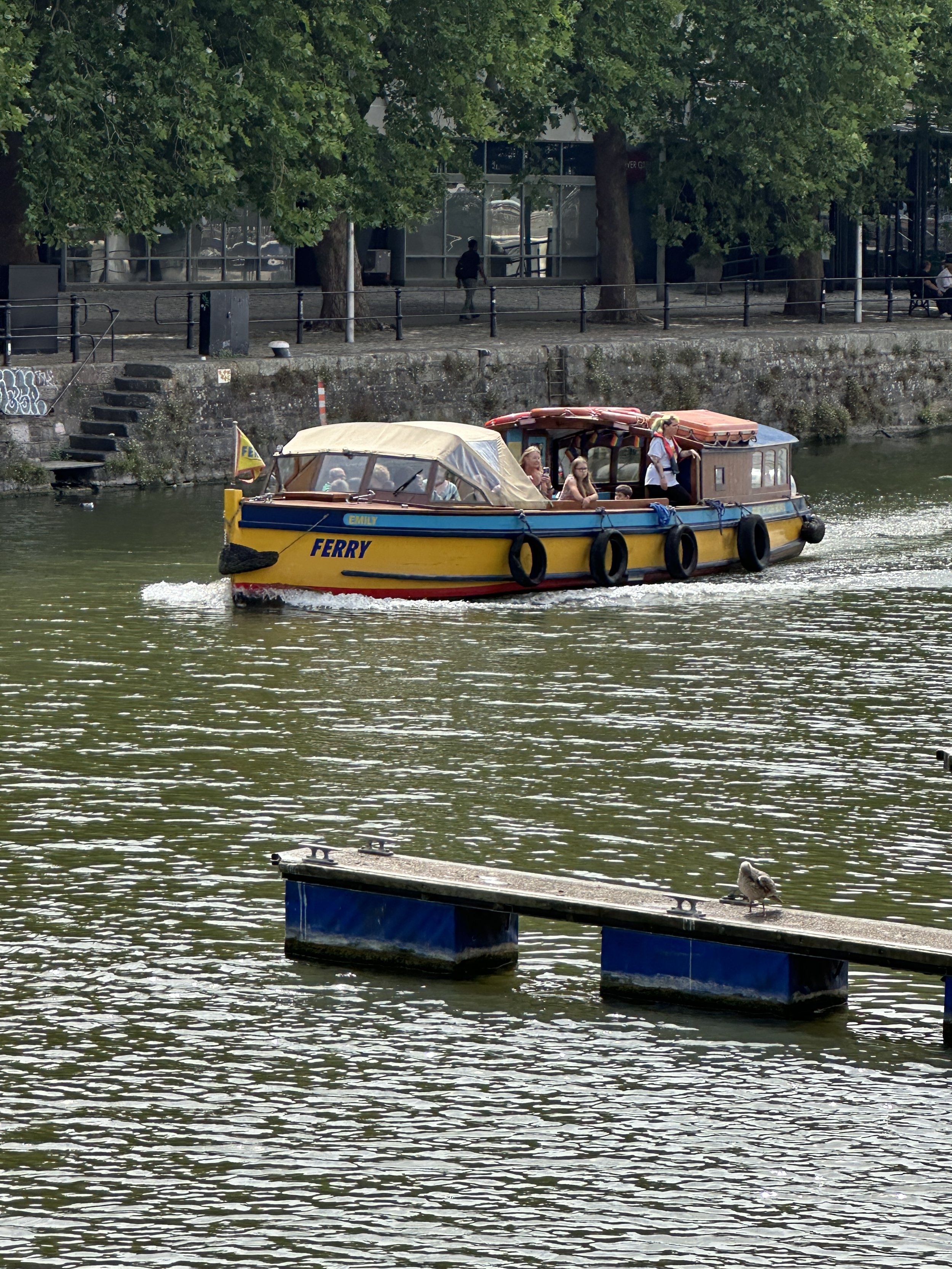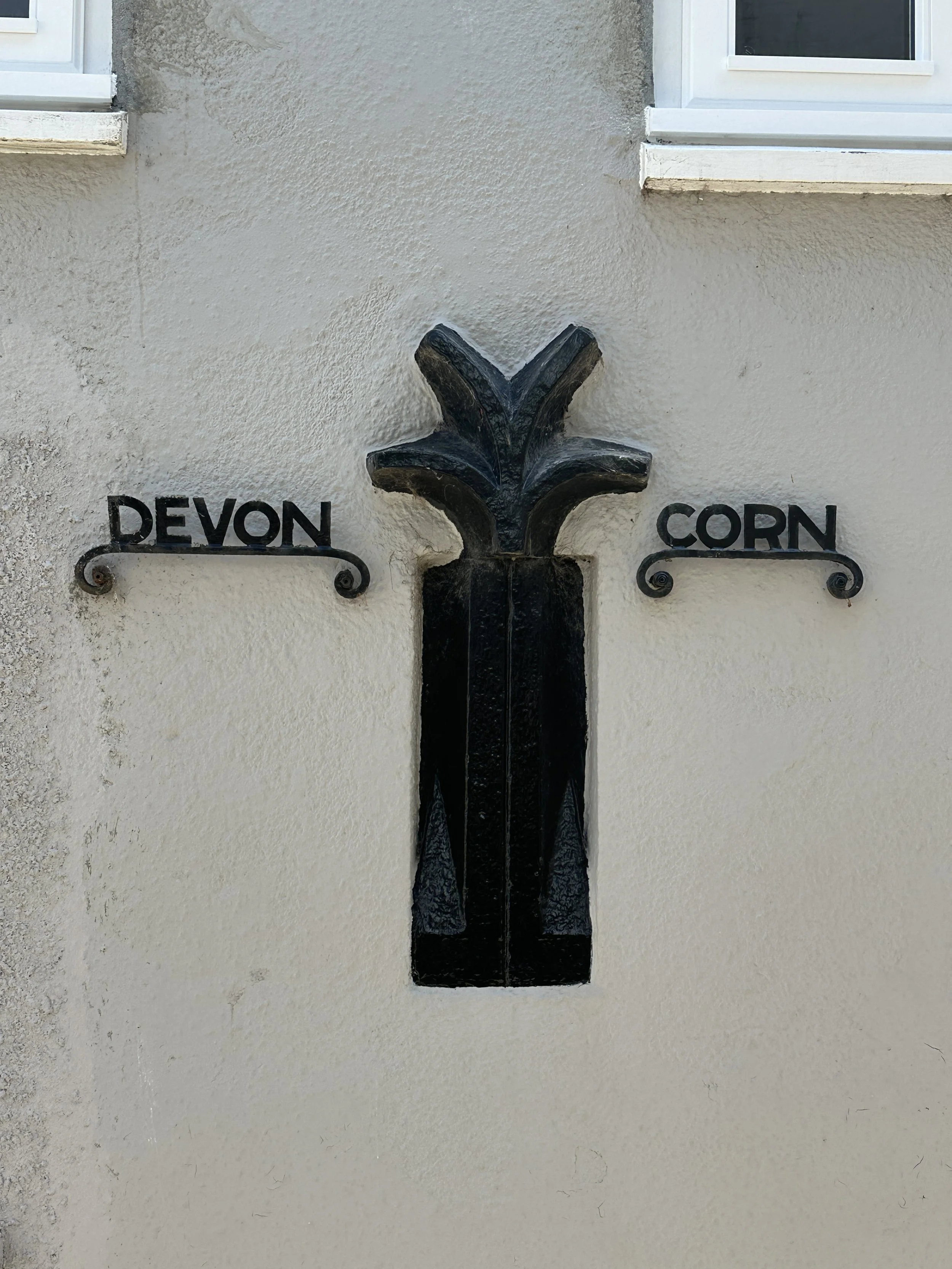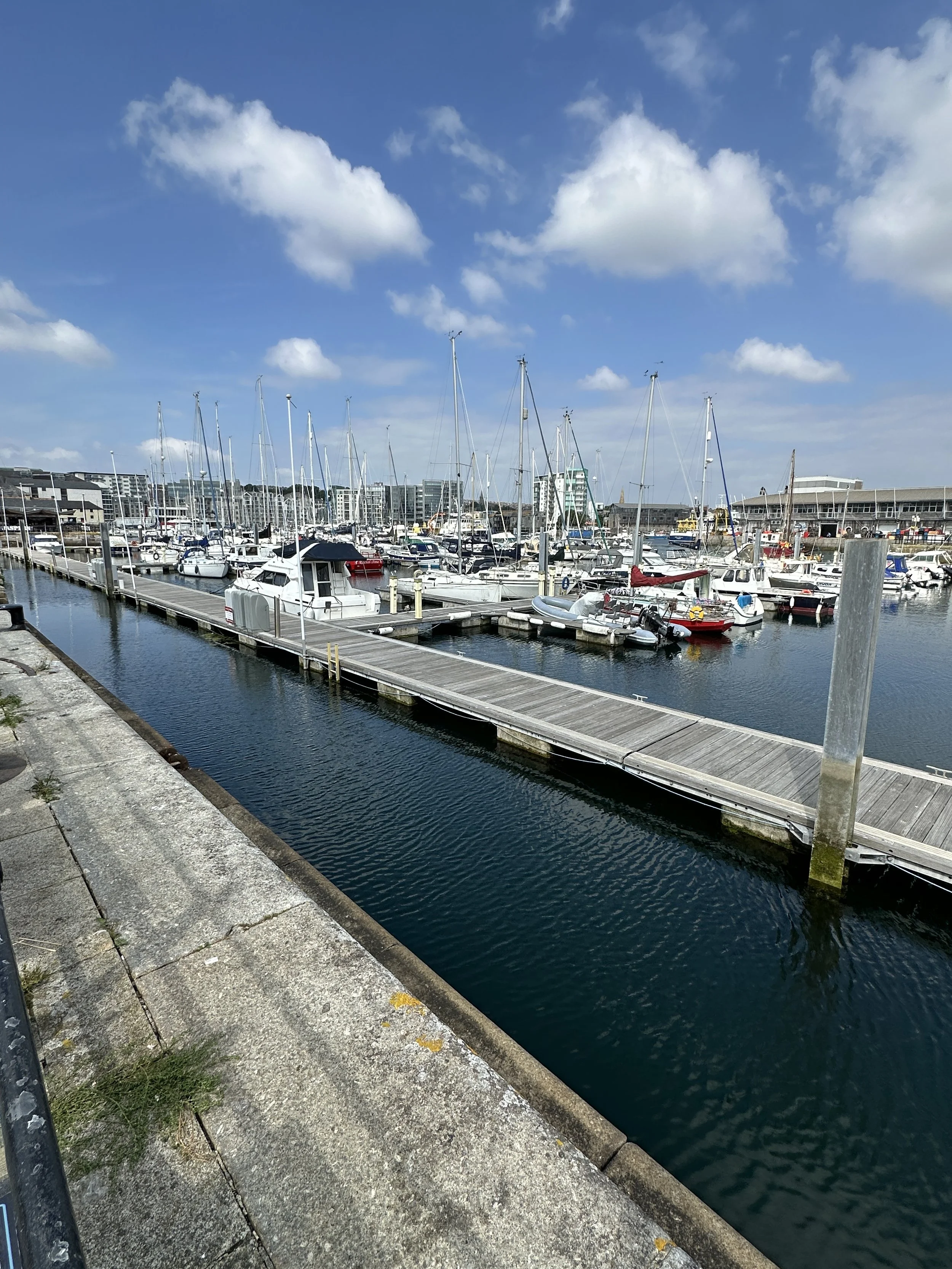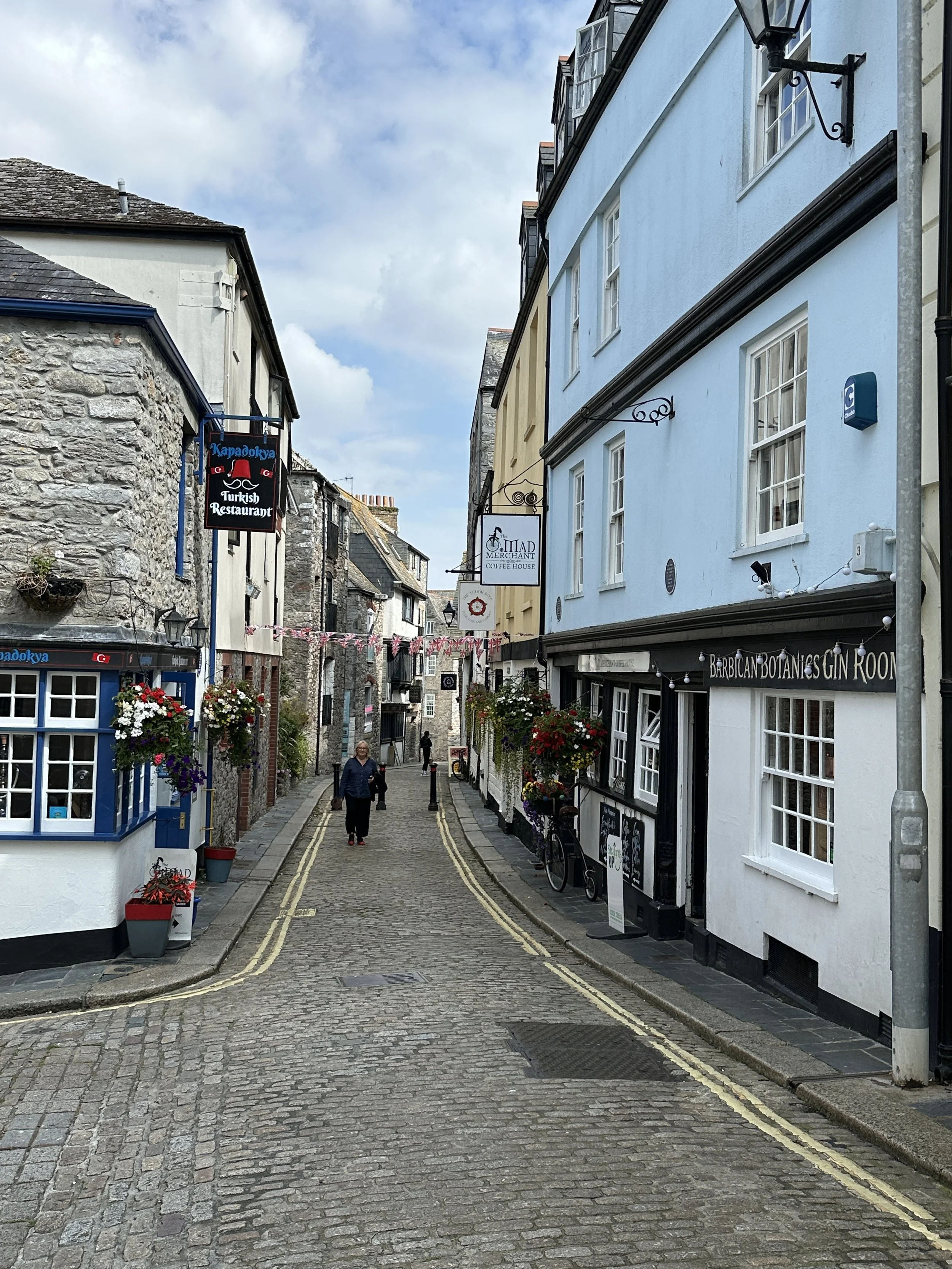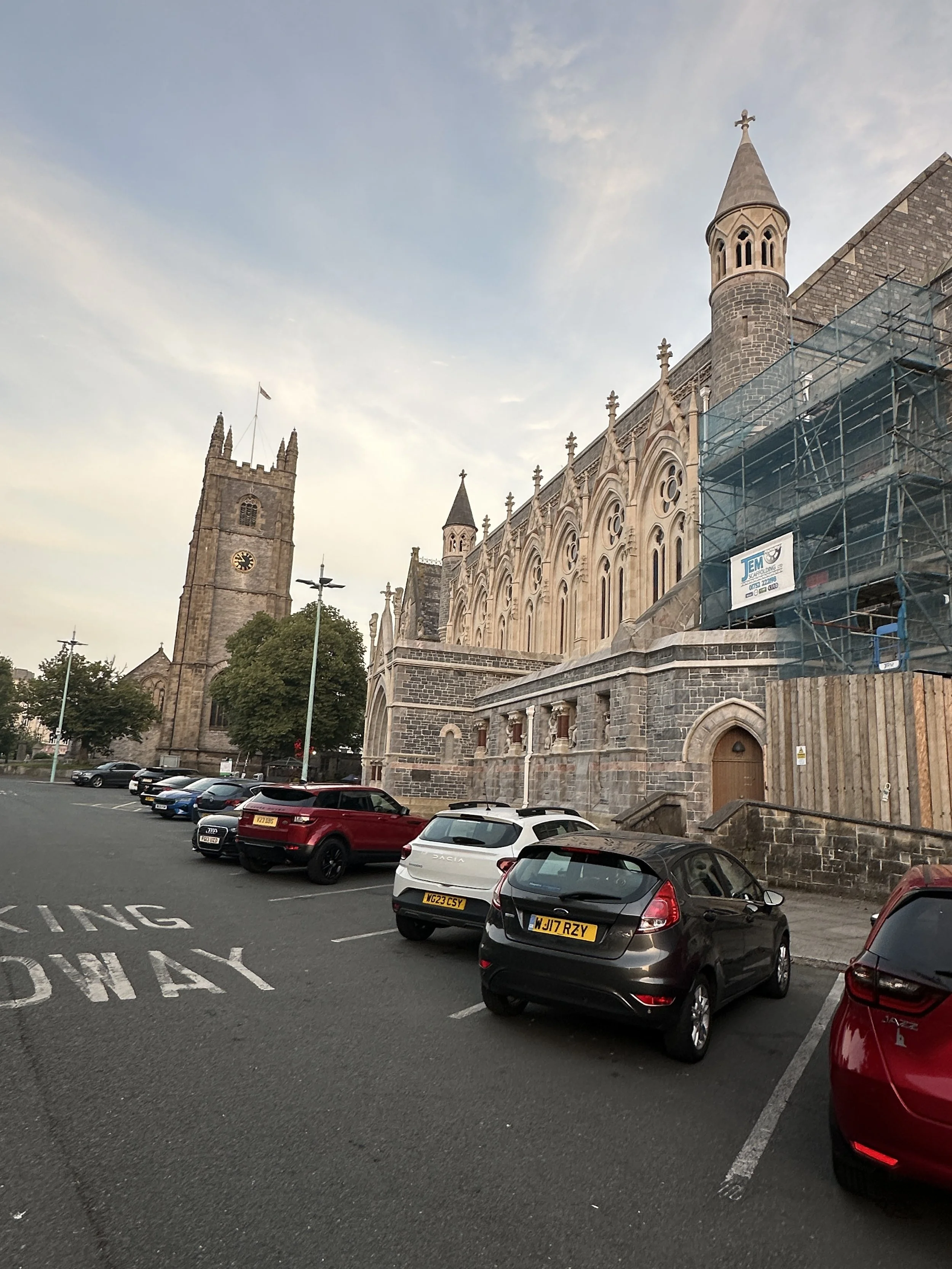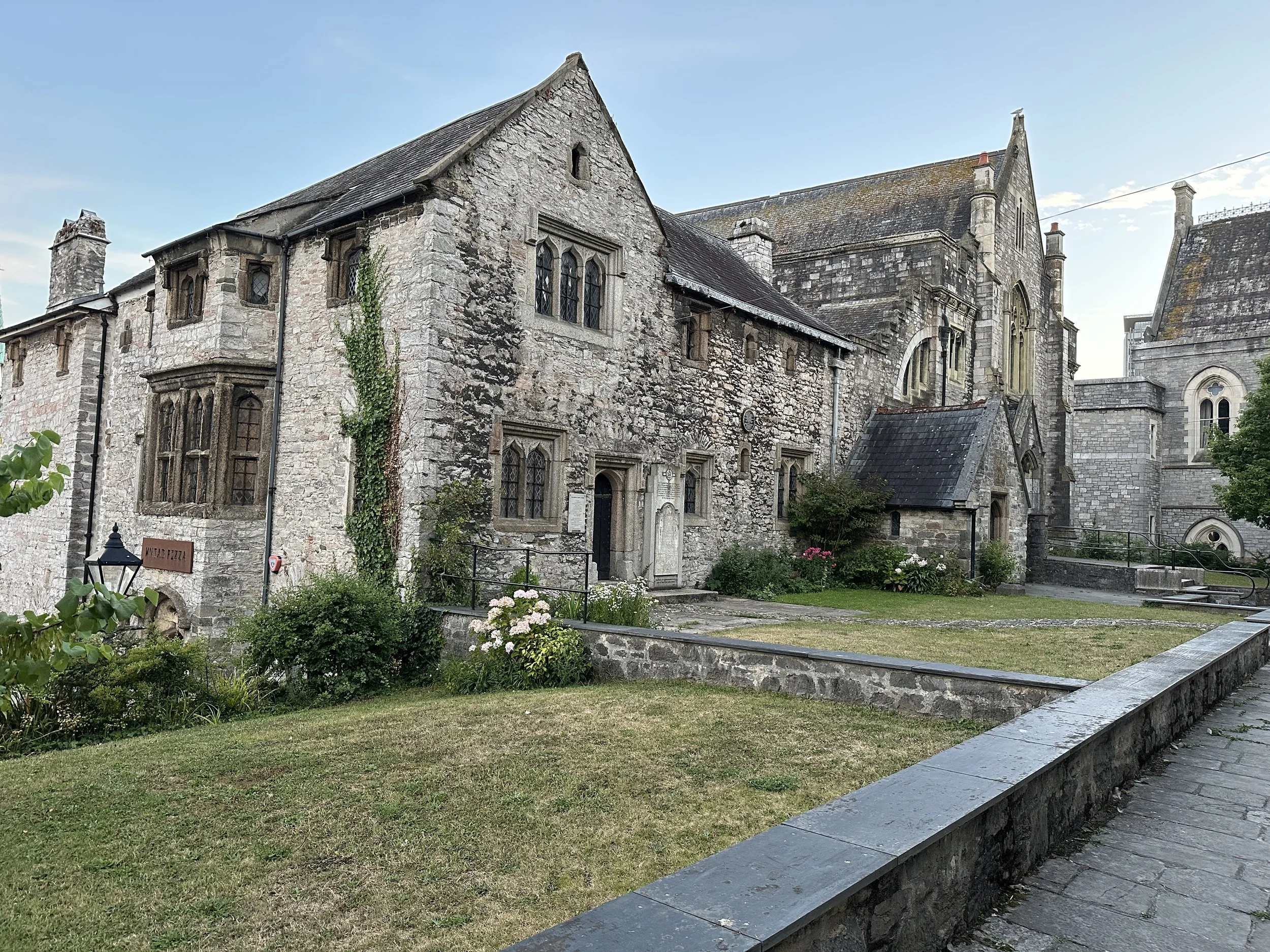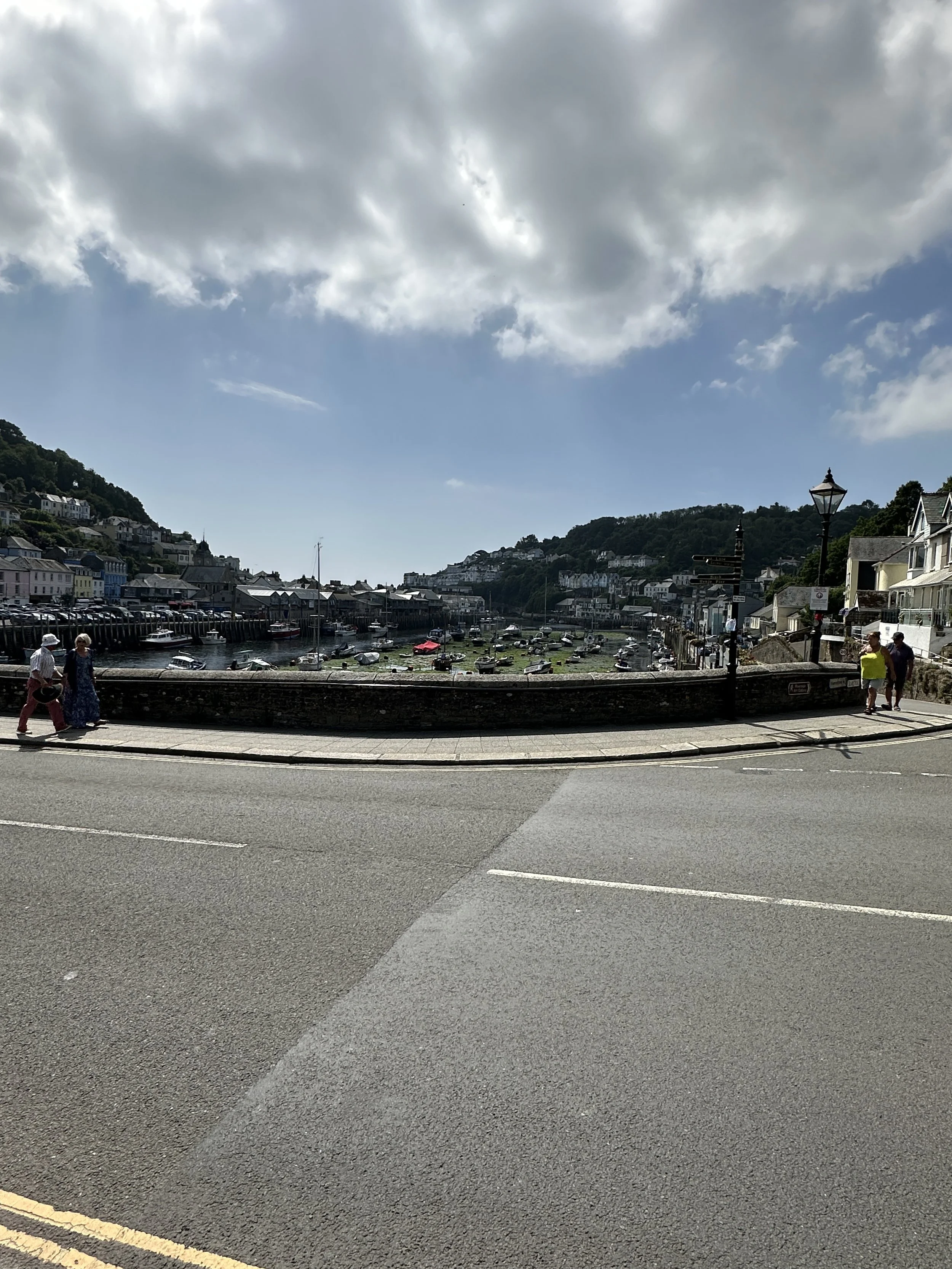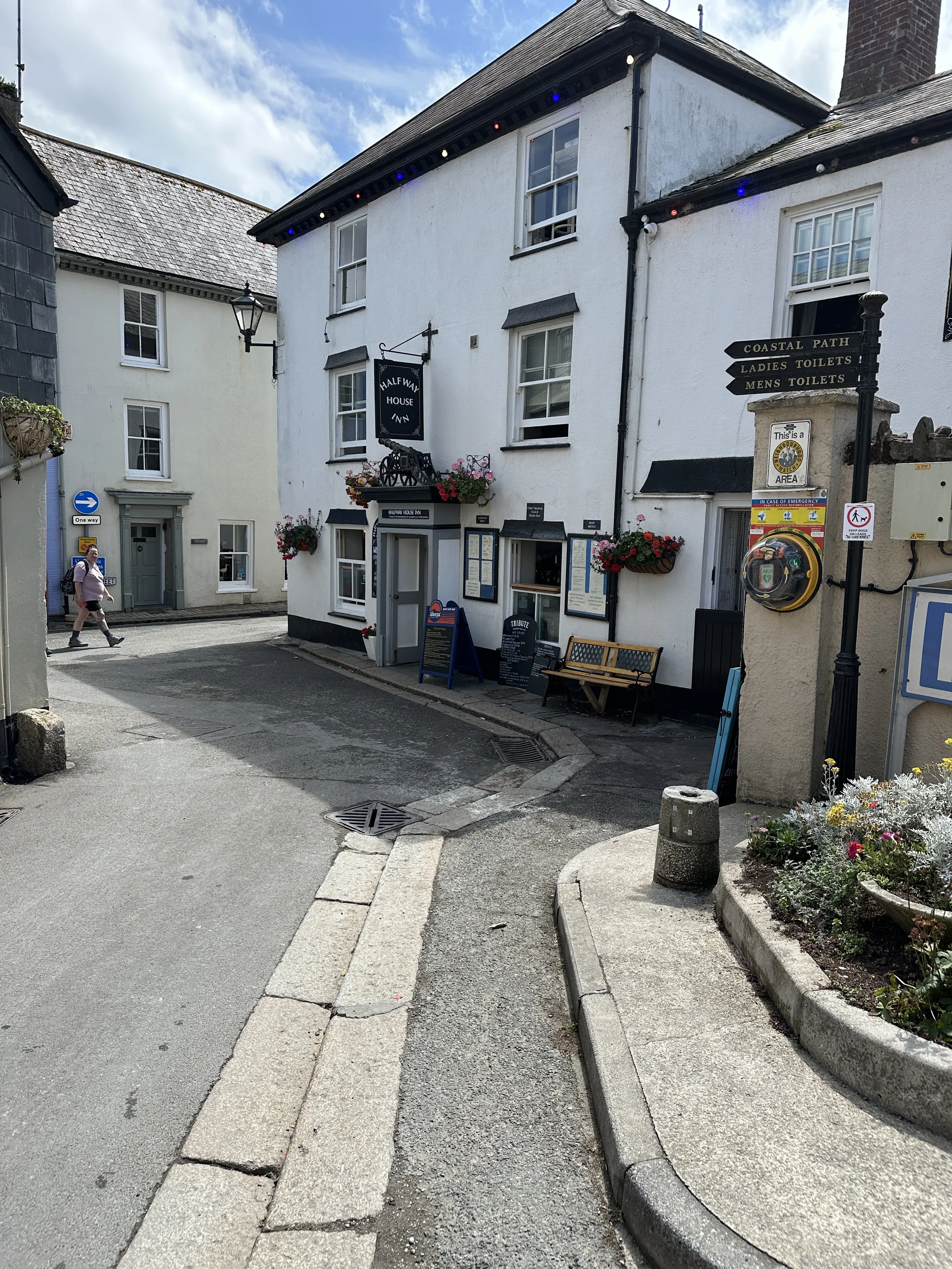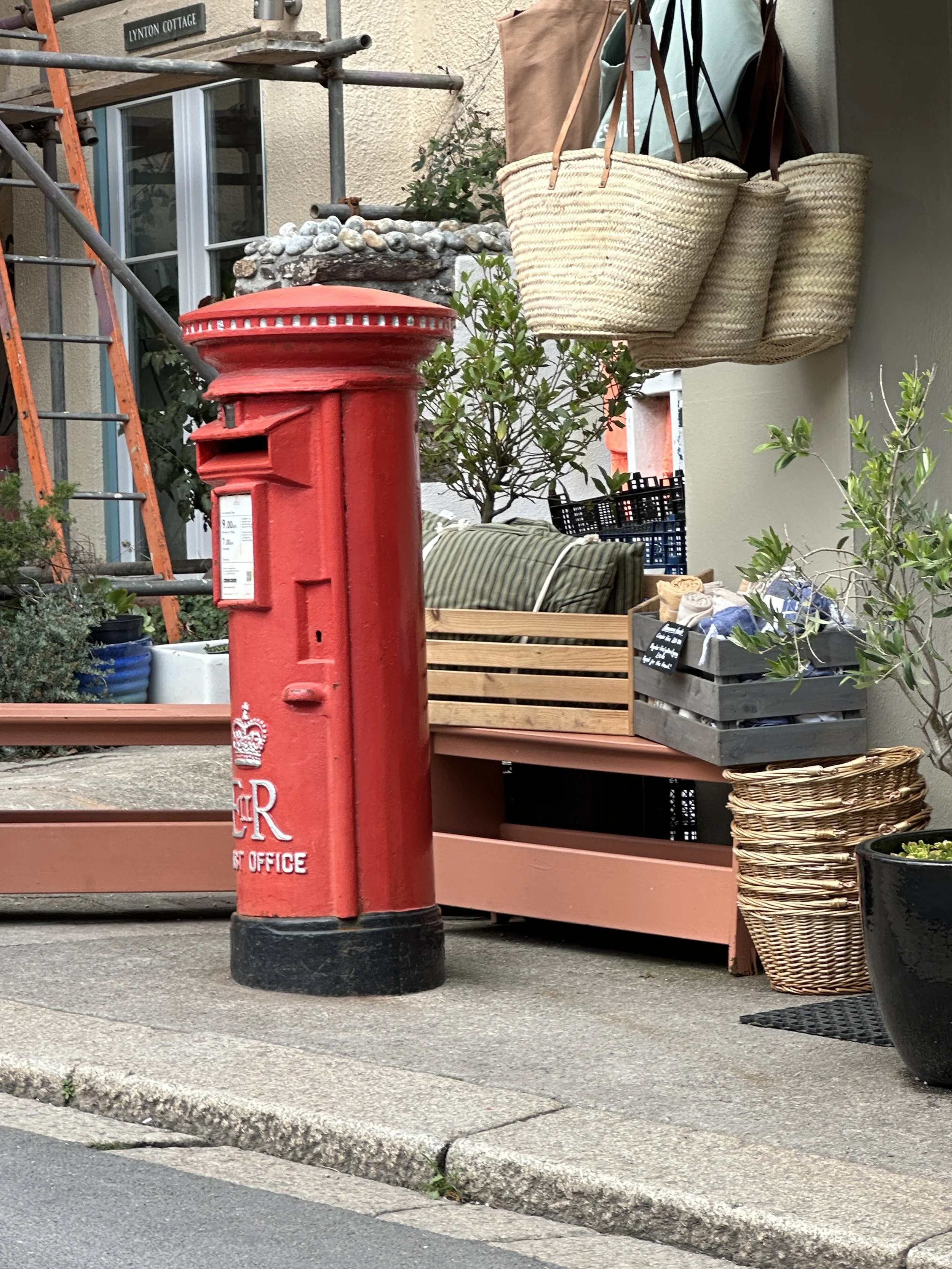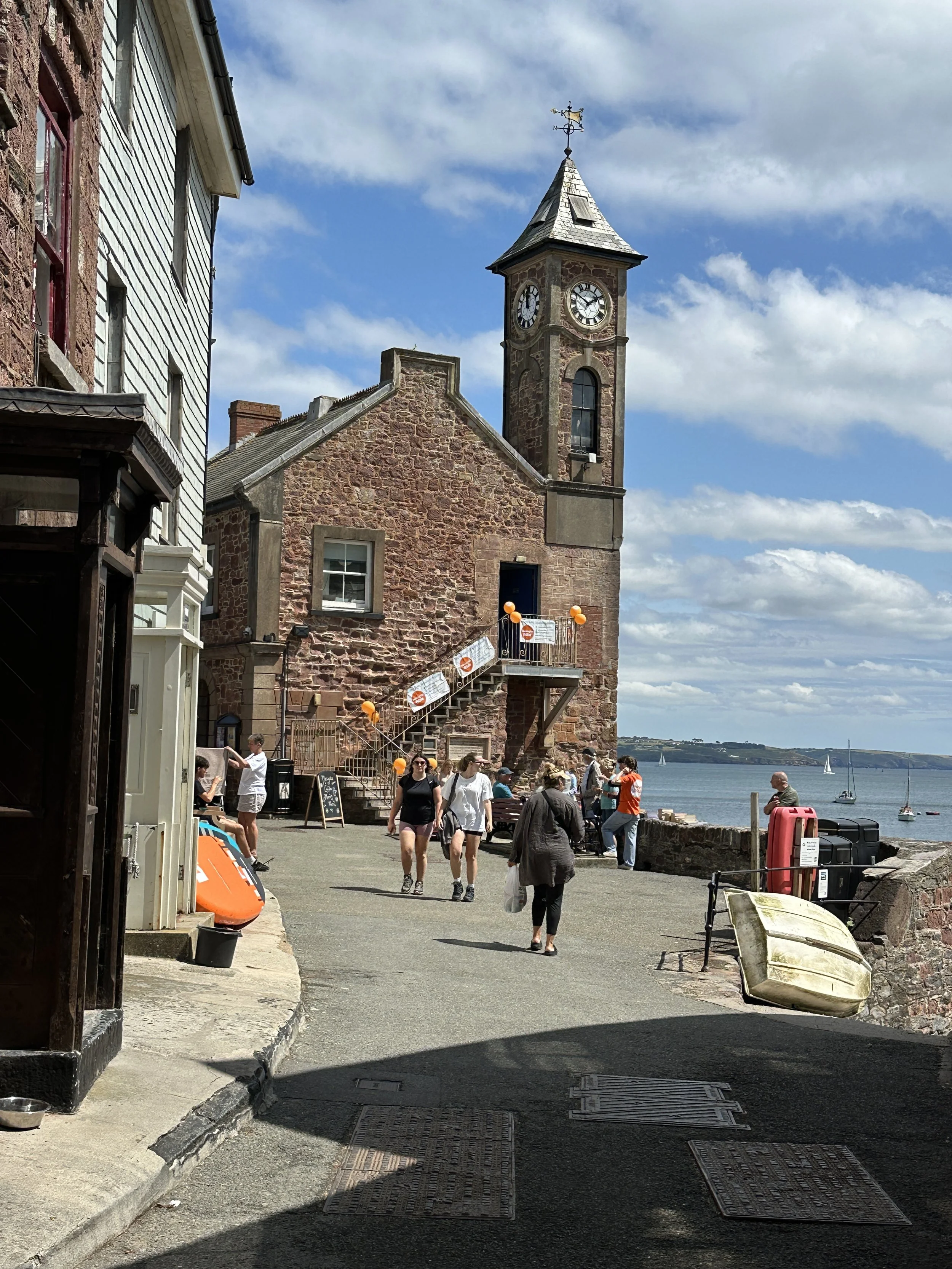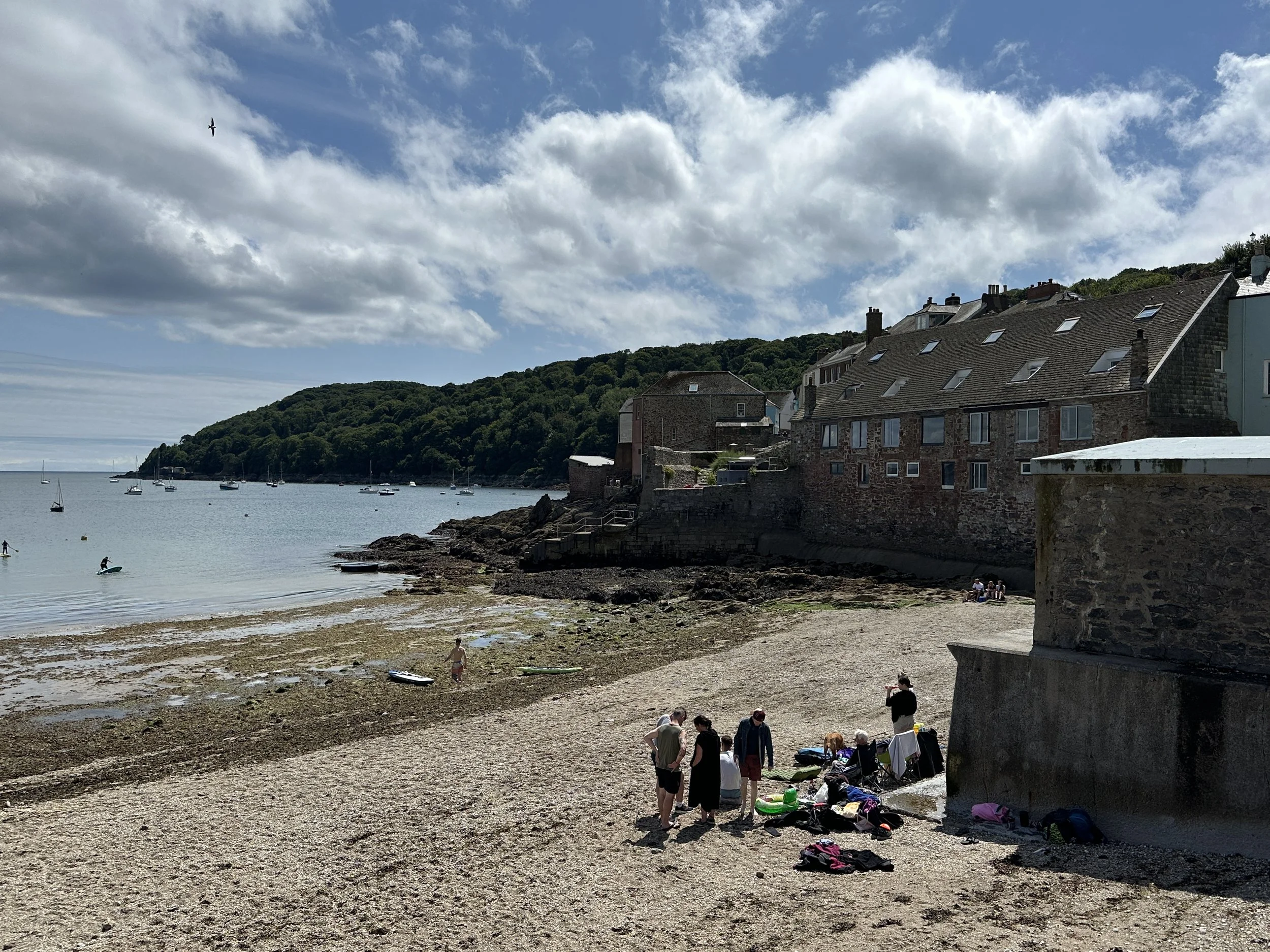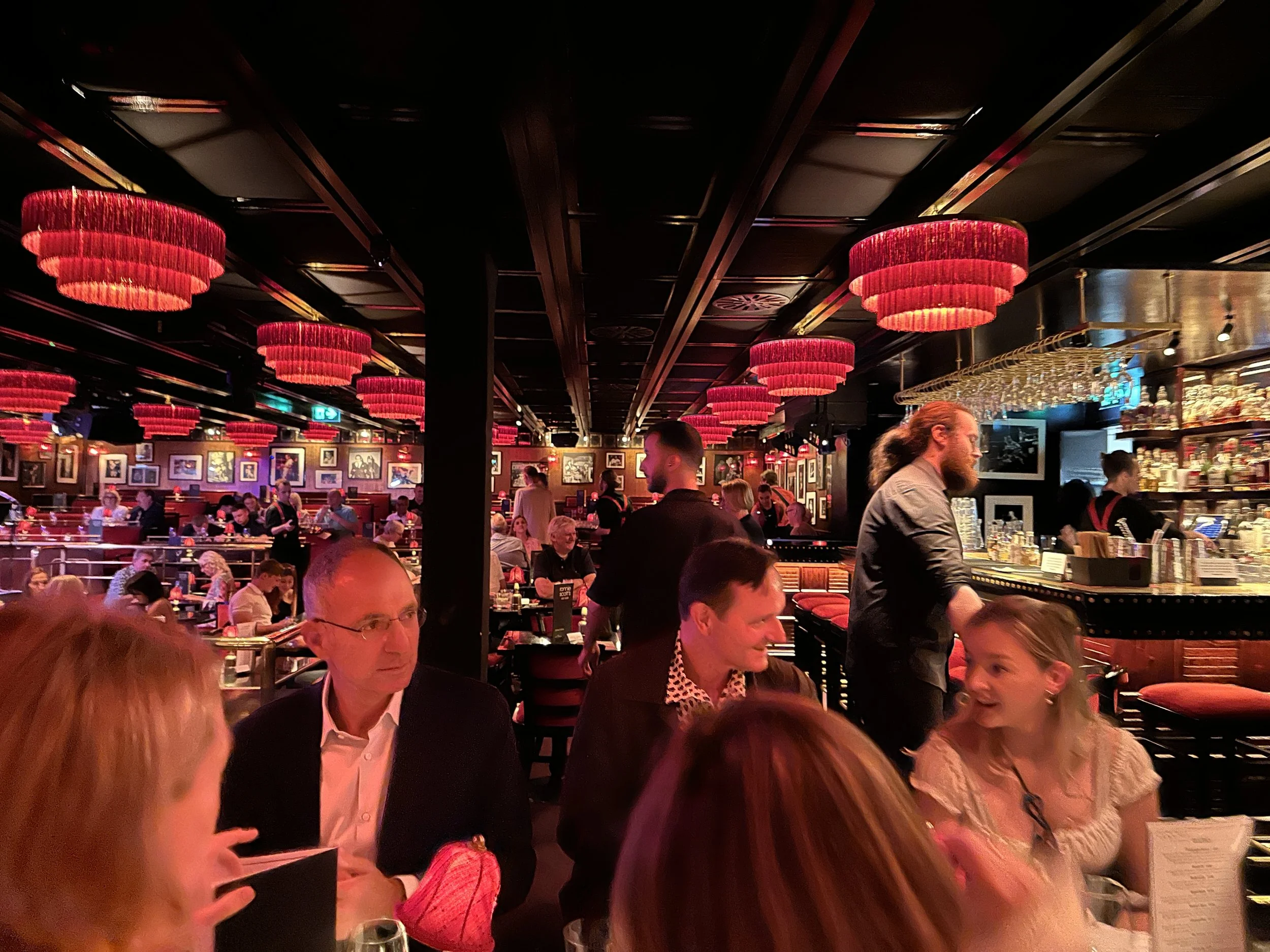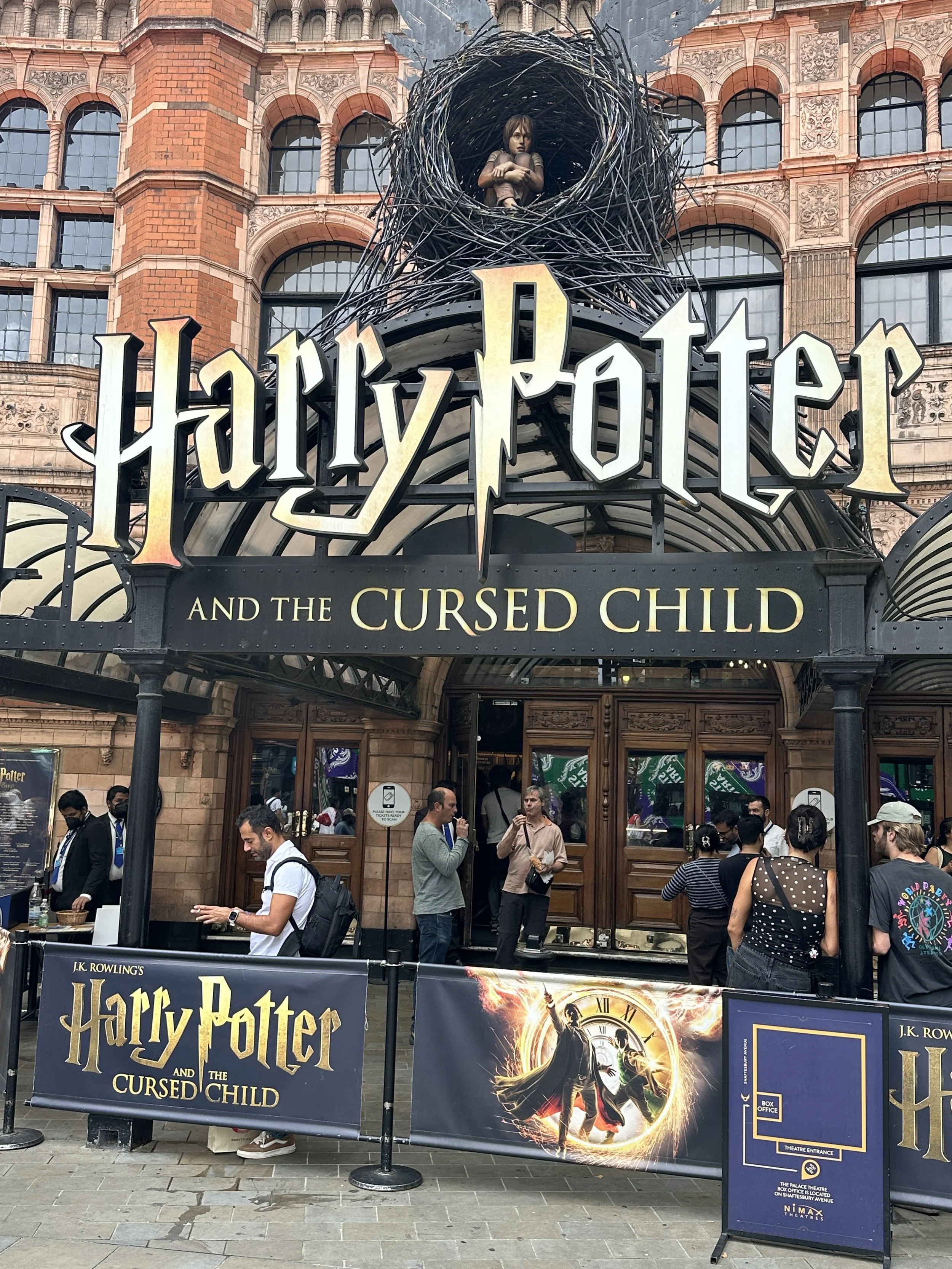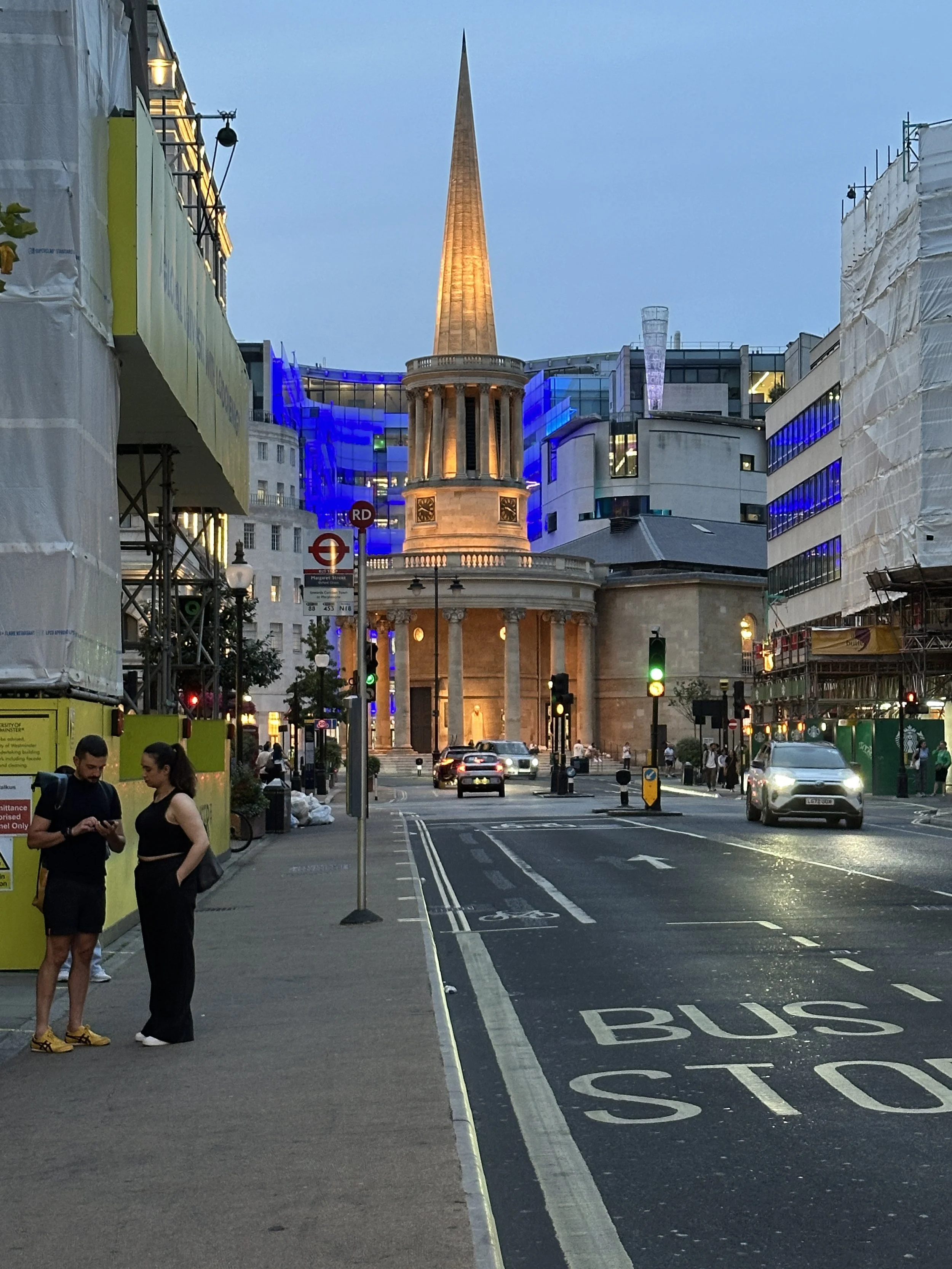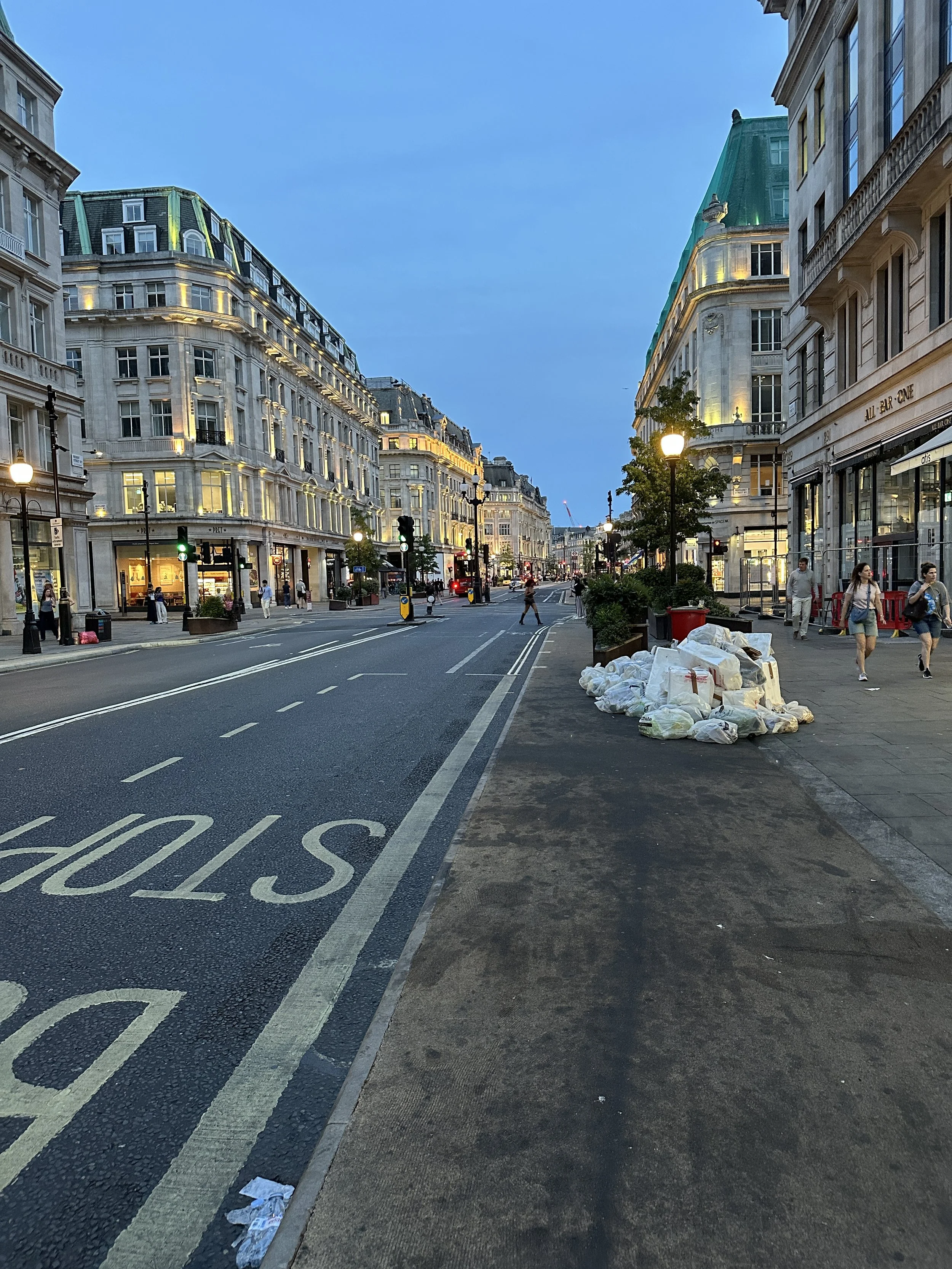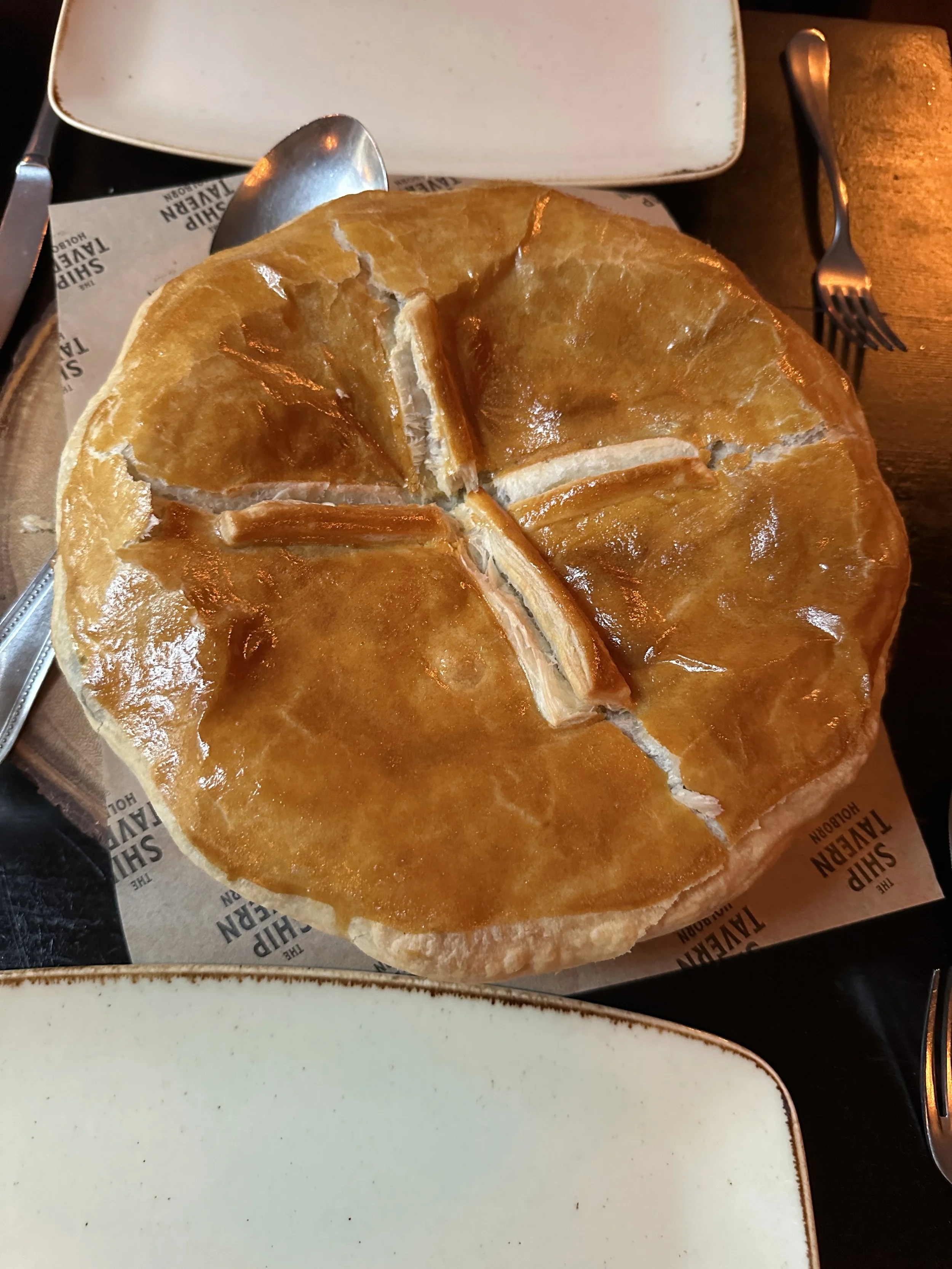Nordic Not Noir
This adventure begins with rave reviews of the Hurtigruten tours up the Norwegian coast, from two independent sets of friends. The trip starts with a Singapore airlines flight to Oslo from Melbourne, via Changi and Copenhagen in early June 2025. Scandi first before expanding scope to some Nordic then further afield. I’m looking for Vikings, and with a lot of luck some funny lights in the sky.
Oslo
Oslo in the summer! 9 ºC on arrival. Colder than home.
At the Oslo Cathedral (Norway’s national church, Lutheran) we enjoyed a wonderful sung Eucharist, beautiful organ playing alongside a spectacular choir (all or mostly women I think), with distribution of the critical Eucharist goods from all points of the church - very strategic and efficient. Whitsuntide, a public holiday in Norway. Who knew? The service was pretty full, with a wide range of ages including a surprisingly large number of young’uns — 20s-40s. An early dinner at a nearby fish restaurant comprised fish croquettes, and a ceviche made from saithe (a member of the cod family, found in the cold northern Atlantic waters), with a Riesling from the Pfalz and a local beer. Good start!
Breakfast at the Clarion Hotel is a thing of beauty and extreme indulgence. You can have an omelet, of course made by a lad from Mooroolbark; or pretty much anything else you fancy. She Who Cannot Be Named thought the waffles too sweet. Ferry to a small island (Lindøya) in Oslo fjord. Dotted with lovely little ‘summer houses’ a 15-minute ride from Aker Brygge. We walked across the island from the east ferry landing to the one on the west side for the return ferry ride, then past some impressive statues of workers around the City Hall. A sleep was in order after that, followed by a flash dinner at the hotel’s main restaurant. More fish (perfectly cooked according to SWCBN) and a very acceptable tenderloin steak. The views from the 13th floor are wonderful. After another huge breakfast, a tram ride out to the Vogelund Sculpture park, which is a large and beautiful park full of cyclists, and with an amazing collection of strange looking sculptures of people in various kinds of embrace or other activity. Nothing like Italian sculptures, these were in metal and somewhat crude, or naive, and often containing infants being held, kicked or thrown.
Next stop was the Edvard Munch gallery. What a prolific artist he was, such variety in his work. Very different techniques, very different sized works, varied use of colour (from none to wildly colourful). In the gallery containing the largest works there was a school group, I’d guess year 9s, mostly punching and kicking each other. ‘The scream’ was set in its own space, clearly the most popular attraction, very thoroughly photographed. The gallery itself is an impressive building, on 13 floors and with great views across the city and harbour.
Dinner tonight at a Lebanese restaurant Raffiné run by a Norwegian and Australian couple with Lebanese heritage. Luckily we’re getting the hang of the excellent public transport system — it works like a dream, for trip planning, ticket purchase, trip progress, and accessed entirely from an app. Goodness knows what the connectivity is costing me. However at this point I am forced to admit that while we found the correct tram, we took it heading in the wrong direction. This just provided a few minutes of panic and a learning opportunity. The meal was fantastic. See my Trip Advisor review. Oslo is an interesting town. A bit over one million inhabitants. They have plenty of waterfront to play with, and seem to be making the most of it. EVs everywhere, mostly taxis, with surprisingly few other vehicles in the central part. This is the result of government policy decisions a few years ago to get rid of cars from the city, which it seems was achieved by simply removing most of the parking spaces. So much more person-friendly, with a great public transport system (entirely electrified) to help people get around. For dinner we walked into an inner suburb immediately to our north-east, and found a new vibe. Much more down market, lively, with heaps of middle-eastern and North African people and places. The books say Pakistani people make up the highest number of migrants. We had a Punjabi curry.
Next day we met up with an old friend of Louis, then caught tram and ferry to the Norwegian Maritime Museum. Really interesting, with the wonderful bonus of a rehearsal session of a string quintet that was to be performing that evening. Of course the maritime history was engrossing, spanning some not pretty Viking action, as well as centuries of struggling to catch fish, and then periods involving travel and tourism by sea. Dinner that night at a fabulous Japanese restaurant (Genji, a 10-minute walk from our hotel in central Oslo). Another Tripadvisor review. Our last night in Oslo had us enjoying dinner with Norwegian maths and former PISA colleagues. Very nice, excellent barbecued cod, and we took gifts for the kids - wombat and whale shark soft toys for Maiken, and a solar car kit for Tim. The English language instructions shouldn’t hold him back for too long. The absence of sun might. Magali had folded the napkins to conjure up images of the Sydney Opera House. A tribute to visiting Australians.


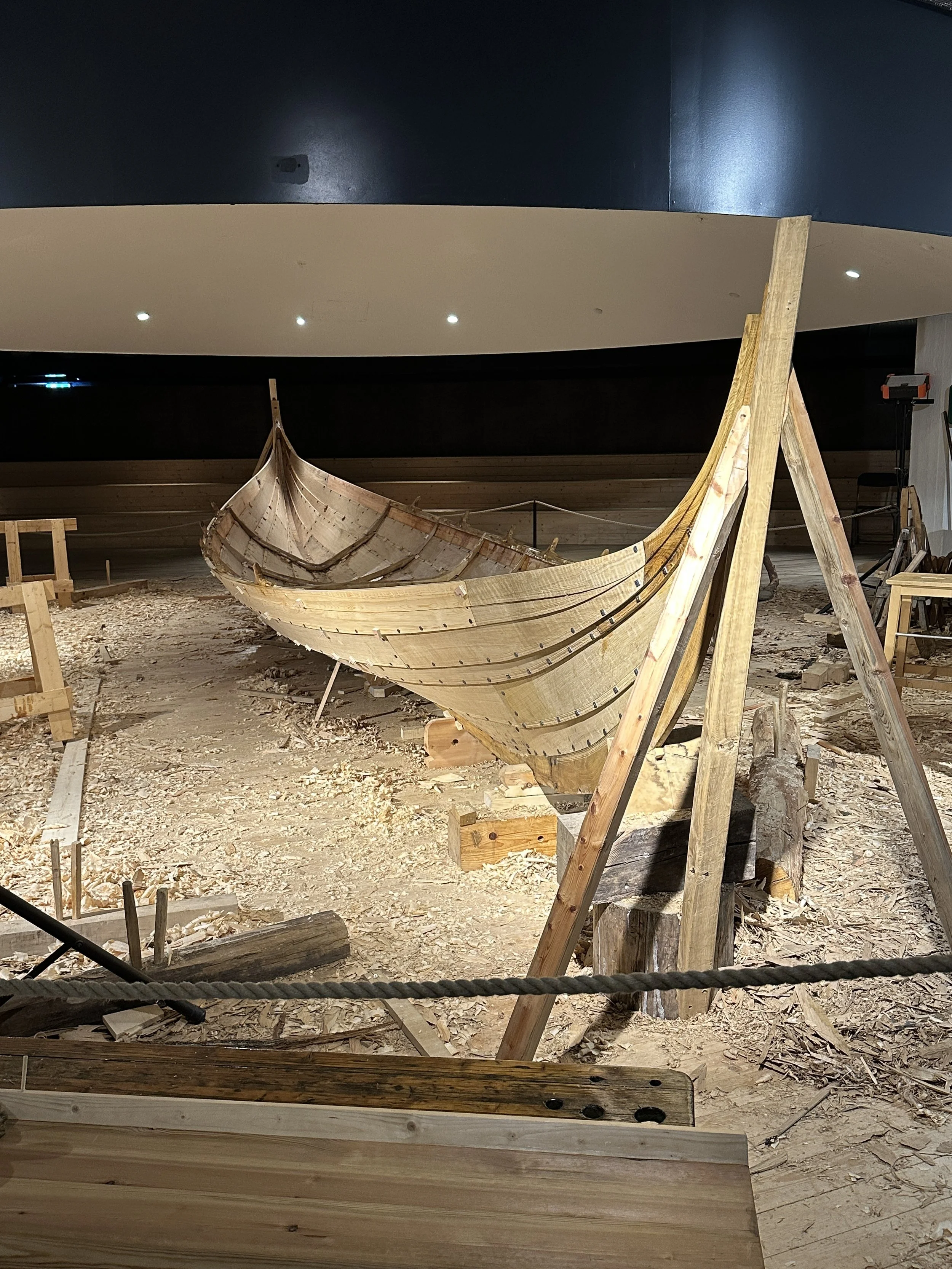

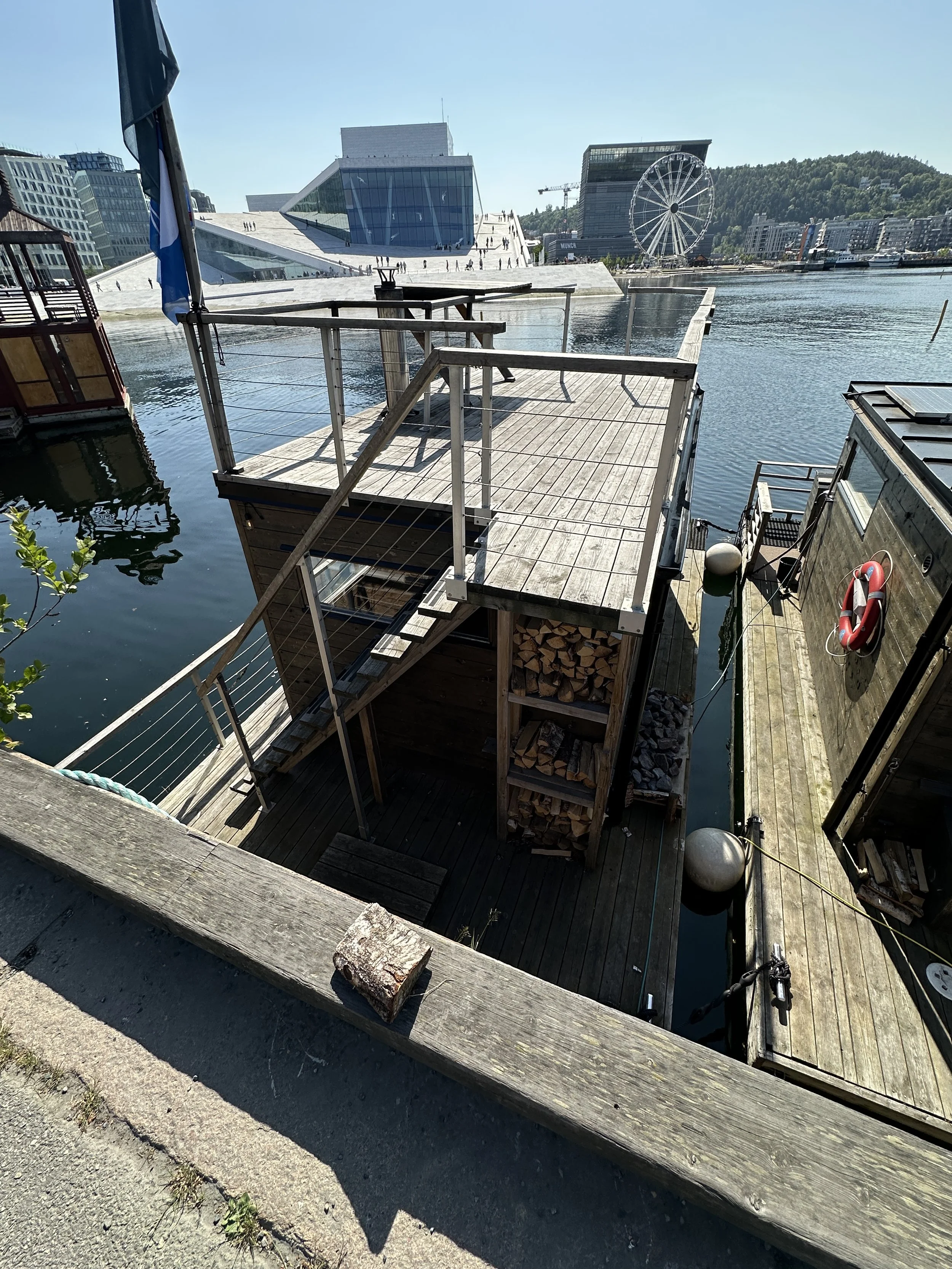


Train to Bergen
You may already know of this leg — it is apparently quite famous, crossing mountainous terrain between Oslo and Norway’s west coast. The side trip via Flåm markets itself as ‘One of the worlds most beautiful train journeys’. Myrdal, Flåm, Gudvangen harbour, Voss, Bergen. Spectacular scenery. The first part, Oslo to Myrdal by train goes through beautiful forests and runs past lakes and waterways between the steep valleys. Lots of houses, farms and small villages all along the way. Myrdal is near the top of the mountain range, and as we approached the snow was more visible, and the water surfaces became more frozen. Rushing white water at various spots heading down to the lakes we pass by. We change to the Flåm railway for the journey down through the spectacularly beautiful Flåm valley, winding down to the Aurlandsfjord below. There was a huge cruise ship in the harbour (apparently they get 5-6 of these each week at this time of year, the fjord is narrow but quite deep enough to take them). Among the staff at the hotel were two Argentinians, here for the summer season. What a life!
Next morning we get onto a very modern boat - carbon fibre, electric powered - to travel through Aurlandsfjord and Nærøyfjord to Gudvangen. An extraordinary trip through a narrow fjord, with the towering cliffs on each side of the boat, cascading water from the melting snow, pretty coloured houses in the small villages dotted along the bottom of the cliffs. Markets itself as one of the world’s greatest boat rides. It seems to be a very long fjord, which I imagine eventually goes to the sea. We will get off soon for a bus ride to Voss for the next overnight stop before continuing to Bergen. Really interesting to look at the direction of water flow, so as we got got higher towards the watershed, then seeing the water flowing towards the coast rather than back towards the back of the fjord. Plenty of white water kayaking going on, looks like fun (theoretically). Fleischer’s Hotel in Voss is yet another marvel, built in the late 1800s, and retaining a lot of its old charm. Bathrooms leave a little to be desired, but the art deco pool was extraordinary.
Bergen
This is a very pretty harbour city, build around a narrower and more dramatic fjord than was Oslo. More interesting (and older looking) architecture, some apparently dating back to the Middle Ages and the Hanseatic League (a grouping of merchants and traders from nearby countries who got together to protect and develop their interests as traders). Our taxi driver very helpfully pointed out some places of interest, insisting there is more to do here than in the capital, such as a gondola ride up to one of the several hills that surround Bergen. He refused to accept that a Danish friend of ours could have been involved as an architect in designing interiors of the Grieghallen (the city’s concert hall, honouring Edvard Grieg) 50 years ago (the driver claimed to remember when it was built, but I suspect some anti-Dane sentiment was clouding his logic). The fisketorget (fish market) was a short walk from our hotel, and we headed there after a short rest for a magnificent early dinner. The freshest melt-in-your-mouth sashimi you could imagine, some smoked mackerel, and a wonderful tuna salad. The weather has gone a bit south, it’s drizzling, misty grey, cold. Apparently Bergen is the wettest place in Europe. I guess the boat will have a roof. Can’t wait! Might need to defer the visit to the Grieghallen until we are passing back through here after the cruise.
Hurtigruten — Northbound
Bus transfer to the Hurtigruten terminal, followed by a long check-in queue to get in, was exciting as the time for the cruise approached. First item on the agenda is lunch, served at one of the 3 restaurants on the MS Trollfjord. We will be eating quite a lot of fish. Fortunately it is delicious and beautifully prepared. Hurtigruten is Norway’s preeminent and perhaps oldest coastal shipping company, dating back to 1893, now specialising in coastal tours but still delivering cargo up and down the coast. About 430 passengers and 80 crew accompany us on this trip, at least for the first part of the journey. We are going all the way up, as far as Svalbard (an island lying between the Norwegian mainland and the North Pole), and then back, while some will only go one way then fly back. Our cabin is squeezy, but perfectly adequate, with a window on the port side, meaning our view on the way up the coast is potentially toward the open sea. However we hardly see any open sea, as the Trollfjord sticks pretty close to the coast, and weaves in and out of the islands, promontories and fjord mouths that make up Norway’s west coast. It really is the most spectacular place. Jet lag combined with the long hours of daylight (appr. 3 am to 11 pm at this latitude) continue to affect my sleeping, and most of the ship’s public spaces close up at midnight so the only option is to wander the upper deck. Wonderful views of the mountains near and far, the water, the rocky shores, the villages and farm houses we pass, etc. On the way in to Ålesund and Andalsnes we see salmon farming pens similar to those in Macquarie Harbour (Tasmania). Possibly less environmentally problematic because there is a much bigger opening to the ocean, and the farming looks less intensive here, however Google tells me there are environmental, sustainability, and fish health issues here too. We will dock in Andalsnes for a few hours today, some passengers will participate in various optional side activities, we might just look around the town.
It seems that a couple kinds of events trigger extreme swarming behaviour, as if a freshly killed sheep had been tossed out in the Australian summer sun. The first event is meal time on the Trollfjord. Many of our fellow travellers appear not to have eaten for days, or fear that extreme levels of hunger will be their fate imminently, should they not get first access to the buffet. The second event occurs shortly after the Trollfjord docks in some soon to be besieged Norwegian village. The best that can be said is that the locals might get a little extra business for the duration of the stopover. This is at the cost of having to put up with aimless and hazardous meandering all over the streets, having to deal with people speaking in an impossibly wide range of languages, a lot of window shopping and not much buying, and other swarming behaviours.
The top of Romsdalsstigen, accessed via a gondola from Andalsnes, afforded yet more fabulous views of snow-capped mountains and the most gorgeous valleys below. This area seems to be a place for serious climbers, with a climbing museum and training area next to the gondola station. In the supermarket I found a packet of licorice all-sorts that had some brown layers. Maybe it’s made from Norwegian brown cheese? Tonight’s dinner was served a la carte to an arranged table, rather than as a buffet with ‘open seating’. We were on a table with four people from UK, which forced us to talk to new people. They were all university educated retirees with deceased spouses. Classical whinging poms. Eventually we all traded our stories. Quite good wines available (we drank a very acceptable Gentil Hugel — a blend of Riesling and other grapes from Alsace — and some luscious Hungarian Tokay with the dessert). Tomorrow evening we will cross the arctic circle. A celebration of that event is planned, with everyone invited to join in on the upper observation deck, ushering in a few days of ‘midnight Sun’. The engineered groupings of this whole scene can be a bit grating. I’m half expecting a PA announcement that Bingo will begin in 10 minutes in the lounge. Announcements of various events (eg, the daily meetings by language group, or ‘whales sighted now off the port bow’) are sporadic and can be irritating but can also add moments of excitement to the routine. A few minutes ago the announcement told us we were about to pass by Torghatten, a rock with a hole passing right through about half way up. Imagine that! Something to do with trolls. The ship’s captain even tooted the horn to let them know we were passing.
We pulled in at Træna for a stopover of about 4 hours. Our chosen activity for the afternoon was the ‘arctic swim and sauna’. Two very zany women led us on a ten-minute walk to their torture chamber where we changed into our swimming gear, and proceeded to get in the drink (11º C), followed by a stint in the sauna (85º C, even hotter on the top level with the steam and towel-waving routine). Water-sauna-water-sauna (plus beer)-water. Surprisingly fun. Of the 10 victims, I think 5 were Australians. I’m open to your explanatory thoughts on the numbers here. Australians may have an image of toughness, but Norwegians are tougher. They learn to be this way from a very young age in the early learning gulags where they have their daytime sleep in their pusher outside in the snow. No exceptions, they spend time outdoors no matter the weather — there is no such thing as bad weather, only inappropriate clothing. My friend Andreas was responsible for two little kids during parts of the COVID lockdown periods, and with his wife Magali working from home he resorted to taking the kids out the back to the forest most days, and lighting a fire for warmth and to cook food for the day.
The arctic circle lies just a few kilometres to the north of Træna and the crew made a thing about passing that point a little later in the evening. A large proportion of the passengers gathered on the deck for a small ceremony introducing the Captain and other crew members, the local Norse god of the sea (Njord) made an appearance, there was another treat involving ice being tipped down the back of people’s neck (a sacrifice was needed to call on Njord to grant us fair weather), the ship’s horn was sounded as we passed a cairn marking the location of the 66º 34’ N latitude circle, and a general mood of joy and celebration descended. Next stop was the Lofoten islands, with some 170 km of islands and peaks forming the ‘Lofoten wall’, stopping at a village called Reine. We caught the local ferry for a shortish trip that stopped at a few small villages around the Reinefjord. The passengers were mostly young hikers and climbers, some with pretty serious climbing tackle, being dropped off to hike, climb or camp in the mountains nearby. The car park next to the dock was full of camper vans. Not the nicest campground I’ve seen. Perhaps most of them were just parked while the inhabitants were off hiking and climbing.
While sitting in the Panorama deck lounge I saw very briefly my first whale of the trip, as we travelled further north along the Lofoten peninsula. Small, a bit similar to a humpback, but I don’t know if that species is found in these waters. Our next stop will be Tromsø, Norway’s fourth largest city (popn. approx 80,000). The water is extremely calm, not a breath of wind, it’s like sailing on glass. This means that the ship can steer into an extremely narrow fjord, it’s namesake Trollfjord. The walls are close and steep, giving us some hundreds of meters of water depth. The ship enters and nearing the end of the fairly short fjord the captain performs a turning manoeuvre several times, more or less doing donuts.
We enjoy this over a very pleasant dinner with Peter and Marianne who are two retired Swedish doctors. We are eating in Brasserie Àrran, the ship’s Sami-themed restaurant. It’s midsummer, which is a very special night for Swedes so the dinner includes some aquavit and the Swedes sing a special song to celebrate. It’s the longest brightest day of the year, and we are lucky with the very fine weather. Tomorrow in Tromsø is expected to be even better. The Polar museum in Tromsø made us realise that we know a bit about explorations of the South Pole but not so much about the ones up here, even though many of the same people were involved. Roald Amundsen for example. Such privation and hardship in the many attempts to be the first there, and the Norwegians obviously feel an enormous sense of national pride in this part of their history. Today’s lecture in the theatre was about Sami culture and history. We listened to a Mari Boine recording of her performing a ‘Joik’ called Gula Gula. Beautiful form of folk singing. This region was inhabited about 12,000 years ago as the ice sheet covering Scandinavia during the last ice age melted. Sami people came to live in the northern regions of what is now Norway, Sweden, Finland and the western part of Russia. They followed the reindeer on their migratory treks to the coast. All of the reindeer are owned by the Sami families, and they still look after them, moving them about from island to mainland according to the season. Of course very interesting to see the parallels between their treatment and marginalisation and that of Australian Aboriginal peoples.

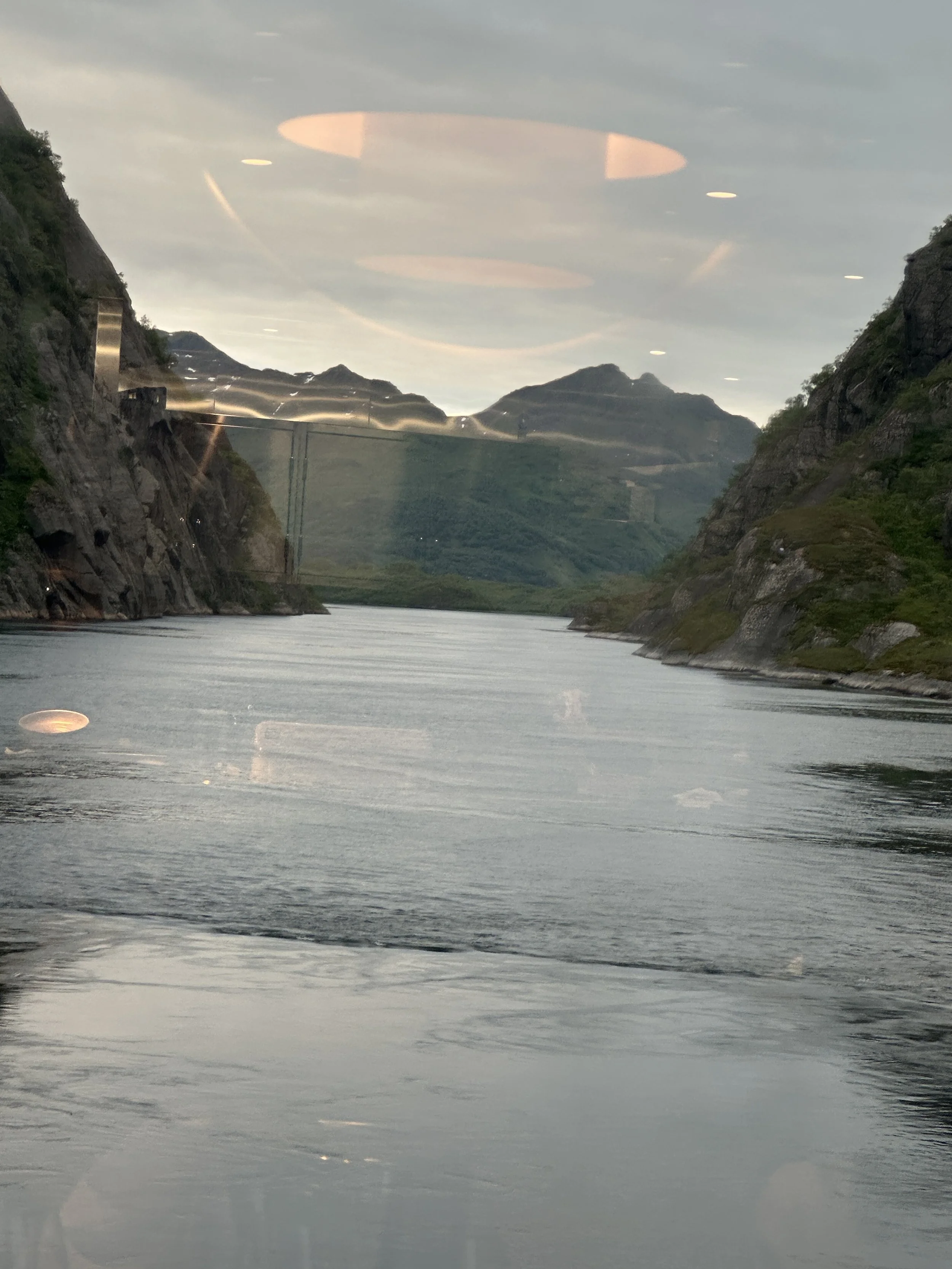
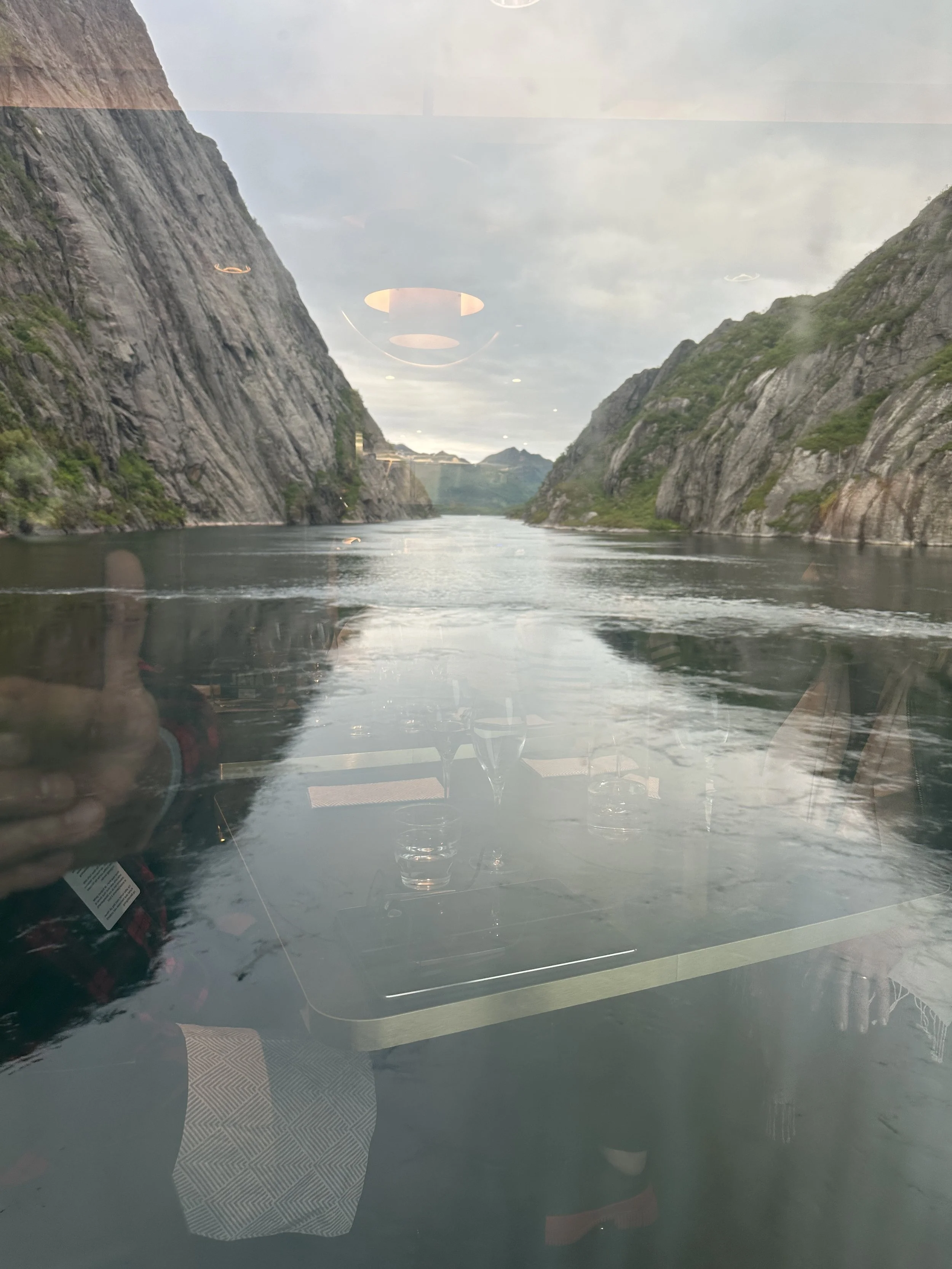
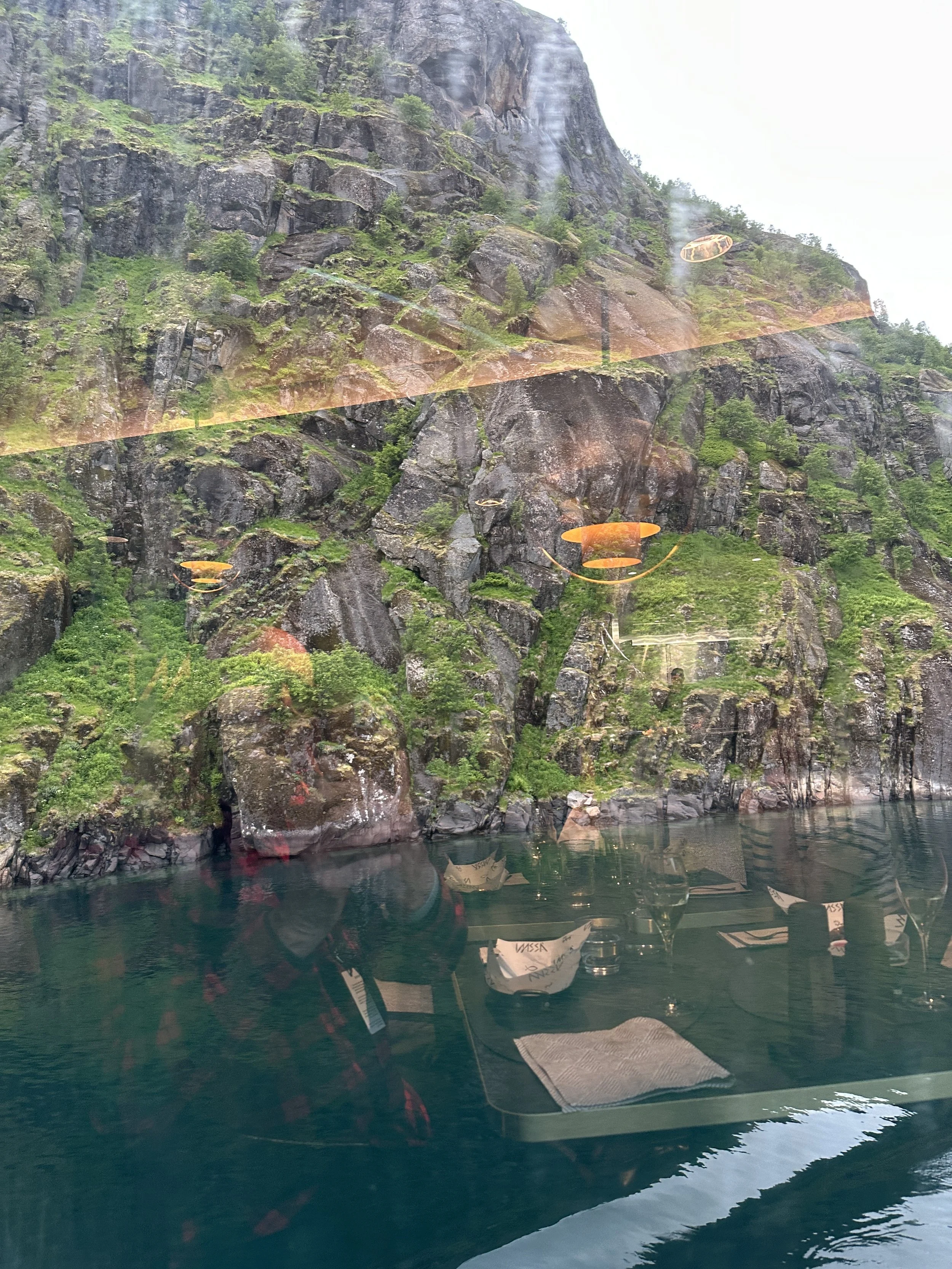
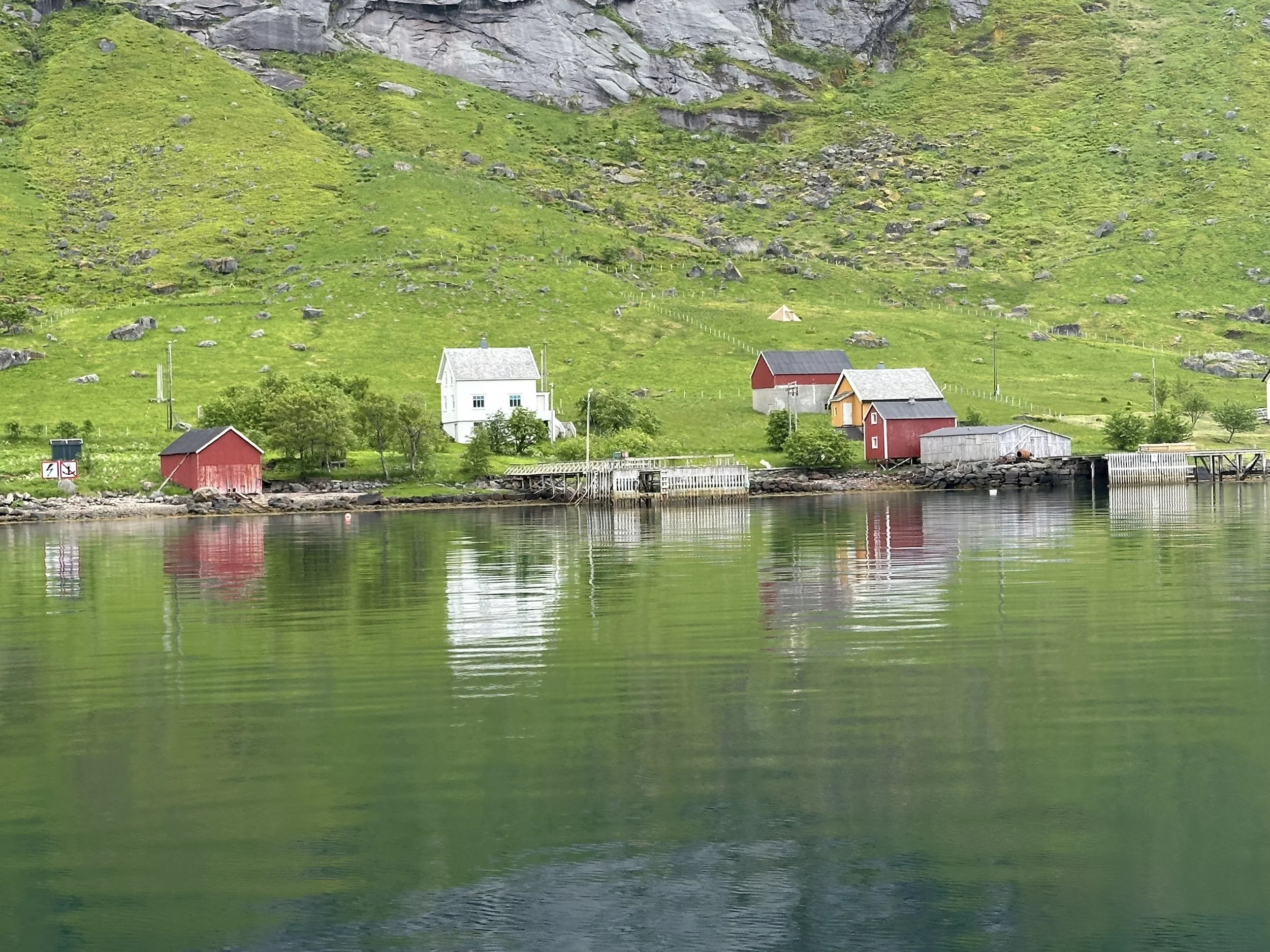

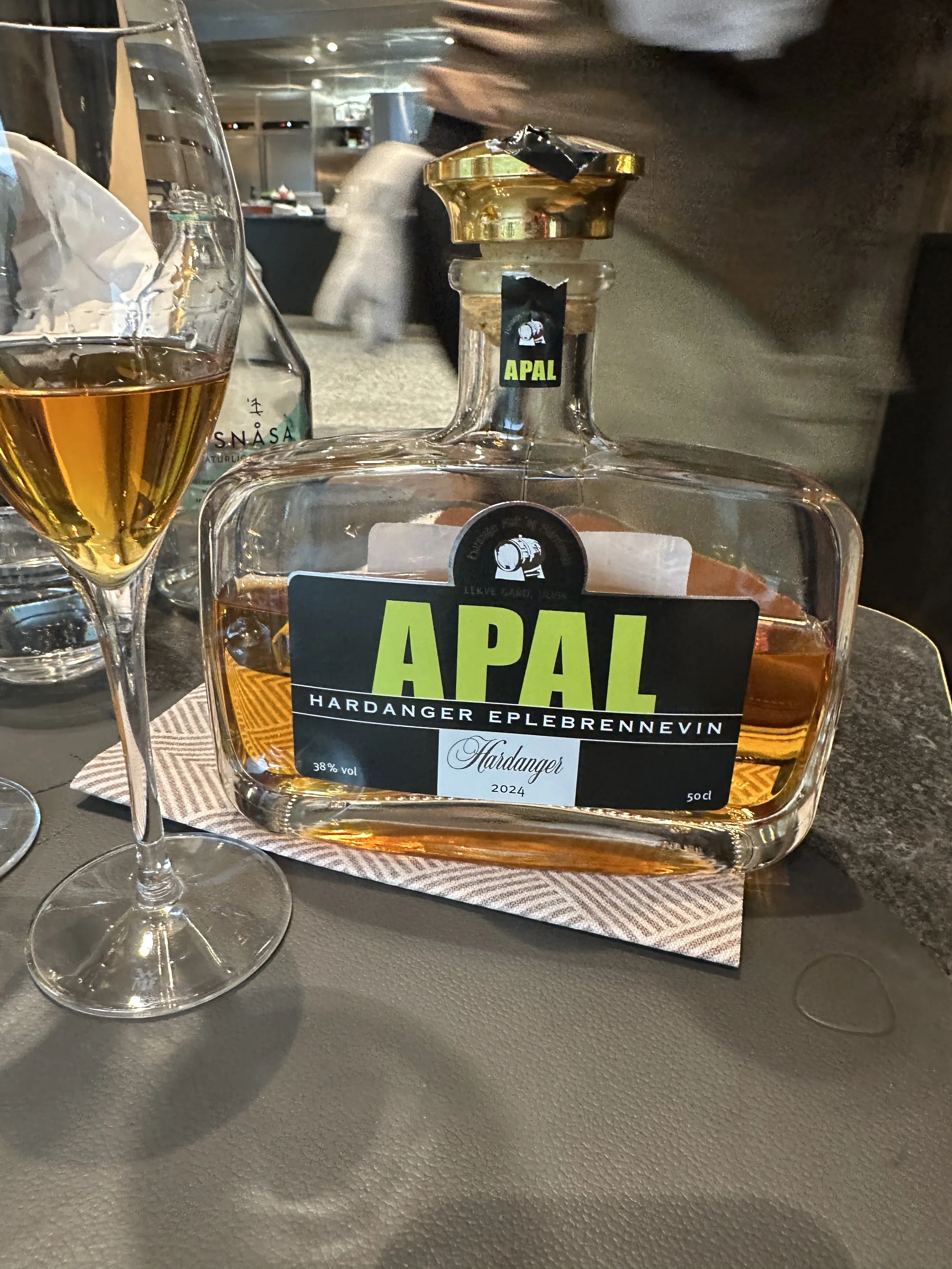
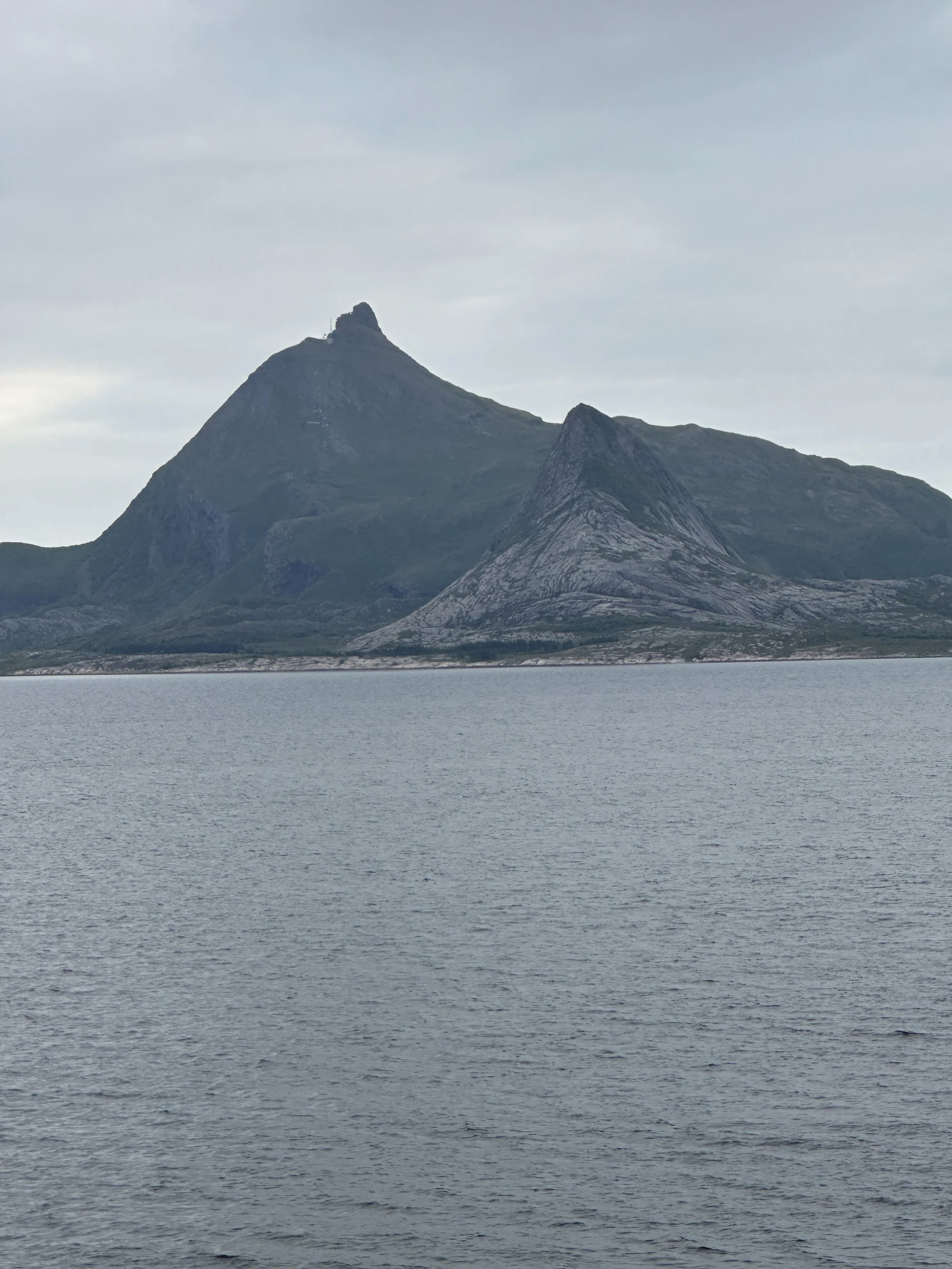
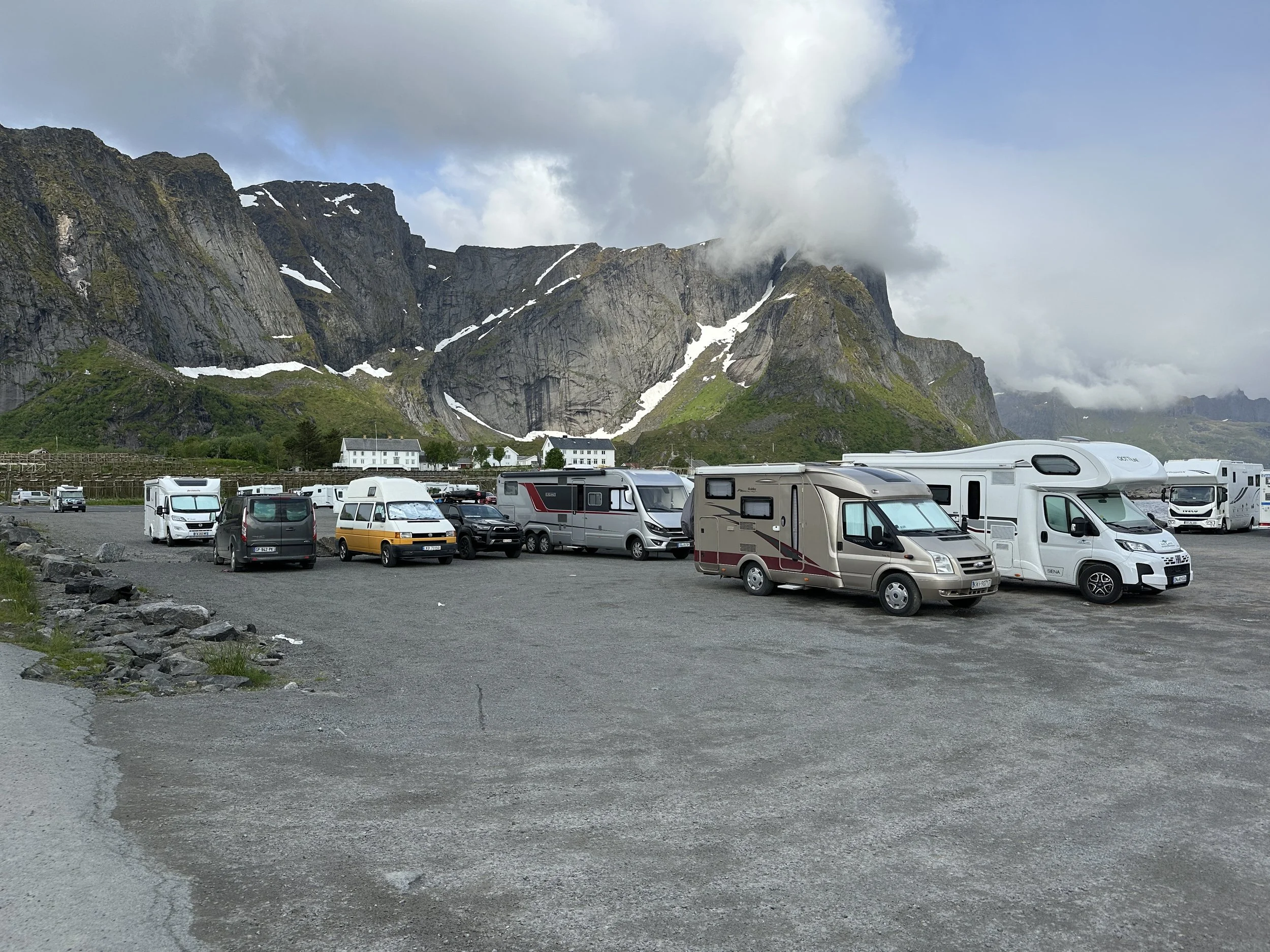
Approaching Nordkapp (North Cape) took us all up another notch in excitement and anticipation. The most northerly place on Earth that can be reached by car. We disembarked at Honningsvåg for an early walk around town, a delicious warm home-made cinnamon bun in a cafe by the harbour. SWCBN engaged the cafe owner in conversation learning first that she had been here for ‘only’ 30 years after falling in love with a local fisherman, and second that her daughter was about to return home to Honningsvåg after having qualified as a pharmacist at Tromsø university in order to take advantage of a government support program that will let her buy and take charge of a fishing vessel. What a life, and how extraordinary that the pull of home can be so strong even in a place as harsh as this. Then a bus ride to the cape. It was cold and windy. Perhaps 4ºC, at 71º (and a bit) N. A group of motorcyclists were taking each other’s photos after stripping down to their bare torso. Real men.
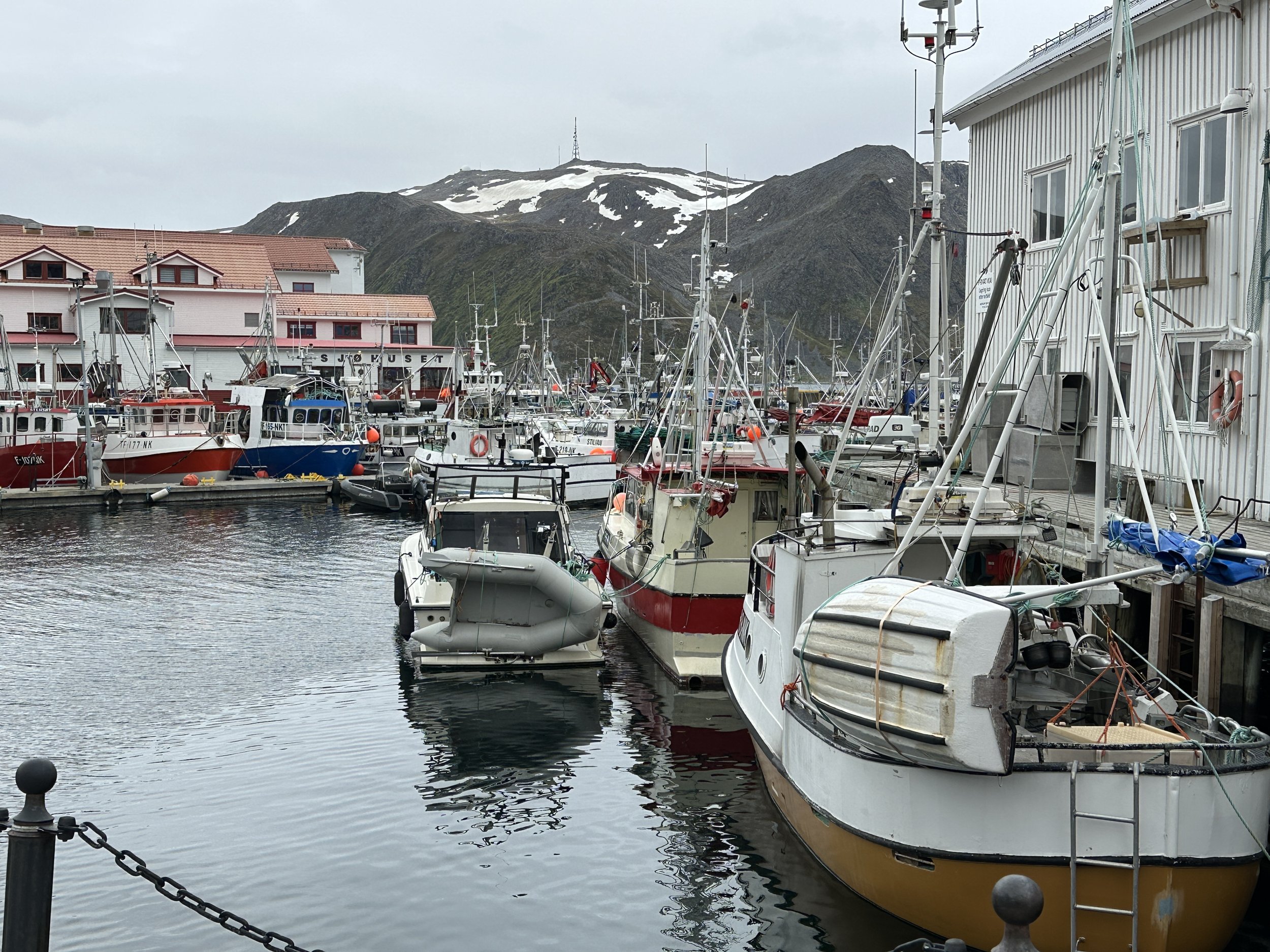
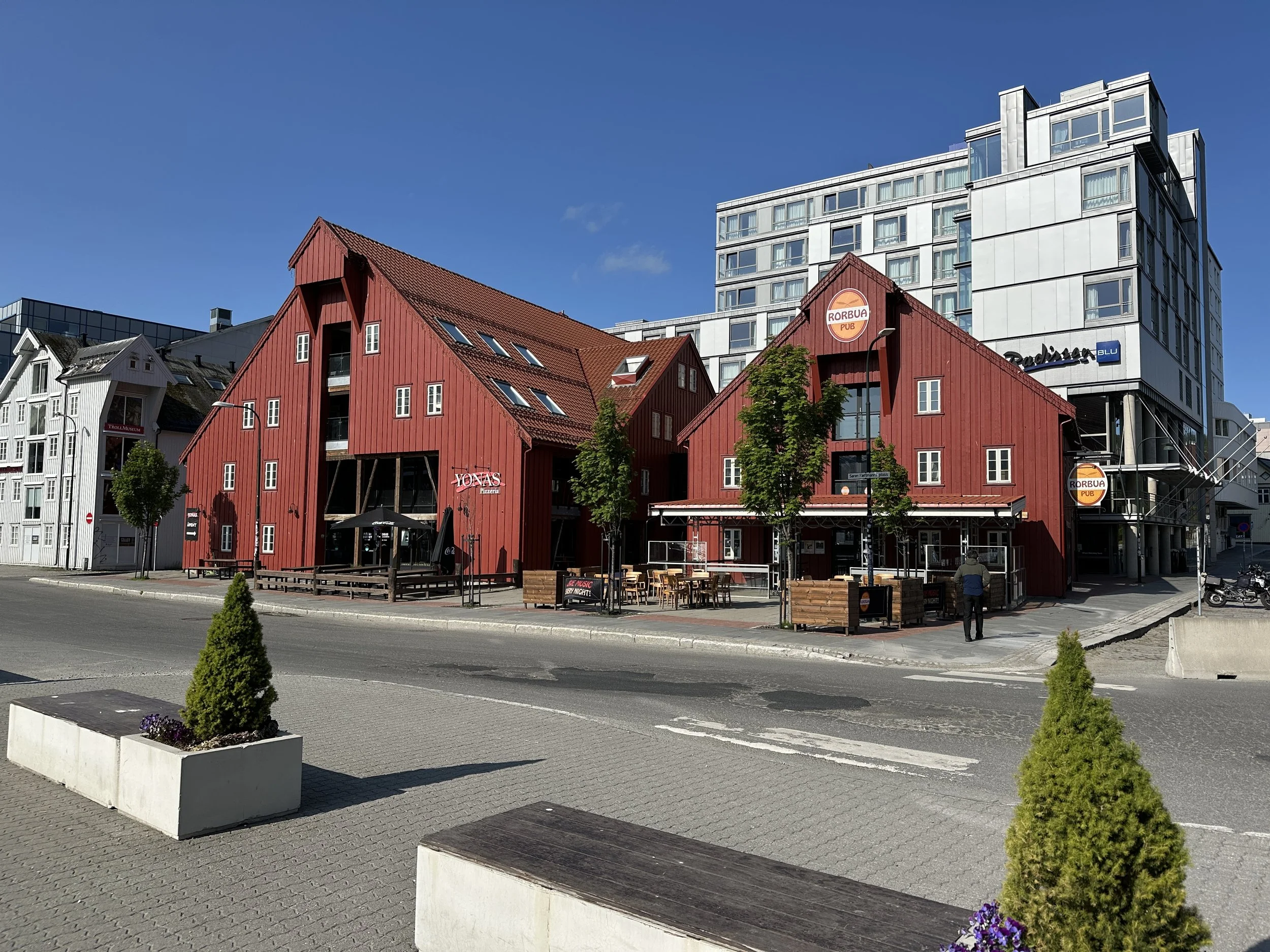
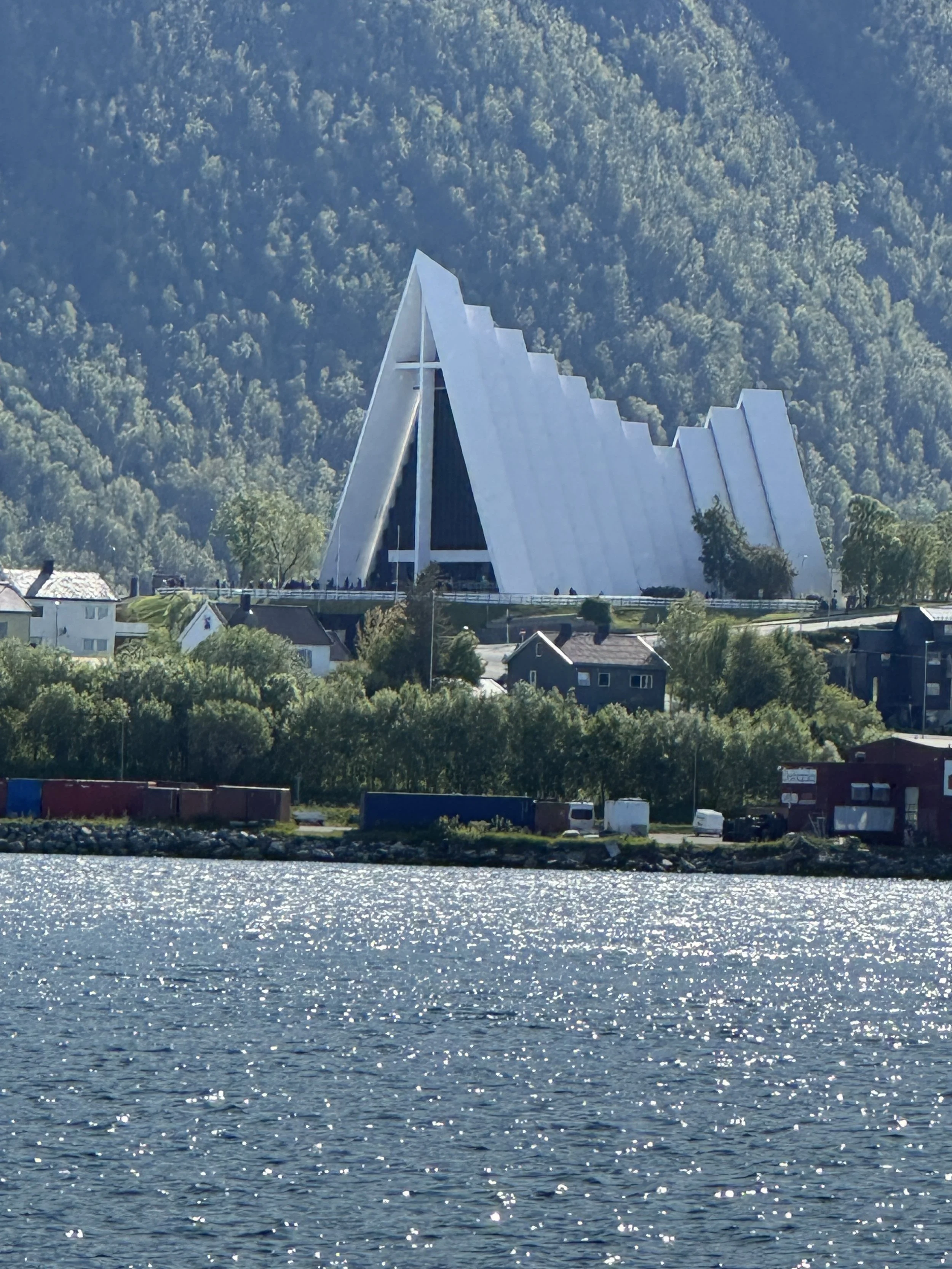
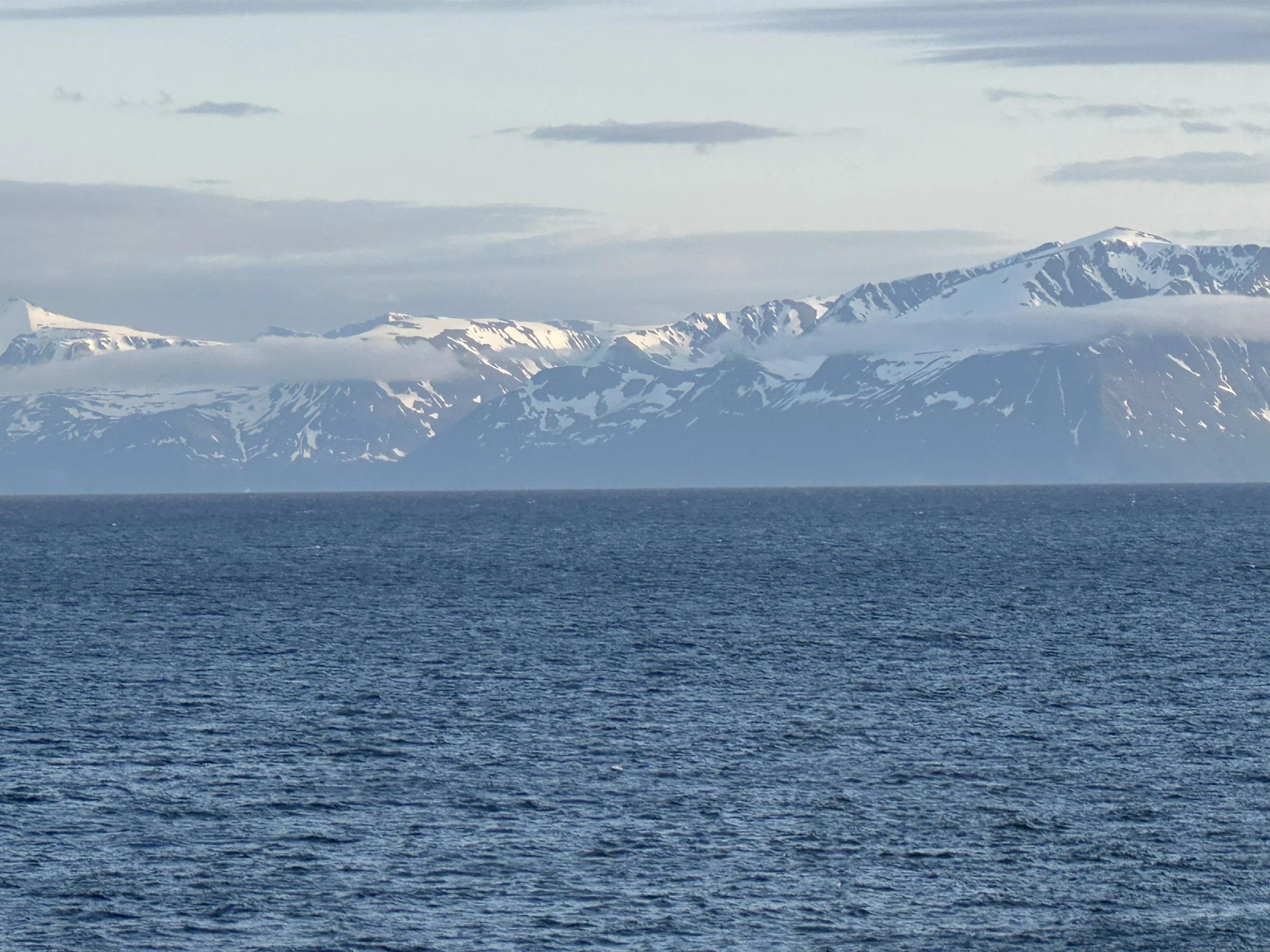
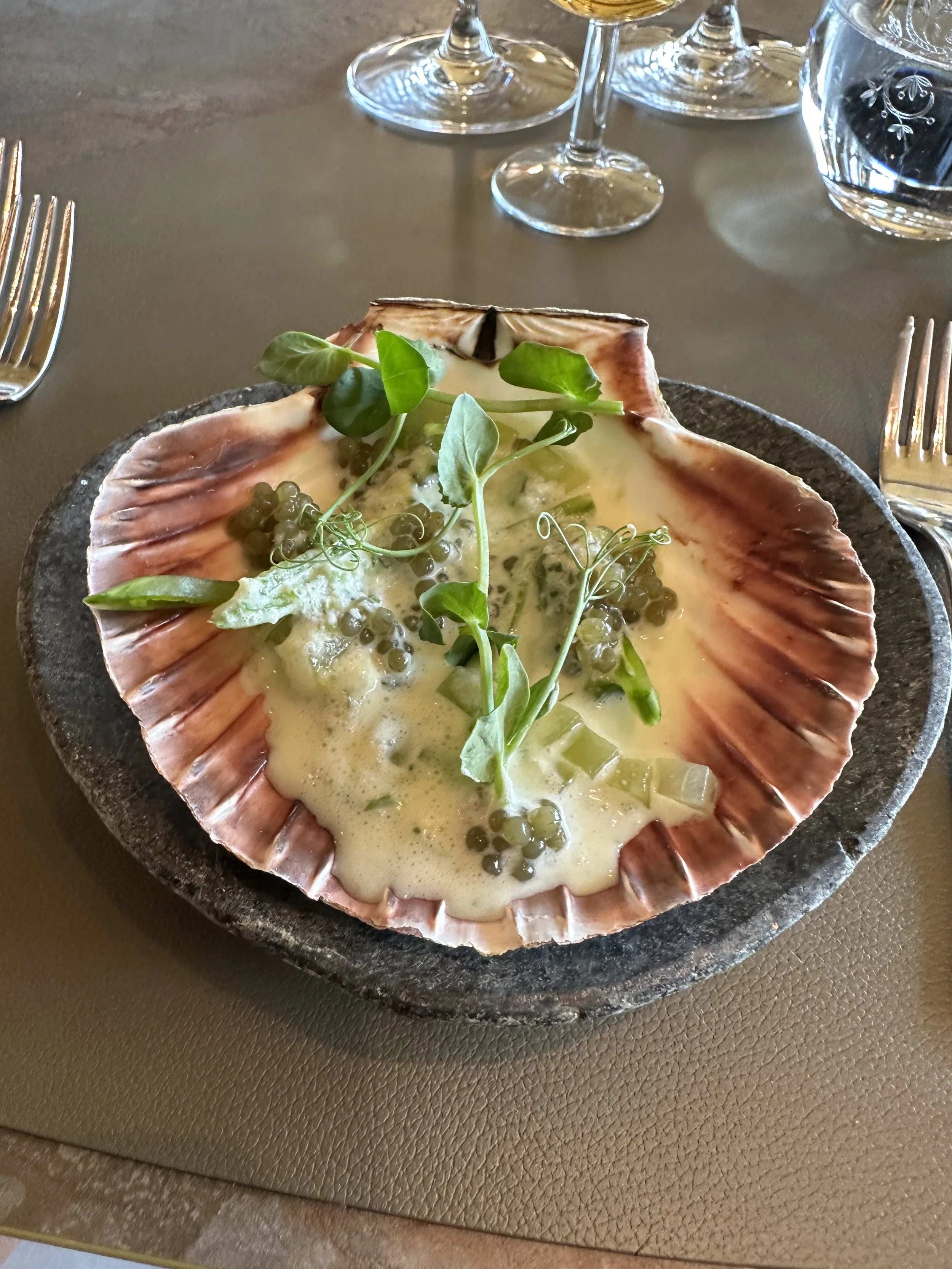
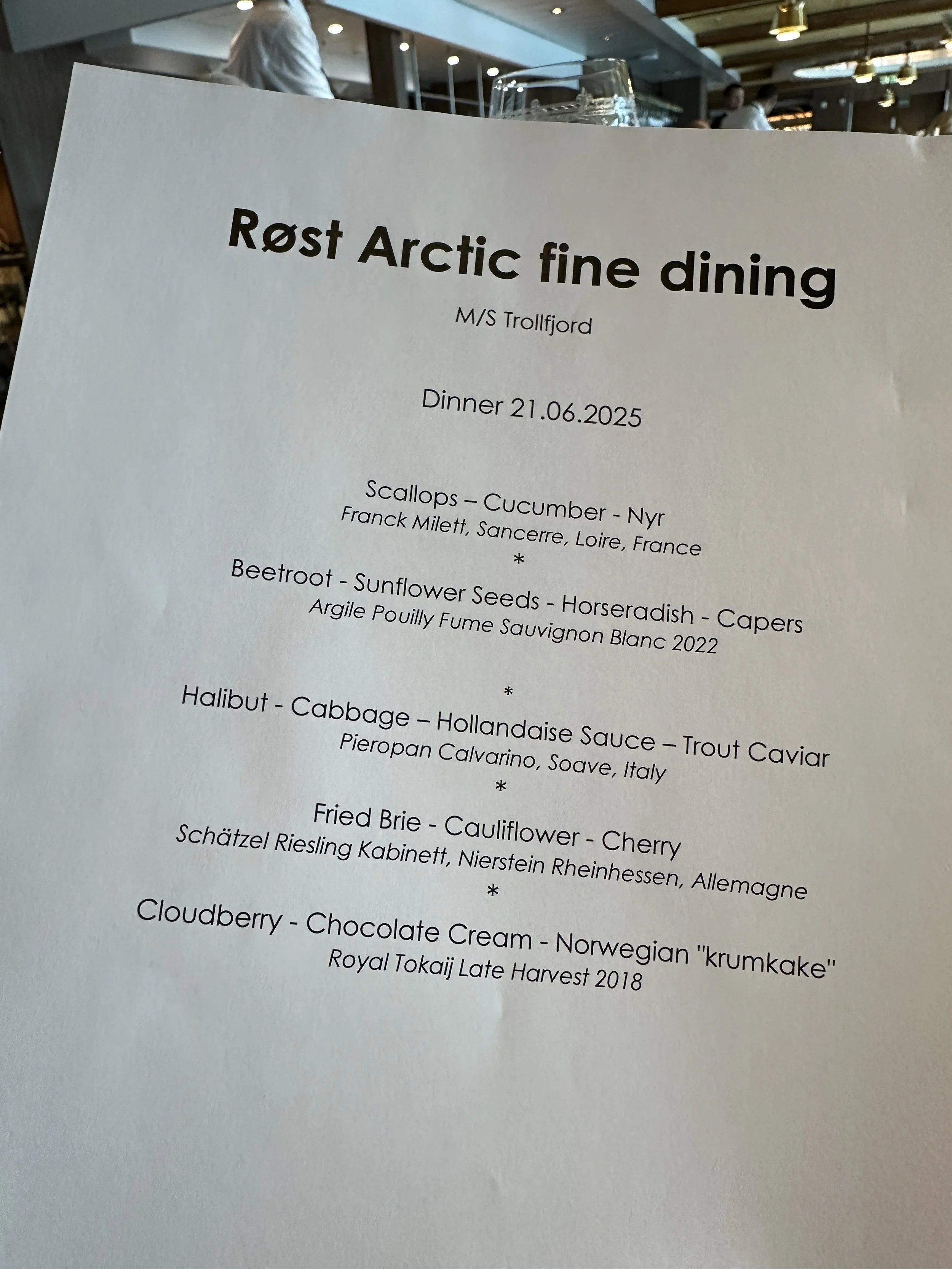
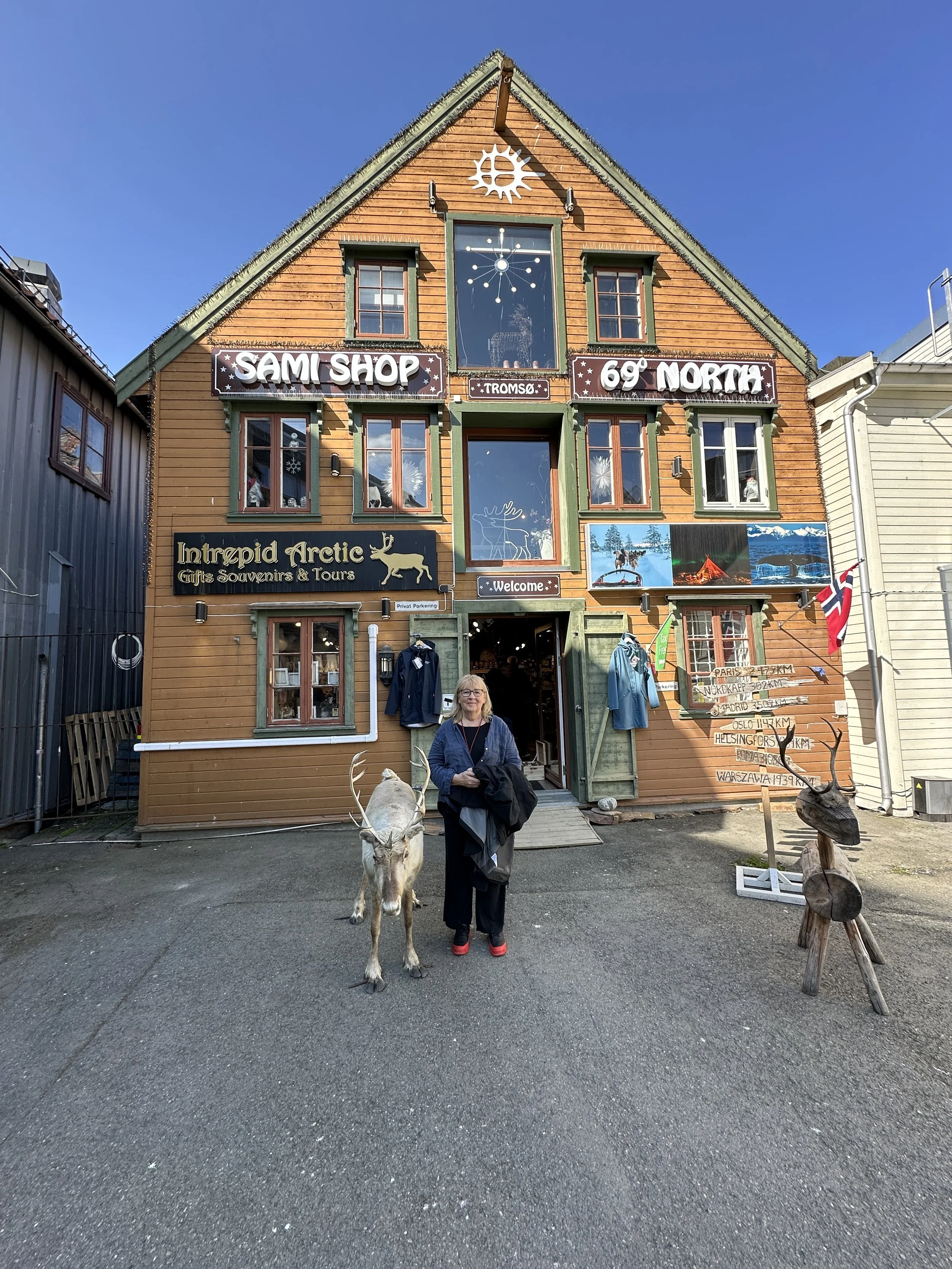








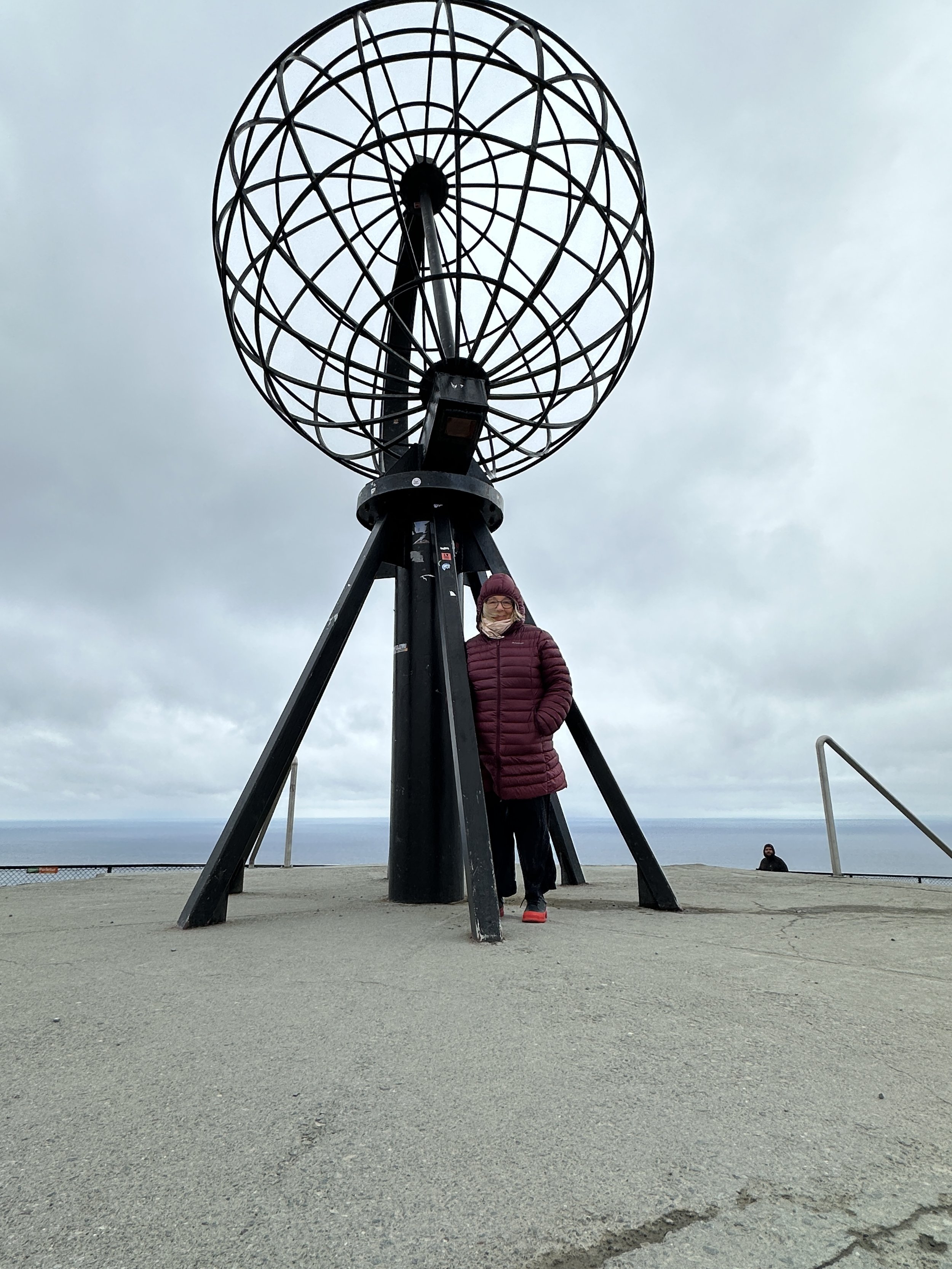
Once back on the ship we continued north heading across open sea towards Svalbard. We will stop twice on Spitsbergen (Svalbard’s main island): at Longyearbyen where some passengers will disembark and head home or continue their travels by other means; and then on the following day at the Ny-Ålesund research base. A mandatory briefing on acceptable behaviour there warned us about various risks, including from polar bears. The trip across from the Norwegian mainland to Svalbard takes about 44 hours, but because the seas are so calm the Trollfjord is making better time than usual. A briefing on whales was useful (our familiar friends the humpbacks are indeed the most common of the many whales sighted here). We see several dramatic sprays from whales quite near to the side of the ship. No dramatic breaching yet. More whales later on during and after dinner, just very quick glimpses. As the bottom of Svalbard comes slowly into view the sea is as calm as it’s been. Magical.
There’s a guy playing the piano in the main bar. He’s Bulgarian, studied in France. Earlier in the week he was singing while playing, a mix of songs of the kind many of the passengers would remember fondly from earlier years. Quite a lot of Elton John. Last night he switched to some jazz improv and dropped the singing. It was better. Svalbard is an ‘arctic desert’ archipelago that is formally part of Norway, and is subject to a treaty that gives several countries access for various (mostly) conservation-related purposes. For example the Russians have a now mostly disused coal mining settlement. Inside the fjord leading to Longyearbyen (on the island of Spitsbergen on Svalbard) we see heaps of sea birds including puffins fishing for their breakfast, and small ice flows that have drifted off the massive glacier in front of us or that are just leftovers from the last winter freeze. Towards the end of the fjord the captain is doing donuts again to make sure we get a good view of the Nordenskiöld glacier. Over 2000 people live here, including students at the University Centre of Svalbard. The mining activities have almost completely closed down, leaving fishing, a global seed vault, tourism, various services, and the University Centre as the main remaining activities.
A young Dutch fellow came here for a holiday a few years ago and stayed to contribute to and build a business around dog sledding, developing a range of dog-related activities. We went on a wagon ride with husky teams pulling the wagons. They now look after over 200 dogs, and there seemed to be 3 or 4 different companies competing for the business. After the wagon ride we were taken to the place where the dogs live, and we were fed with brandy and freshly made waffles with jam, in a kind of mountain hut. Outside it was cold, and this is the middle of summer. It got up to 8ºC, with not much wind. I was still cold. There was a small group of tents pitched next to the airport. I cannot see myself ever coming here to camp. Overnight to the next stop, even further north, at Ny-Ålesund at 78º56’ N. This is pretty much solely a research station, with several different countries each having its own research facility, doing various things related to climate, weather, glacial activity, flora and fauna, fish, oceanography, pollution, and i wouldn’t mind betting some are doing security-related work. We were instructed to turn our phones onto flight mode in order not to risk interfering with the delicate instruments being used to collect data here. Indeed the ship’s wi-fi was turned off for the duration of our visit. We got a more complete version of Roald Amundsen’s story, including seeing the mast to which his zeppelin had been attached before his historic 1926 balloon trip directly over the North Pole, when he dropped the Norwegian flag to mark the polar location for the first time. Walking anywhere outside the immediate bounds of the Ny-Ålesund village requires being accompanied by someone carrying a firearm. This is to reduce the risk of polar bear attacks of which we have been warned. We can see a huge glacier across the other side of King’s Bay, with at least three very wide tongues of ice falling away into the fjord. The Hurtigruten ship comes up here twice a month during the summer to deliver whatever goods and equipment are ordered, and as a stopping place for the tourists. Quite a few of our fellow passengers, and some crew, went in for a polar swim (sans sauna) in the 4ºC water.
Hurtigruten — Southbound
There are plenty of birds out here, I wish I had brought binoculars. A couple of large gulls, little awk, skua, arctic tern, puffin, kittiwake, fulmar, albatross, and another collection when on shore, such as herron, geese, ducks, sandpiper. We saw one white tailed sea eagle, huge. The lecture on birds of the arctic helped. The lecture on navigation did not. The chief navigator may have been good at navigation, but he could not explain his craft. Mind you I did learn a new word: buoyage. I’ll be looking for an opportunity to use this. Tonight we also saw orcas, and a large pod of dolphins. We’re heading back to Tromsø to drop off rubbish the ship picked up in Svalbard, then further south for a number of activities around the island of Senja. Timing is a bit tricky, we will need to miss dinner as the Trollfjord docks at about 5.30 pm, with various excursions starting at 6 or 6.30. The dinner buffet is brought forward a little, but we prefer to explore the village of Torsten before our rib-boat coastal exploration.
The Torsten Brigge is a gorgeous little pub by the harbour, and SWCBN chats up the proprietor. A lovely craft shop nearby with gorgeous knitwear made by the shop assistant’s aunt. A 15-minute bus ride to another lovely little village where we are suited up in weatherproof gear for a little exploration of a bit of the nearby coast. Lovely little islands with heaps of birds of different kinds. I spot a seal. We see a white-tailed sea eagle and its nest and two chicks, heaps of cormorants and their nests and chicks, many black-backed gulls, glaucous gulls, white sandy beaches, aqua waters, it’s calm and sunny — the warmest day of summer so far. These excursions facilitate meeting and chatting with new people, some of whom aren’t rude French. Our rib-boat has Americans, English, French, Germans, a local driver, and a guide who had previously worked as a guide in Svalbard. She asked us to guess how much the fishing industry was worth, my guess was miles off — the correct answer is in the many tens of billions, second only to oil/gas. Local tourism is building but is only a tiny fraction of the fishing industry. And the financial importance of the industry takes precedence over some pretty serious environmental concerns. One of these is that the salmon pens sometimes get holes so that the farmed fish mix in open waters with wild salmon, I’m guessing the result can be spreading of diseases into the wild salmon population, but also doing something to the gene pool. From Svolvær on the Lofoten peninsula we did another rib-boat trip around the nearby islands. As we passed the cod-processing works the driver pointed out the smell, which he called the smell of money. We were looking for sea eagles of which we found heaps. The largest bird of prey in Europe. Their numbers have started to build up again very strongly after they became a protected species in 1968. They are now ‘exported’ to other European countries to help rebuild populations elsewhere. Overnight we drop below the arctic circle, and stop for a few hours at Brønnøysund, the midpoint between Norway’s north and south capes. It’s Sunday, and raining, so we stay on the boat — a quiet morning of reading will not hurt.
We will head next to Ålesund, where we will get off the Trollfjord and on to a bus for a tour of the mountains and fjords surrounding that area, with the plan of returning to the ship at a pick-up point somewhere further up the Hjørundfjorden, part of one of the biggest networks of connected fjords. To get to Ålesund we need to head out to the open sea, and the weather has also turned south with the roughest water we have seen so far. Not too rough, the Trollfjord is pitching up and down a bit, and this is forecast to continue for a few hours. We arrive a little late in Ålesund, so have to get on the bus straight away. The driver gives us a little tour of Ålesund, a very pretty town with heaps of art nouveau architecture instituted after the town burned down in the early 1900s. I’d like to know why there are so many fires in Norway. Is it the wooden buildings? Is it better data collection? Viewing the landscape from a bus is different from the boat-based views. We head up to a place that overlooks the beginning of the Geirangafjord. All spectacular. We go to a village called Hellesylt where there is a motorcycle that was wrecked by Tom Cruise when he starred in one of the Mission Impossible movies. The bus ride ends in Sæbø, where we are transferred back to the Trollfjord by tender, what a great day.

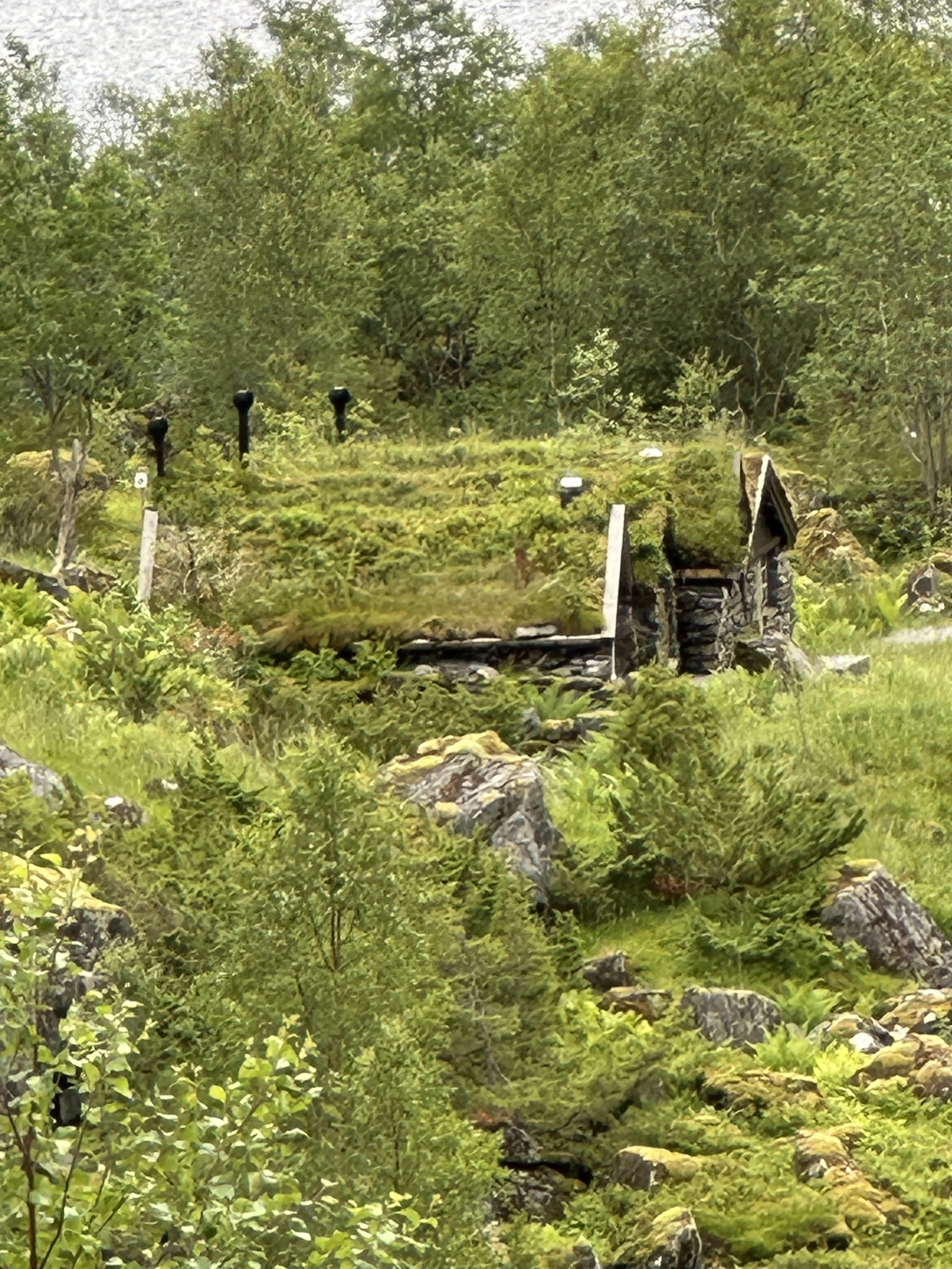
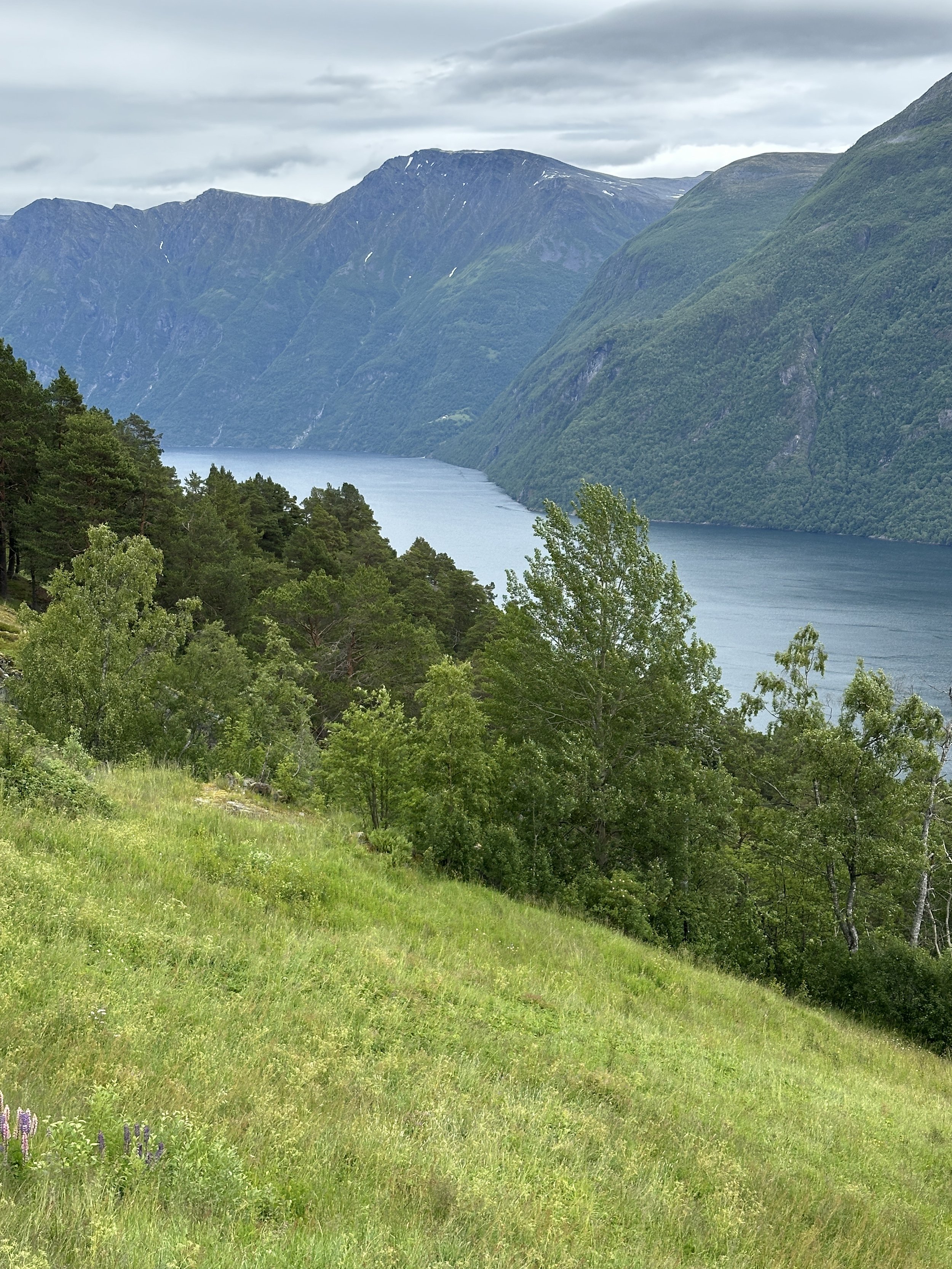


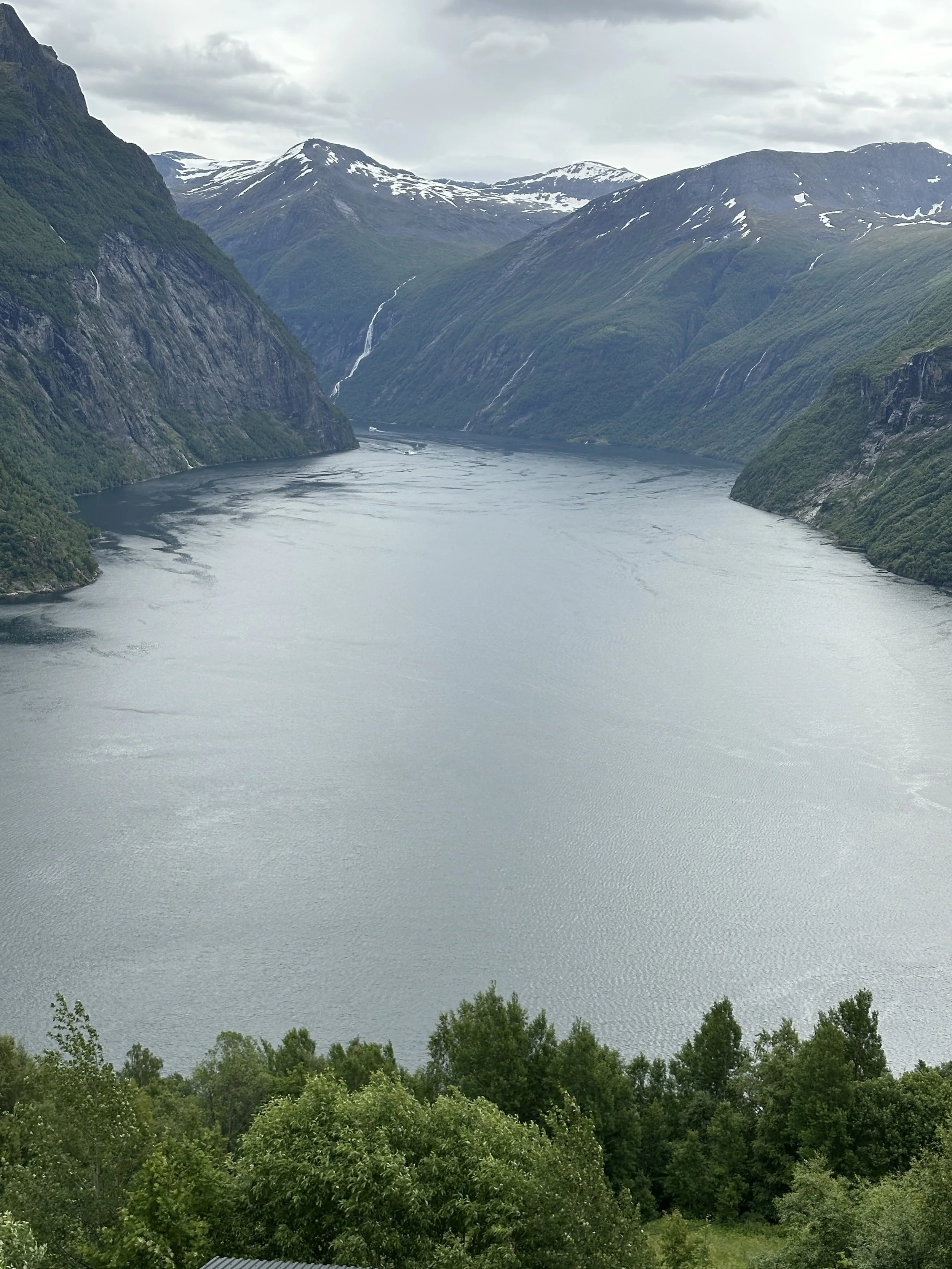
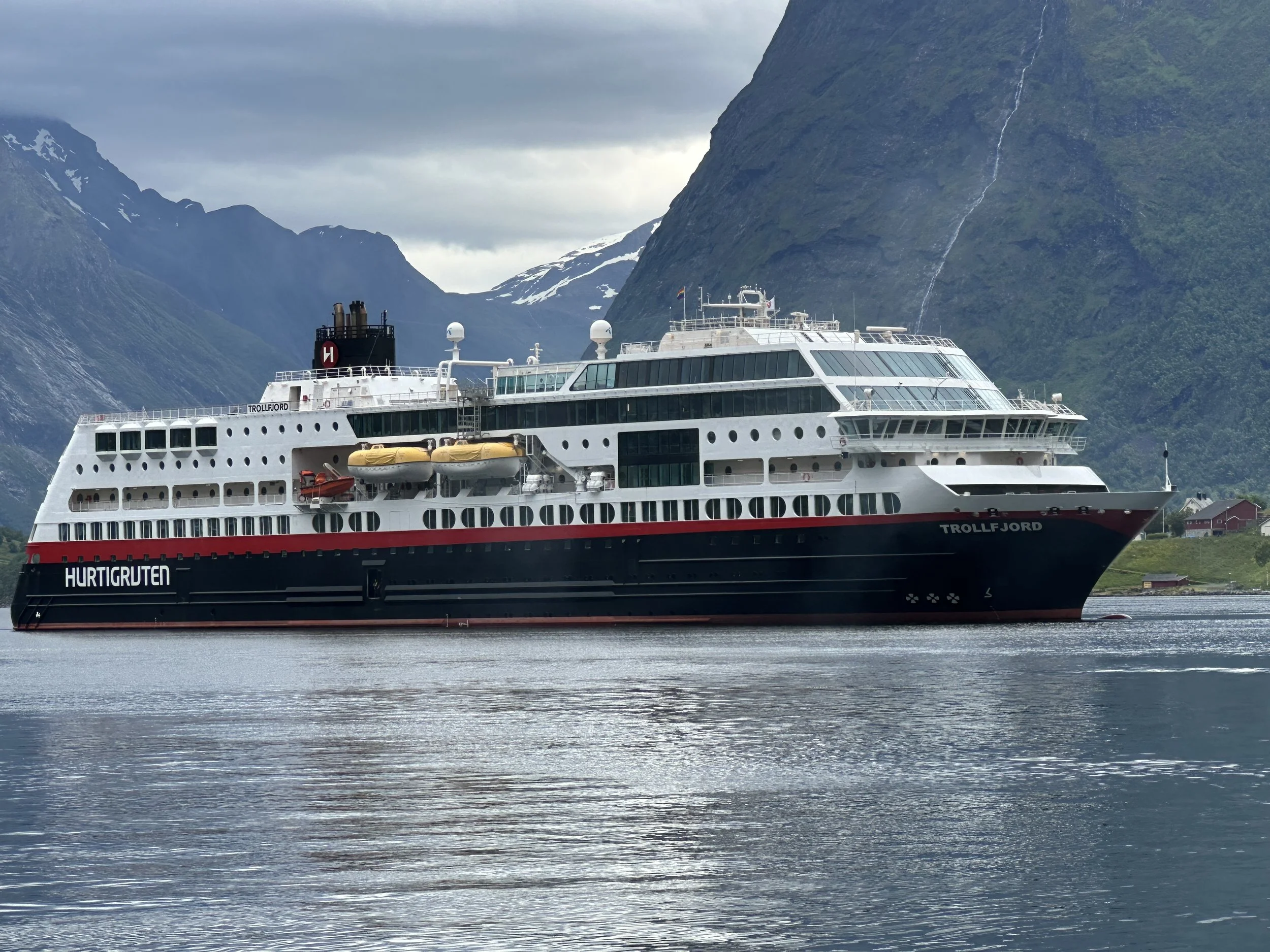
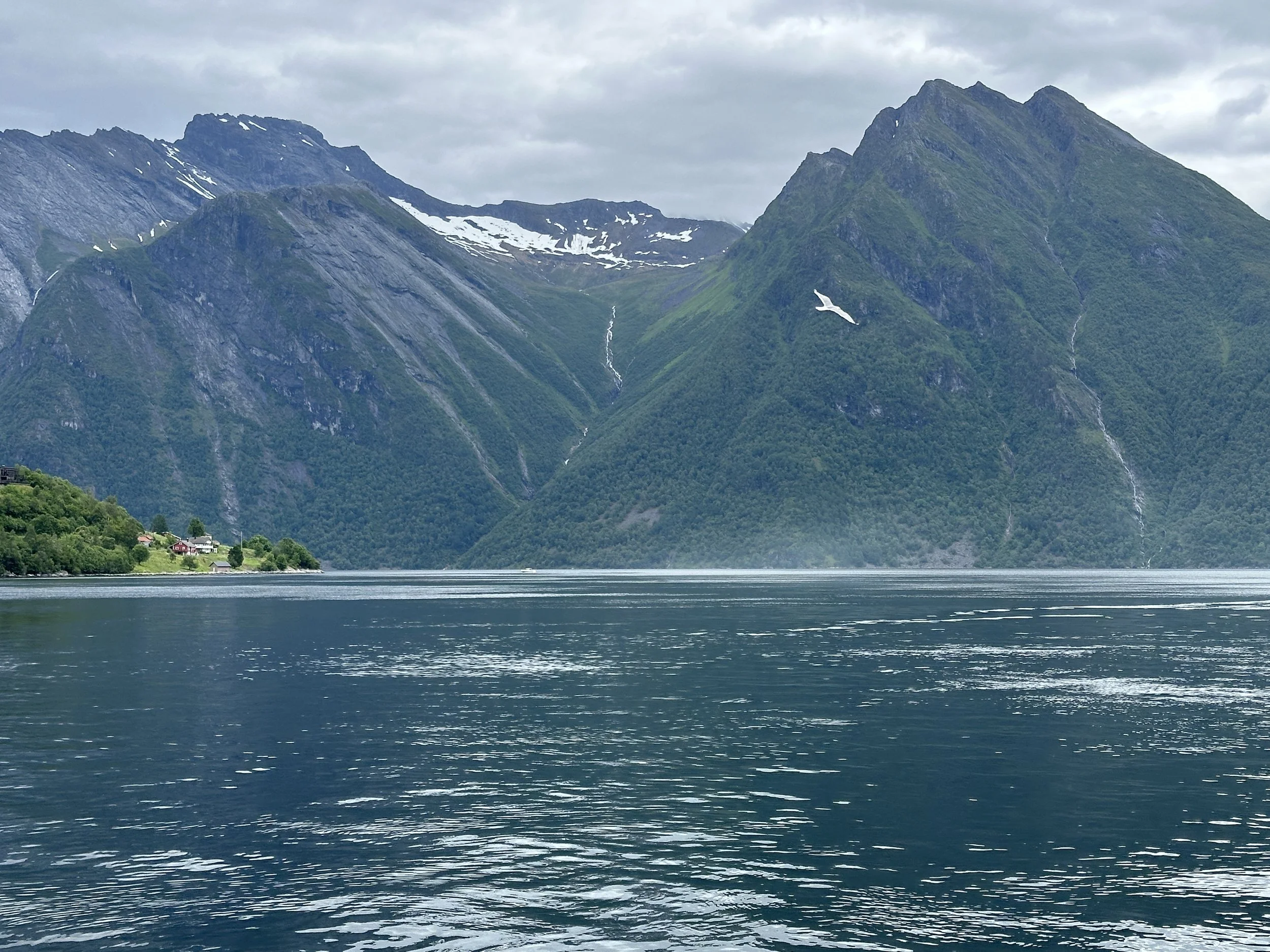

It’s our last night on the Trollfjord. Dinner is a four-course meal (we are offered both the salmon tartare and the pea soup starters. Both delicious.) Before that in the bar we have an aquavit tasting with Caren and Annica, our new Swedish friends, following the advice of our server Morten from the Àrran restaurant last night. He told us about various aquavits suggesting we compare two identical examples one made in stainless steal barrels (comes out clear) and one put into oak casks (picks up some colour from the wood). Amazing difference. The bar tender got into this game and gave us a third comparison, which was an aquavit that had been additionally moved from oak casks to cherry-wood casks for several months, incredible. Our Swedish drinking mates described the first two as Swedish versus Norwegian aquavits. The third one was definitely the best. The ‘farewell to crew’ ceremony on the last night was fun, we were reminded that we had travelled a bit over 6100km (of the total Norwegian coastline, including around all its islands, of over 100,000km — said to be the country with the second longest coastline, but not altogether clear which has the longest).
Bergen again, and back to Oslo
Said to be the wettest city in Europe, Bergen averages more than 200 rainy days per year. We struck another one of these when we arrived back at our Hurtigruten starting point at about 7 am. After depositing our luggage we did bit of wandering around to pass the several hours to hotel check-in time. The Grieghallen was closed, but we peered through the windows in honour of Kirsten, found coffee, explored a couple of shopping malls, SWCNB had her nails done, and eventually we retired to wait in the hotel lobby. A welcome rest, by which time the rain had stopped, then another beautiful seafood dinner at the Fjellskål restaurant. What a pretty town Bergen is, so colourful, with buildings dotting the hill rising from the harbour, narrow streets and laneways near the harbour. Plenty of tourists around, a very lively place with heaps of restaurants, and pubs offering football and live music. The train back to Oslo departs exactly as scheduled. We’re set for a day of fine sunny weather, seeing the countryside at its summer best. Quite a bit of the snow visible on the outward journey has now melted. We were expecting to get easily into the hotel, but found that in fact we had been booked for this night into the other Clarion hotel. No great drama. And we booked dinner at an Italian restaurant nearby, which had a much younger crowd than we had seen in recent days. The food was only just acceptable, but the place was worth the visit. Plenty of time next morning to catch the train to Stockholm.
Stockholm
We cross Sweden, passing lakes, farmland, bush (including spotting two young deer near the train tracks), and arrive in Stockholm after about 6 hours. This is a totally different place from Oslo. All the old buildings are still here, giving a sense of history and solidity. Water everywhere. We have made a reservation at the Glenn Miller Café to hear some jazz. An intimate space, fitting about 30 guests, with an ok dinner and an Italian quartet comprising vocalist Susanna Massetti, Simone Cosso on guitar, Ilaria Capalbo on double bass, and drummer Giorgio Griffa. They played standards pretty well, we stayed for all three sets, then walked back to the hotel at about 11 pm with the most beautiful coloured sunset still happening. Friday was a glorious sunny day, so we walked through the old town (Gamla Stan) to the harbour and took a few island-hopping ferry rides. Lunch at an old torpedo manufacturing factory, then more ferries. Great way to see parts of the area. That night’s music was at another ‘jazz’ venue, three lads playing rock and roll for the after-work crowd. Small crowd, little evidence of work. Tough gig. Dinner at a nearby Italian restaurant (there seem to be heaps of these).
I needed a sit down after tripping over and falling quite heavily in the street. One too many beers? The road design that seems to include a barely visible two-centimetre step between the road and footpath? I survived. Saturday needed to be laundry day, and we found one nearby that took us unto a part of town that was a bit like Fitzroy. We had a couple of hours to kill, so found an excellent coffee shop, then walked around the area to find a cash machine (not easy) then back after too much walking (very difficult) in time to pick up the laundry. A bit over AUD30 to wash and dry one full load. Not too bad. Back to that same area for dinner, i had found what looked like an excellent Sushi Bar. It offered a simple menu, but among the best such i have had, and probably the best beef wagyu ever, even though the chef apologised that his top-grade wagyu had just run out so he could only offer the next grade. Really it was more like sashimi than beef. Minako Sushi, in Odenplan.
Sunday, we went to the Cathedral, to enjoy the singing of the Durham University College Chapel Choir. Again, it was a eucharist service, very familiar in form and content, and the main man was a woman. Very enjoyable. We found a very nice restaurant for lunch, where i had a hamburger (very good) and SWCBN had traditional Swedish meatballs. Loved it. Our waiter was from Ukraine, sounds like he and his mum came here when he was 17 and not yet eligible for military service. What disruption that conflict has caused. He talked about a co-worker at his other workplace (the Hilton Hotel) who was a very funny man from Melbourne. I found yet another good dining option for dinner, a Bangladeshi restaurant called Shere Khan in the same cool area as the previous day’s finds. This was a much simpler and lower priced place, but the food was excellent. We really have done well on the restaurant front.
Travel day, but a few hours before the boat is due to leave for Helsinki, so we went to find the market. Östermalms Food Hall is amazing. A slightly more refined version of the deli and meat sections of the Victoria Market, with the addition of several sit-down eating places. A wonderful place. There was a cabinet full of ageing beef reminiscent of the offering at the Brasserie Árran on the Trollfjord.
The ‘ferry’ to Helsinki is enormous. The Silja Symphony. Such a different clientele from the Hurtigruten tour, with kids, dogs, mums and dads, young and old. Booze is available tax free, so this is a place Finns come for bingeing apparently. We’ll see how this plays out tonight. There are several restaurants, as well as the standard buffet, a disco, and a casino and several retail outlets (also tax free sales). Our cabin faces inwards to a huge atrium that extends from the entry floor level up to the top of the boat. Our cabin is similar in size and layout to the Trollfjord cabin, but without the external porthole and we’re in two single beds. What a weird experience is this ferry-ride. It’s like being in the Dubai airport, with extra spaces dotted around for various activities. Heaps of kids, quite a few dogs, plenty of eating and drinking, shopping for clothes, jewellery, bags, a guitarist and a keyboard player entertaining the crowd, periodic announcements over the PA (mostly in Finnish). The music was audible throughout the ship, mercifully finishing by about 10 pm. But the kids were hyped and seemed to be running up and down the corridor outside our cabin.
Finland — Helsinki and Turku
After travelling through the night, we arrive in Helsinki at about 10:30 am. It’s a madhouse rush to get off the ferry — extreme swarming behaviour. The Hotel St George has a room ready, and it is the most comfortable and biggest of the trip so far. A lovely old building in the centre of what looks like a lovely old city. Quite a different vibe as we walk around, with heaps of interesting looking restaurants nearby, and an open-air market down the end of the street on the waterfront from where we get a great view of the Silja Symphony. The berries look amazing, Finnish street food seems to involve salmon and other fish (no change there from recent options) or bratwurst (not as good as those from Vic Market). Our Danish friends arrive and we eat together at the hotel’s restaurant, Boon Nam, an excellent modern Thai restaurant. A canal tour in and out of the islands in the harbour gave us a bit of a sense of the geography. We spend the week walking the streets of central Helsinki marvelling at the architecture (quite old — mostly 17-18th century) and some particularly interesting buildings including the Orthodox Church, the Helsinki Cathedral (an extremely plain Lutheran church), the market where you could get canned bear meat, the Finlandia congress centre, the Sibelius Academy, and a spectacular church built into a rock hill, the Temppeliaukio Church. And of course eating. The best meal was at a ‘Finnish farm to table’ restaurant called Skör. Amazing experience, with all ingredients in a six-course degustation sourced from somewhere in Finland. The wines were surprisingly good, made from berries of different kinds.
We did a day trip by train and bus to Turku, the second biggest city. It was formerly the capital. Another cathedral in Turku, where we were lucky enough to hear the organist practicing. Chatting with the taxi driver who took us back to the Turku train station, it turned out he is the cousin of the Afghani guy who stood against Julian Hill in the seat of Bruce at last year’s federal election.
On our last full day in Helsinki we start with a leisurely breakfast at the hotel, then head off for more exploring — another church, this one is on the plain and stark side of the Lutheran ledger, but out of an admirable ecumenical spirit the Lutherans have also given overuse of their facilities at different times of the week to an African Catholic congregation. We happened in just before their service was starting, featuring several musicians and singers, and quite a crowd of people from Ghana, Nigeria, and other surrounding West-African countries. Dinner in a Georgian restaurant was underwhelming. Rated highly on Trip Advisor, but the food (a lot of meat) was all wildly overcooked. Next morning over breakfast we bid our Danish friends Mogens and Kirsten a sad farewell, then head off early by train to the Helsinki airport for our flight to London. An hour delay on departure time gives us plenty of time to make final arrangements for accessing the London apartment. Should be straight-forward. The cost of two train tickets from Heathrow to Paddington station is only a little less than the cost of a taxi direct to the apartment, so we will do that and avoid the hassle of walking the last bit with luggage in tow.
London I
We must have crossed the European equivalent of the Goyder line — the English farm blocks below as we come in over the Thames are all brown and yellow, so dry! The apartment is less than salubrious, perhaps the worst we have ever landed. Booking.com will hear from me. It has more or less what was described and a fair bit of what is required. There is a non-functional washing machine, but I have located a laundrette nearby; and the aircon is non-functional, but hey there are three (yes three) pedestal fans and the windows can be opened (who would have thought that would be worth mentioning). This part of Marylebone seems like a residential neighbourhood but there seem to be plenty of visitors as well. The Church Street Market is filled with stalls run by a mix of people mostly with dark skin, and signage in Arabic script. Good access to public transport options, and we seem to be just a bit of a walk from central London.
First planned activity was a theatre event “Hadestown” at the Lyric theatre. We had a quick bite at the Lyric Pub, where I had a classic warm English beer, and wouldn’t you know there was a group of Australians at the next table who were here as stars of an Aboriginal art show being put on by Rio Tinto. The Hadestown musical was fantastic, excellent music, great singing, an old love story (it’s based on the lovers Orpheus and Eurydice, and the older couple, Hades and Persephone). Next day we explore a little — The Orangery restaurant in Kensington gardens, some shopping in Oxford Street, then a bus out to the restaurant Trullo that I had booked ages ago. It’s been getting very big raps as one of London’s best restaurants. It has never disappointed, and despite me not feeling well enough to take proper advantage, it was an excellent lunch.
Over the next hours it becomes clear that I have come down with something, hopefully a long sleep might do the trick. Seems to have been a variety of 24-hour virus. By the following evening I’m up and about and we meet up with the Australian High Commissioner for drinks, and then dinner at an Italian restaurant nearby in South Kensington. Vey nice. Even in such a posh neighbourhood the smell of the sewer below is evident while we wait for an Uber to take us home. We start to notice this everywhere.
Friday we take a bus through the city past many landmarks, heading to the Pig’s Ear in Chelsea. Another gastro pub that has an interesting menu and a pleasant ambiance. A short stroll along the Thames riverbank, then back home for an afternoon rest before heading back to Soho for some jazz at Pizza Express. We enjoyed the first set from the Emily Masser quartet featuring Alex Clarke on alto sax. Brilliant sax player, wearing an emerald green suit that really set off her red hair. The place was amazing, very cool set-up and mood lighting, similar to the way Ronnie Scott’s is set up. Eating is part of the deal, and evidently talking was too for some of our neighbours — French on one side and Australian in front. Saturday’s outing was to meet up with old friends at a fabulous pub in Holborn, the Ship Tavern. Really old joint, nice dining room upstairs, interesting food — they had a pie for two on the menu, which SWCBN and I shared. It was enormous.
To finish the weekend’s gastronomic events, I had booked in to a local Marylebone Chinese restaurant that does a Sunday lunchtime dim sum. The place was great, the dim sum was excellent. I look forward to meeting my next set of bathroom scales, my prediction is for a minimum 10% increase, put down to the large dose of cortisone I’ve been on, the food availability issue during this entire trip, and my almost total lack of will power. Today’s mission: laundry, Harry Potter @Kings Cross-St Pancras, reminiscing on a walk up Upper Street Islington (we spent a lot of time at the King’s Head when we were first here in 1978, they served a Ploughman’s Lunch, and were resisting the recent transition to decimal currency, and did lunch time theatre), then a second attempt at Trullo for dinner. In a mad rush of self-denial we plan to skip lunch. Trullo was brilliant again, and i was able to enjoy it properly this time. We were glad to see the end of our apartment and i wrote a suitably damning review for Booking.com, which was published unedited!
Bristol
The train trip from Paddington Station to Bristol Temple Mead was fast with lovely views of the Somerset countryside. Bristol is a lively place, lots of young people being a two-university town, and it was graduation week. Lots of families taking their genius children out for celebration meals, and evidence of quite a bit of partying around town. We found two different stand-up comedy clubs, the first at the Robin Hood pub, and the second called ‘The Gaffe’. Both worth the visit, though most of the humour was very locally targeted, and delivered in accents that were difficult to distinguish from Finnish. The jokes were aimed mostly at the young 20s demographic, though the comedians all made some effort to engage with the entire audience to work out where they were from, riffing ad lib on those interactions. Walking home from the Gaffe we stopped at a Vietnamese restaurant for a late bite.
Plymouth
Another train trip down to Plymouth, past various seaside towns with quite a few holidaymakers heading to the ‘beach’. I guess you make the best of what you have. Plymouth is a military town, big naval bases, this dating long back. Also the 1620 setting off point for the Mayflower (we found a ‘secret garden’ where the Pilgrims used to hang out that contained a plaque listing the names of the Mayflower passengers). And the departure point for Darwin in the Beagle. The main purpose of this leg of the trip is to visit the nephew (and family) of SWCBN. They were all in very good form, and it was particularly good to see how Jacob (almost 7) has progressed since they left Melbourne a couple of years ago. Strong English accent aside, he is obviously doing brilliantly at school. He’s writing very creatively, and has some pretty sharp mathematical insights. His little brother Caleb is a tear-away, and very delightful. We were taken to visit a few nearby villages — Looe, Kingsand and Cawsand, a butcher that had what was said to be the best Cornish pastie round — and had dinner at a delightful little country pub The Crooked Inn beyond the outskirts of Plymouth. Very crap wine list, but i had another go at a cask ale. Could possibly get into that in colder weather.
London II
We have had enough now and are very happy to be on the last leg back to London for one more night (in a flash city hotel), a visit to Ronnie Scott’s jazz club on Sunday night, then the flight home. The train from Plymouth to Paddington station traversed the southwest reasonably smoothly, and Paddington was crowded as usual, then a cab into the Bloomsbury Hotel on Great Russell Street right in the heart of town. A lovely oldy-worldy hotel, with a bit of a wait for our room to be ready, so off we went for another dim sum lunch, which was brilliant. Ronnie Scott’s that night was fantastic, a soul band called Natalie Williams Soul Family, with three singers, keys, guitar, 5-string base, tenor sax, trumpet, and drums. A guest appearance by Gavin Holligan (singer and keys, formerly a famous football player) in the second half was a treat. The genre is easy to listen to; I could get into it. The singers were all amazing (and different, but the harmonies were wonderful). Difficult to imagine a better way to finish the London leg of our odyssey. Heathrow—Singapore—Melbourne. We’re home.







